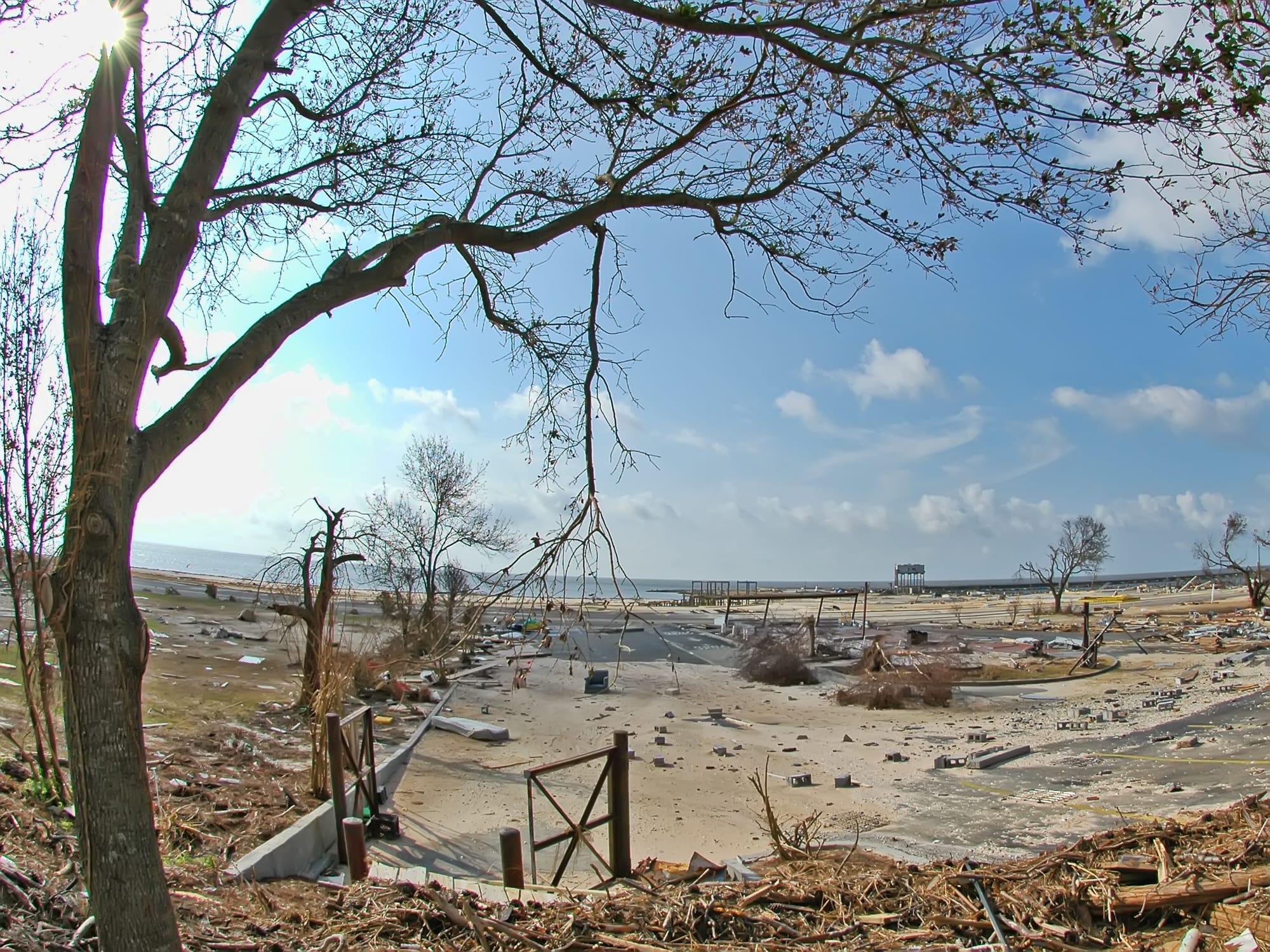Hurricane Katrina (part 2)
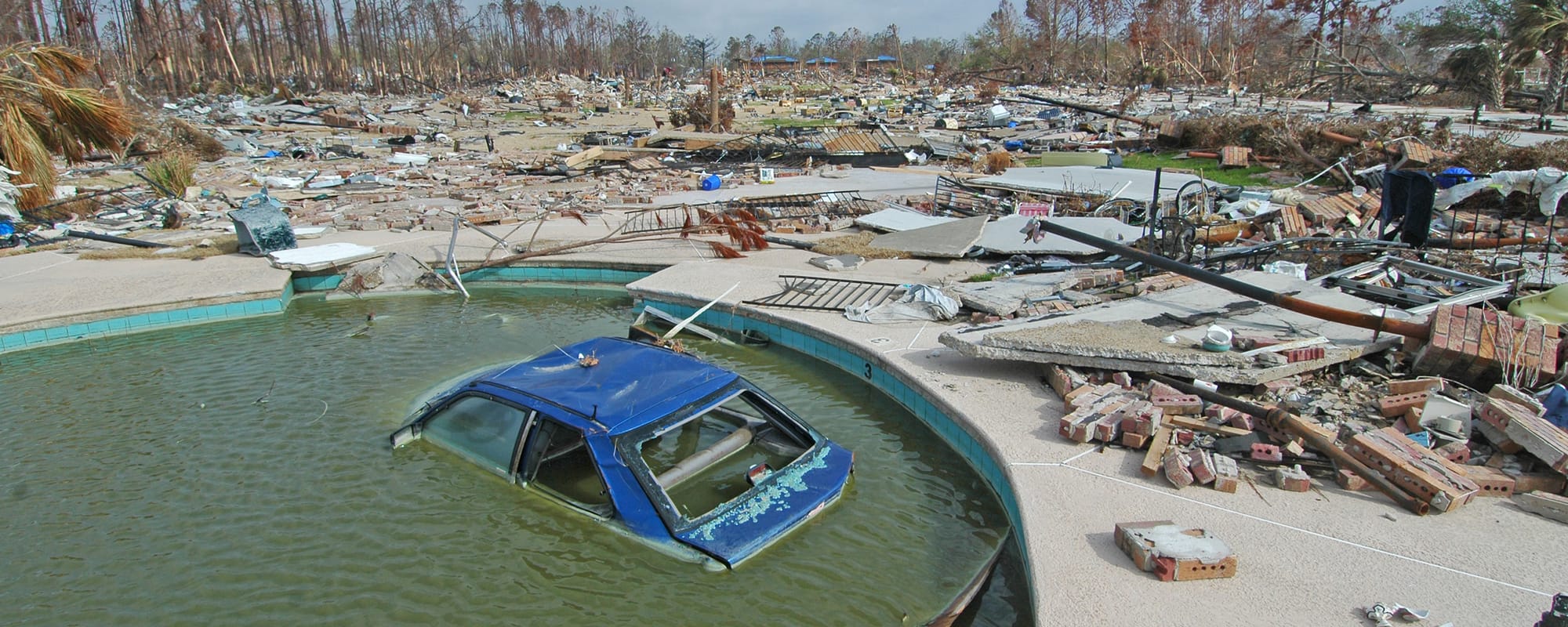
This blog post contains photos I took when Megan and I returned to the Mississippi Gulf Coast in late September 2005. Our trip to the area two weeks earlier is covered in Hurricane Katrina (part 1).
On our first trip to Gulfport right after the hurricane, we were mostly focused on getting access to Marsha, Granny, and Gloria's homes to recover whatever we could. On this second trip, we took some time to just explore the area around Pass Christian and see firsthand the impact of Katrina. We also went with Melba to check on her mother's grave in the cemetery on Church Street in Pass Christian, and I took Gloria back to her apartment in Waveland for a final visit before it would be demolished.
The Hurricane Katrina (part 1) blog post was organized in chronological order, but this post is organized by topic. All of these photos were taken between September 23-26, 2005.


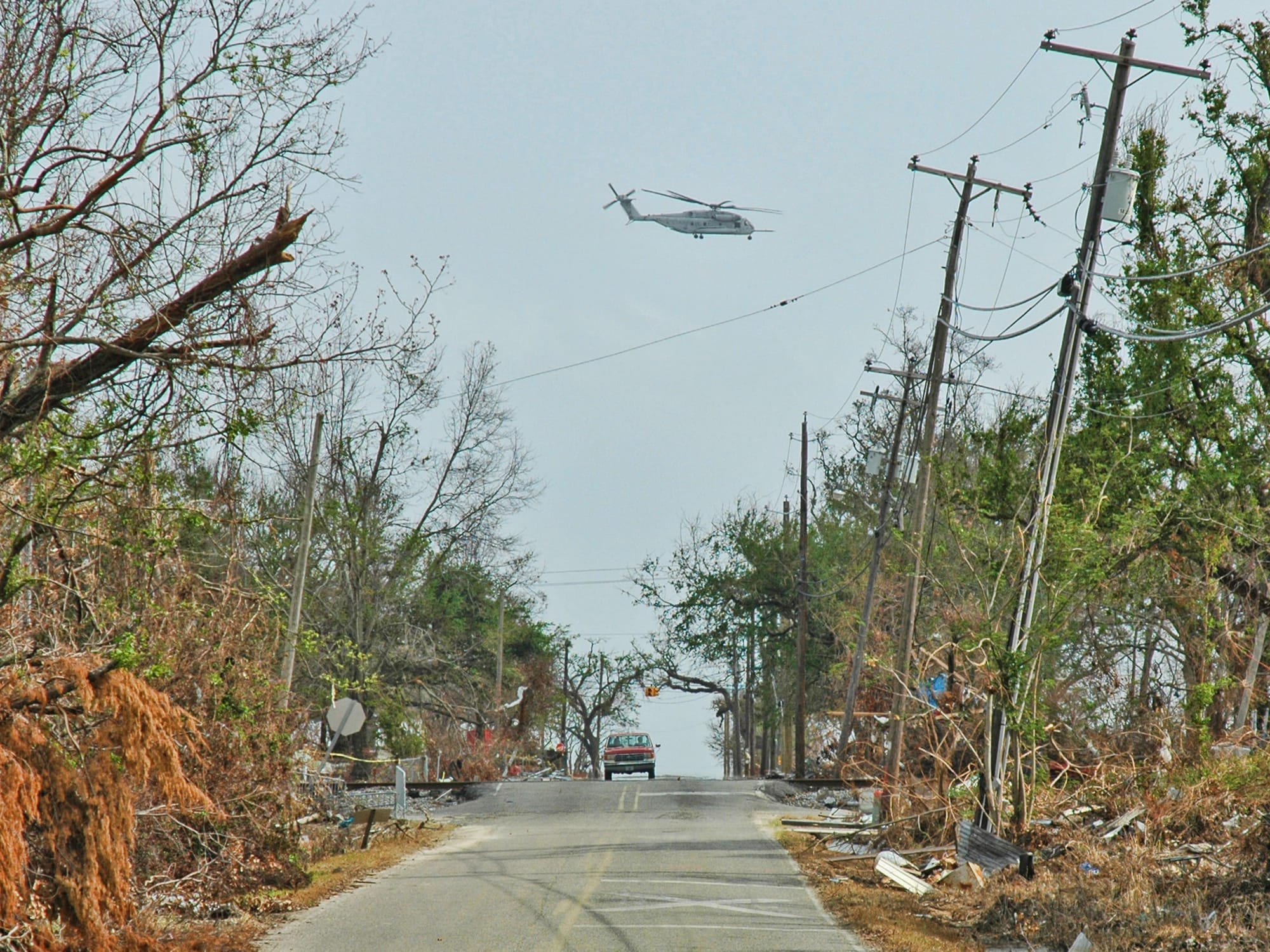
The missing/destroyed billboards along I-10 made it clear we were headed back into Katrina territory. One thing that had not changed in the two weeks we were gone: military choppers overhead throughout the day.
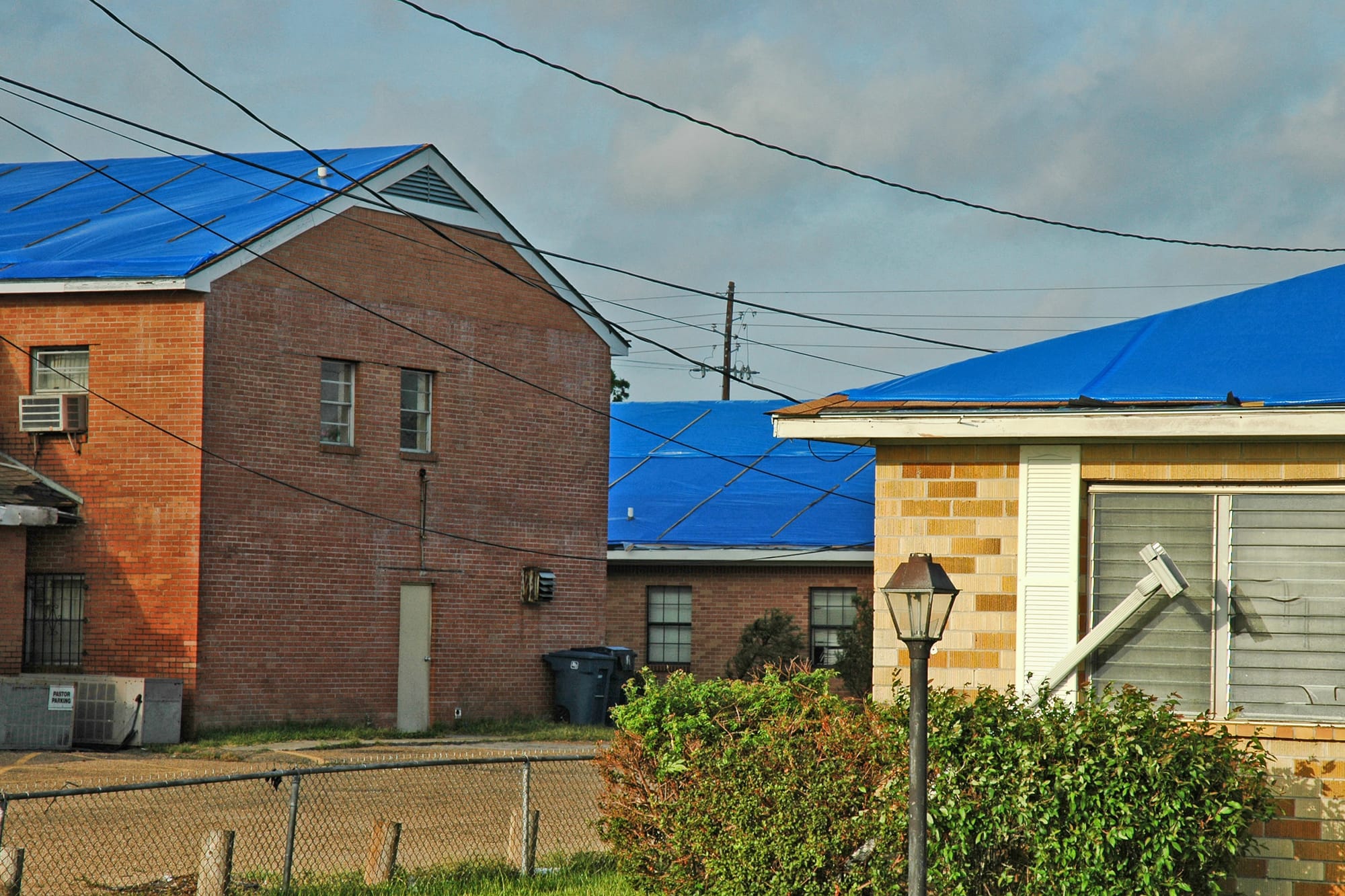
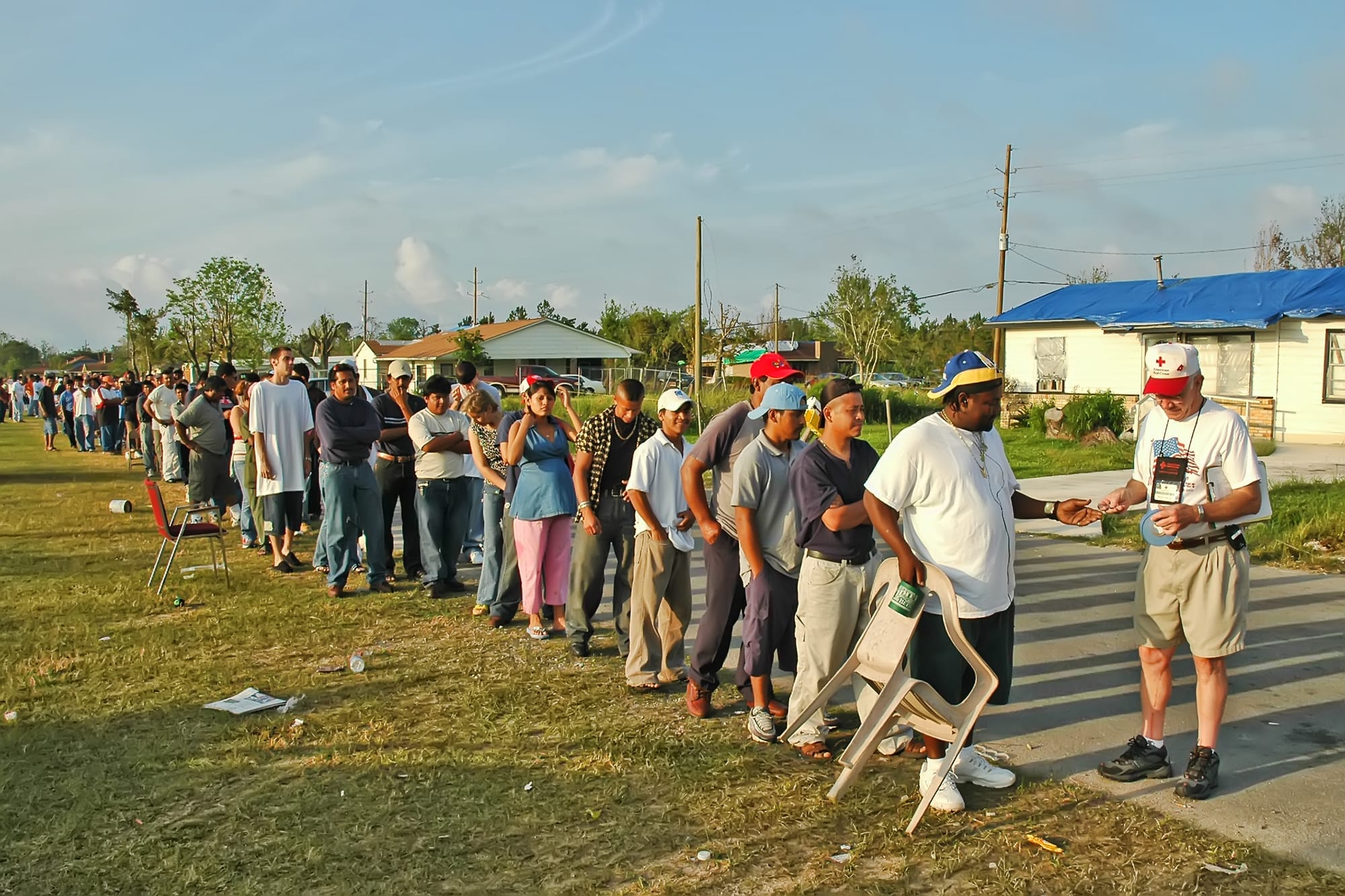
One thing that had changed since we were last in Gulfport: there were now blue FEMA roof tarps all over town. These tarps are installed for free by FEMA contractors - you just have to call 1-888-ROOF-BLU after a disaster. They provide temporary shelter to protect structures from wind and rain while the owners work with their insurance companies or otherwise arrange for roof repair.
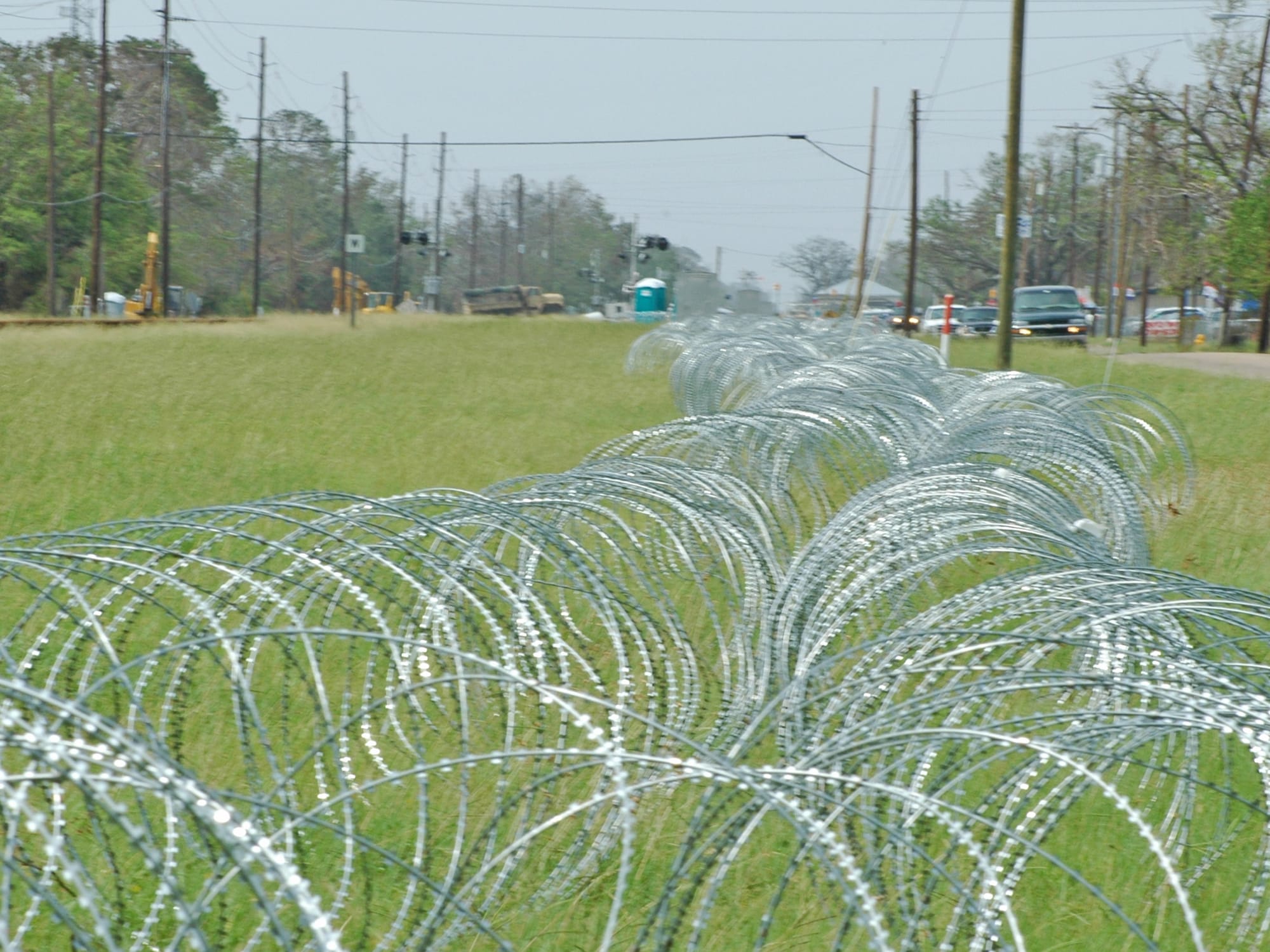
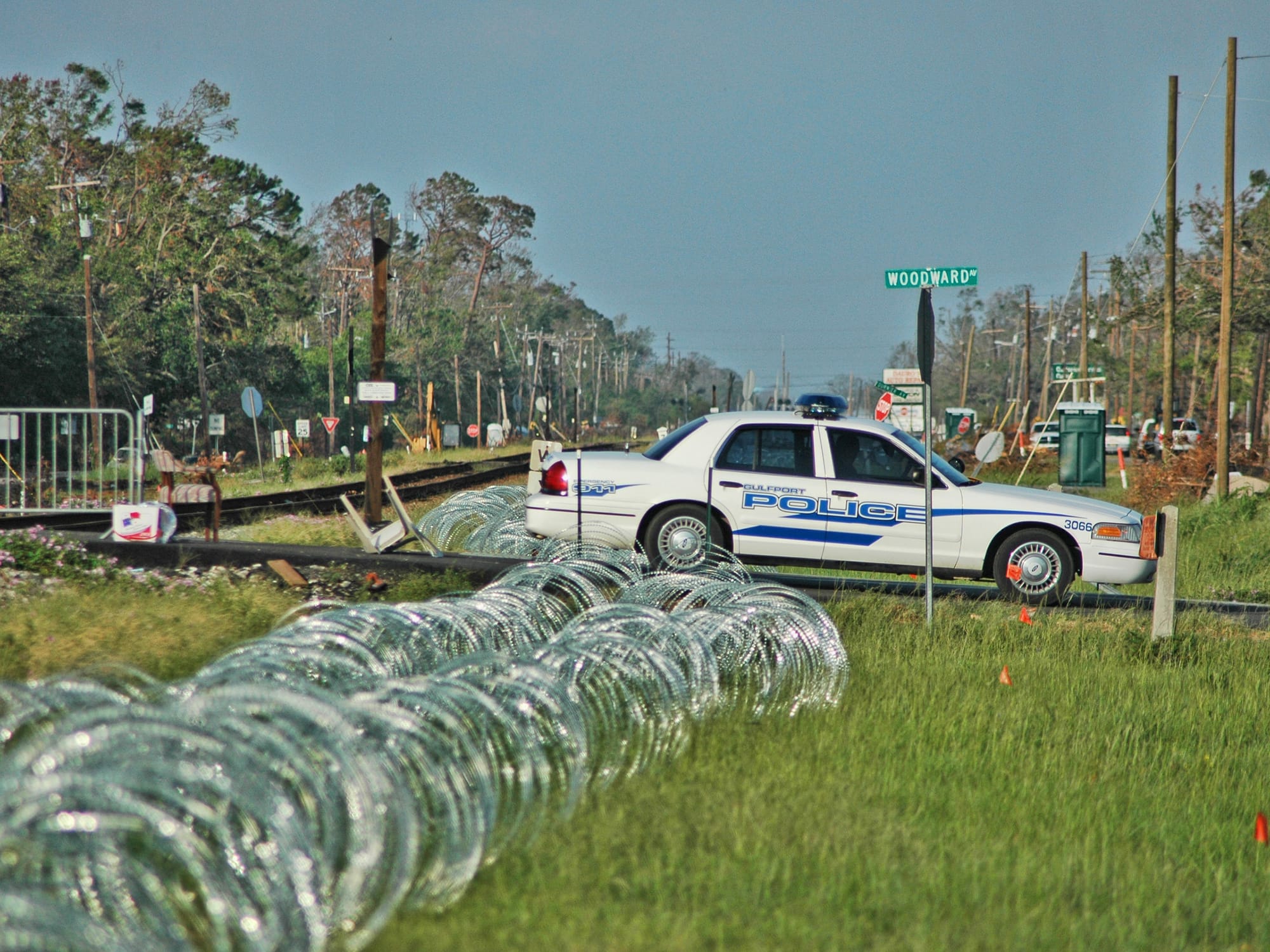
Another new sight since two weeks earlier: miles of razor wire running along Railroad Street in Gulfport and Long Beach, to prevent people from slipping across the railroad tracks between checkpoints.
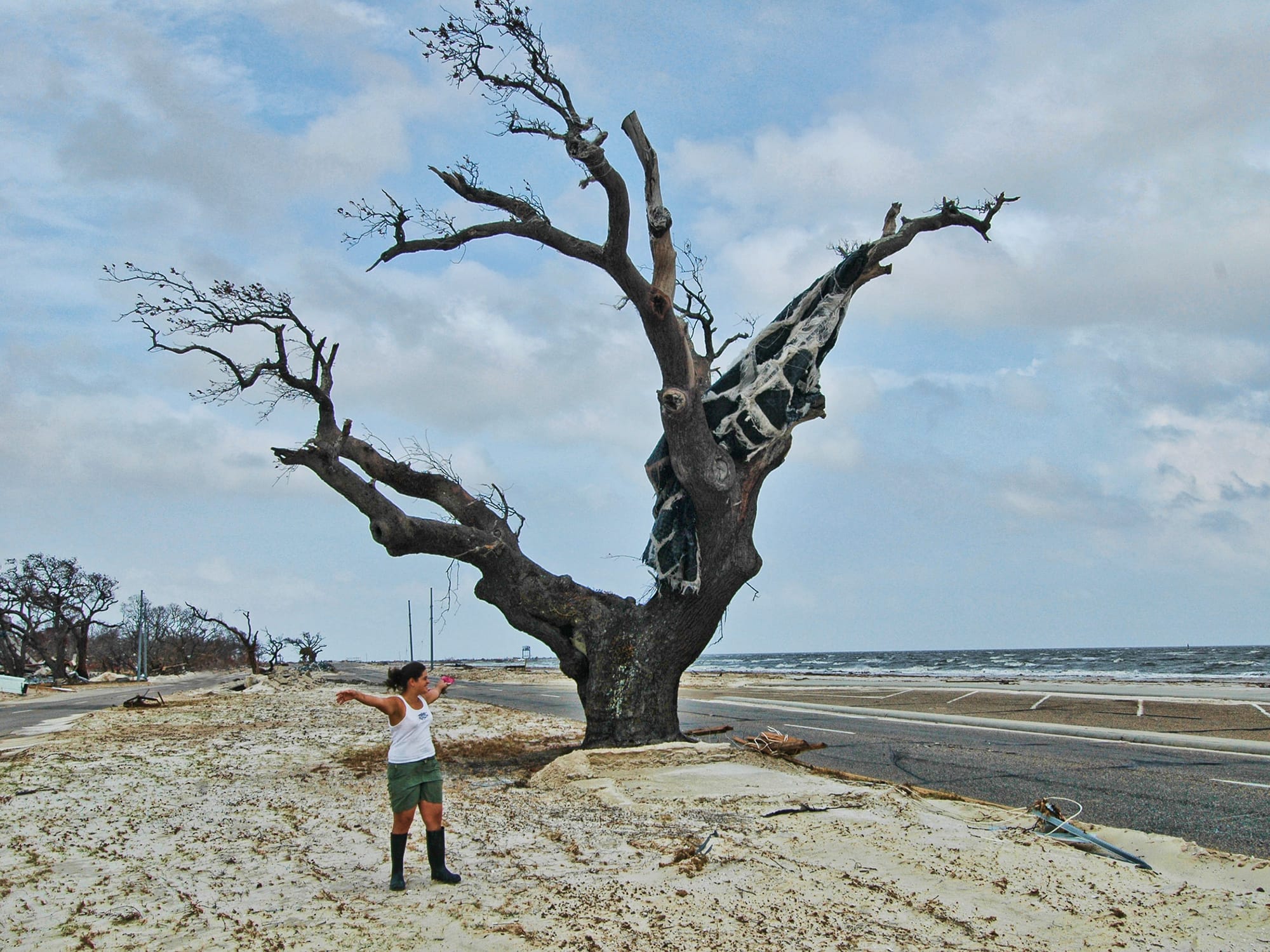
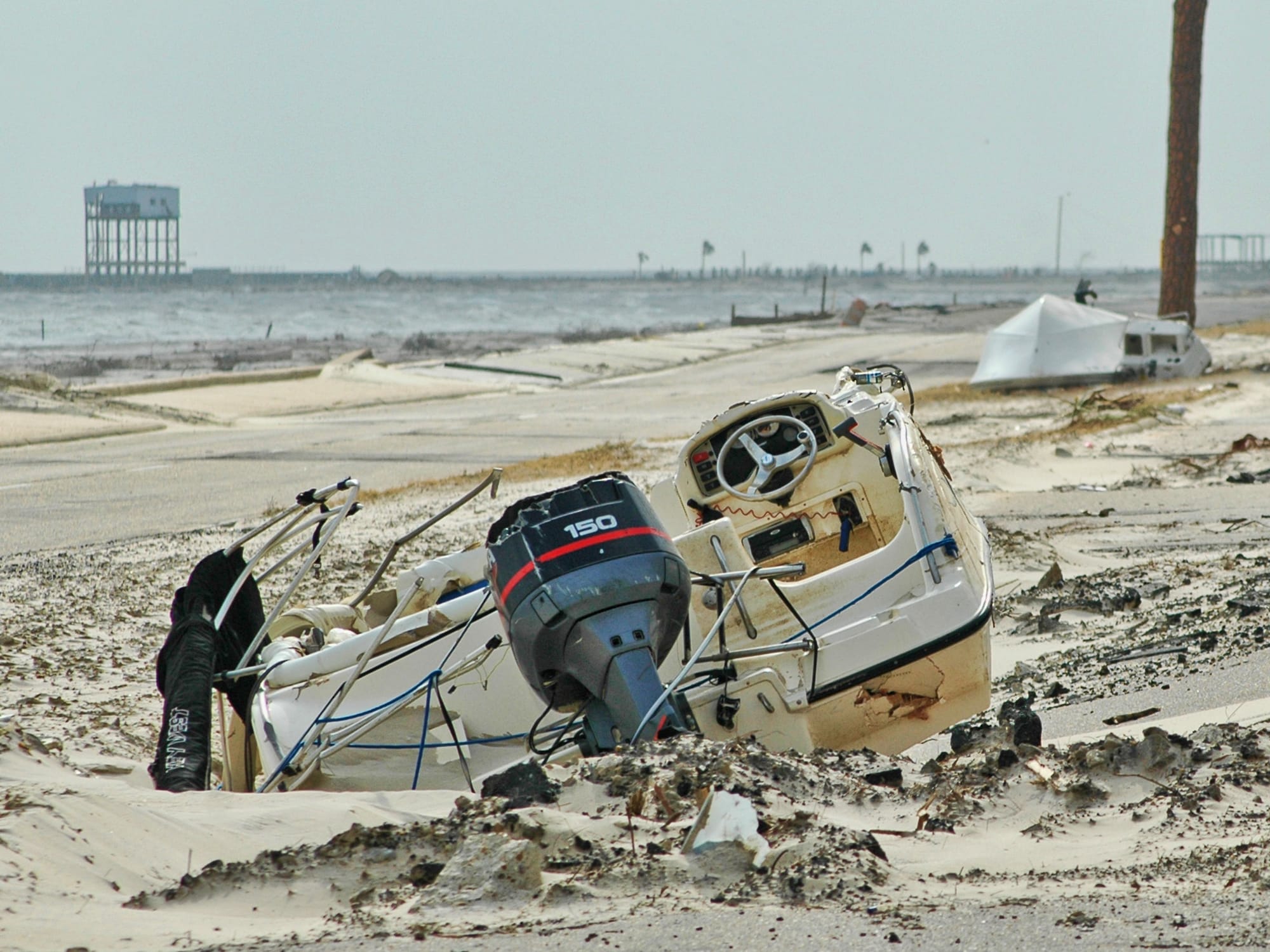
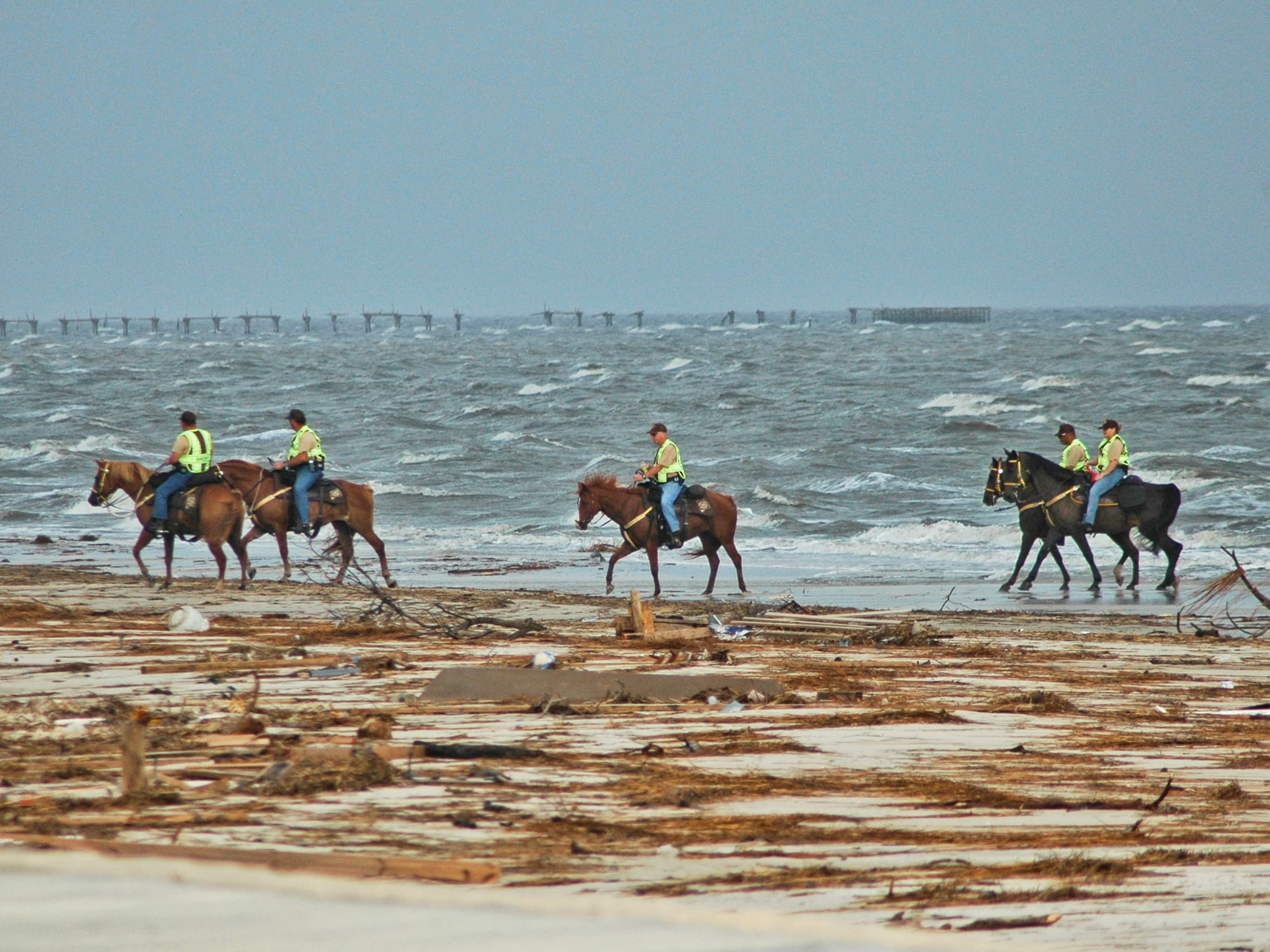
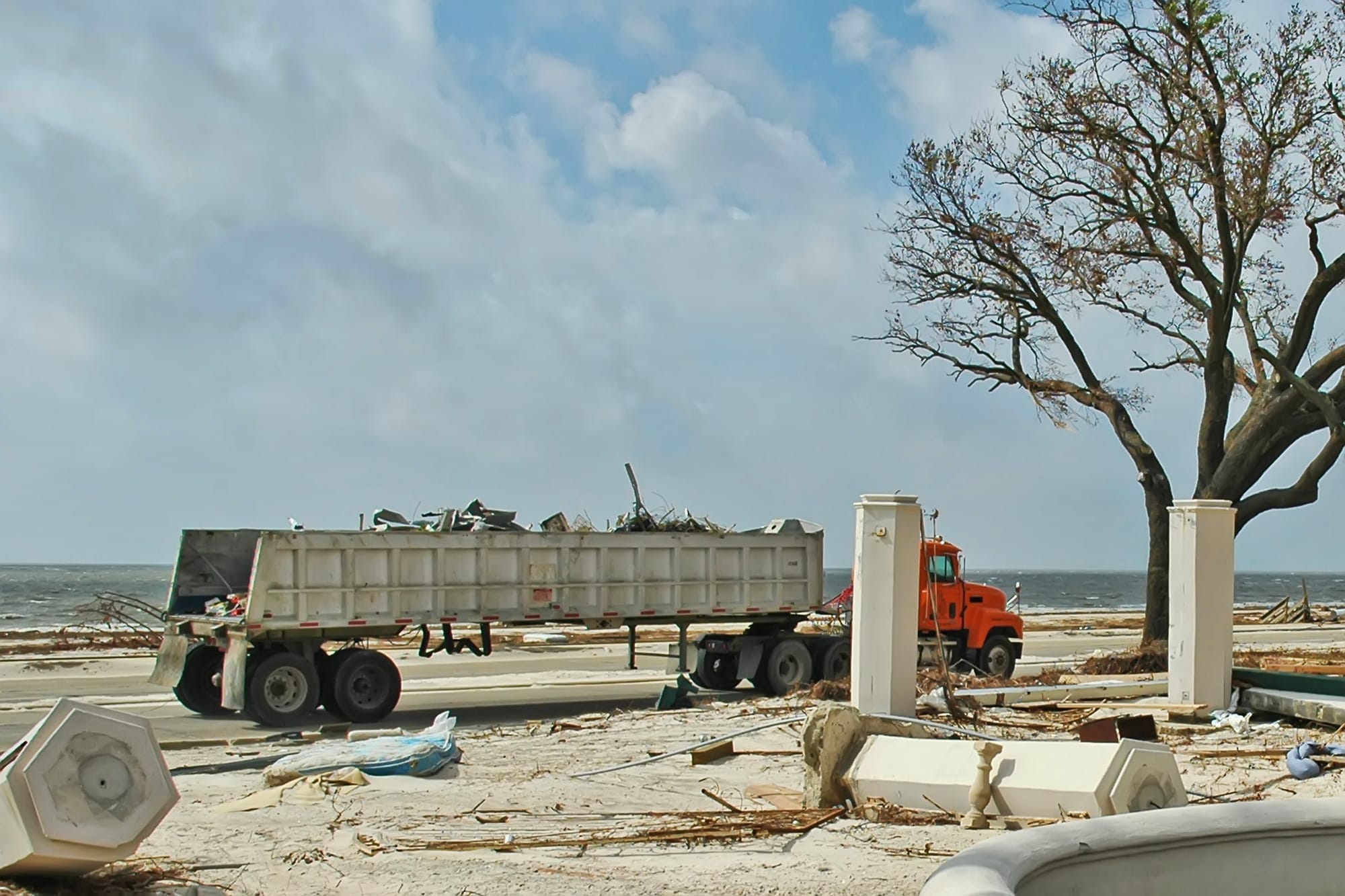
Beach Boulevard in Pass Christian had been closed to civilians when we were there right after the hurricane, but now it was open all the way from Walmart on the east end of town to a checkpoint just beyond Henderson Avenue on the west end of town.
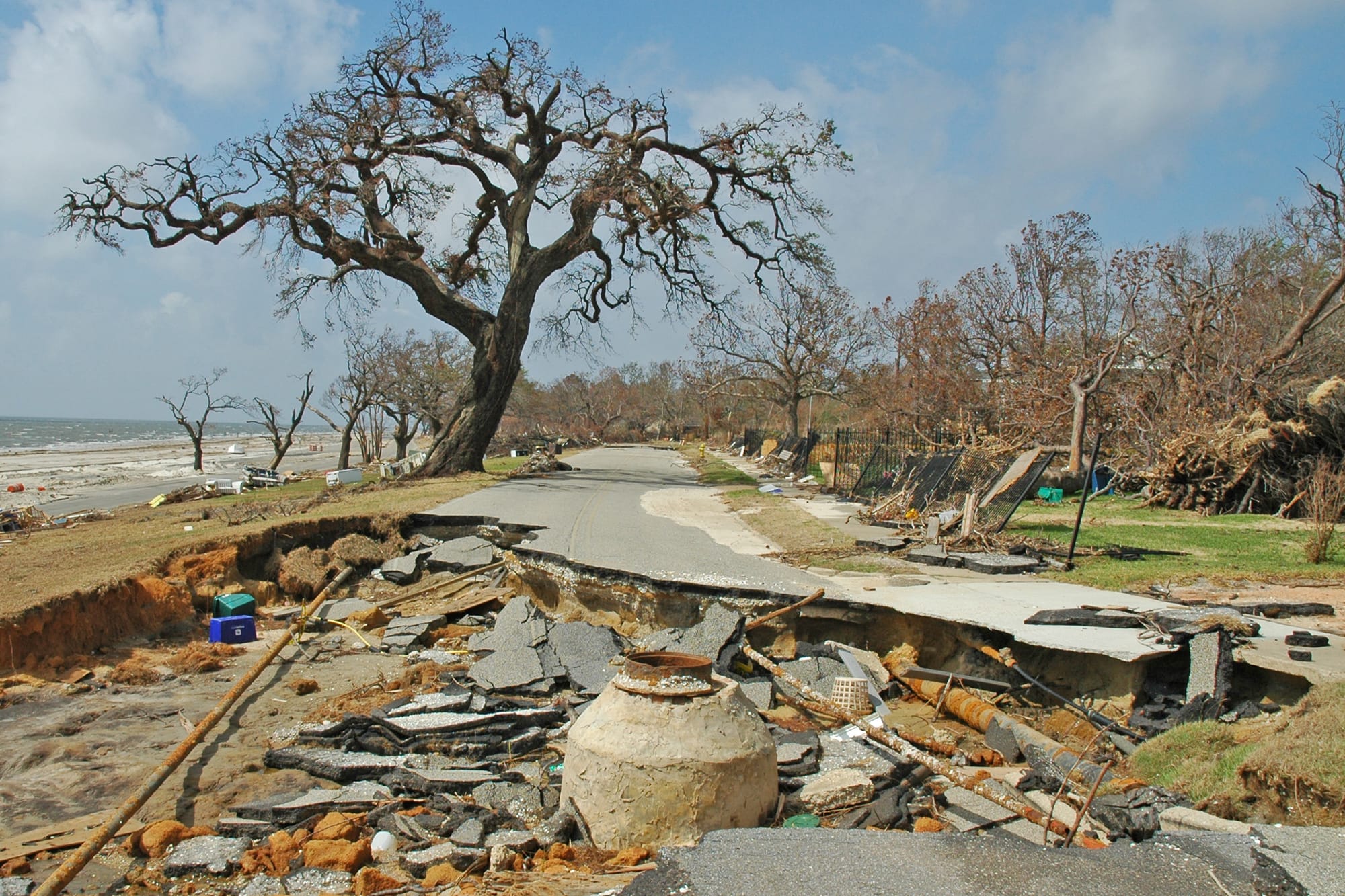
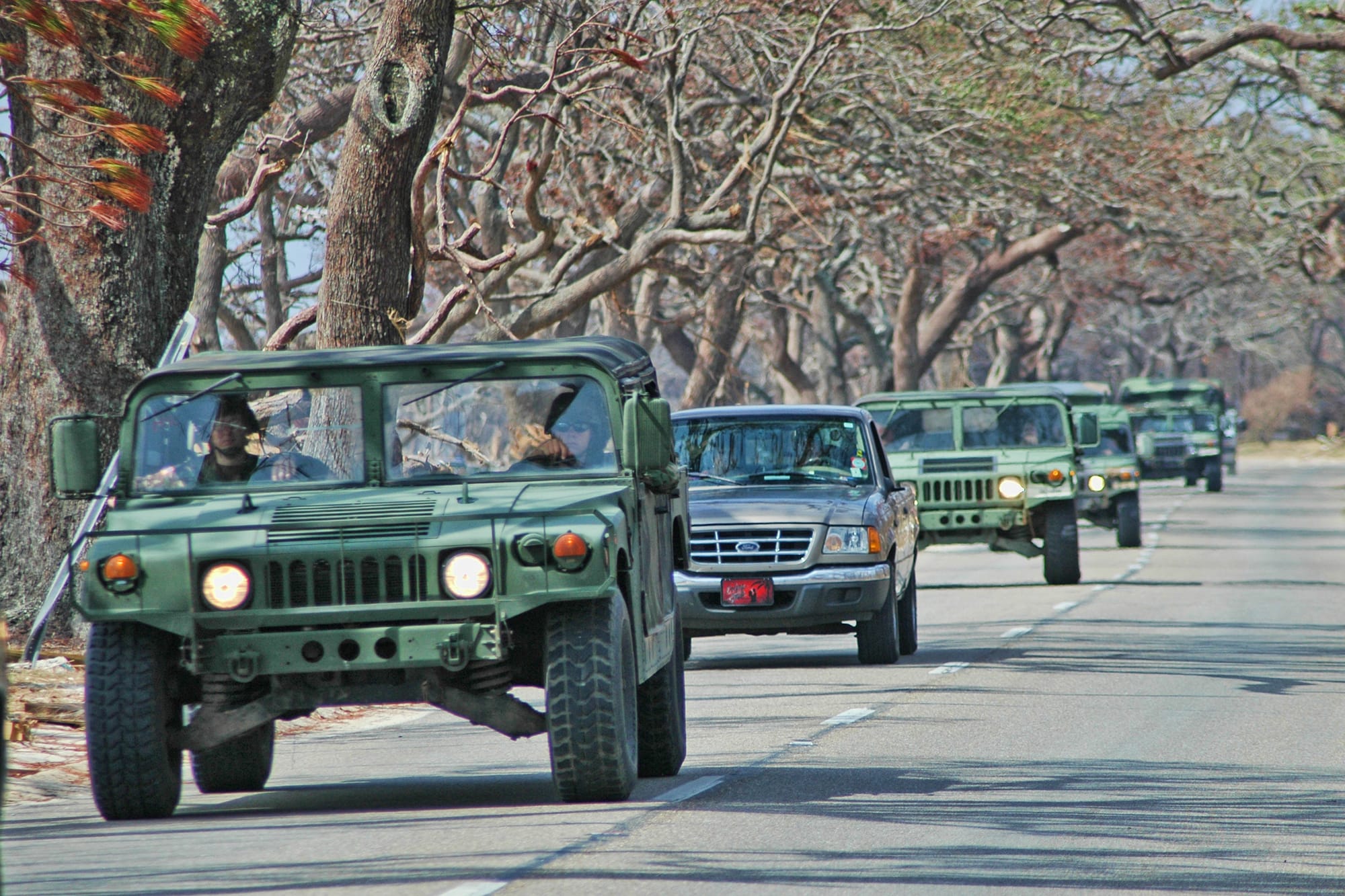
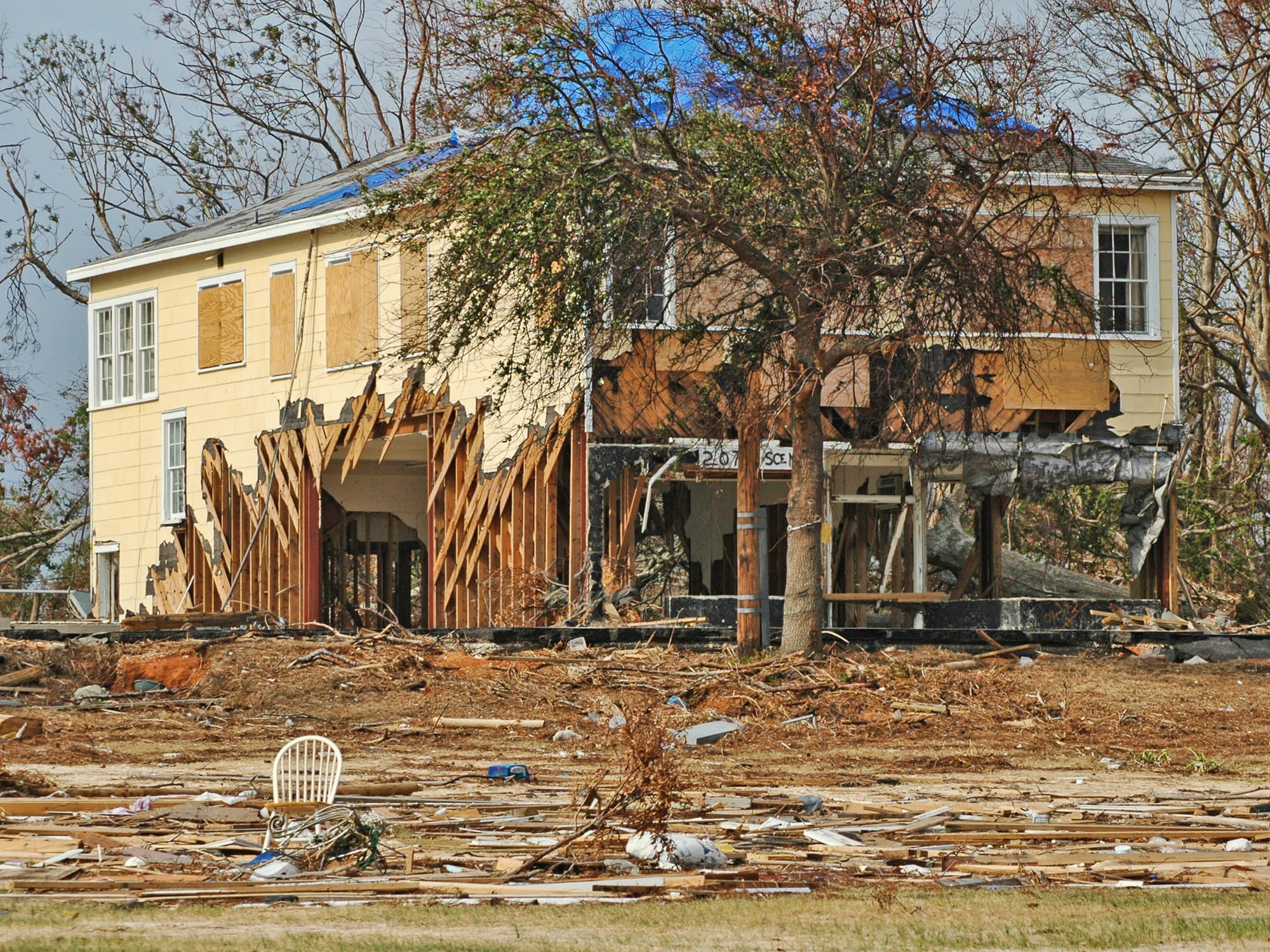
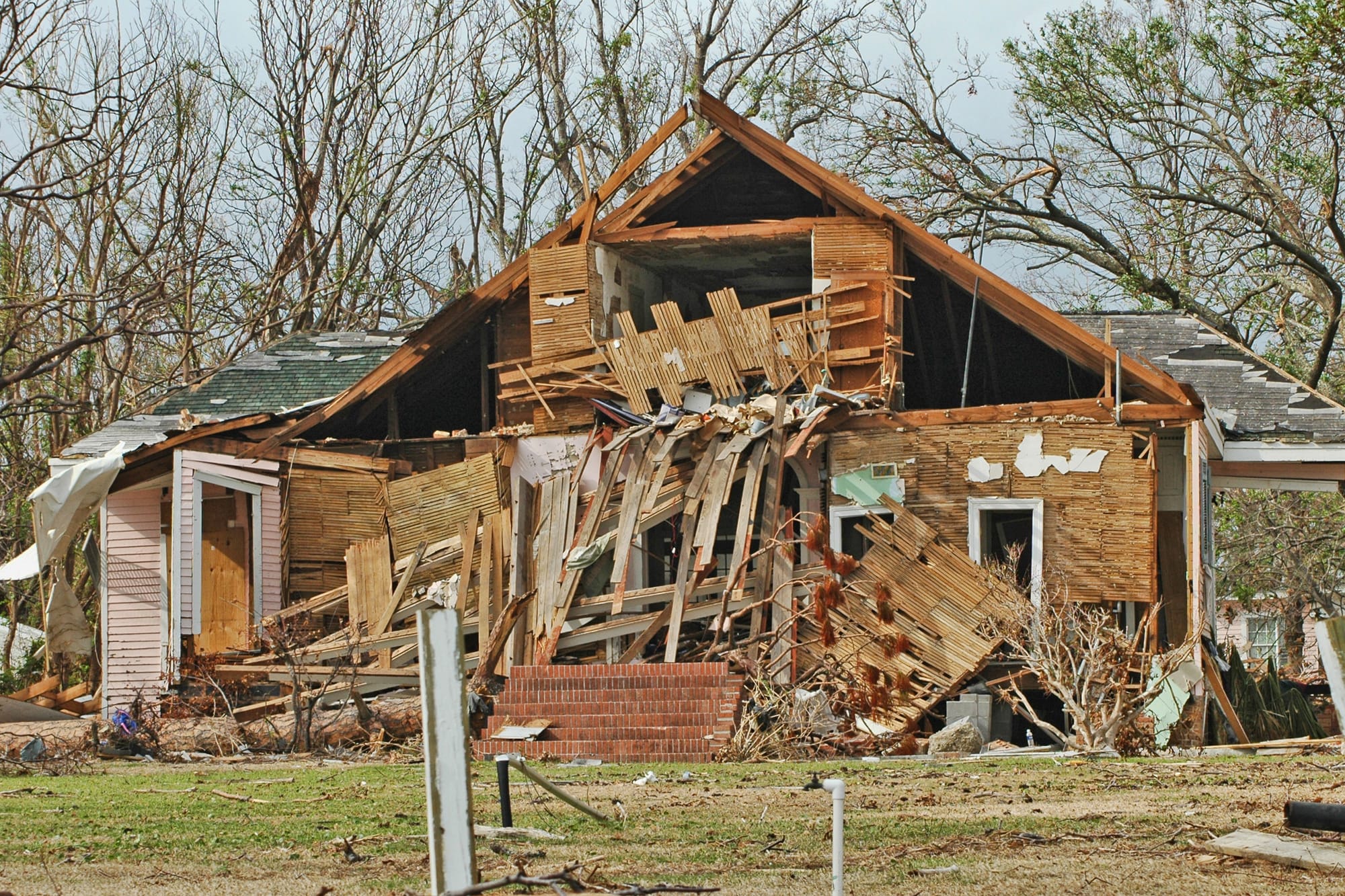
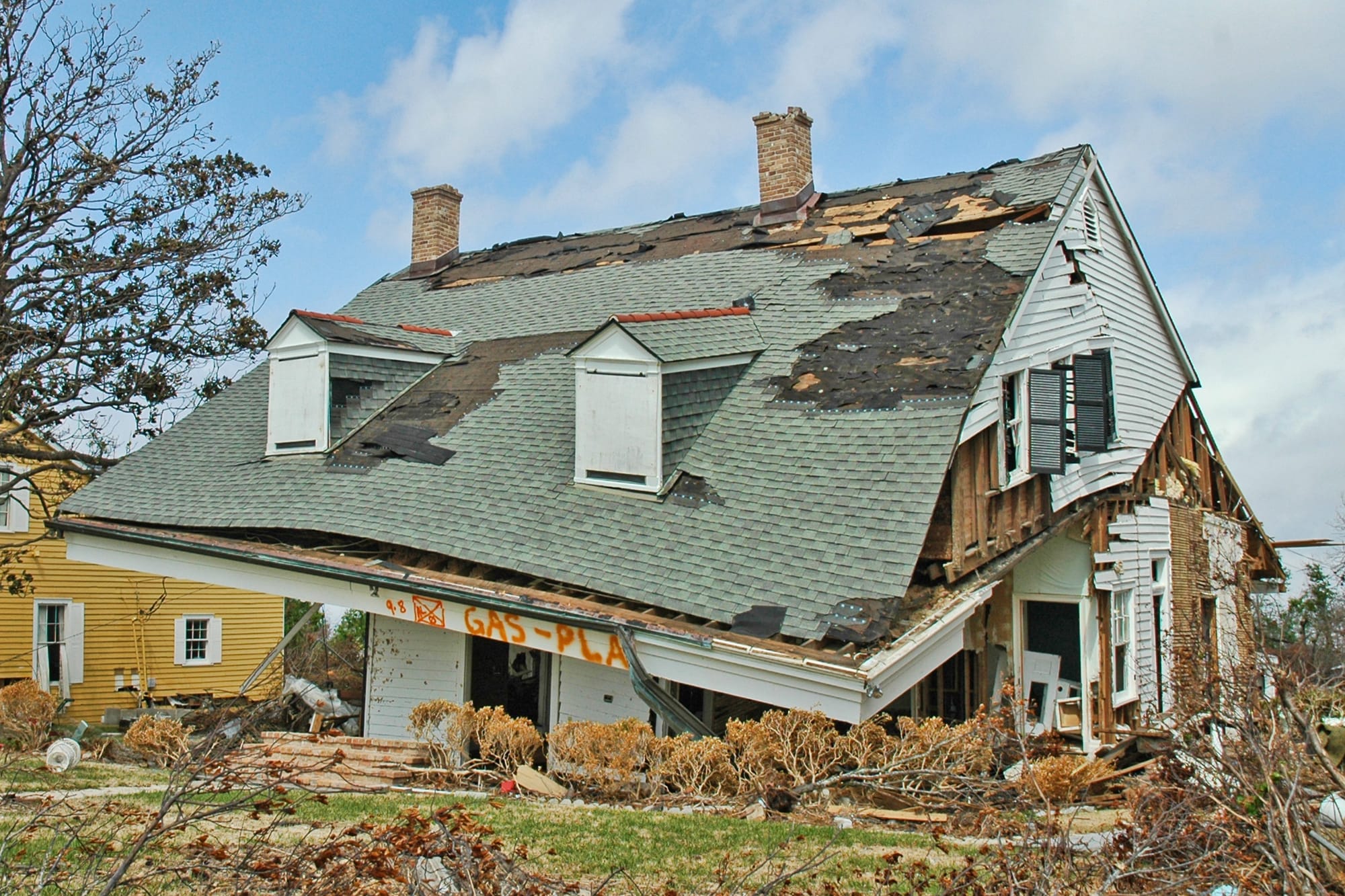
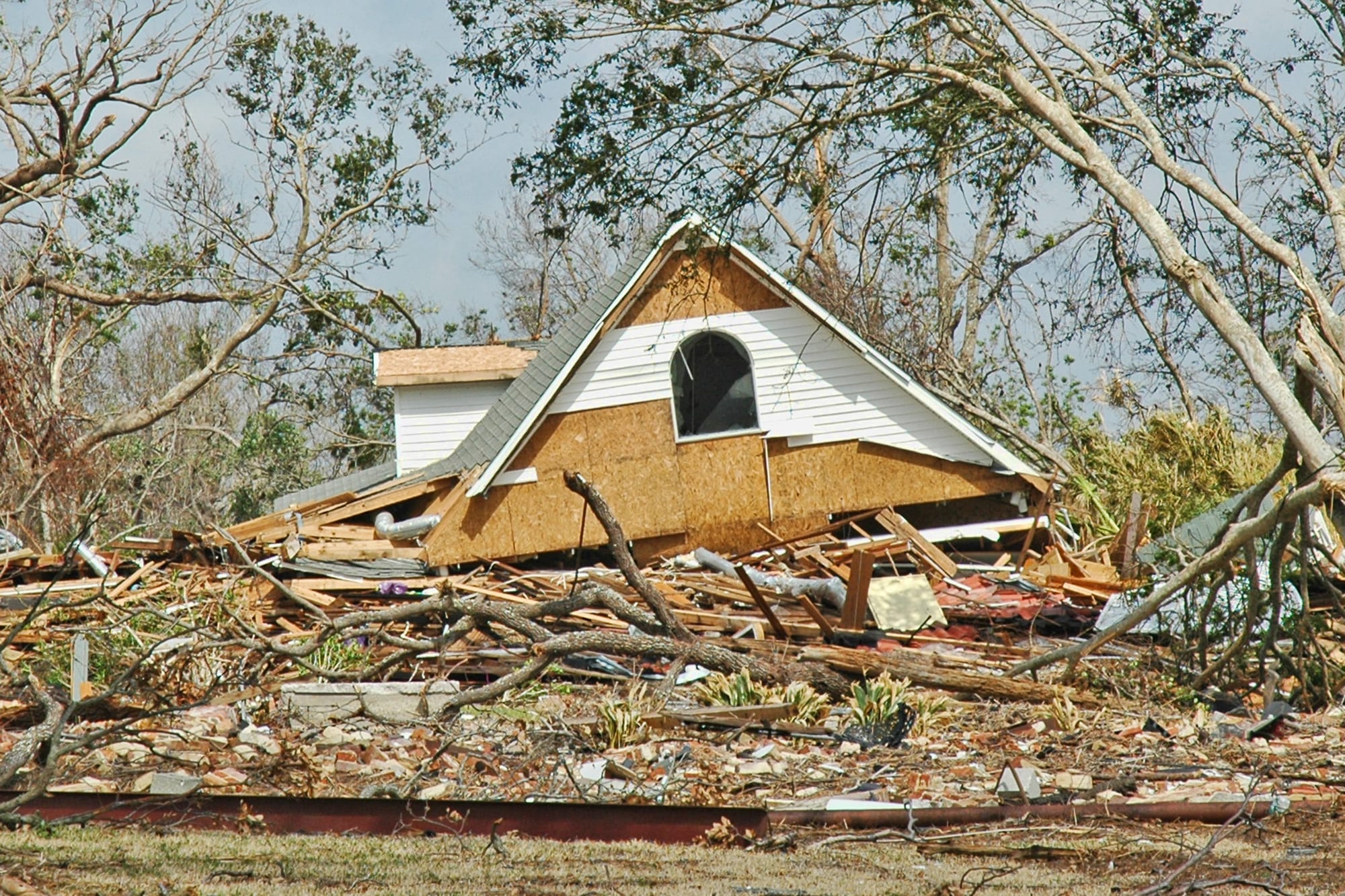
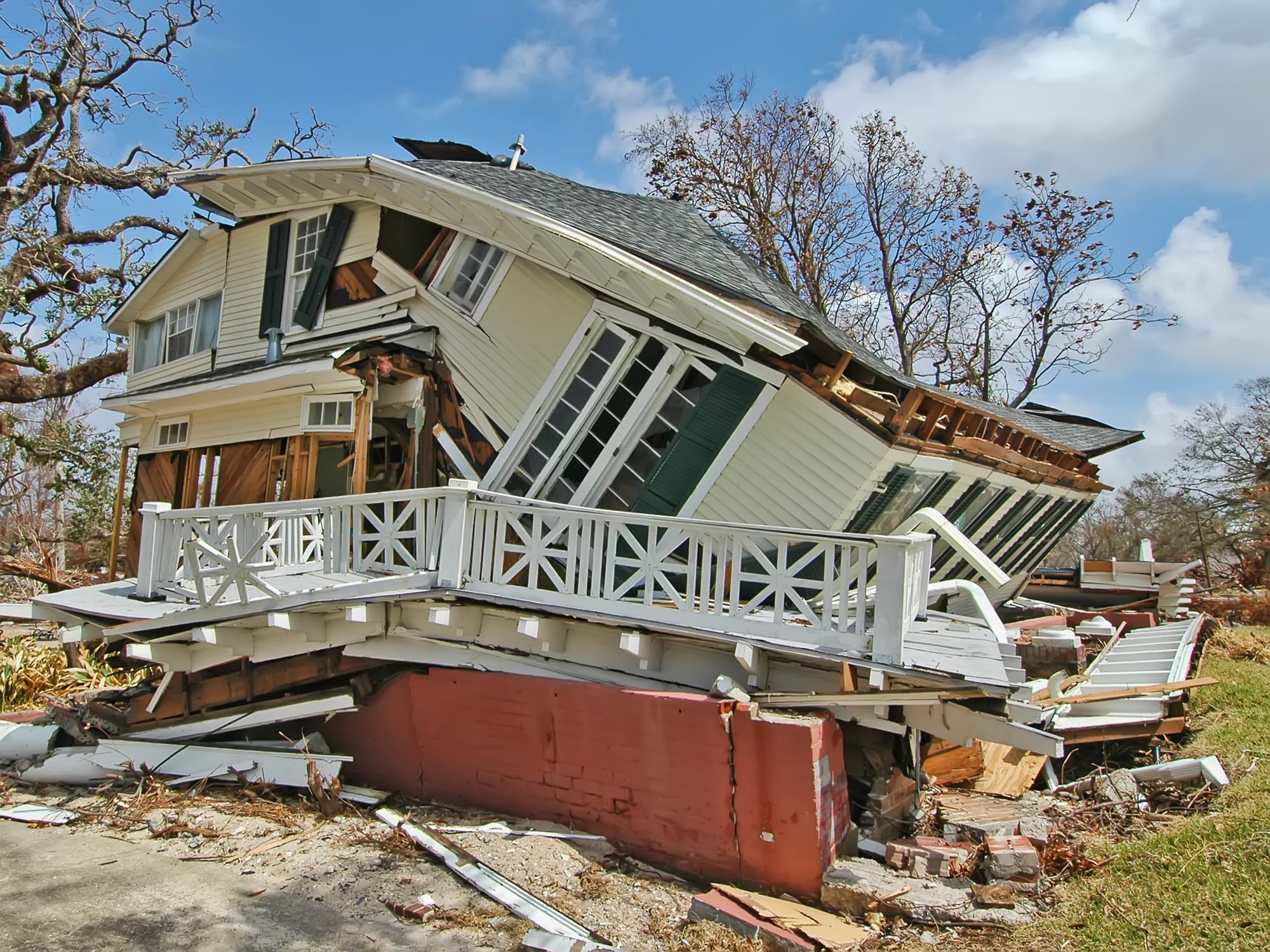
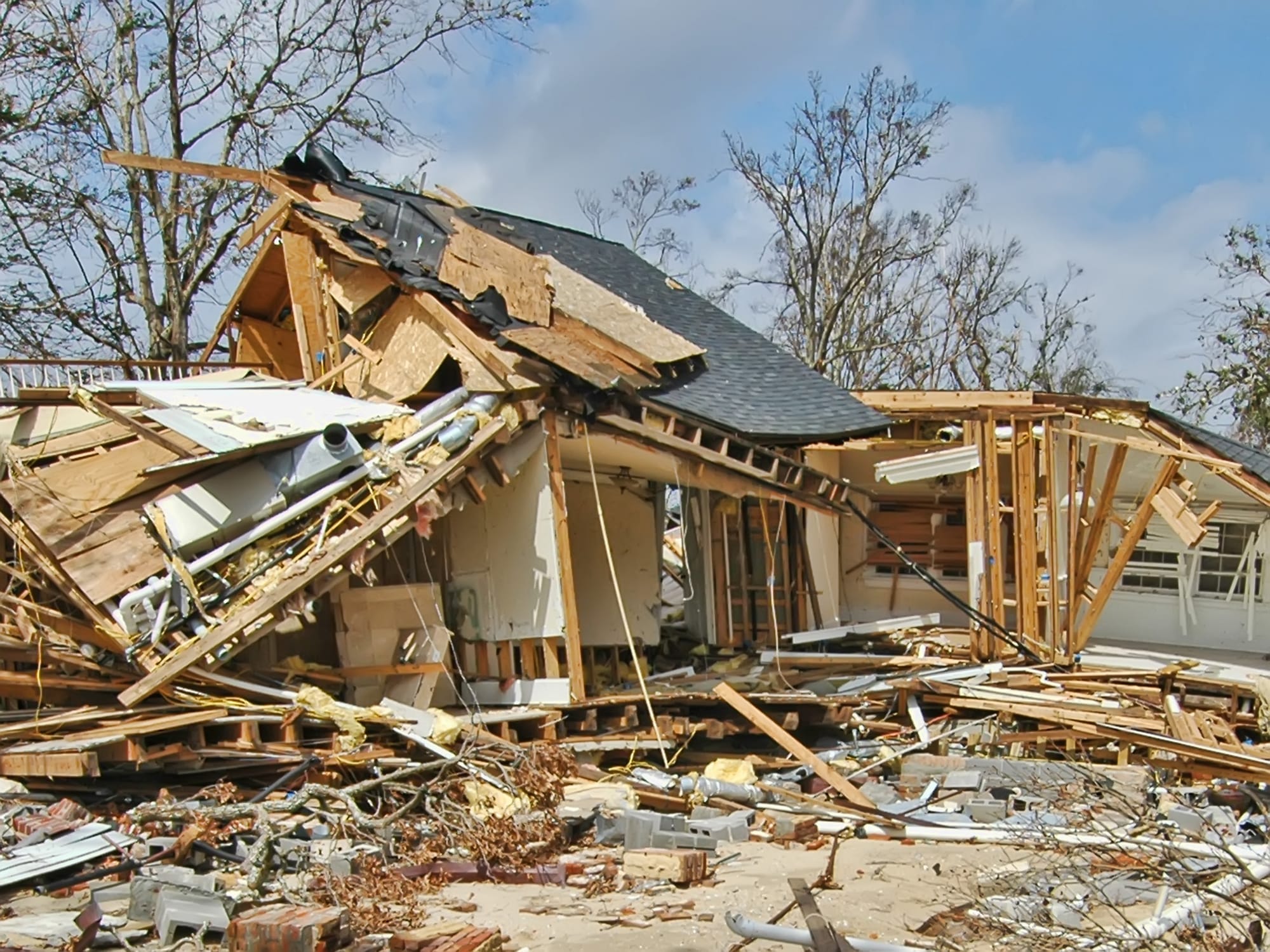
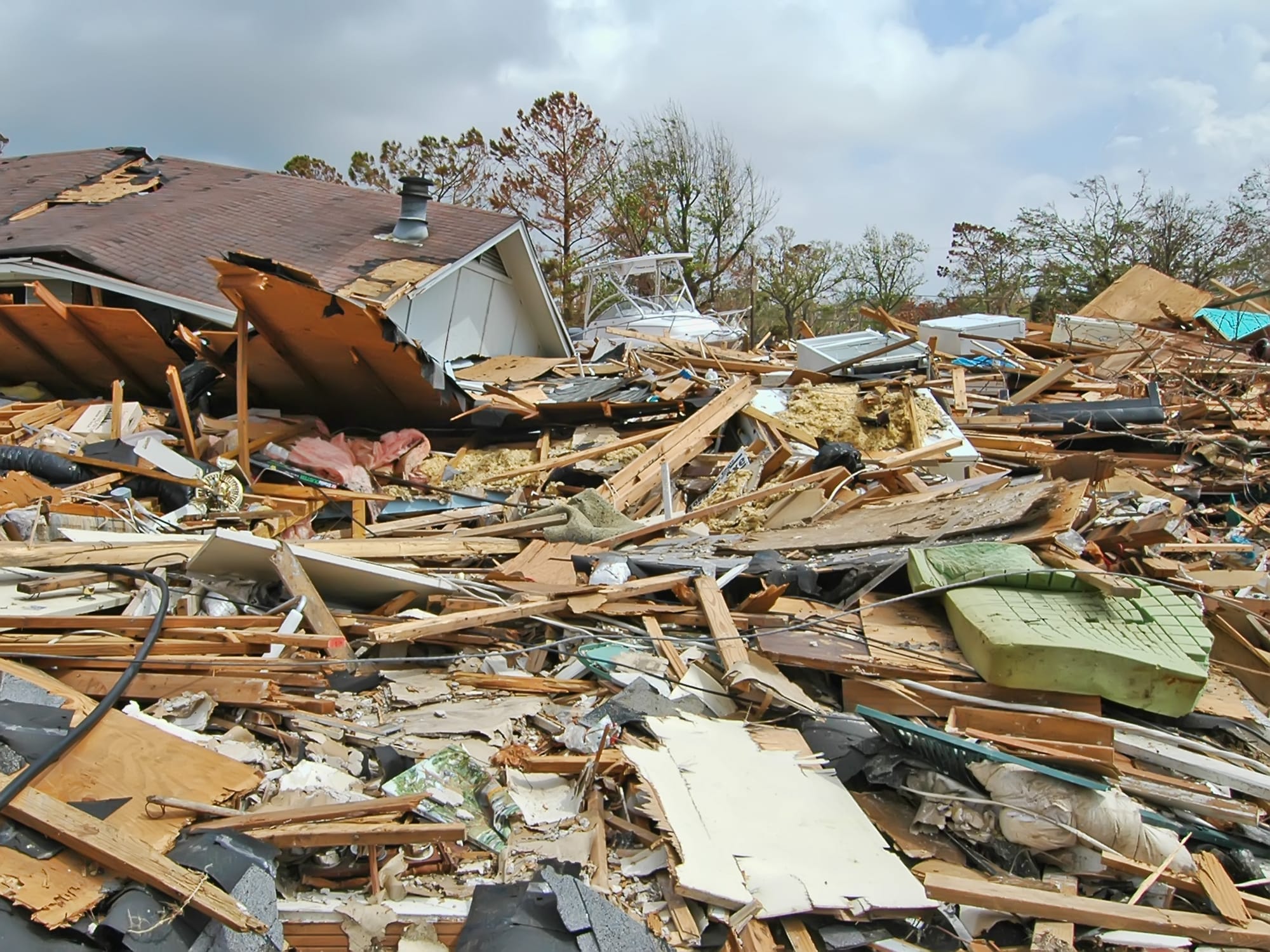
Scenic Drive, which runs next to Beach Boulevard for two miles through the middle of Pass Christian, had taken the brunt of the storm surge and was still closed in areas where it had been washed out, but some stretches were drivable. I parked and walked the length of it.


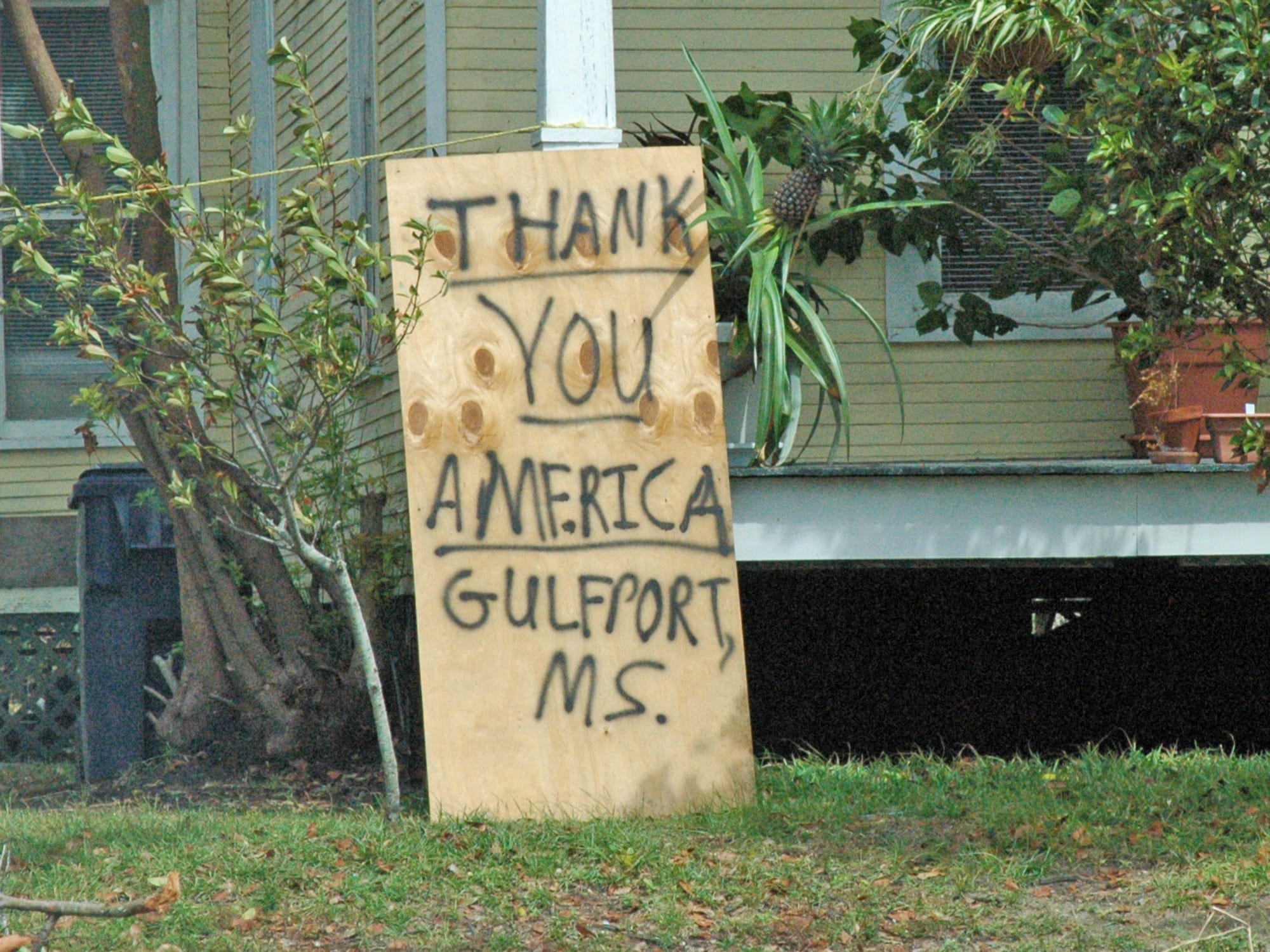
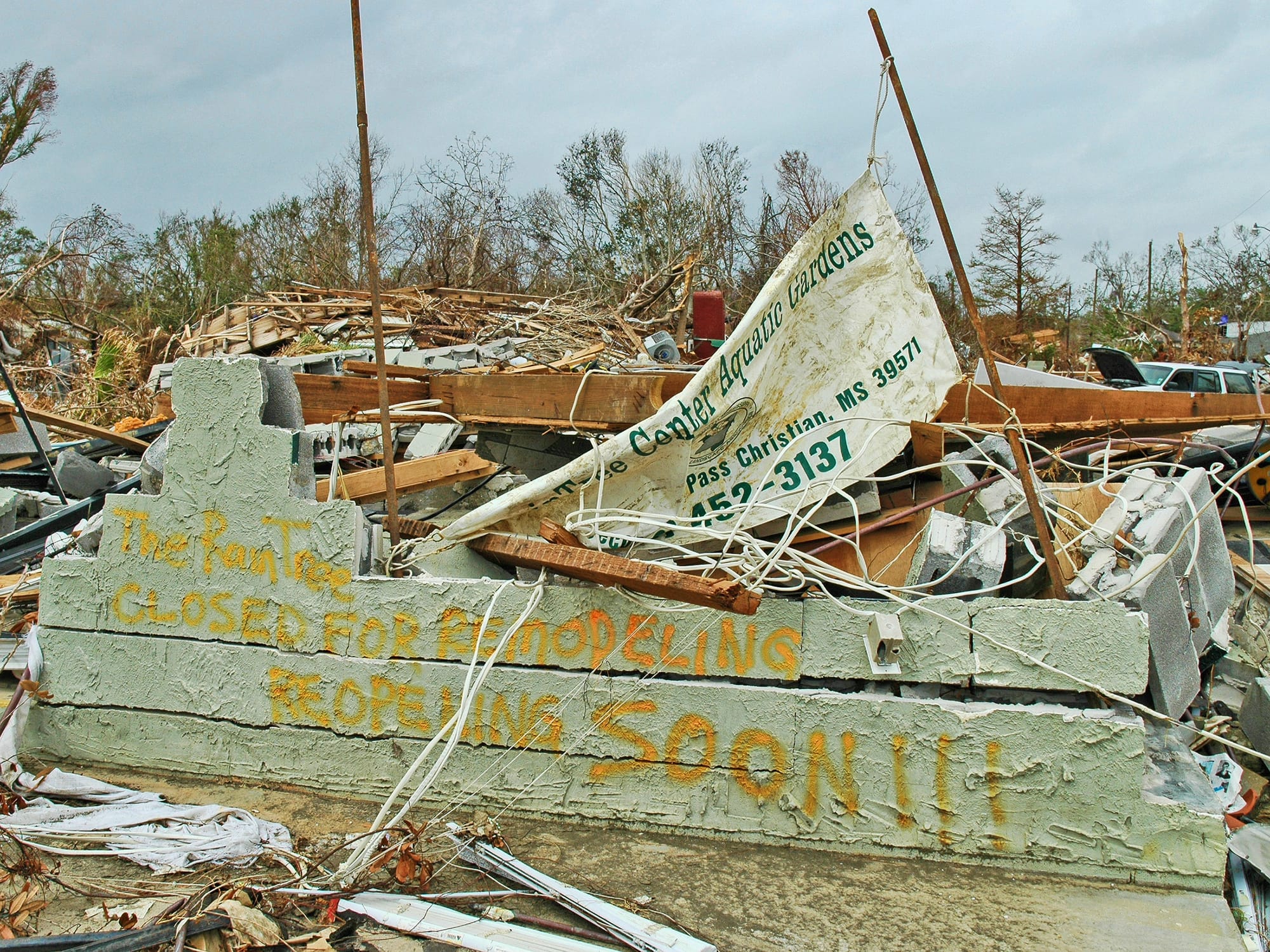
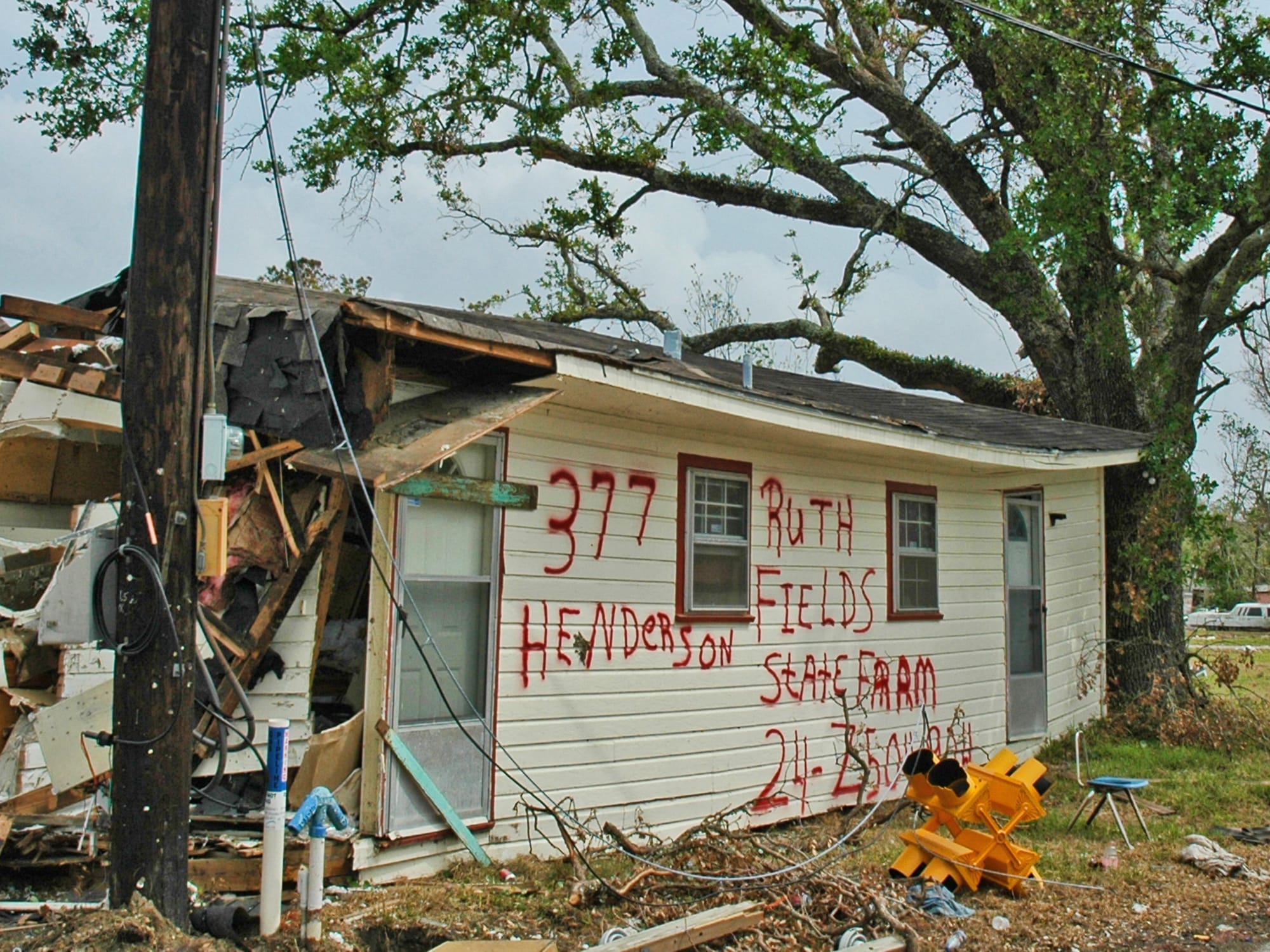
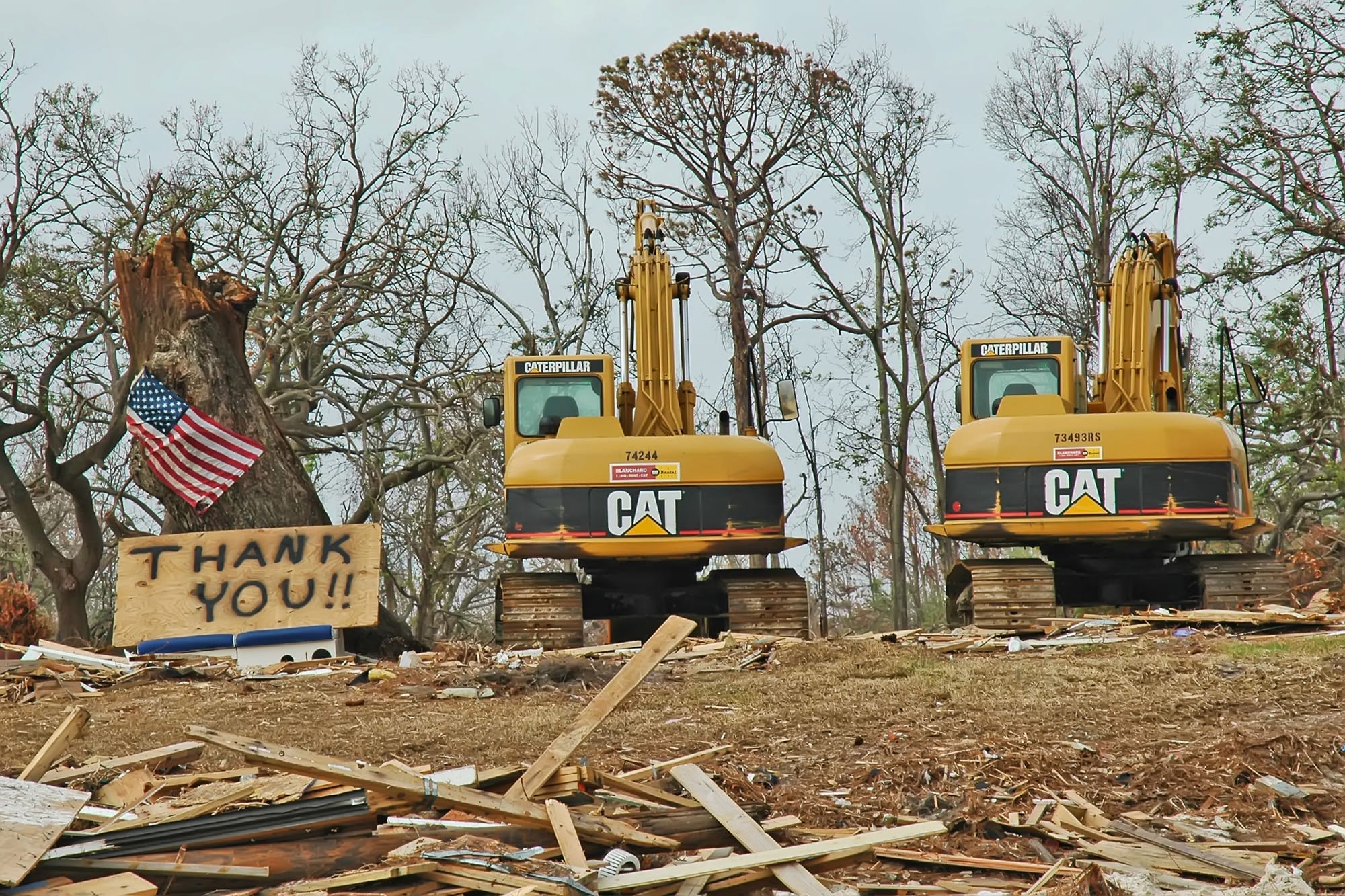

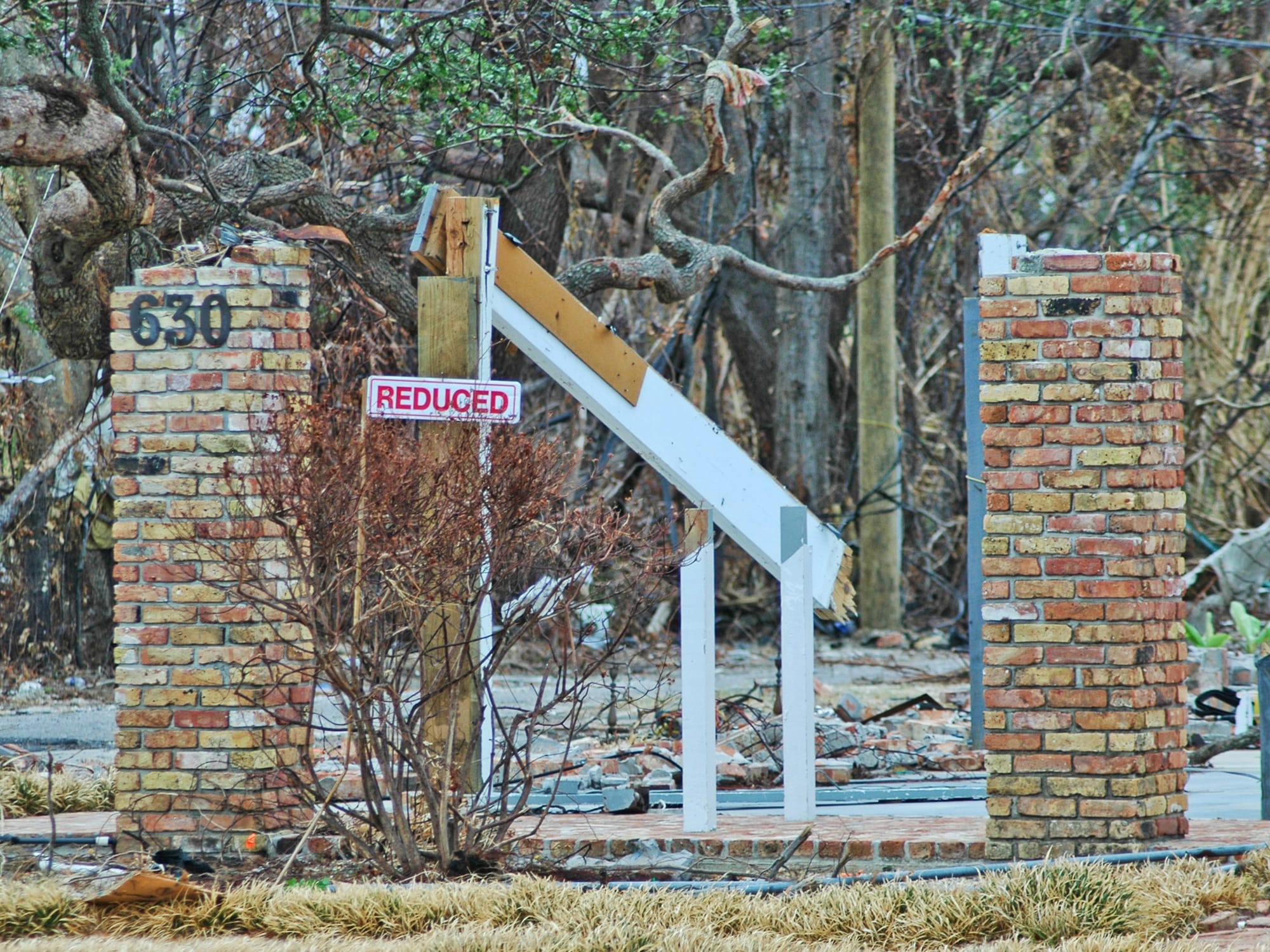
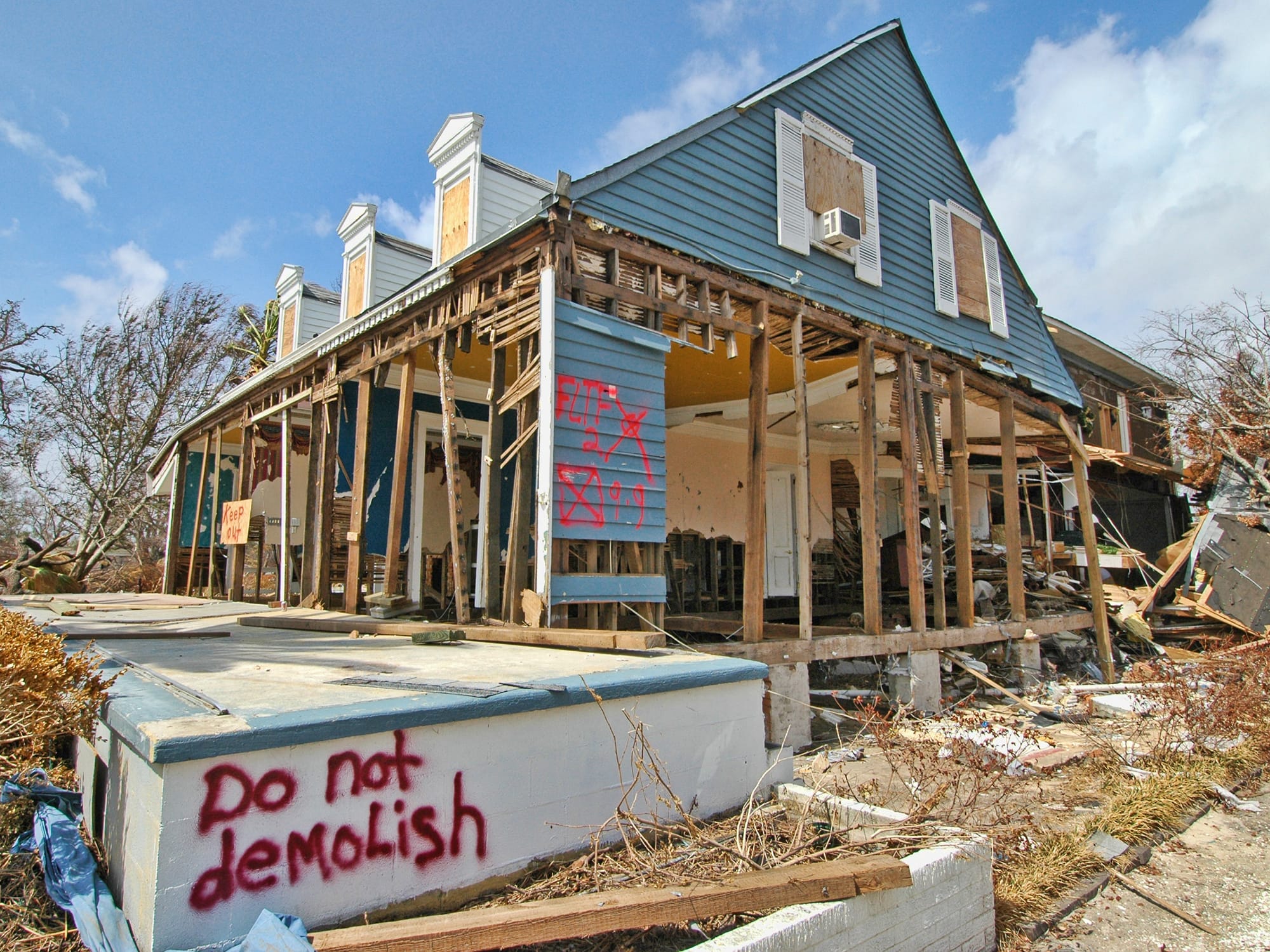
Signs had sprung up on many sites, with messages to insurance companies, demolition crews, and others.
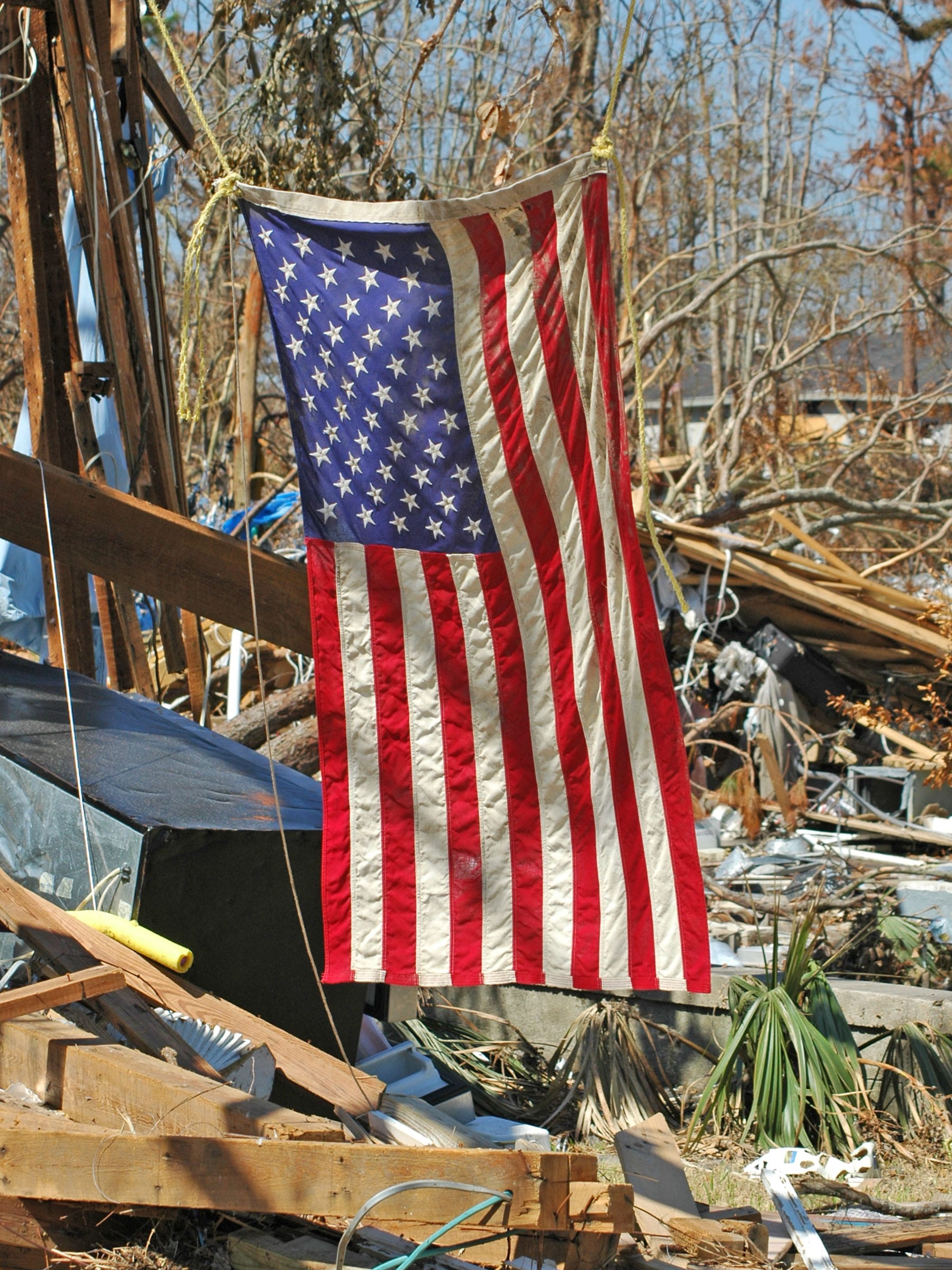
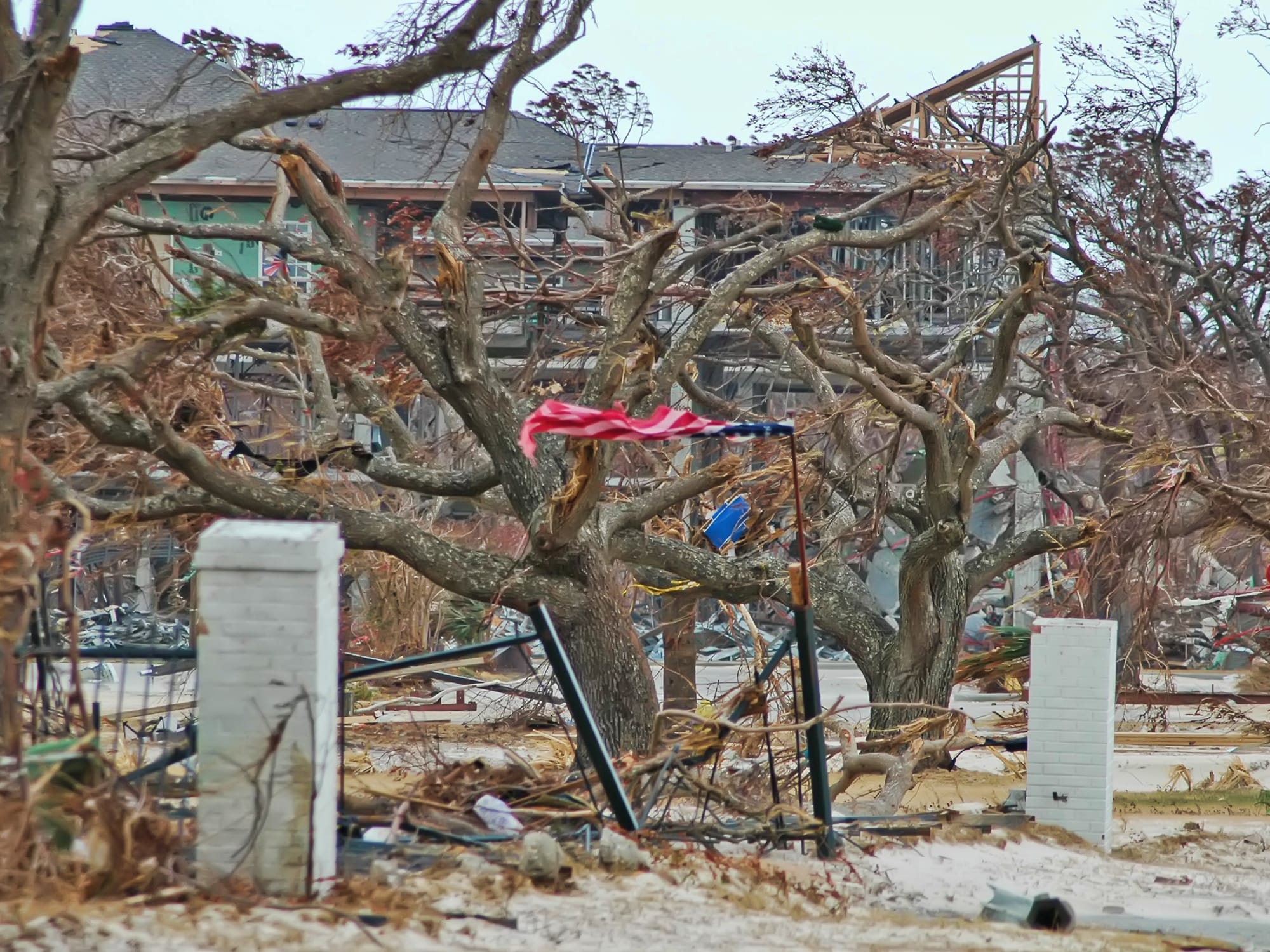
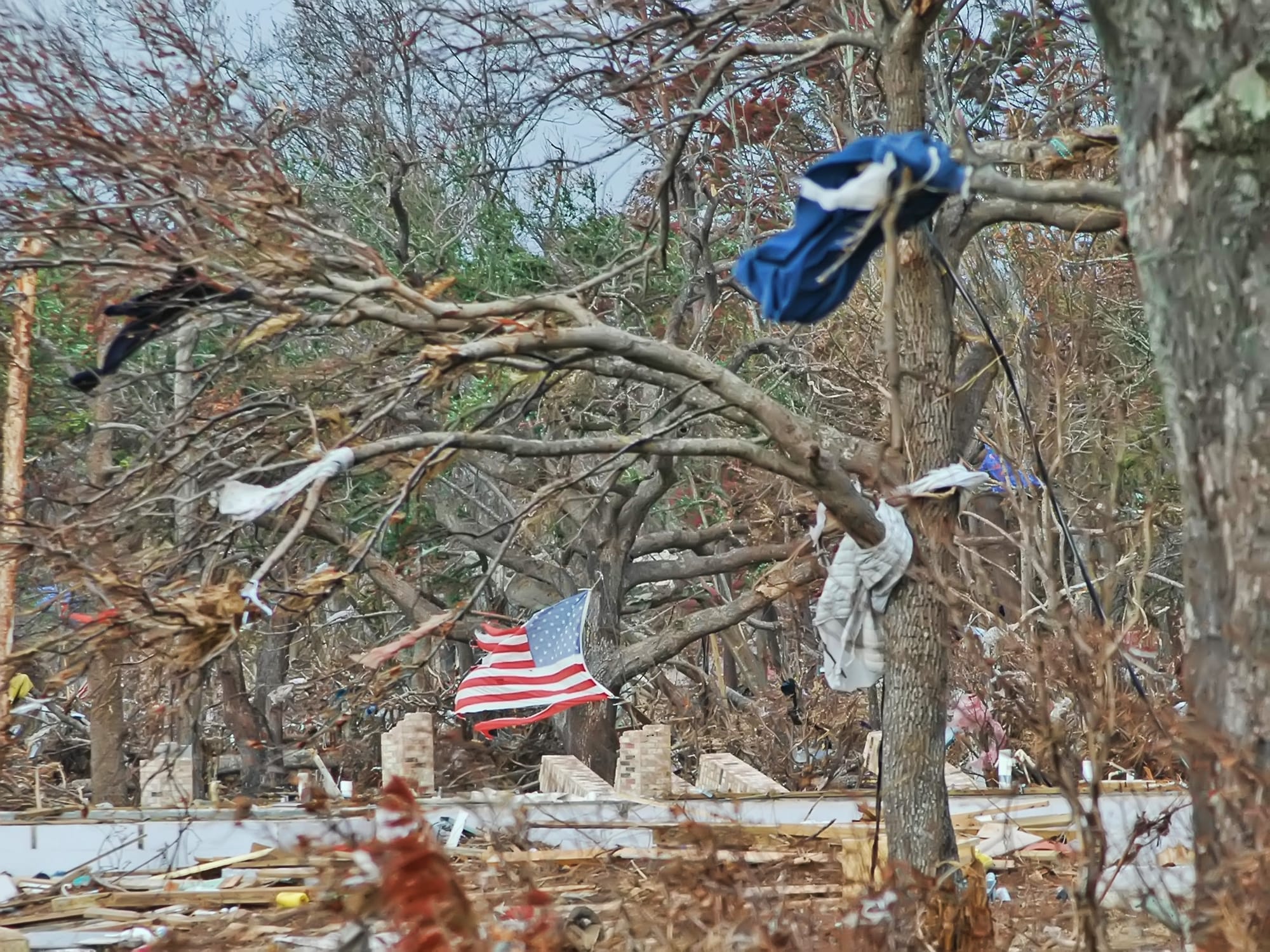
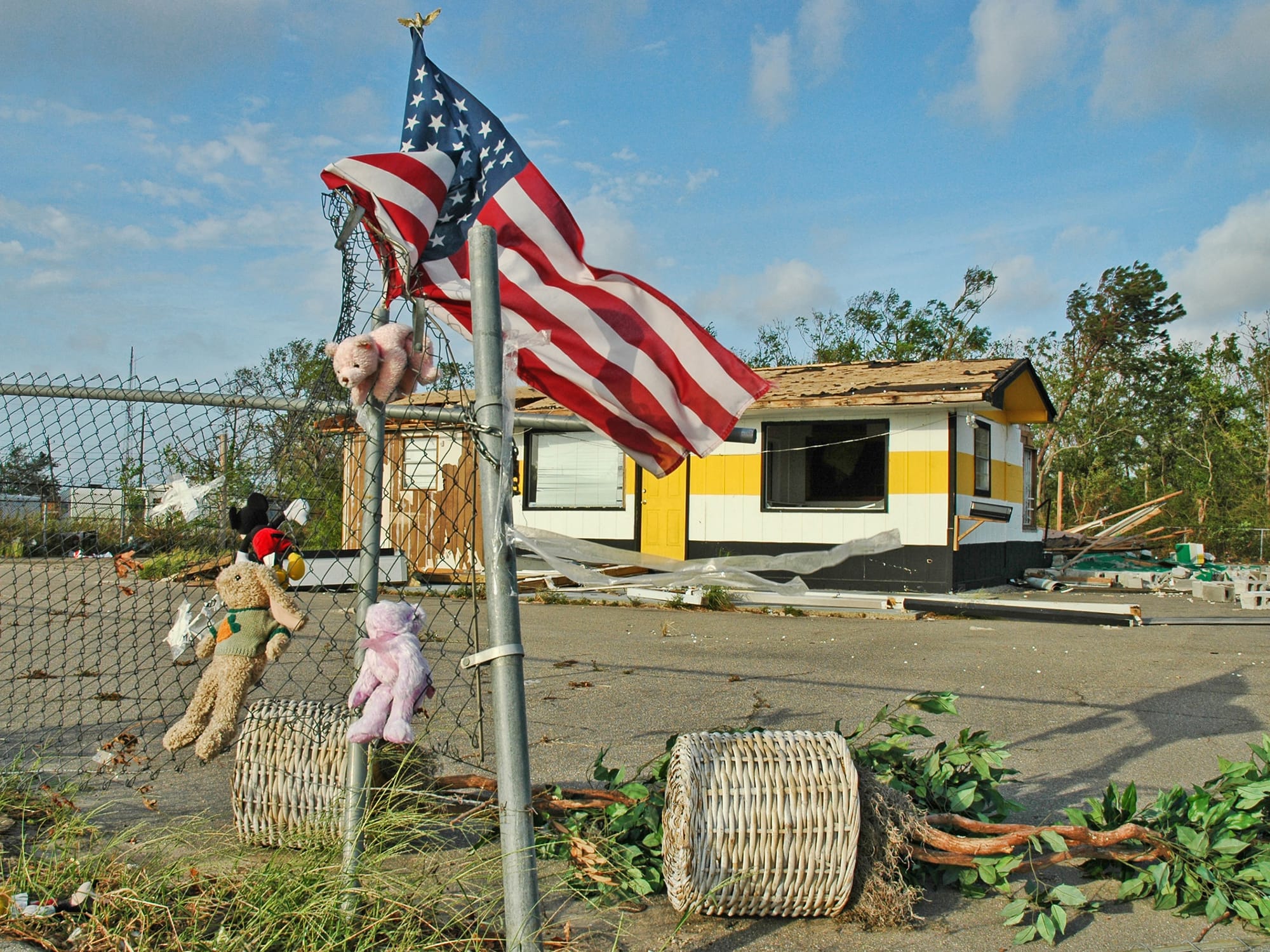
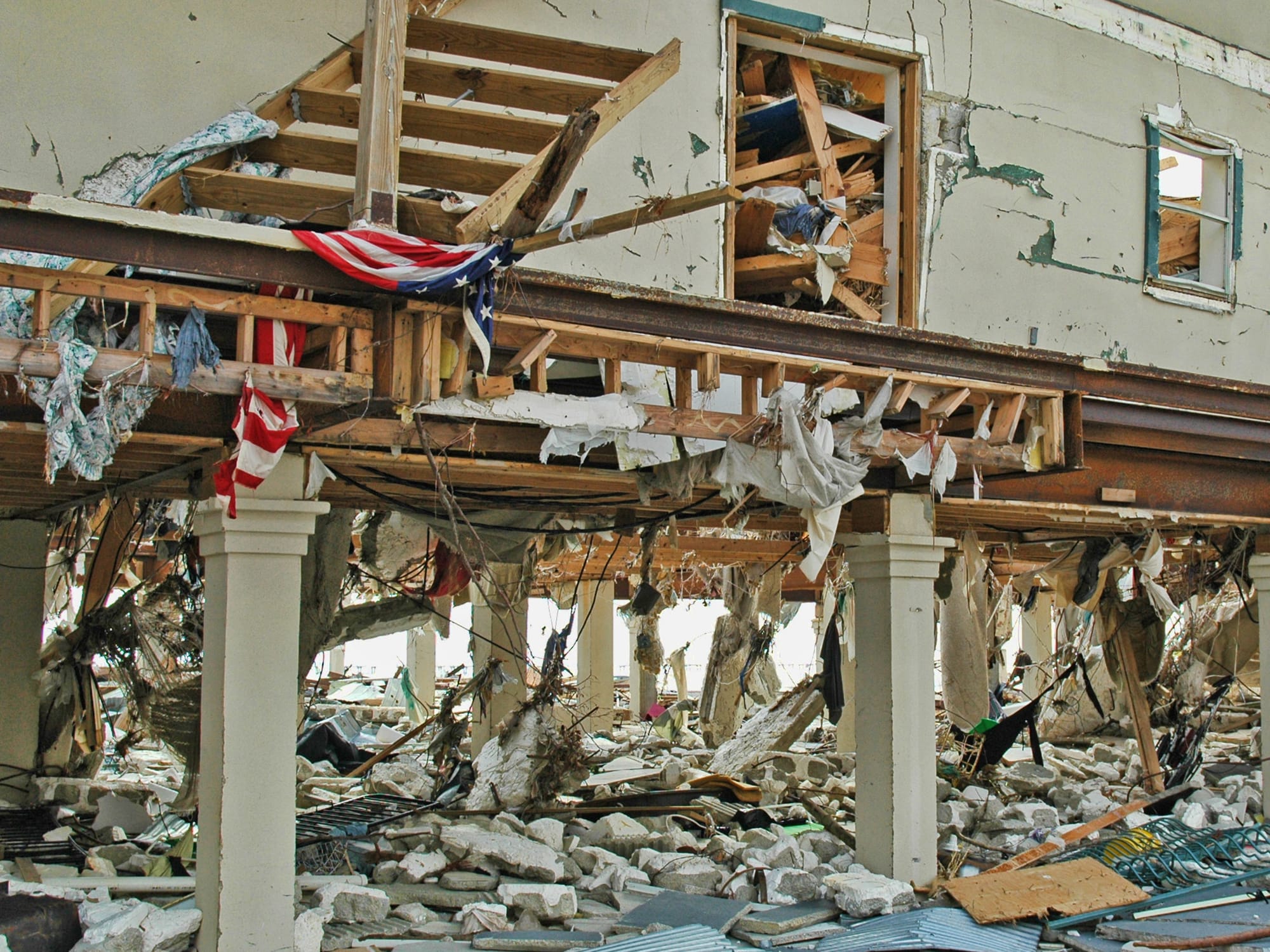
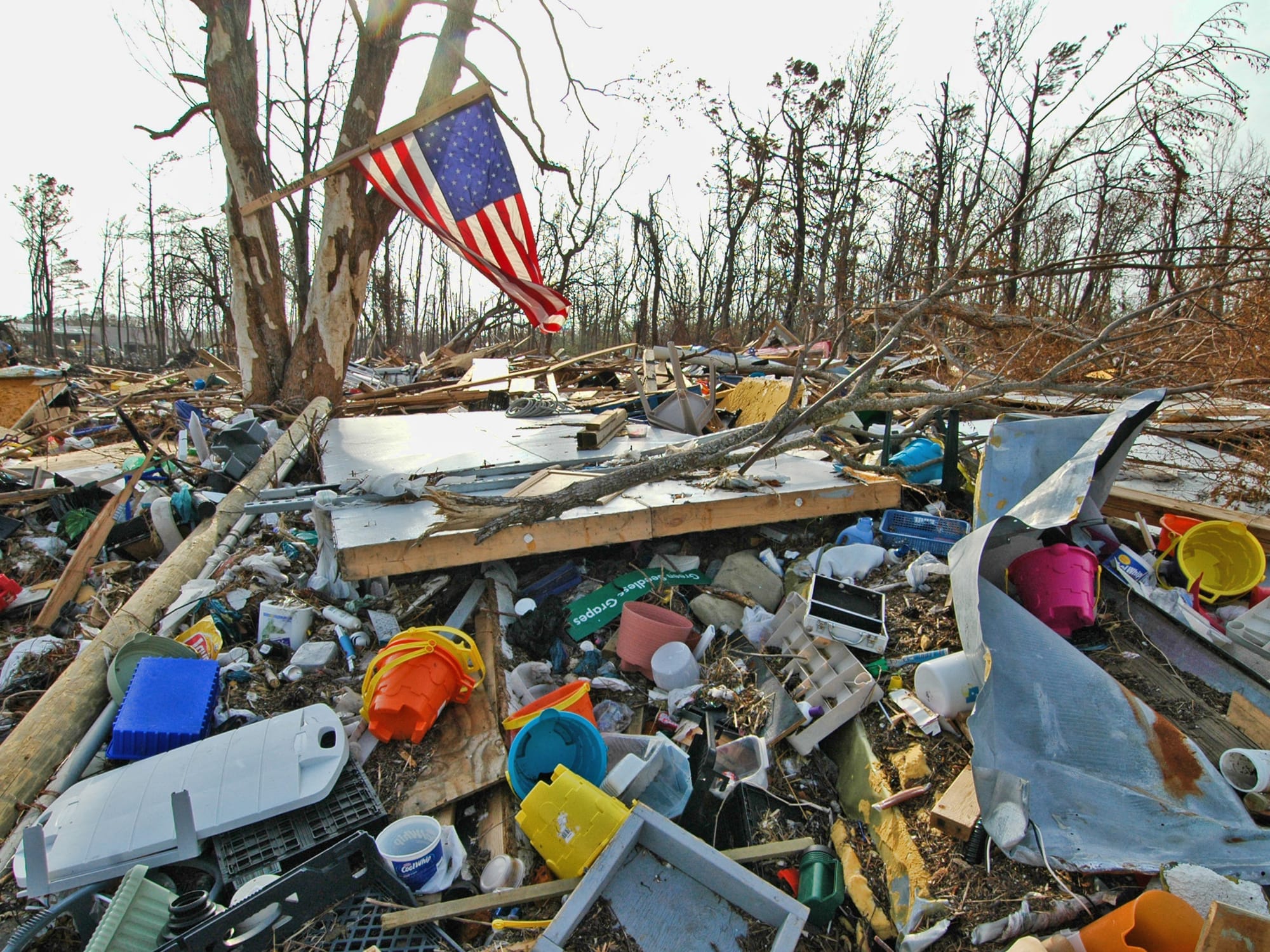
US flags were also common, as a way to exude some hope and optimism.
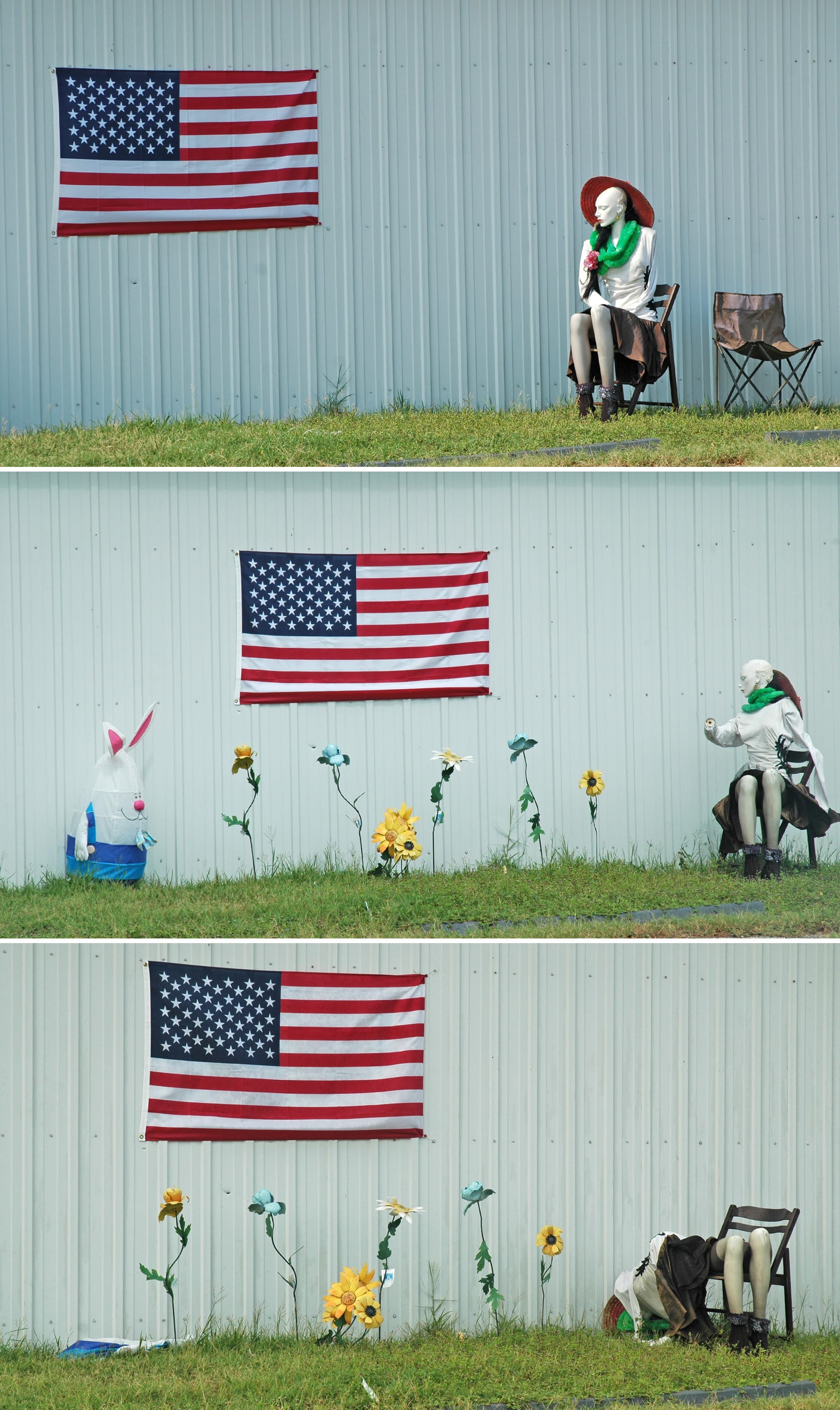
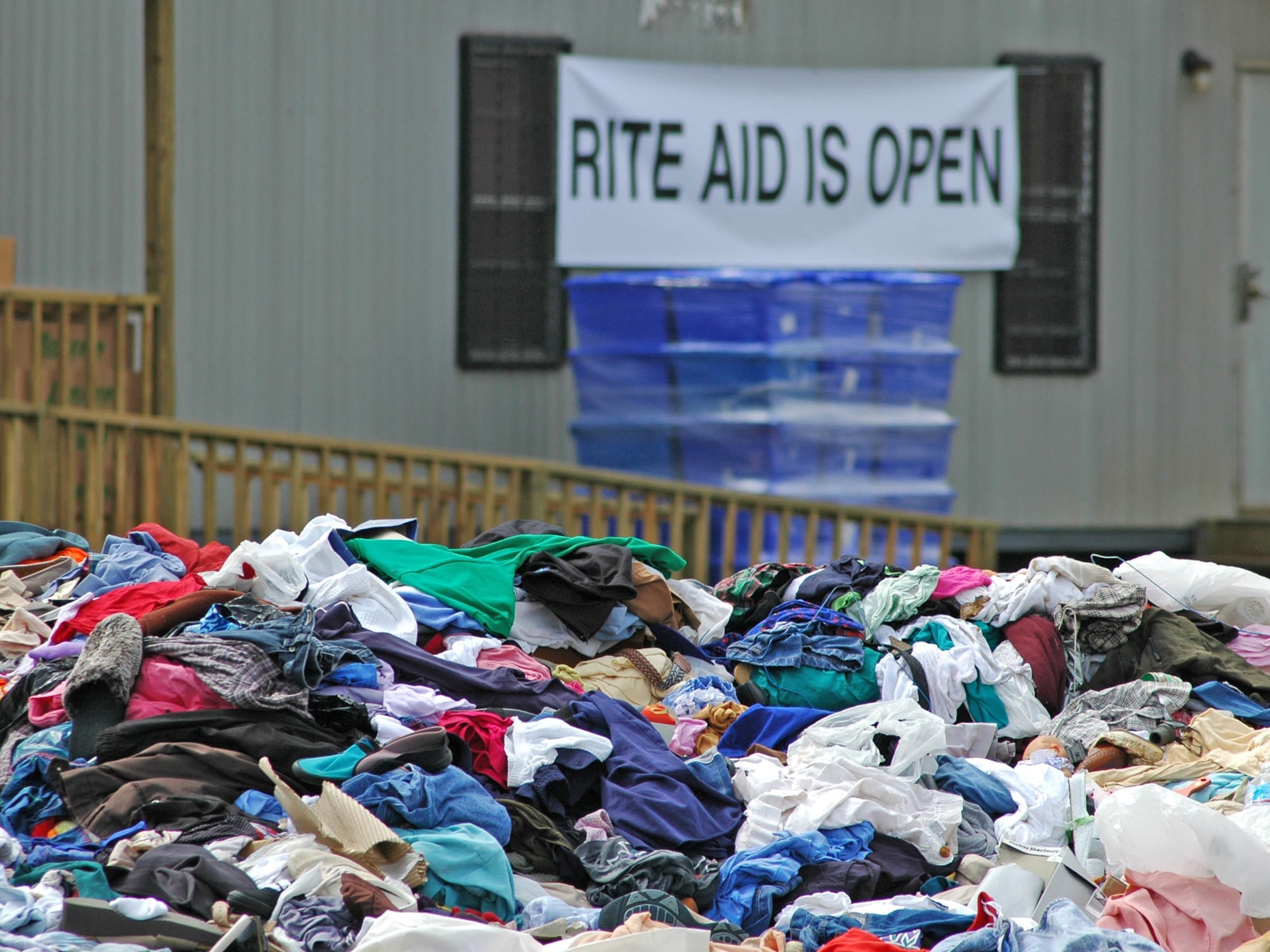
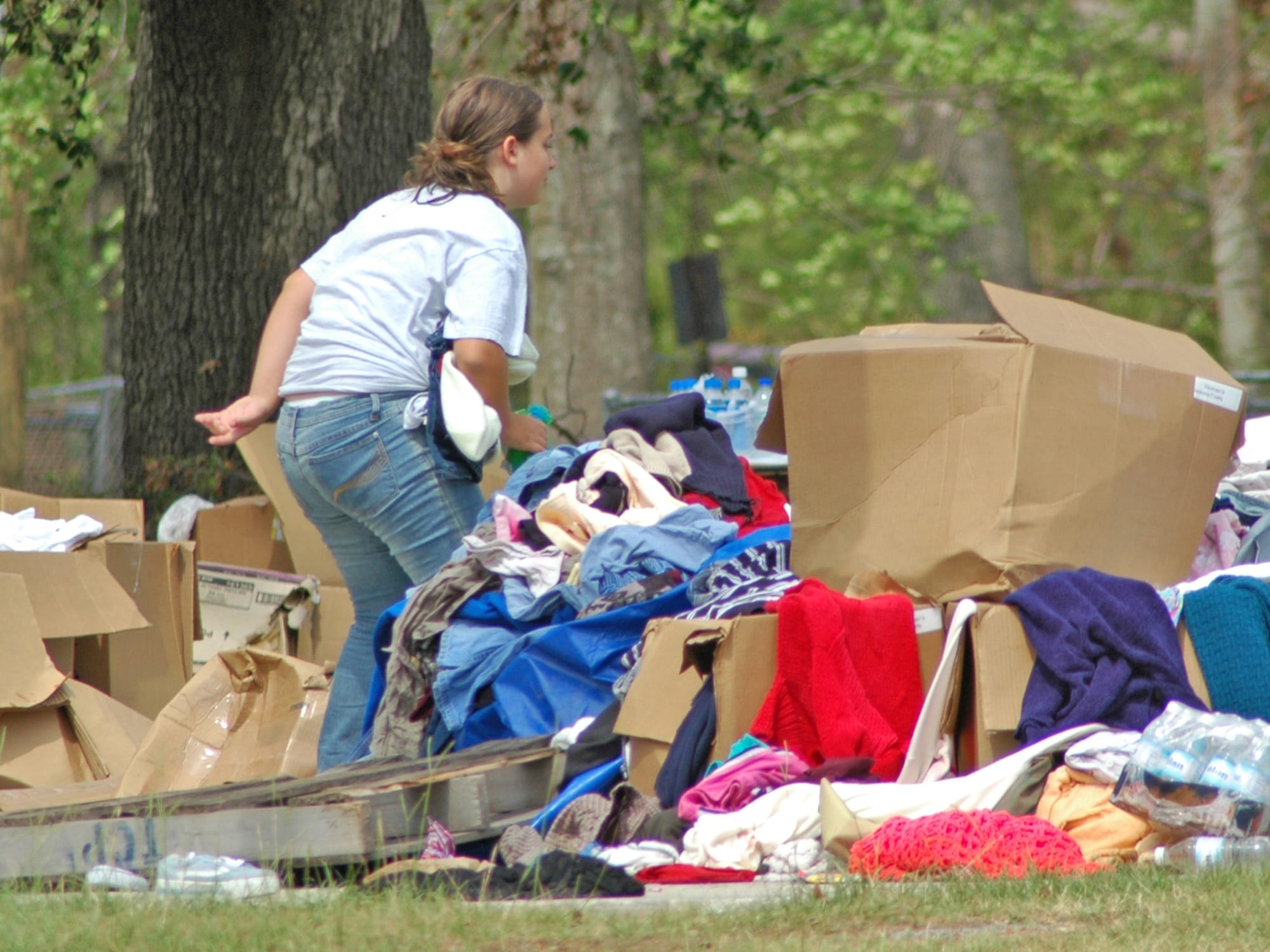
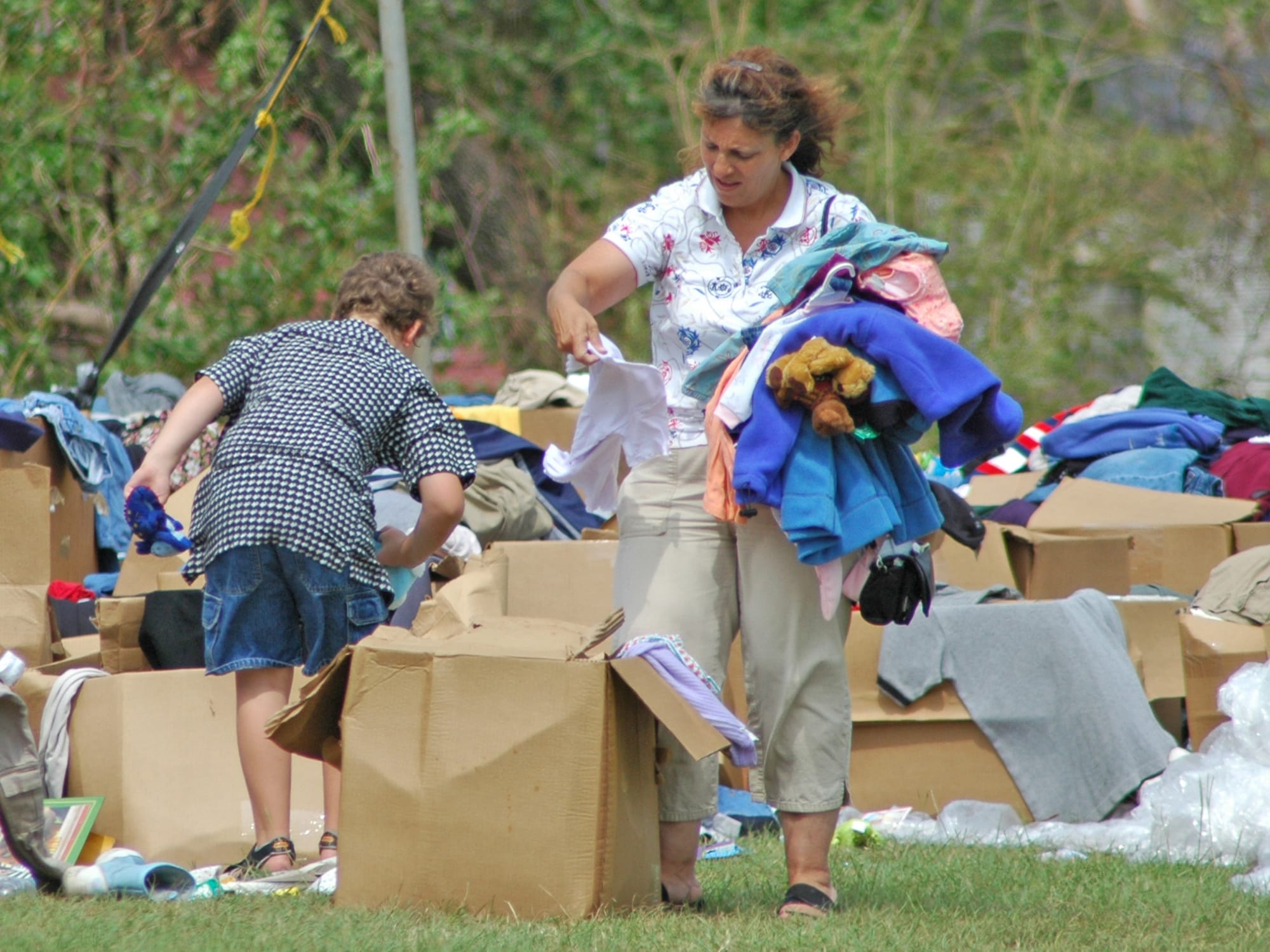
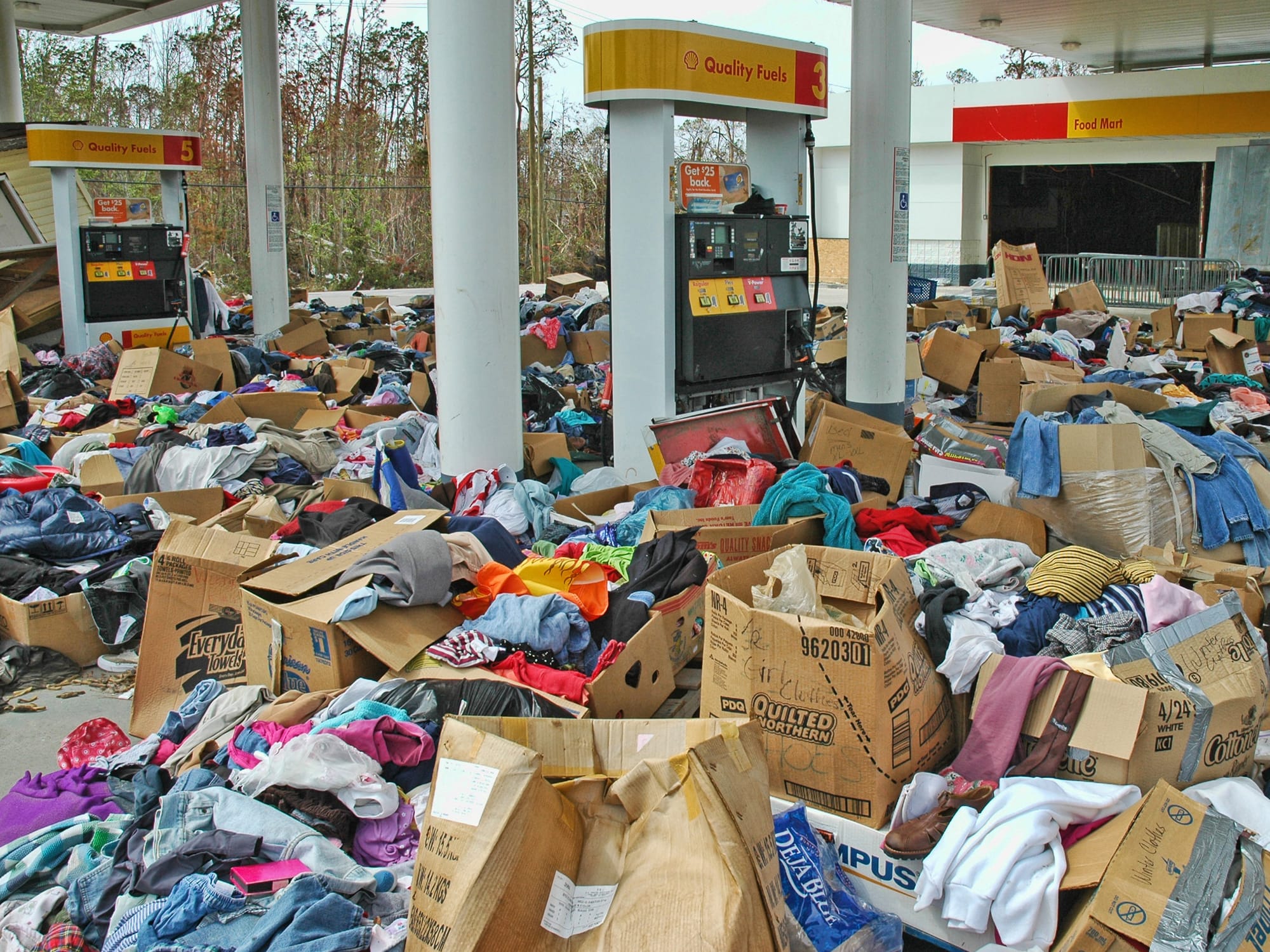
Many people had only the clothes on their backs after losing their homes, so there were informal clothing donation sites set up in many places. People dropped off clothes they could spare, and others dug through the boxes looking for things that fit them.
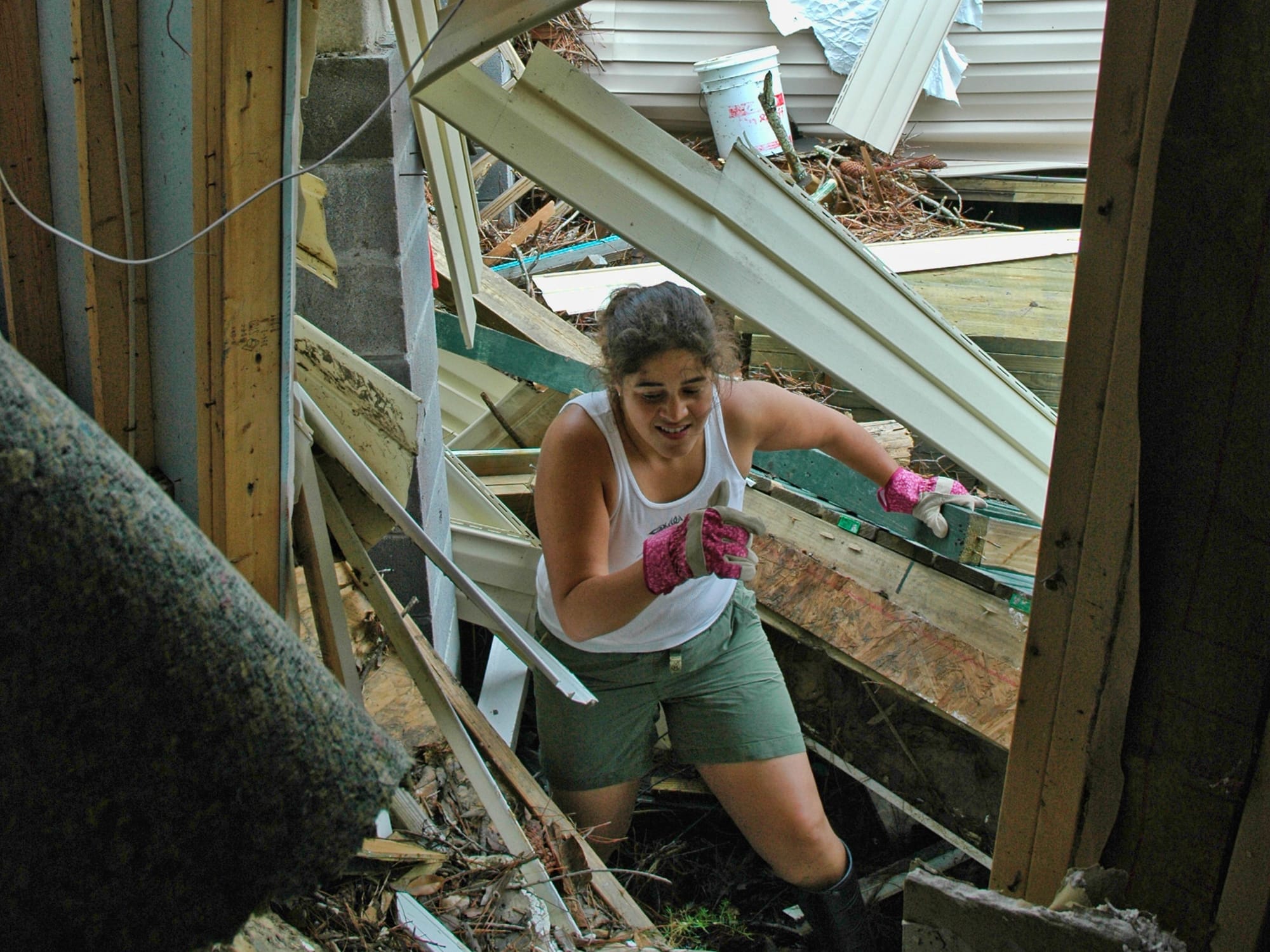
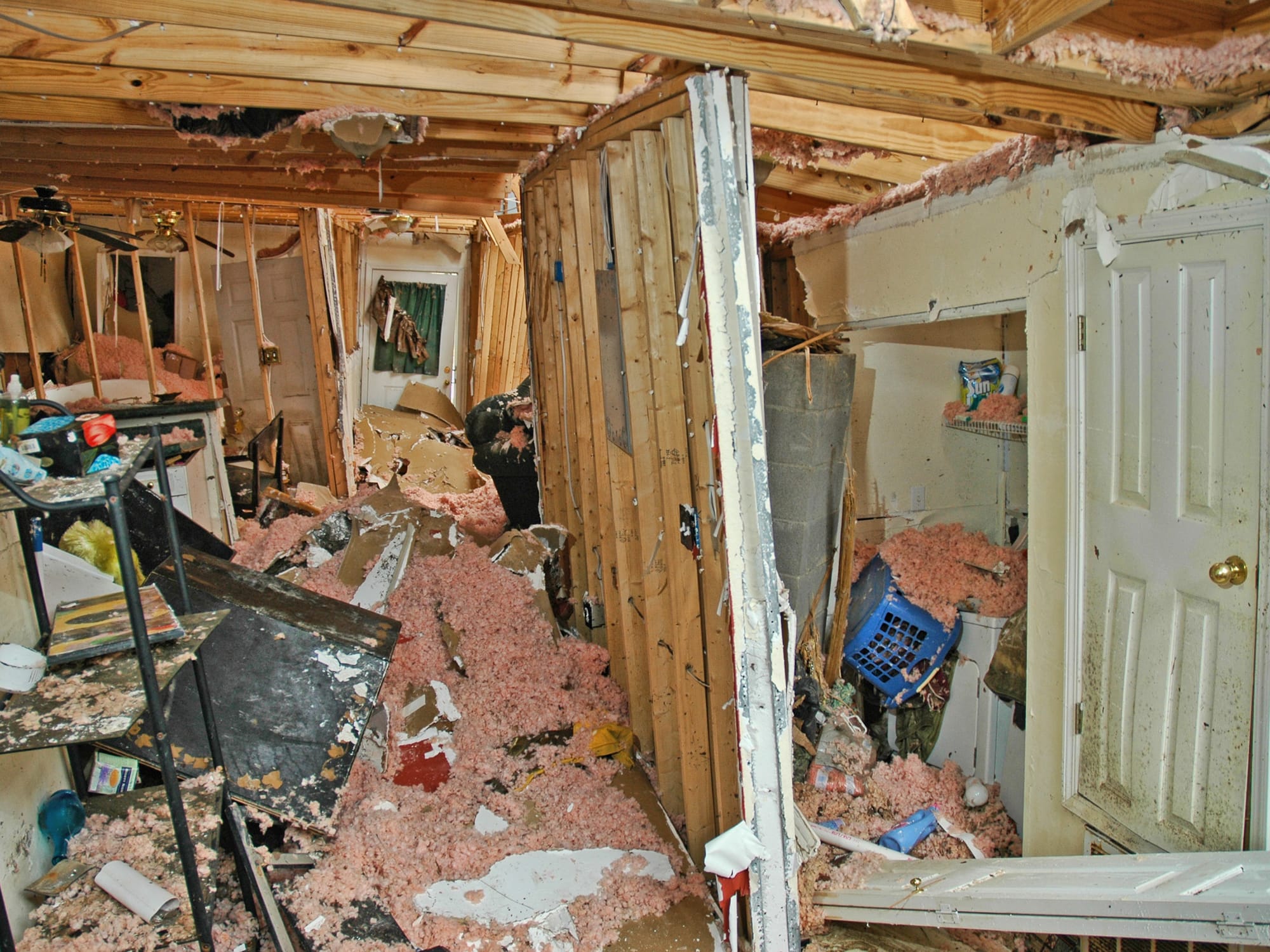
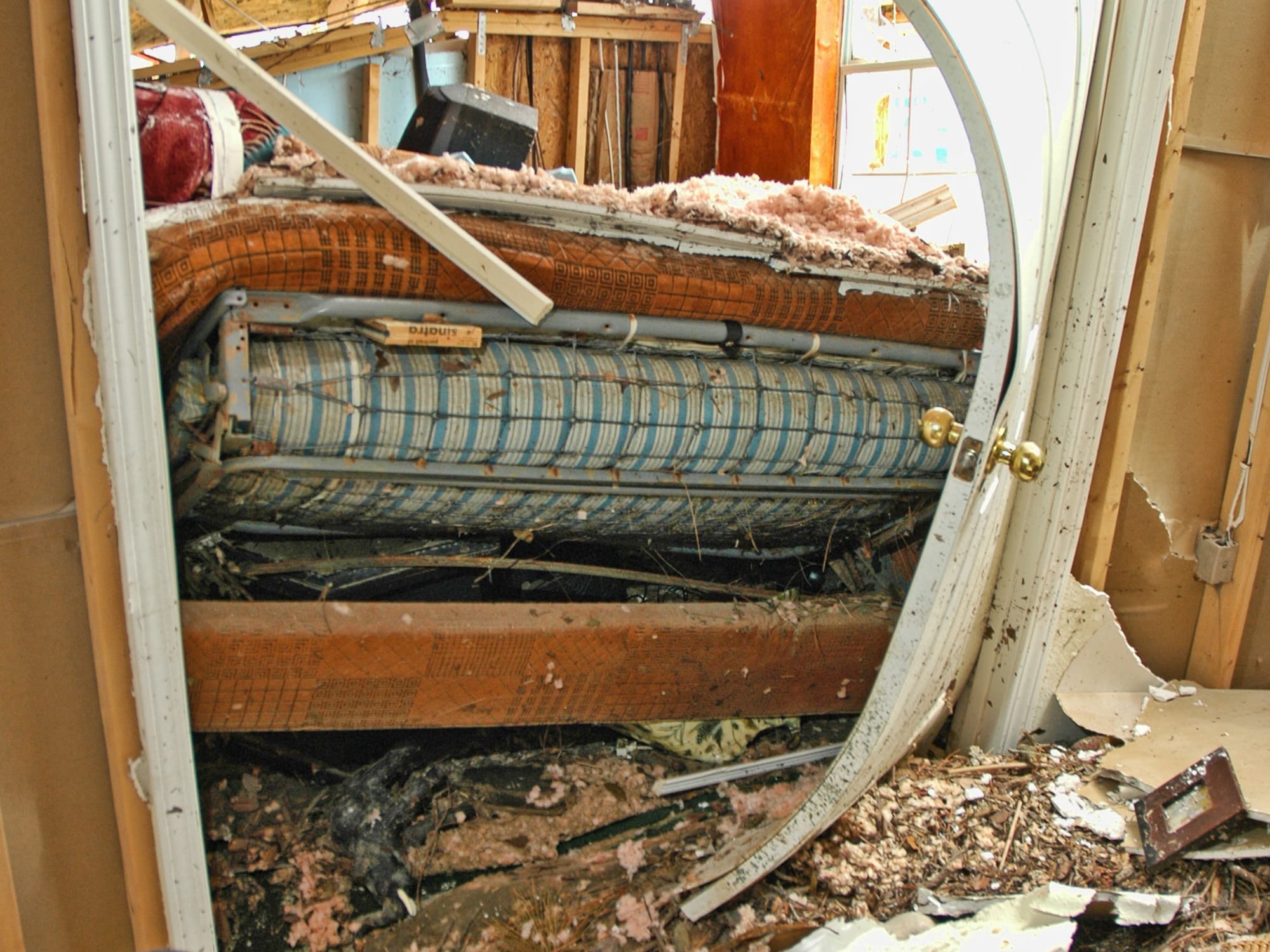
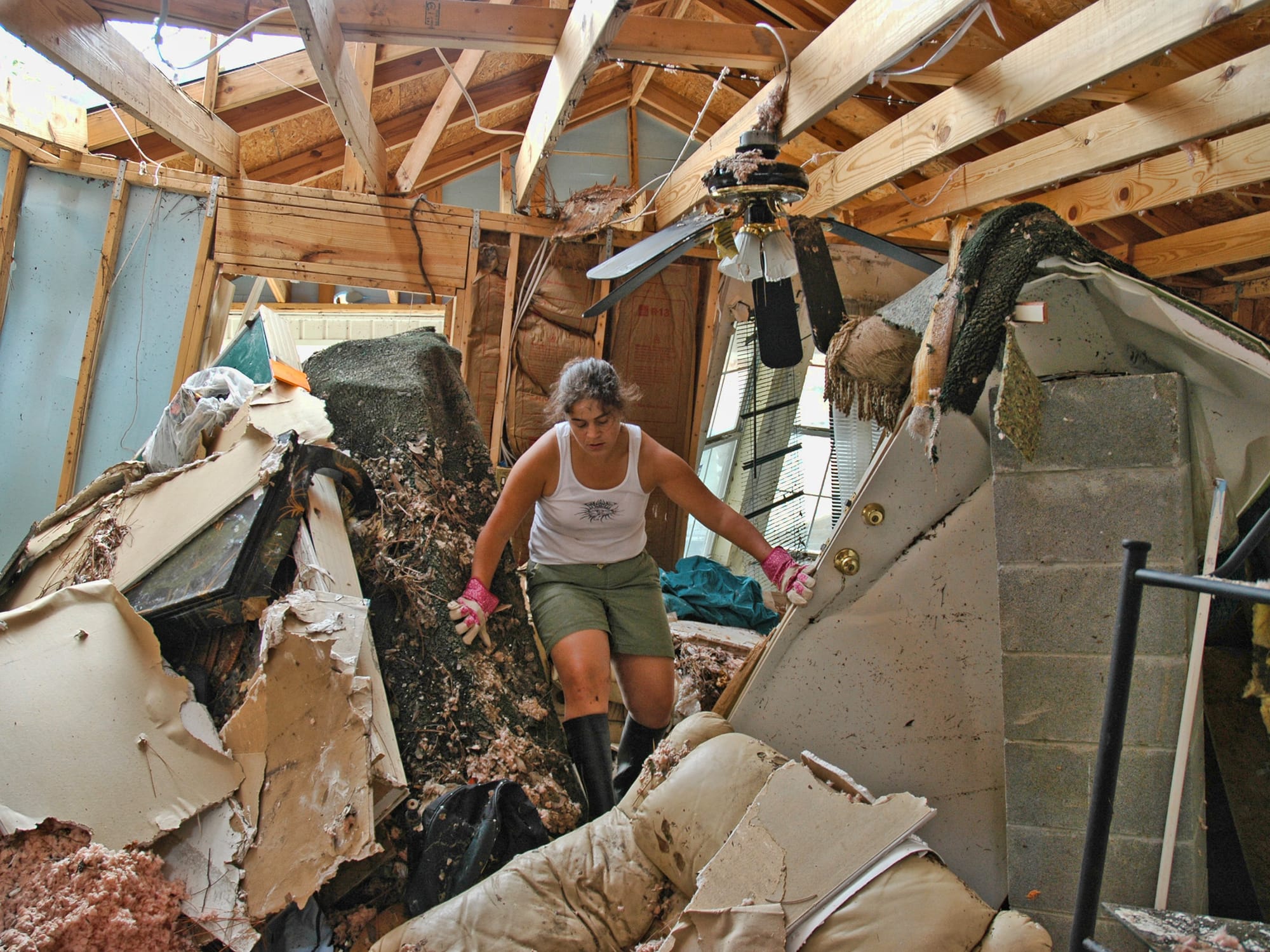
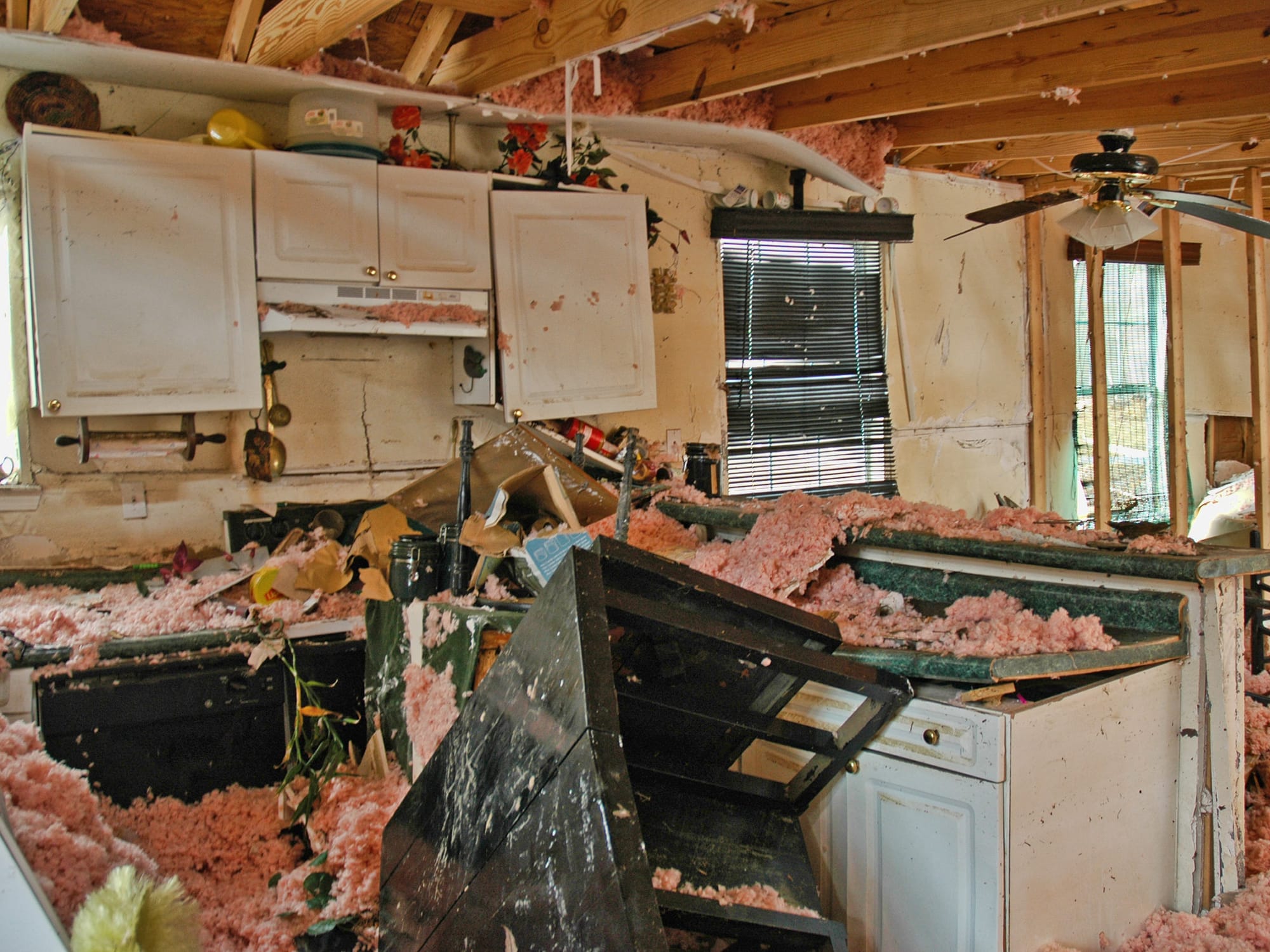
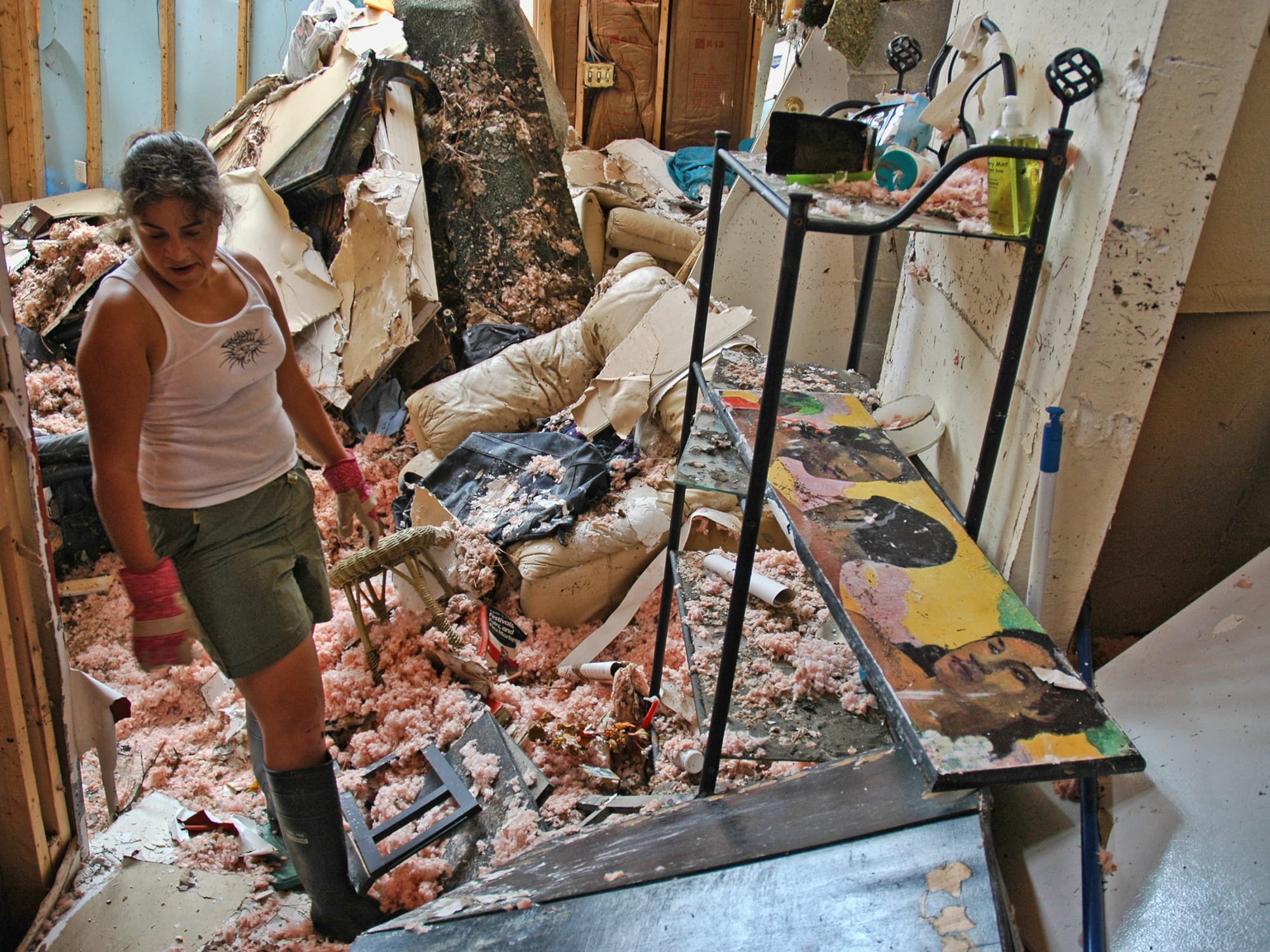
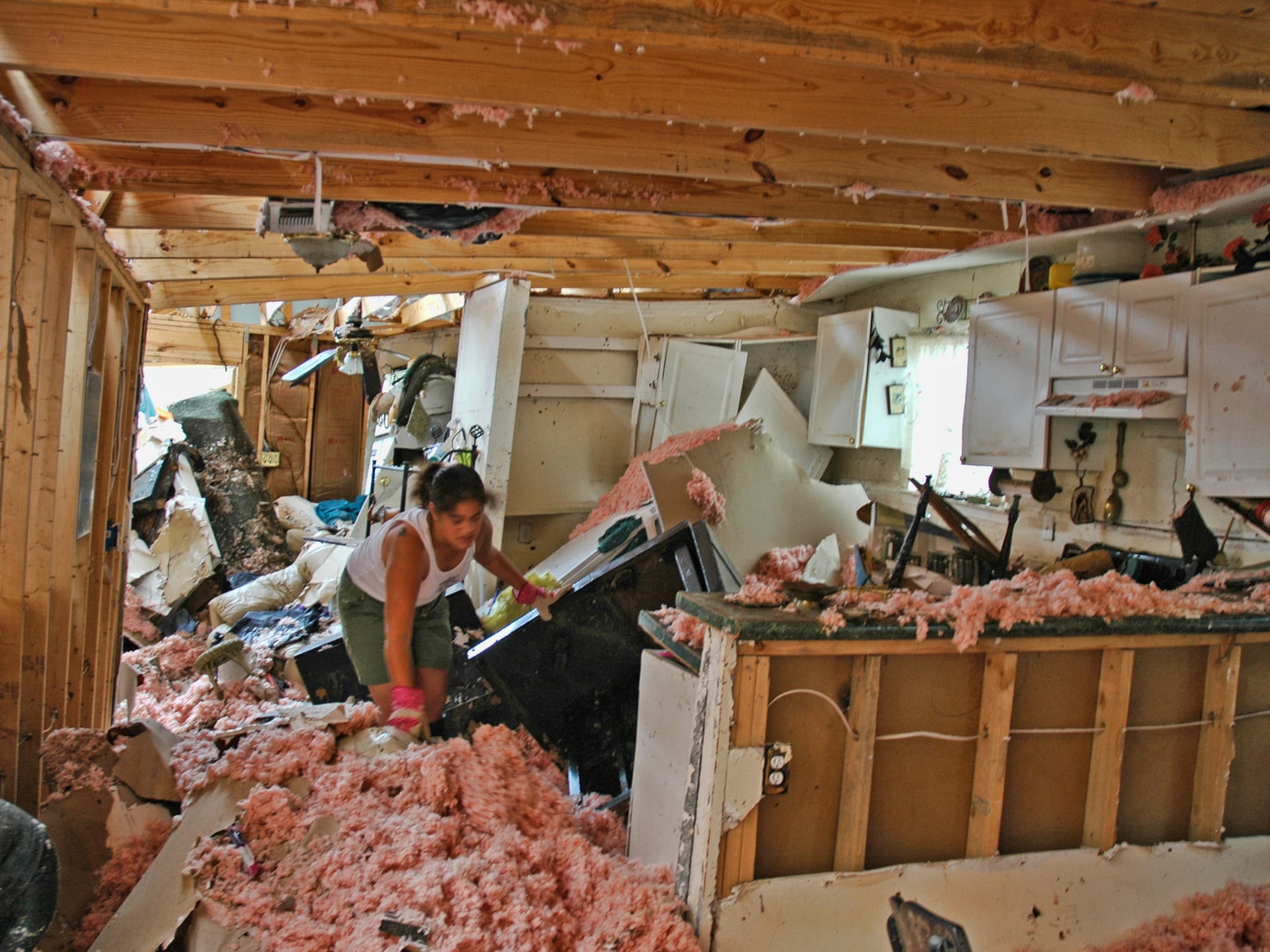
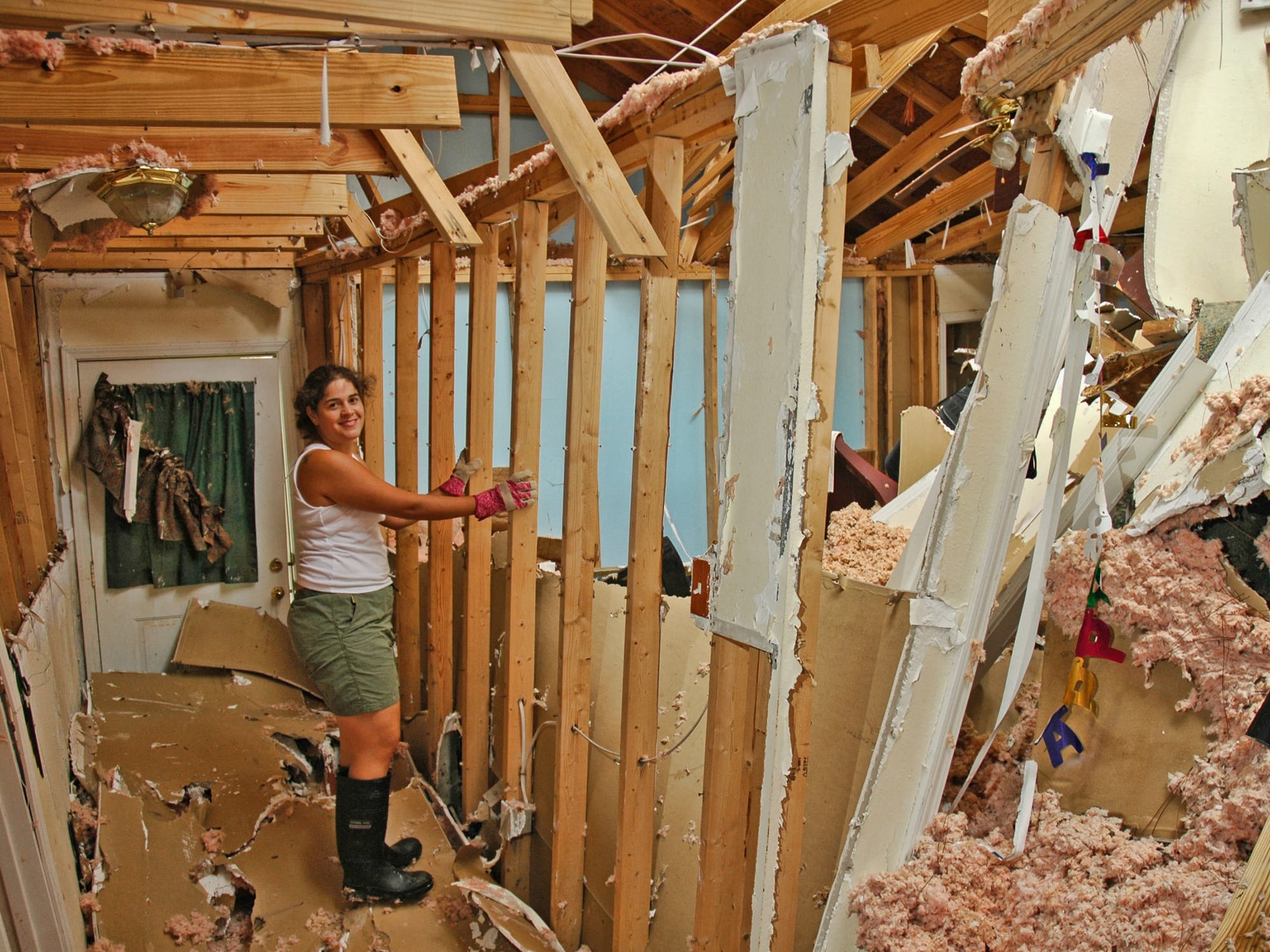
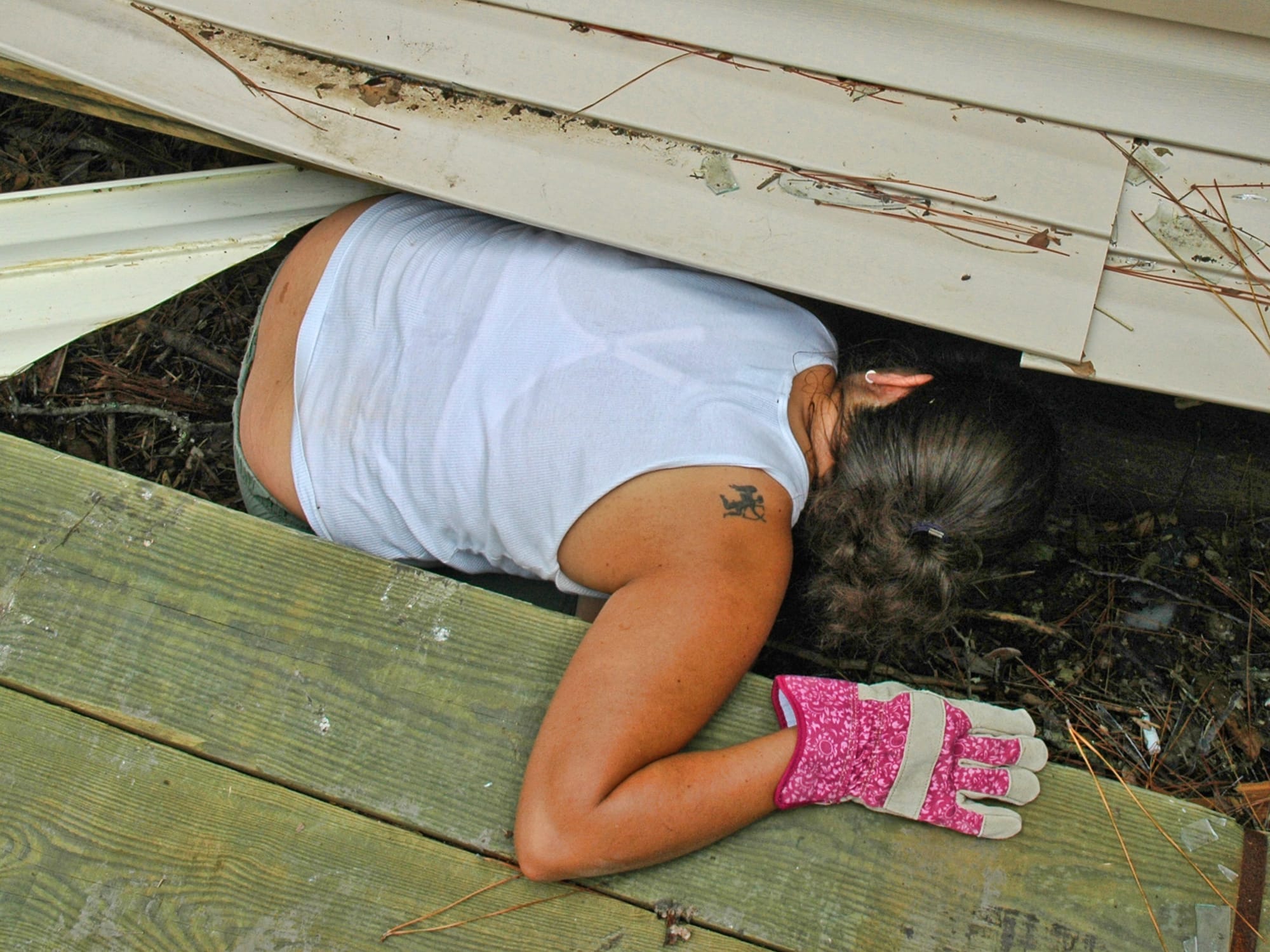
Megan and I returned to Marsha's house to look around one last time before it would be demolished. Yes, it was dangerous to be in those unstable structures, and there was lots of broken glass and other hazards. As Muhammad Ali once said, “He who is not courageous enough to take risks will accomplish nothing in life.”
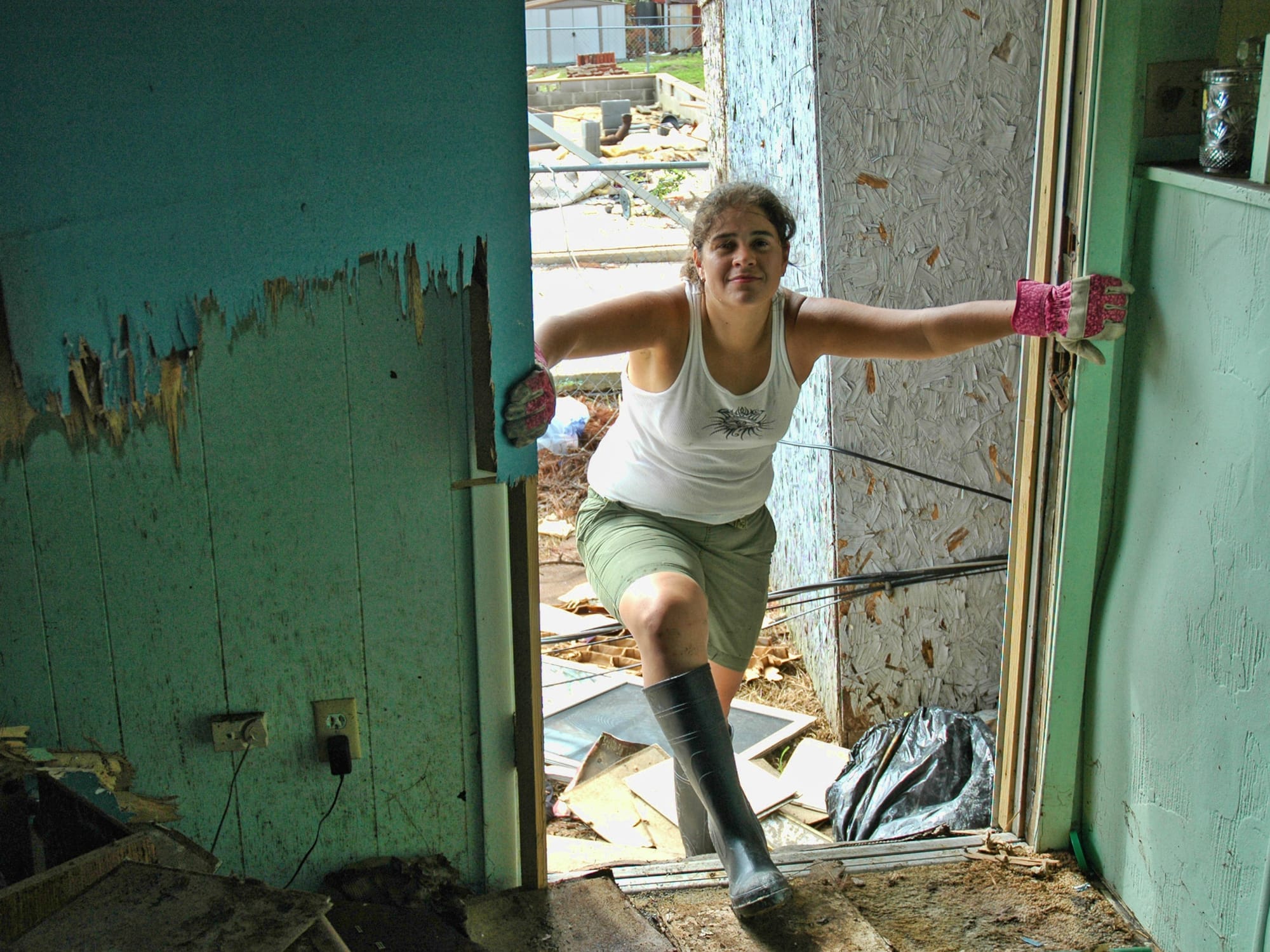
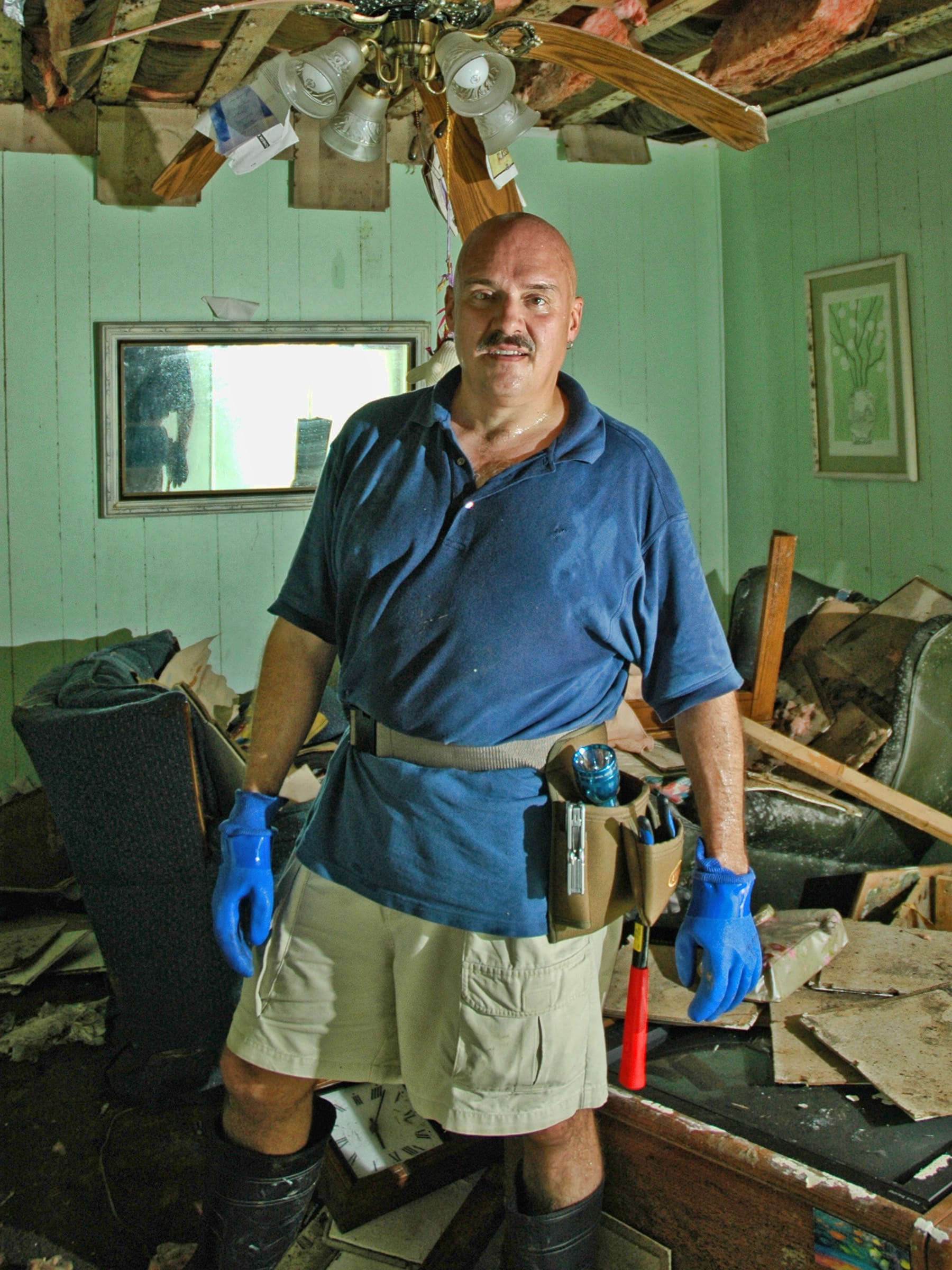
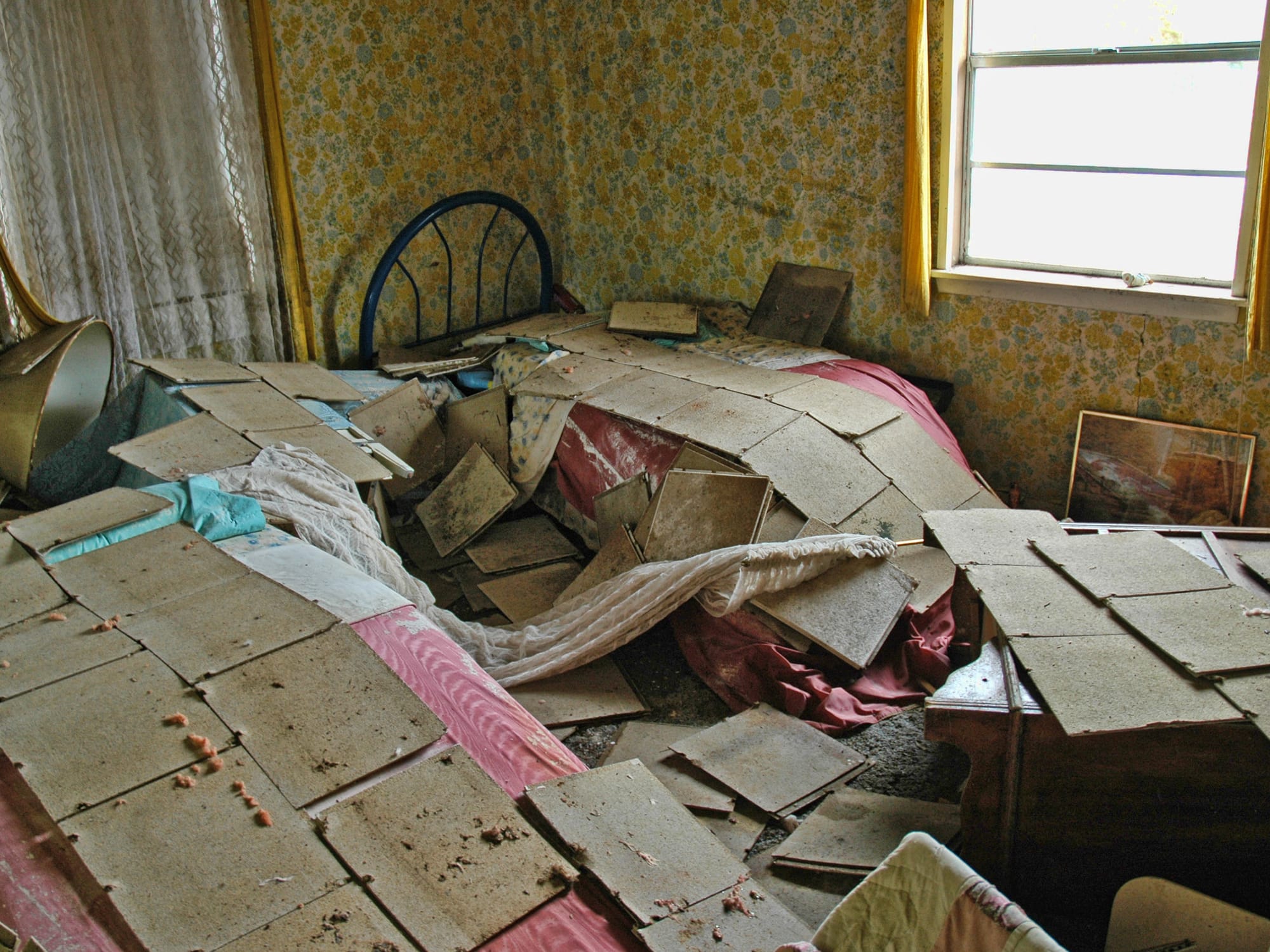
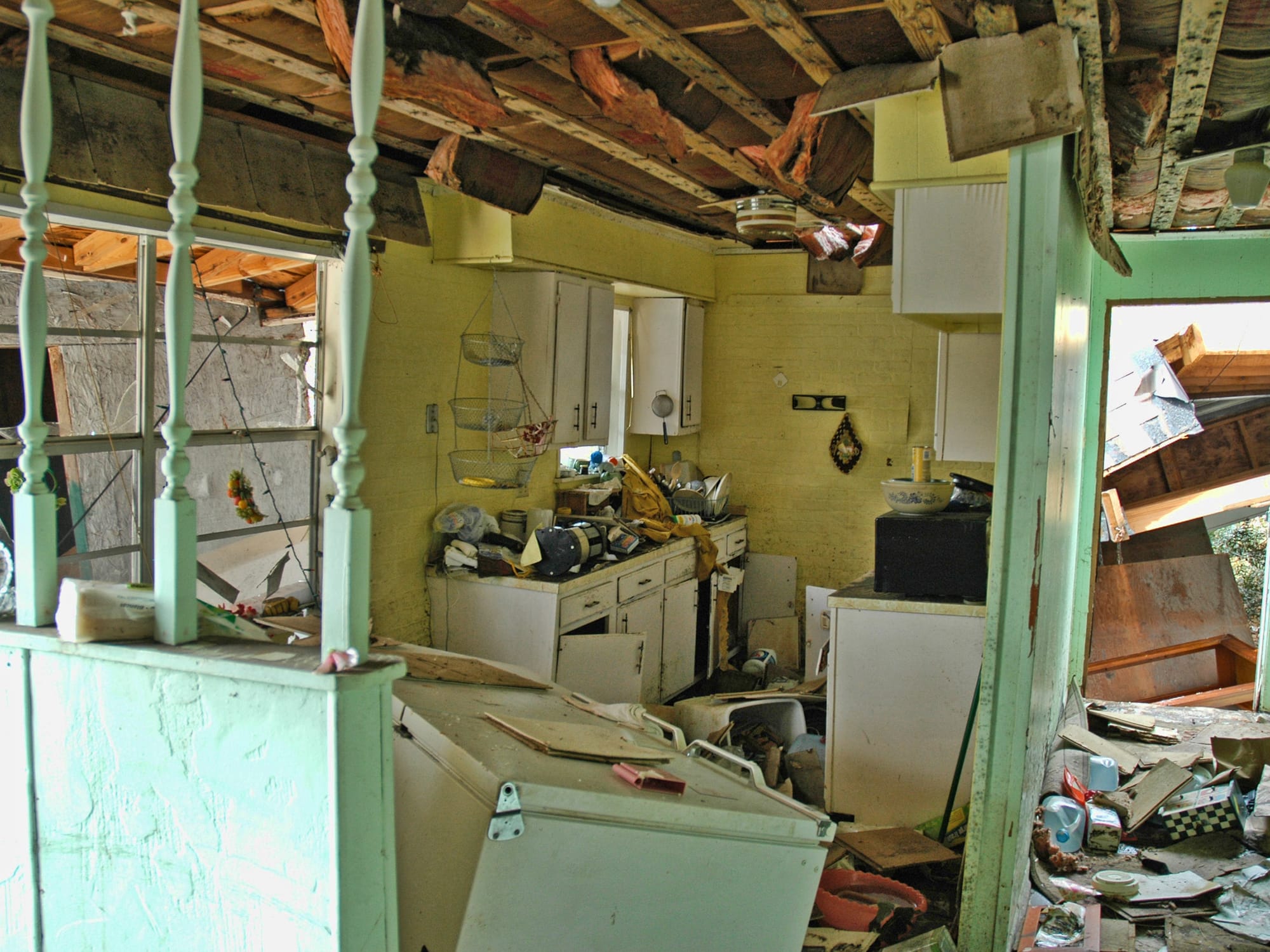
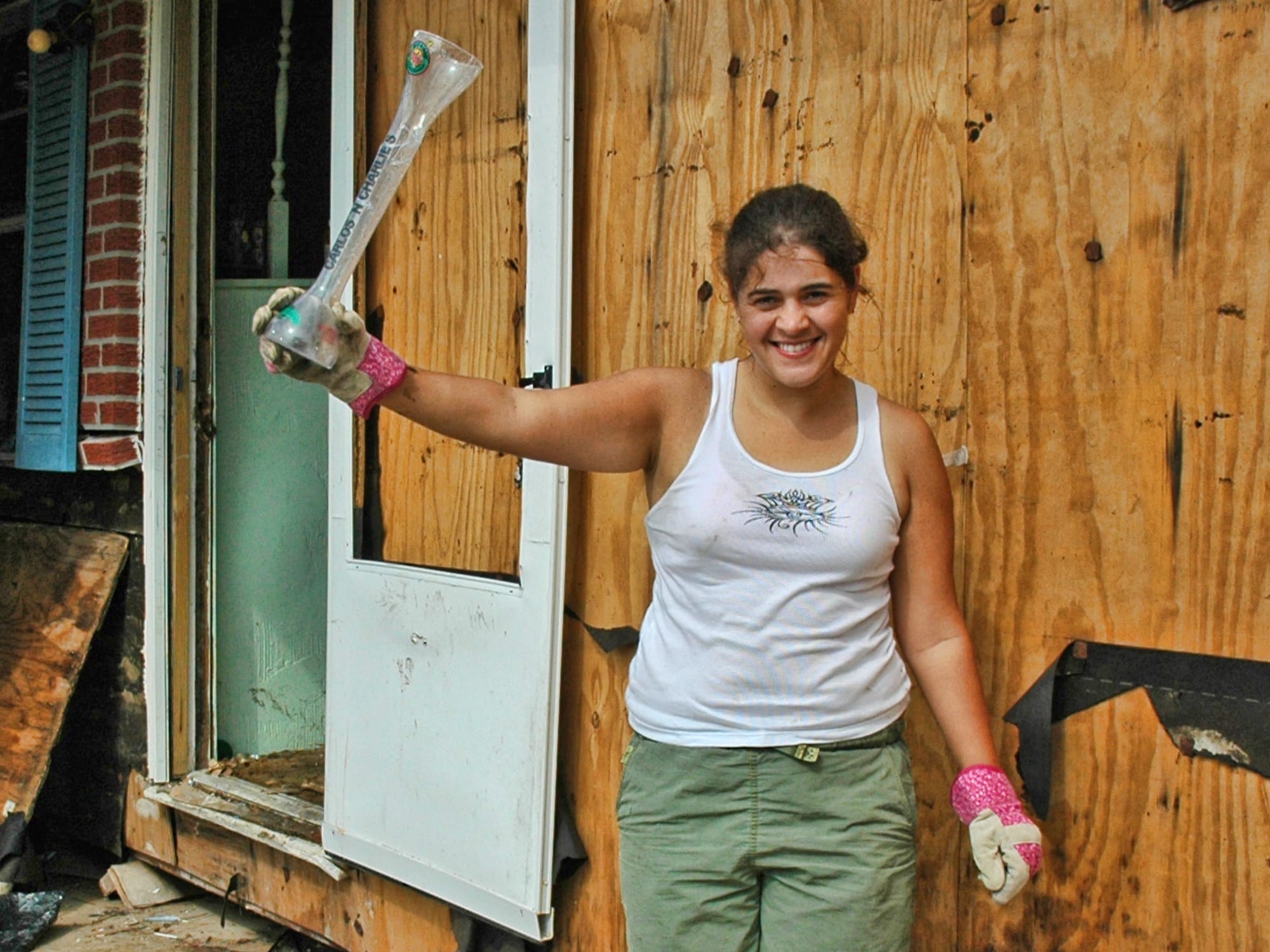
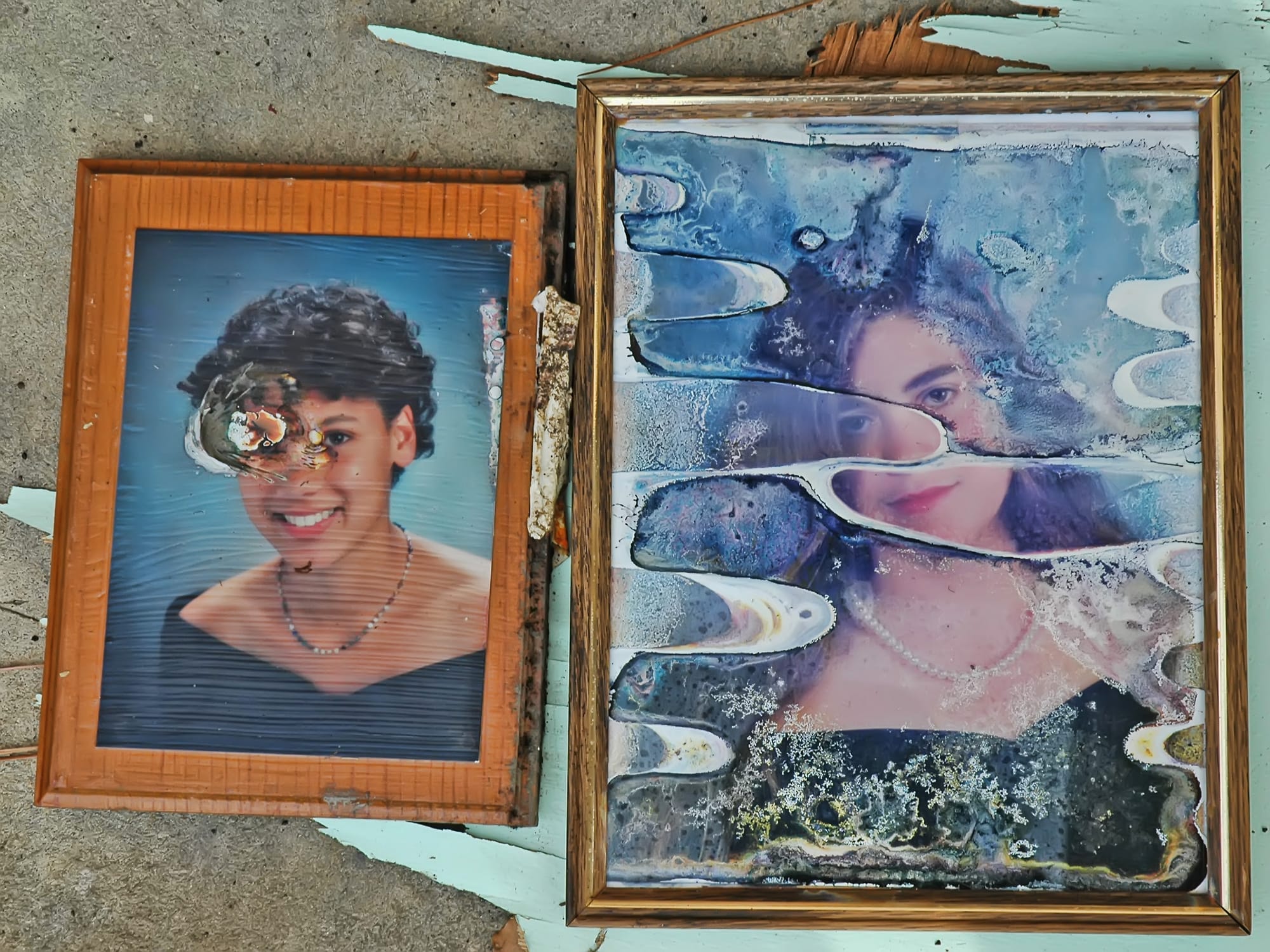
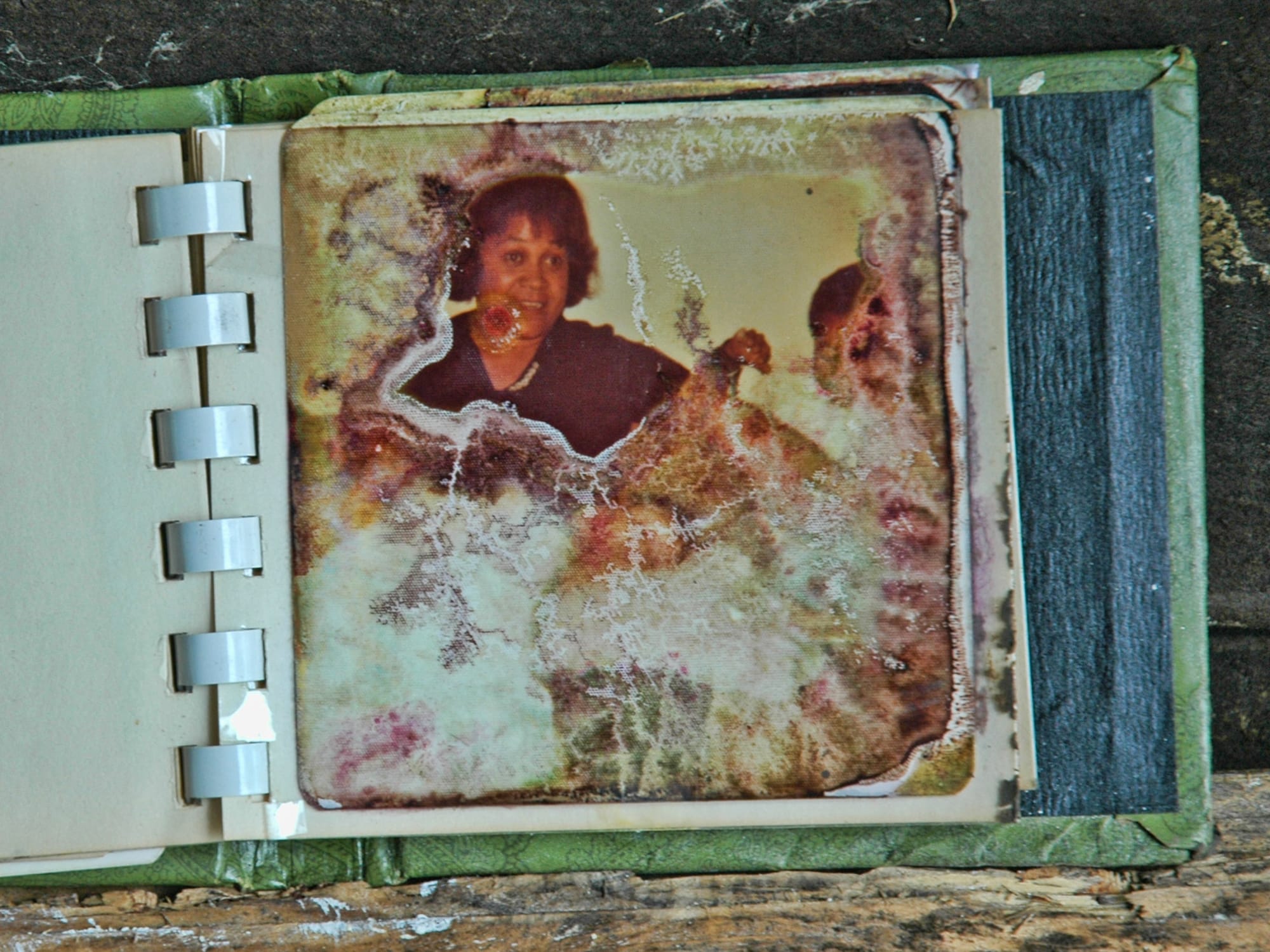
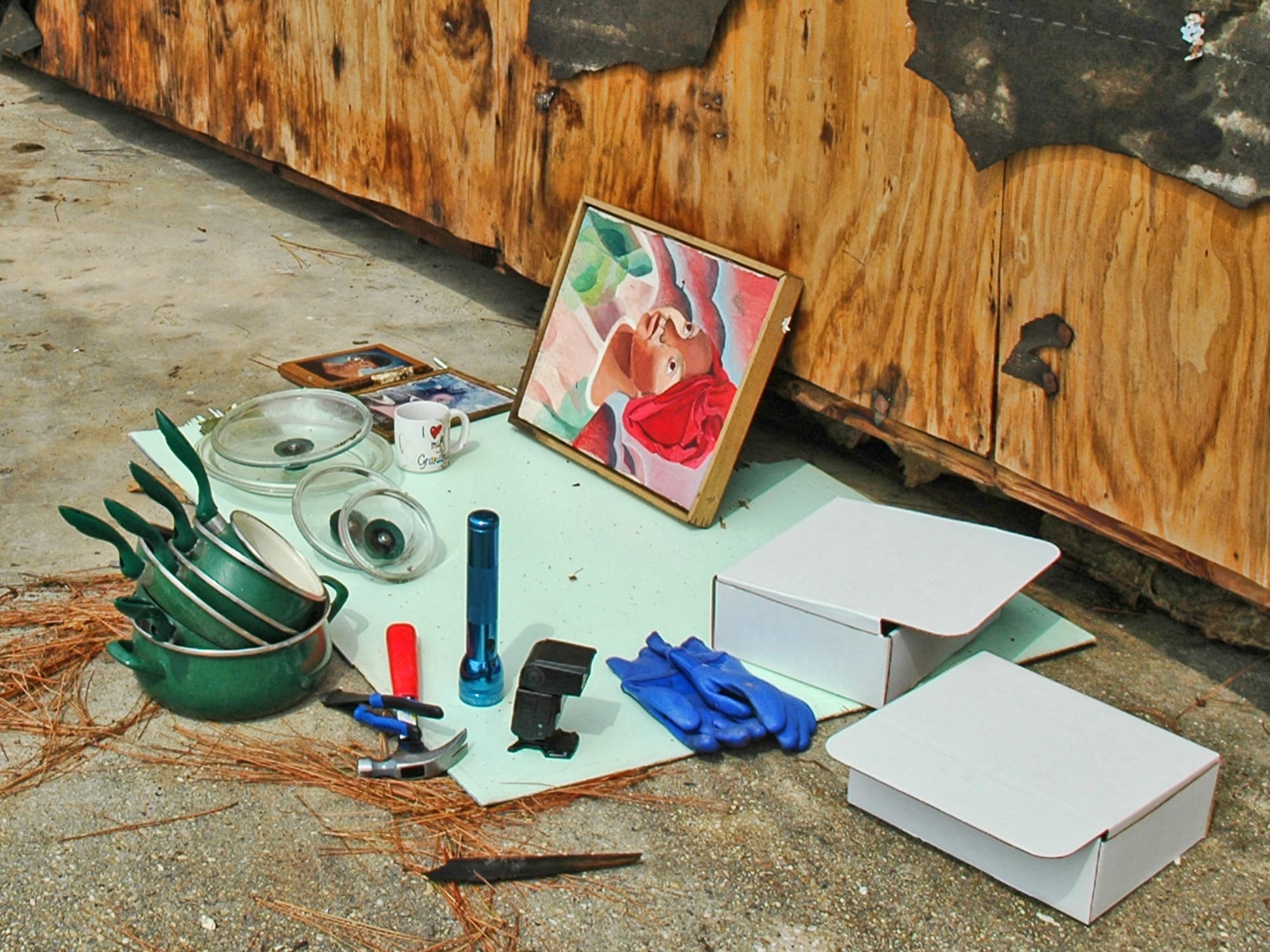
We also returned to Granny's house one last time, and recovered her pots and pans and a couple of paintings which now hang in our living room.
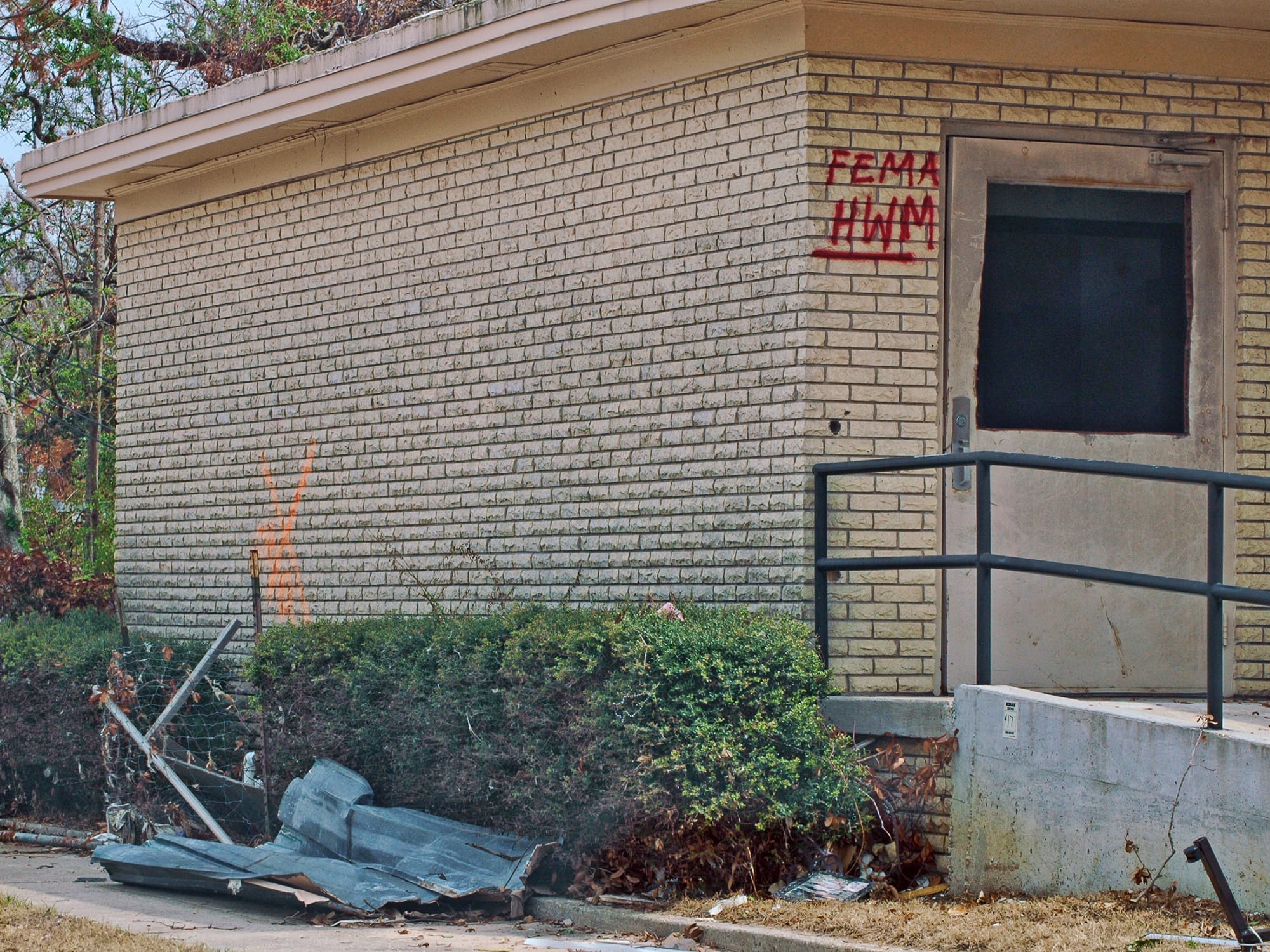
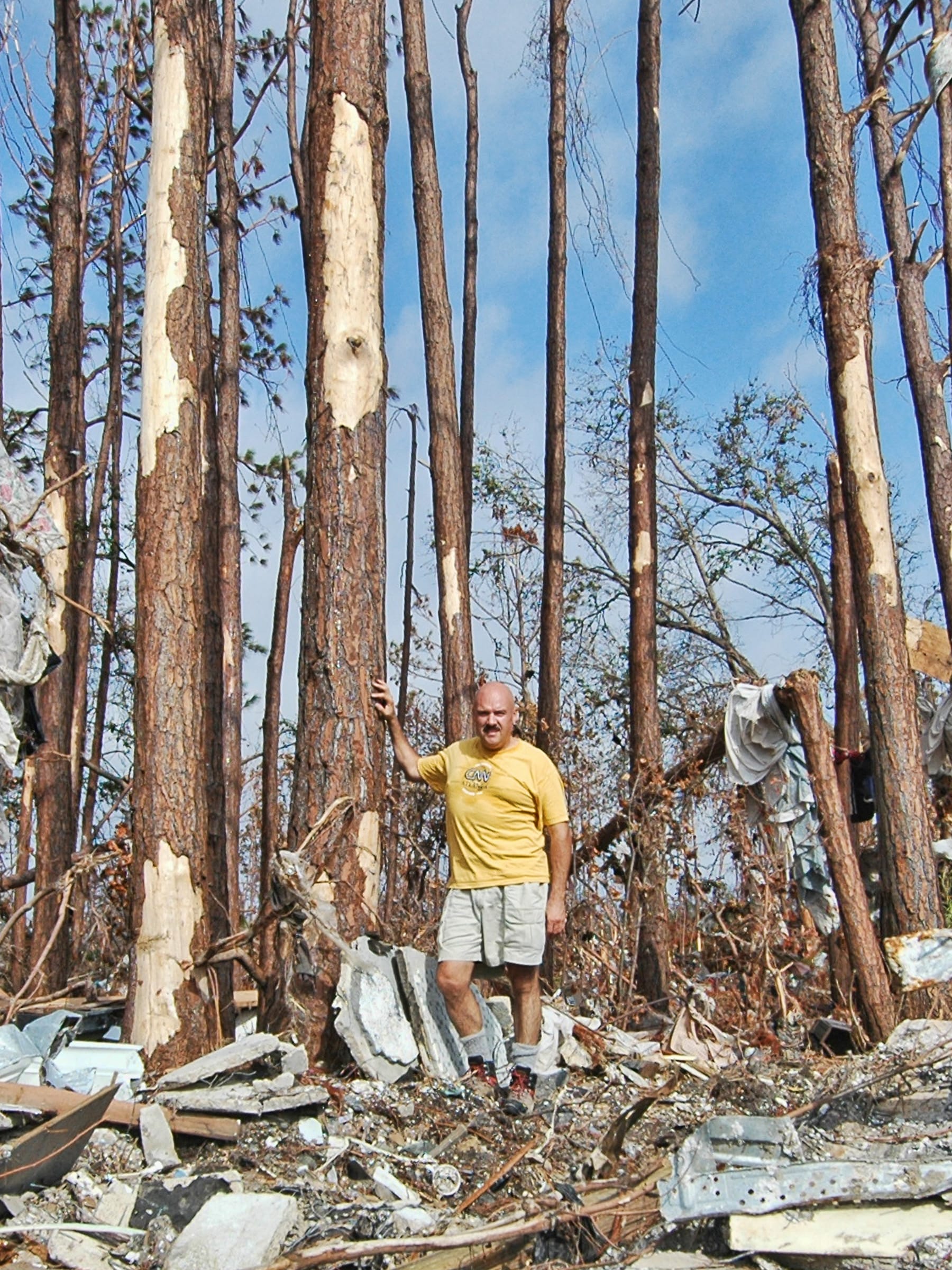
A couple of examples of the height of the storm surge around Pass Christian.
The storm surge crested at 24 feet in Pass Christian, but both of the photos above were taken inland from the shore. Left: the FEMA high-water mark on the Miramar Nursing Home in Pass Christian, where Aunt Hazel lived. (She had been evacuated to Florida, although it took a while for us to find out where she went because the residents were divided up among several locations.) Right: me standing by some trees about 330 yards inland in east Pass Christian. Debris riding on the storm surge had rubbed the bark off the trees well above my head.
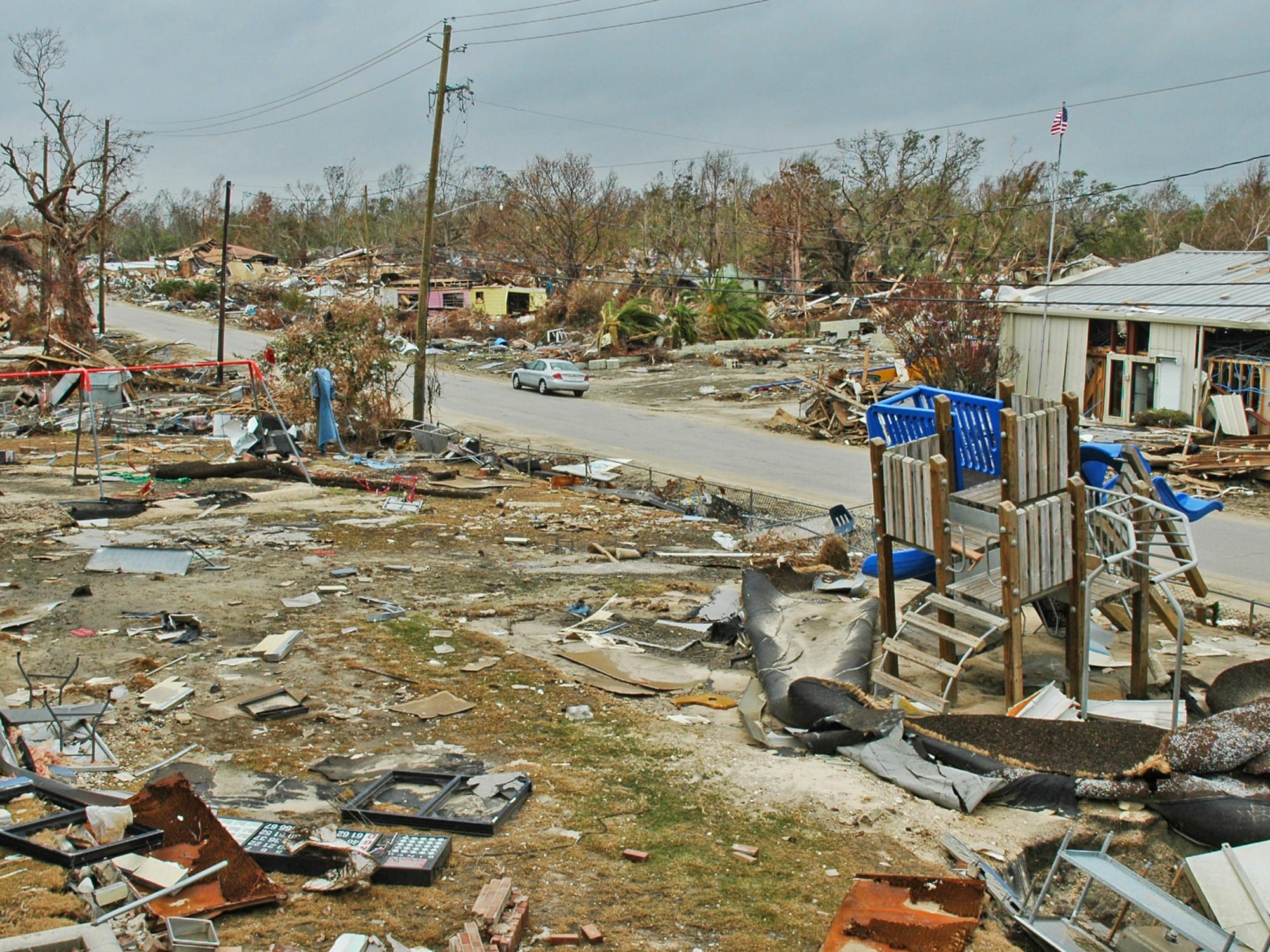
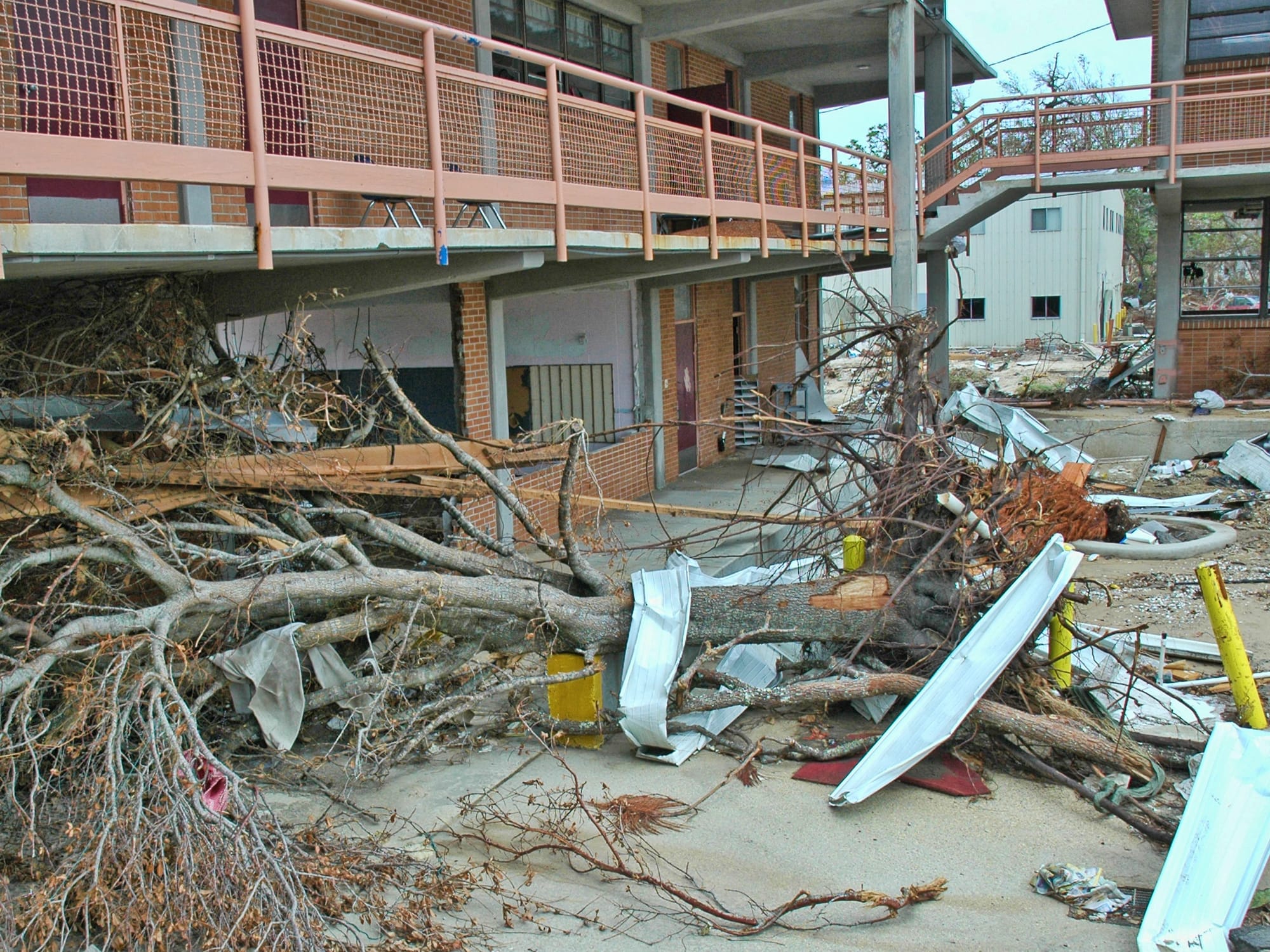
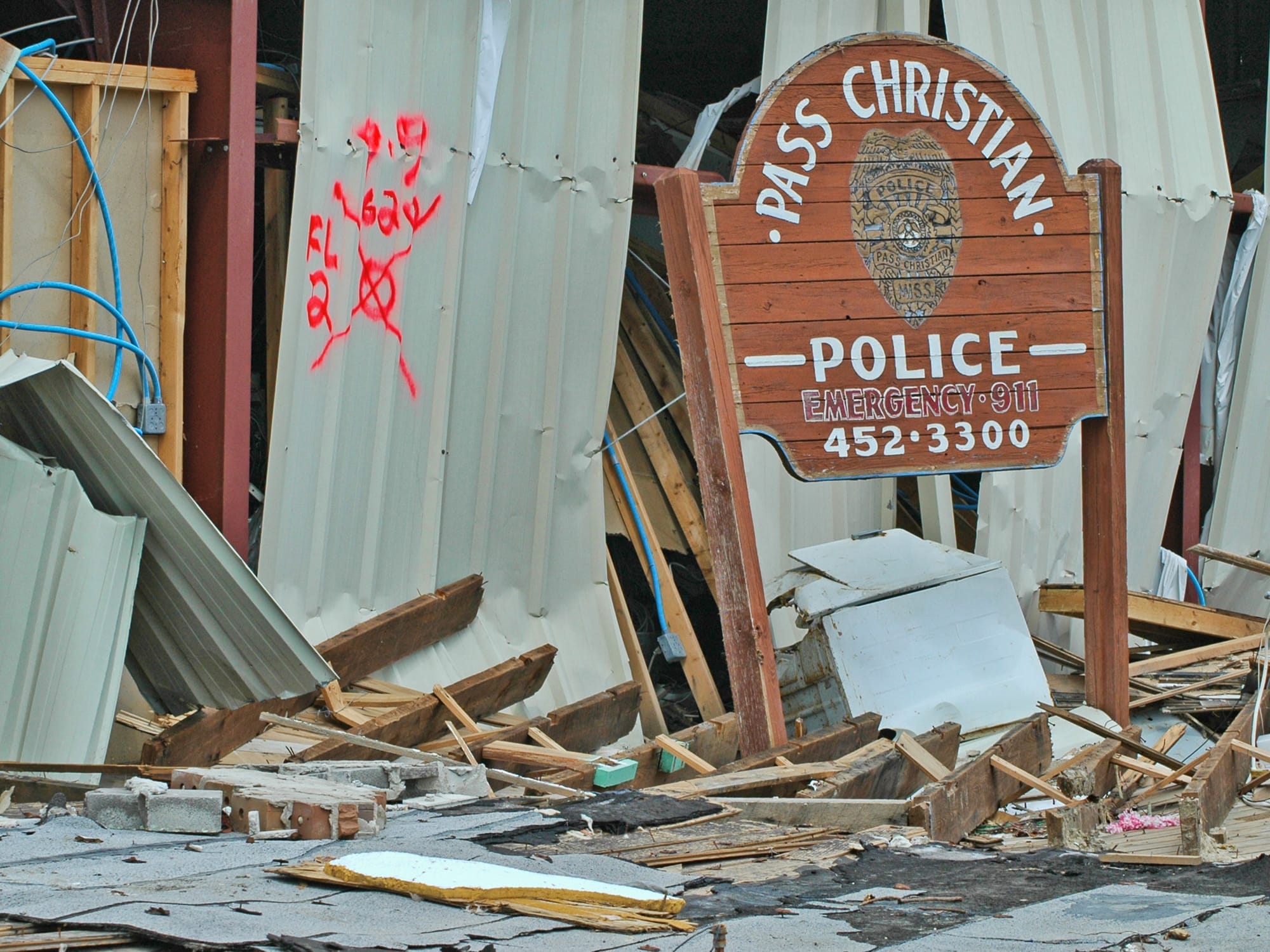
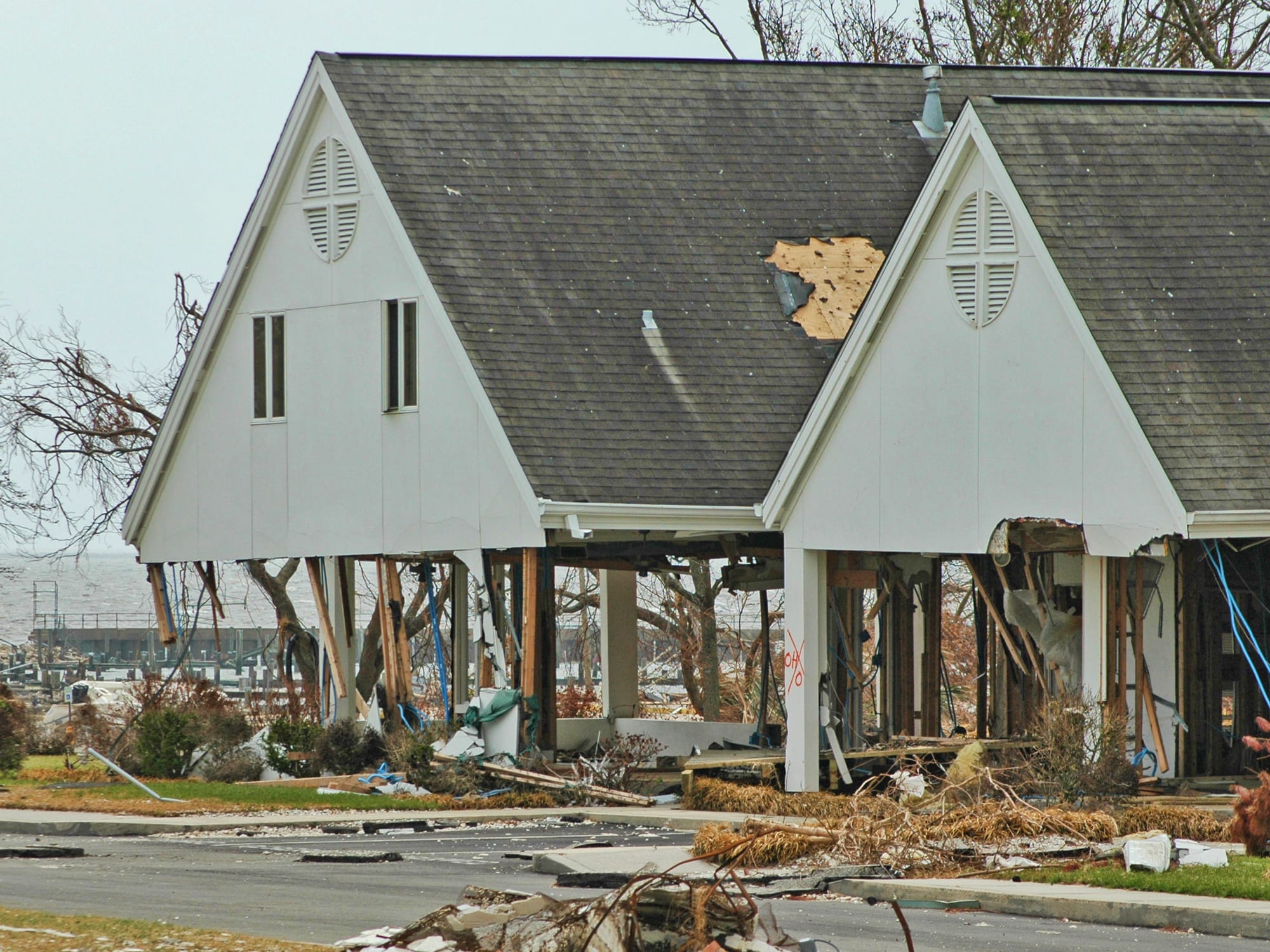
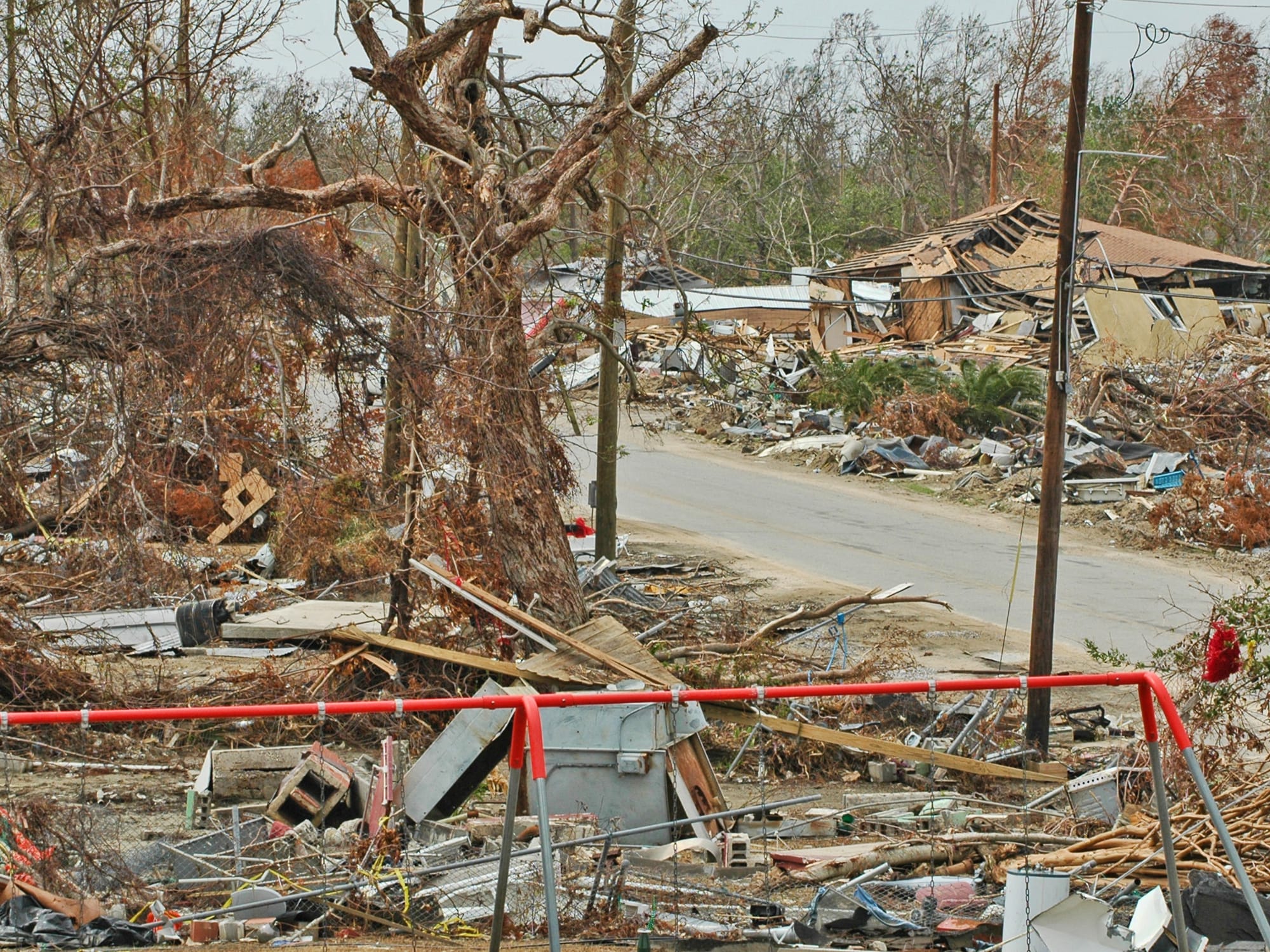
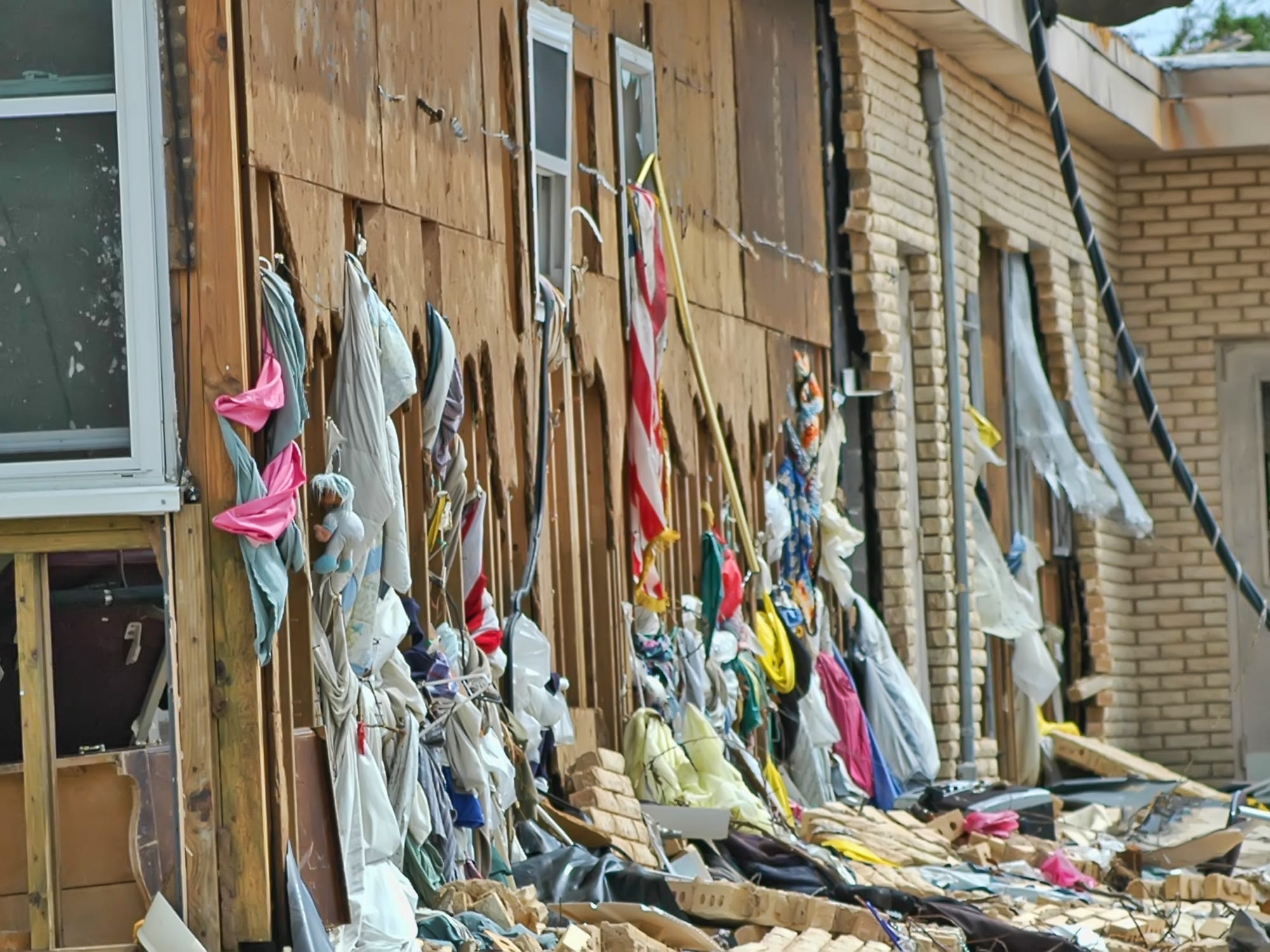
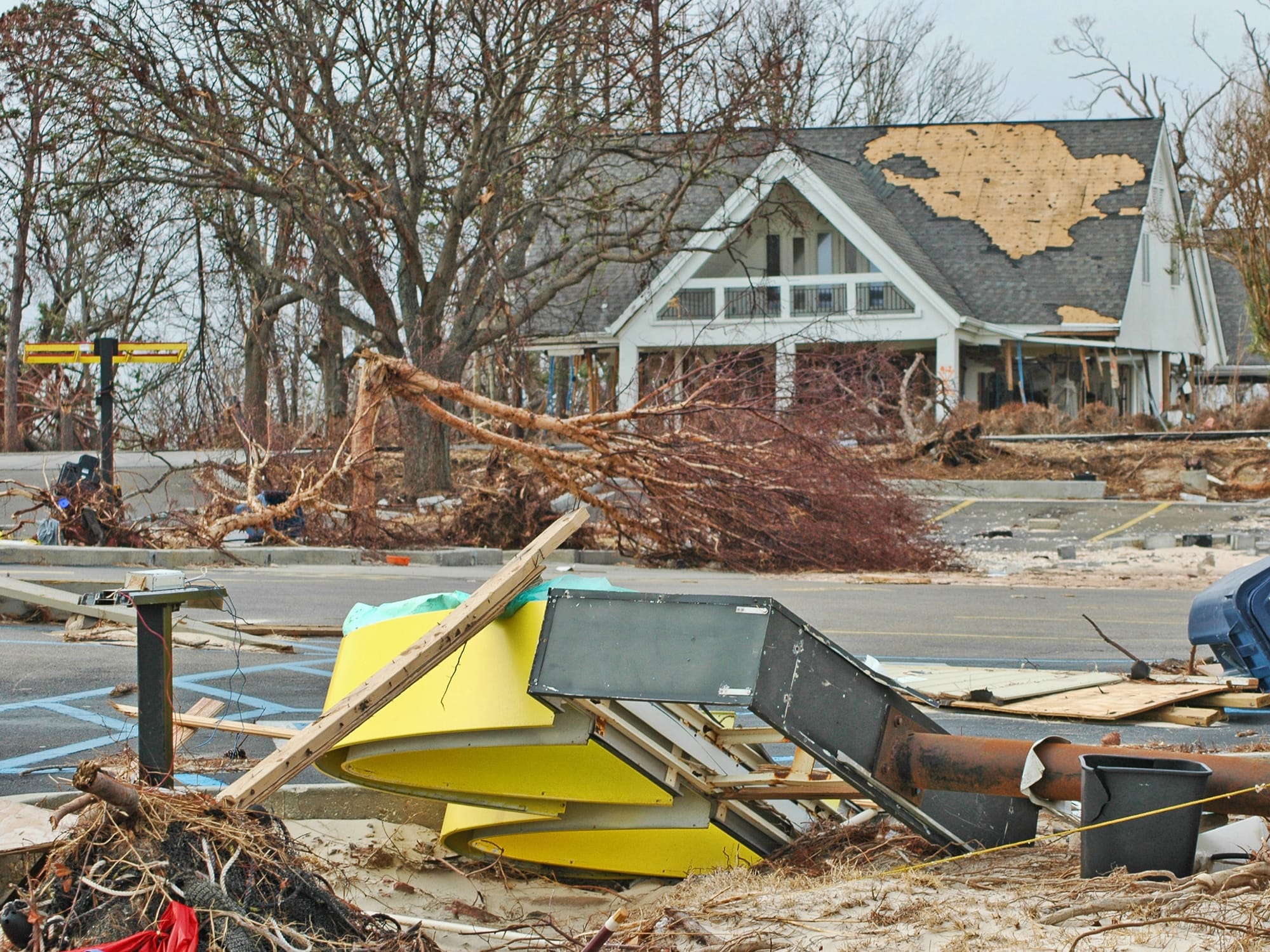
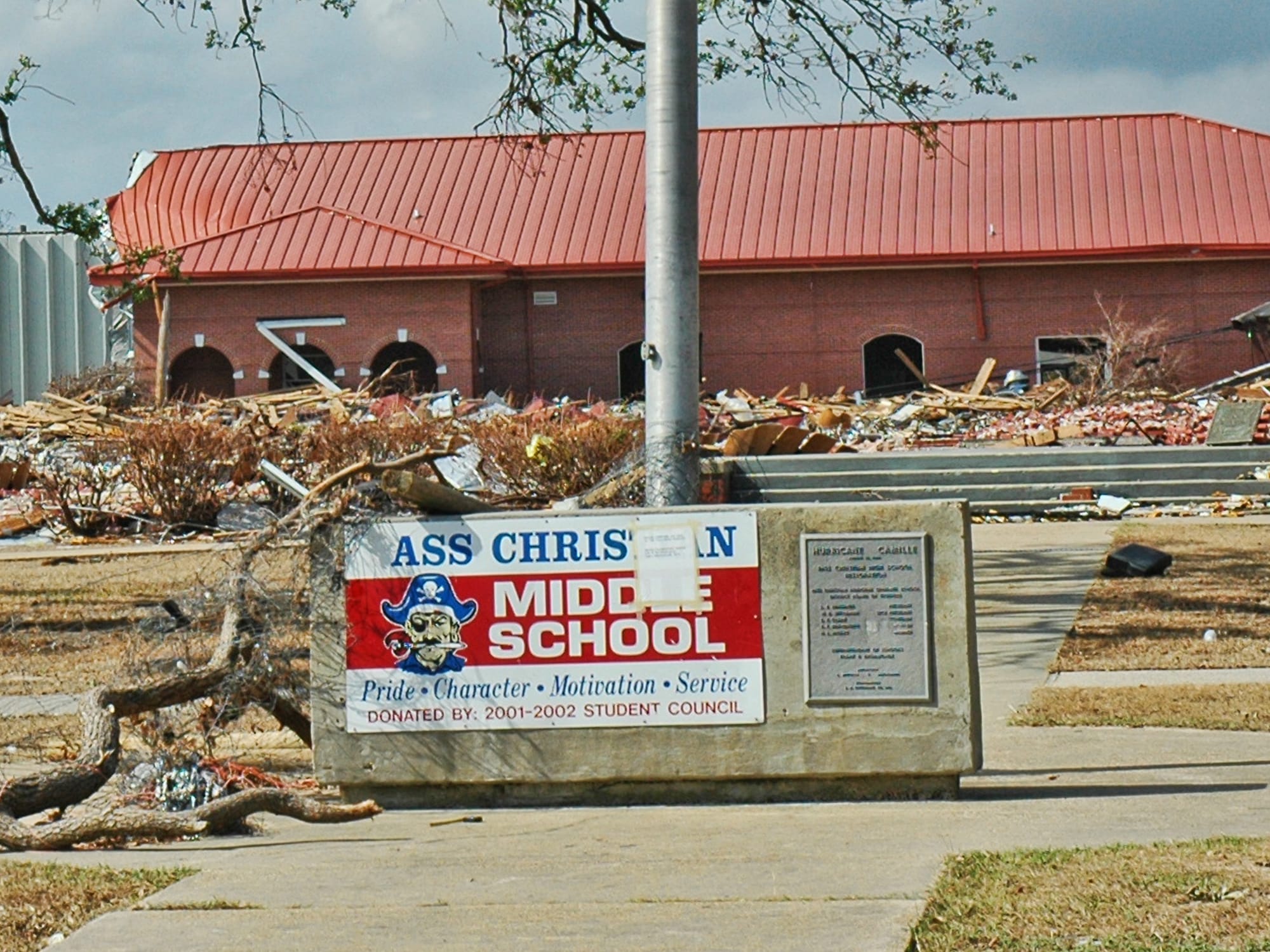
A few photos from a walk through downtown Pass Christian. Just after the hurricane, there had been quite a few people in this area: rescue workers, homeowners, business owners, the press, and others. But by late September, there was nobody on the street most of the time.

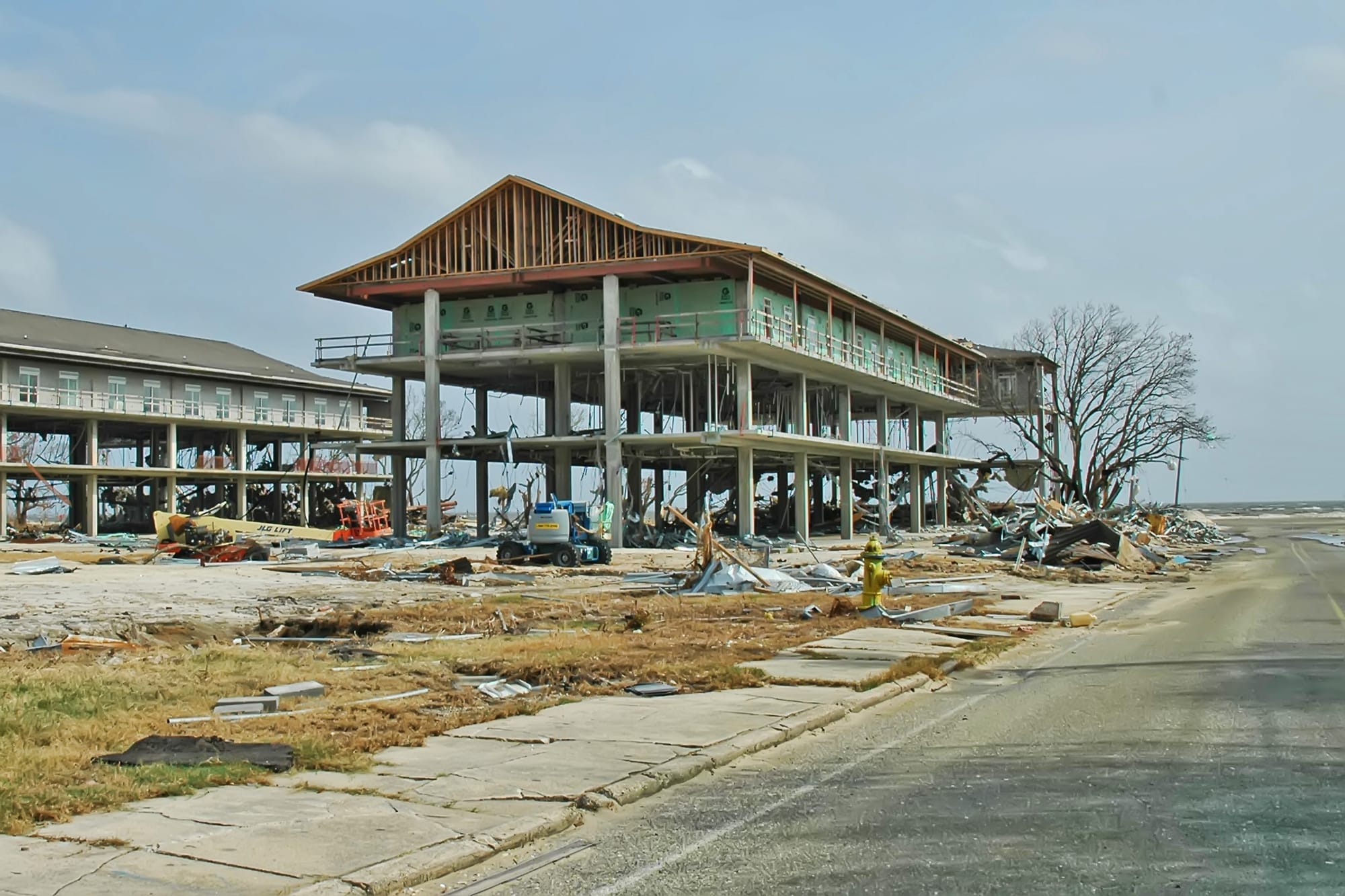
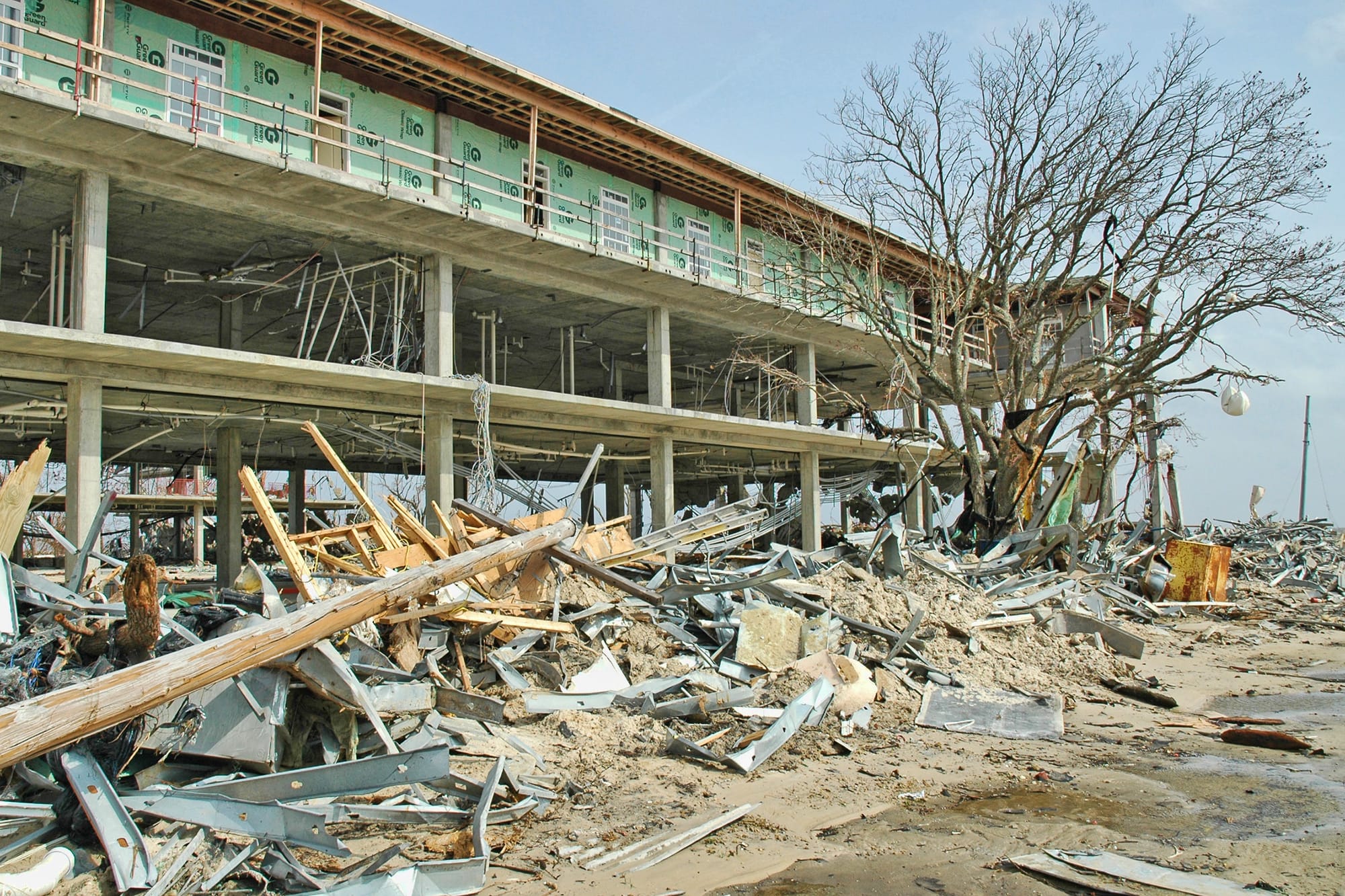
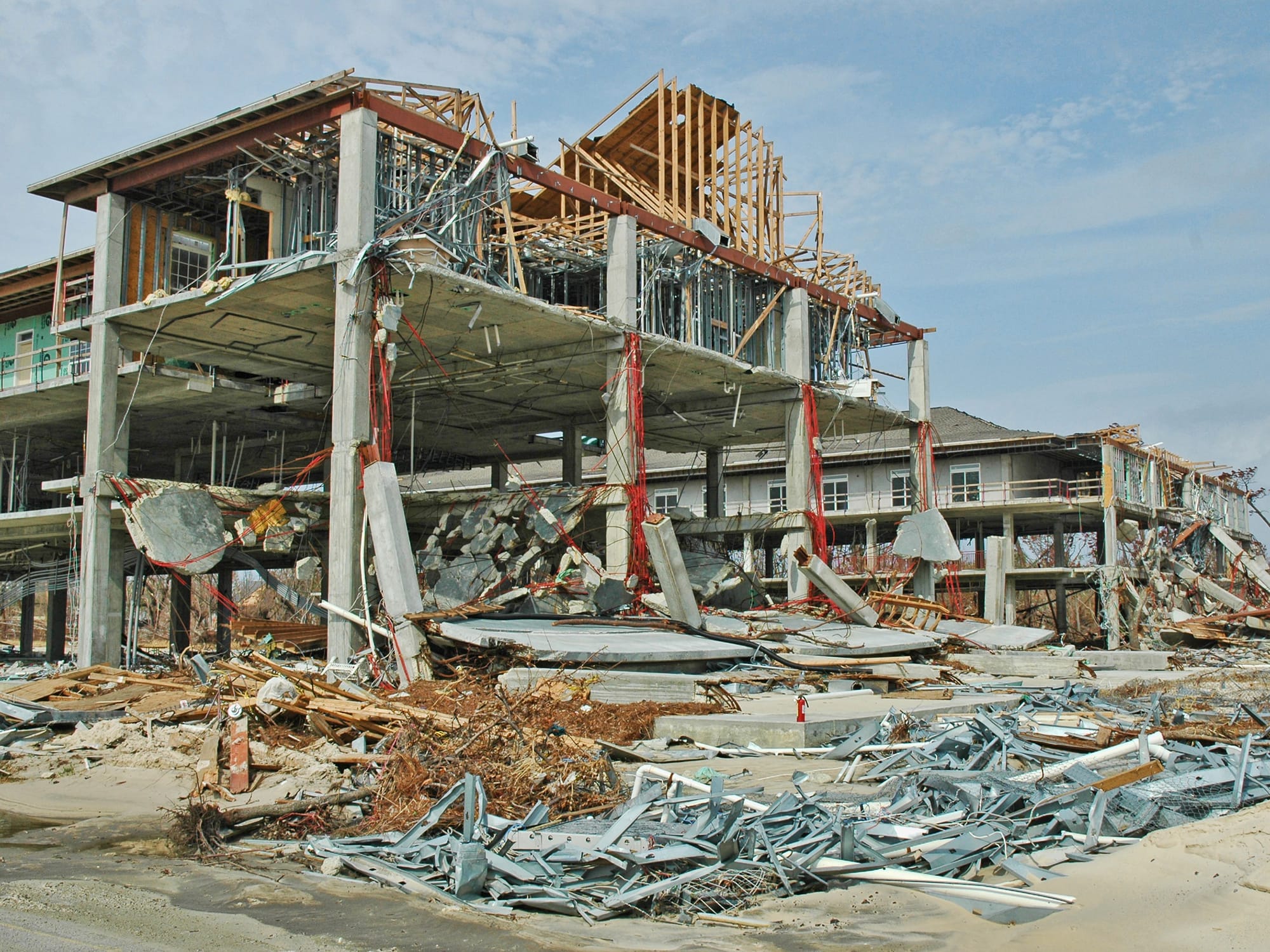
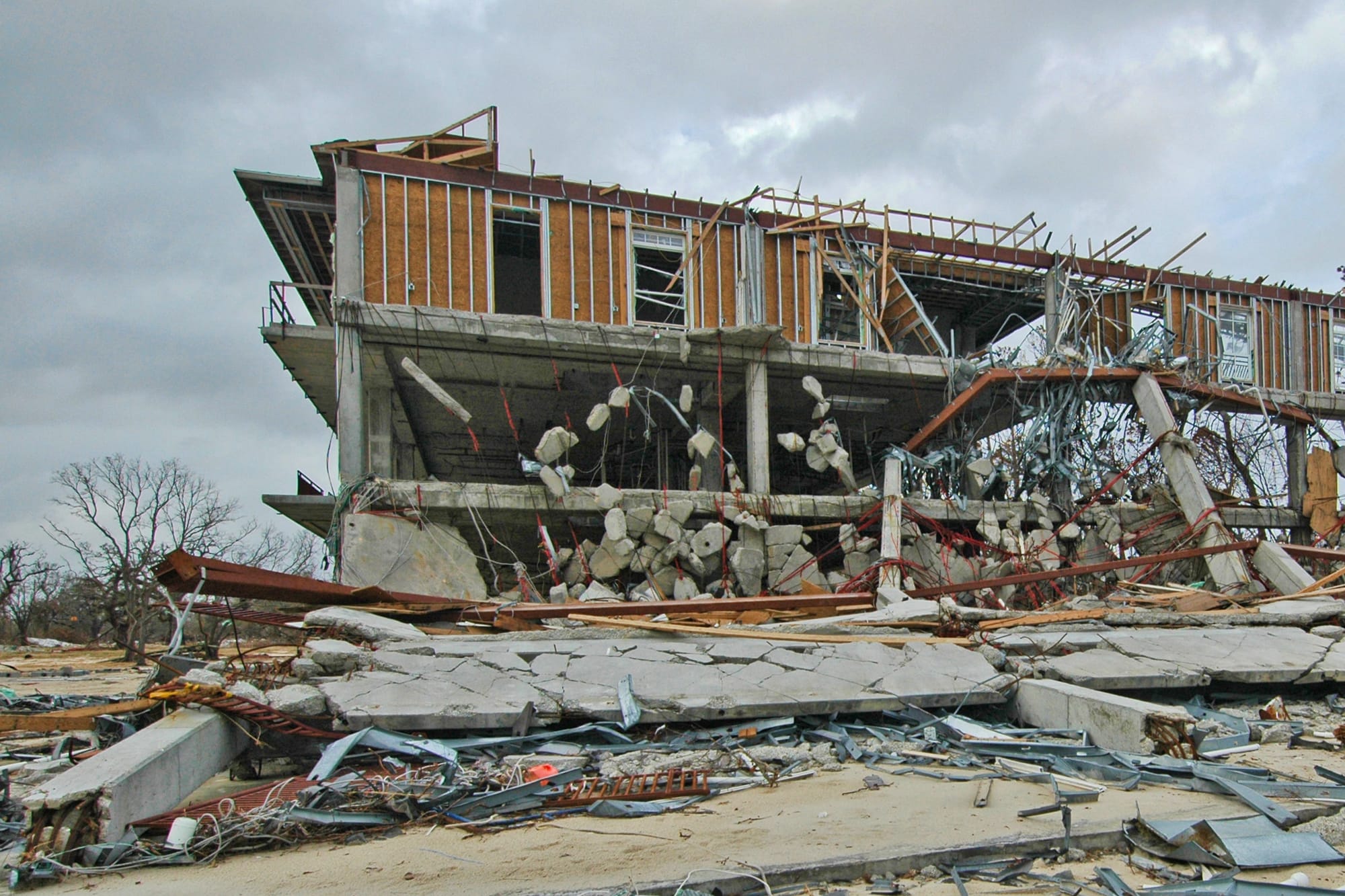
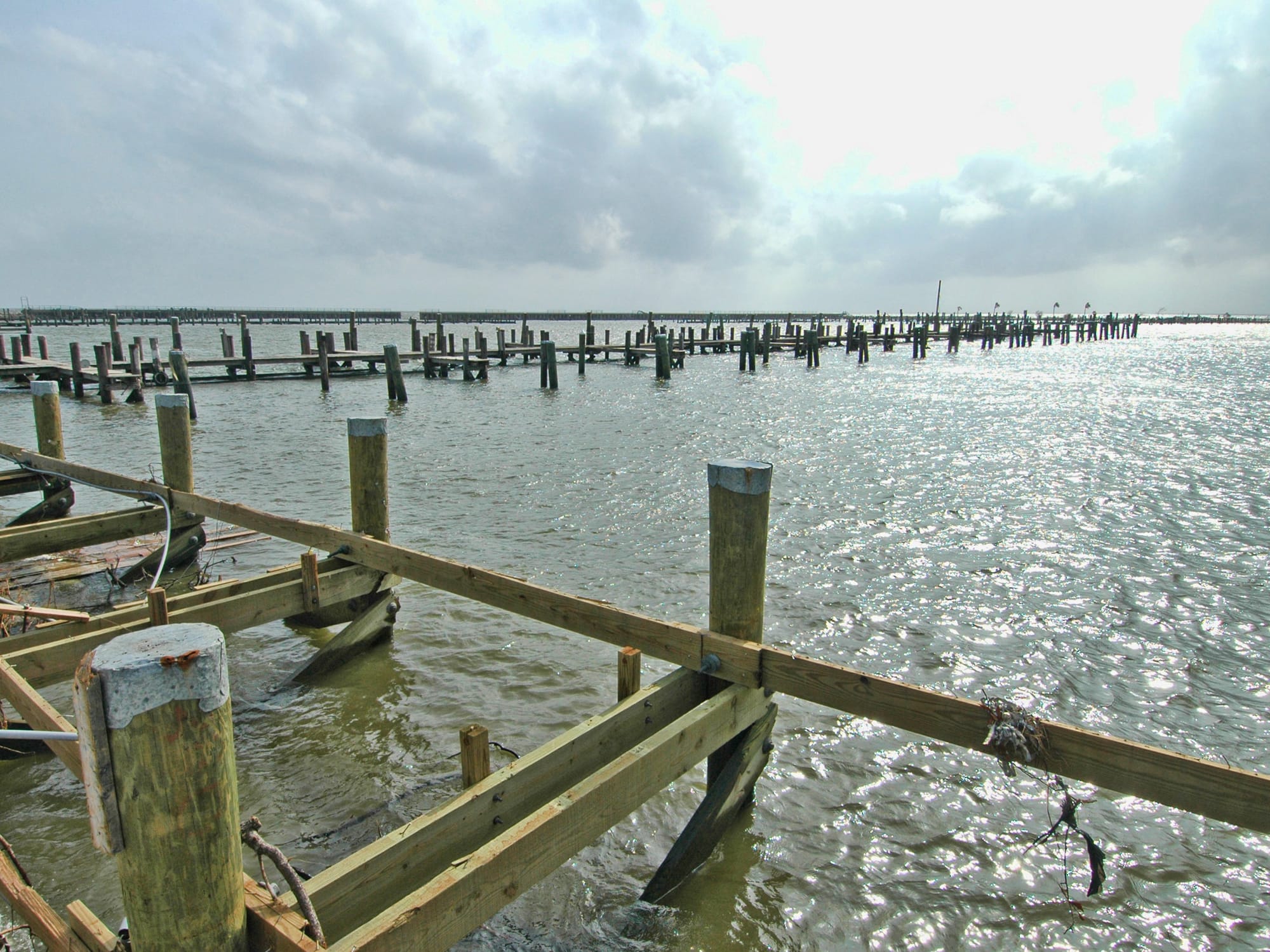
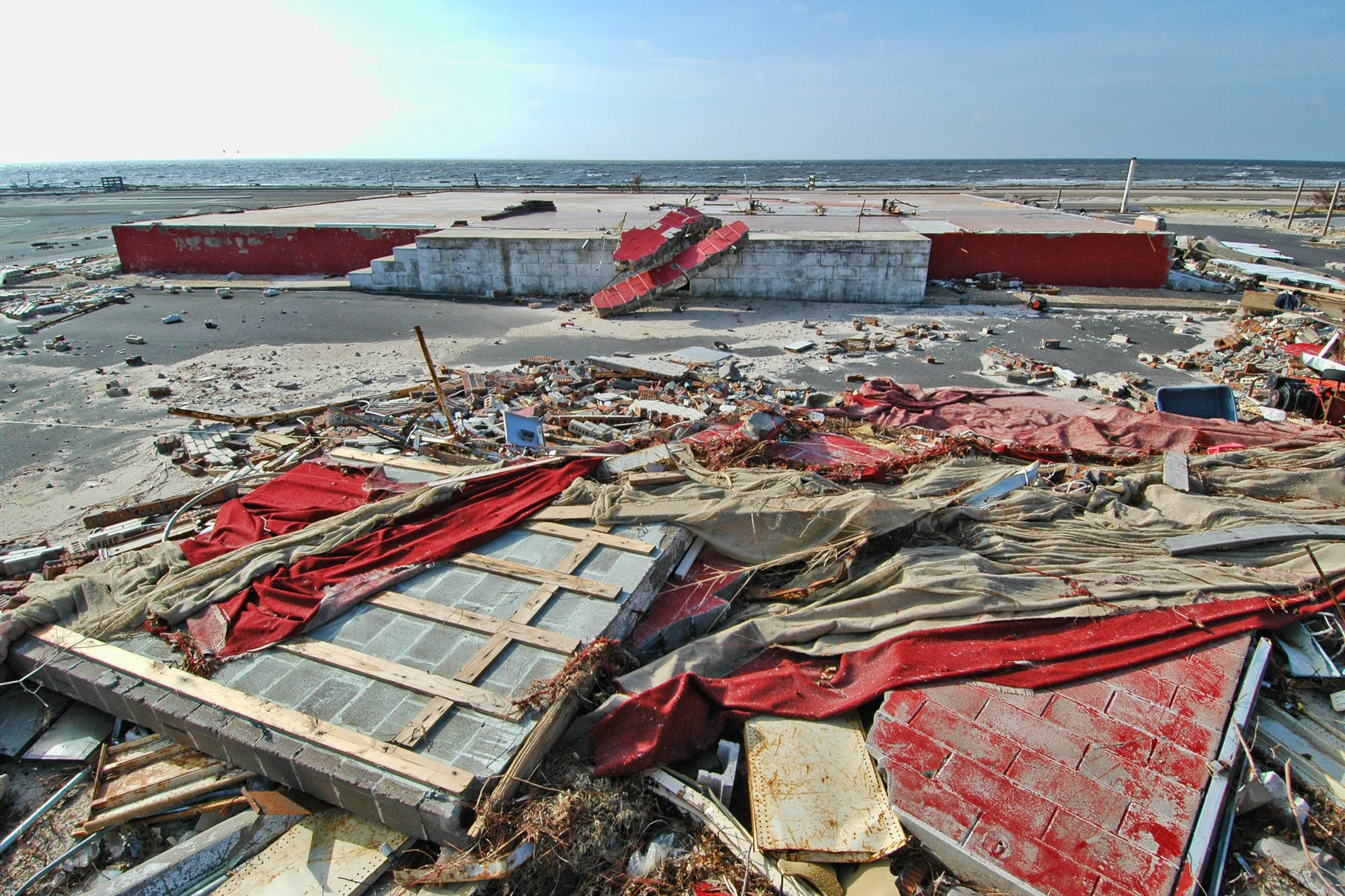
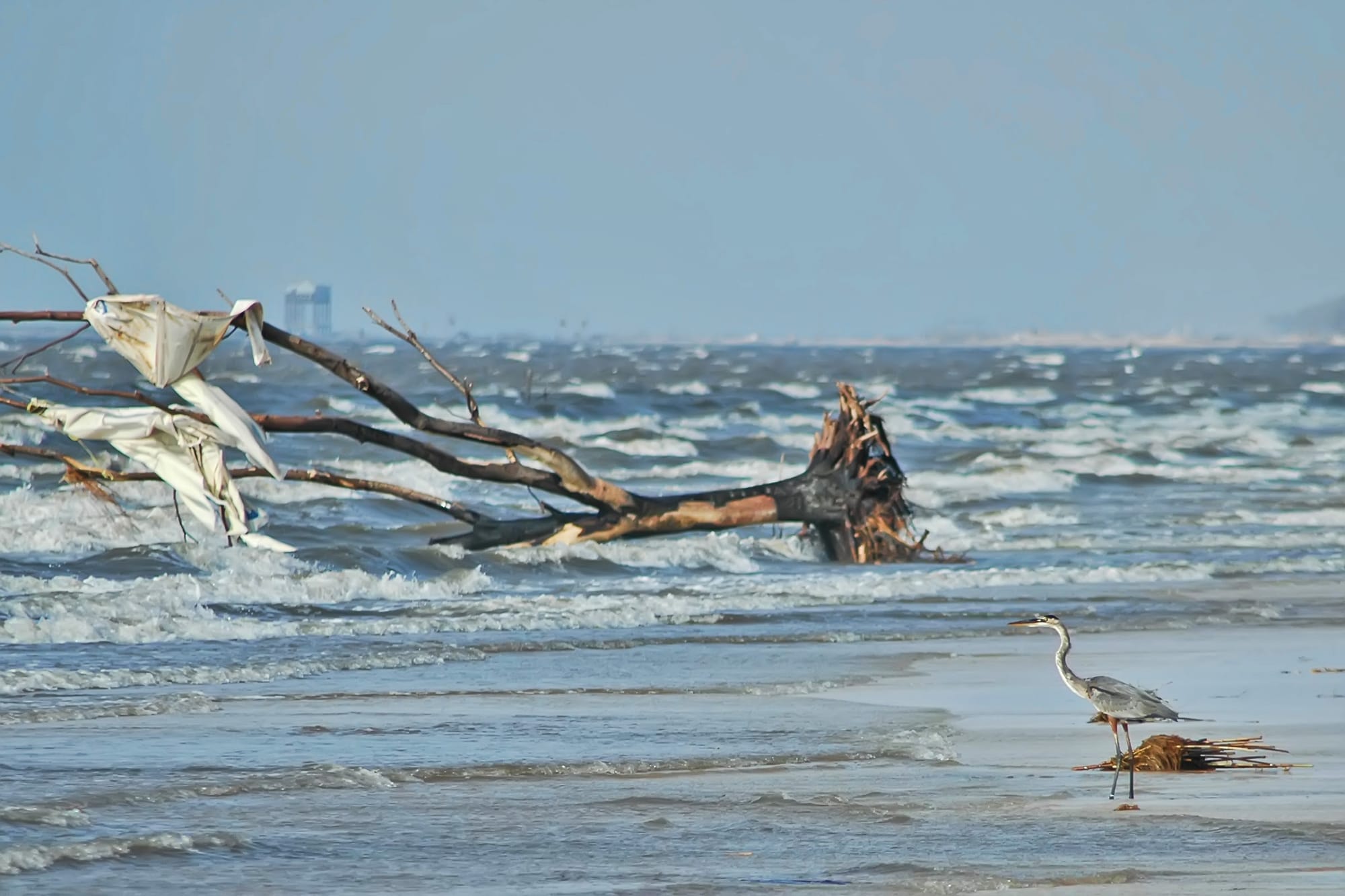
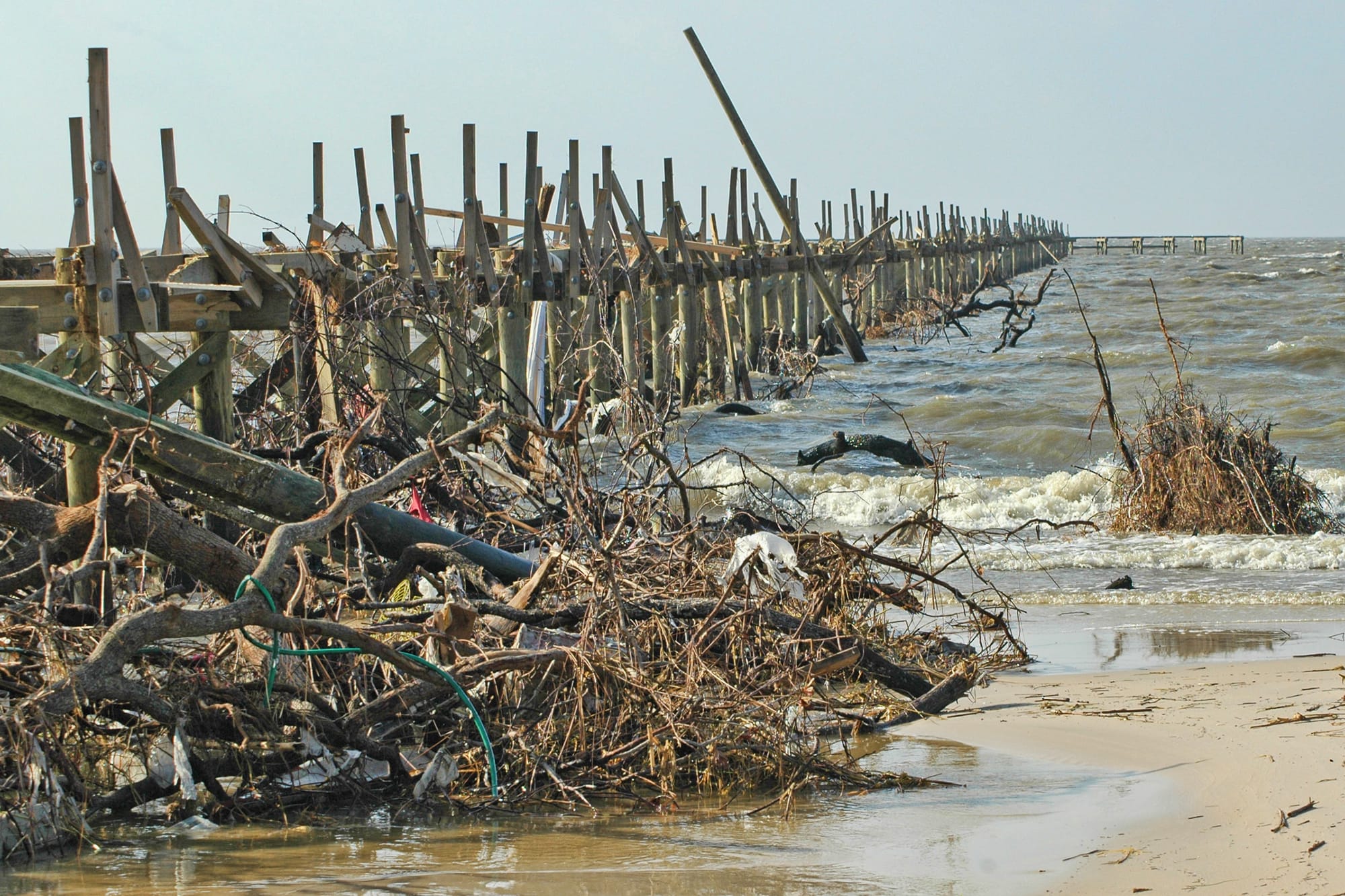
A few photos from along the waterfront in Pass Christian.
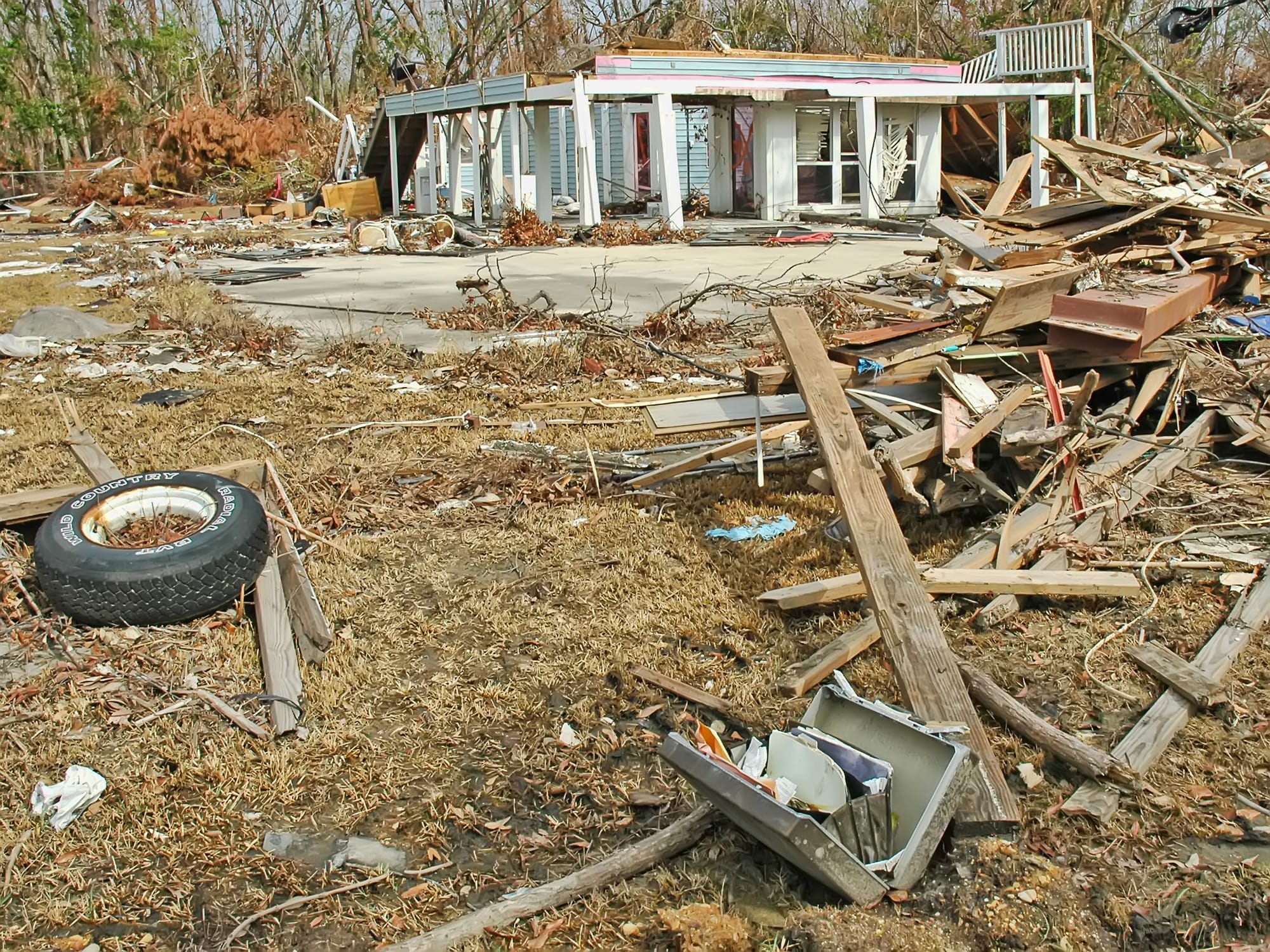
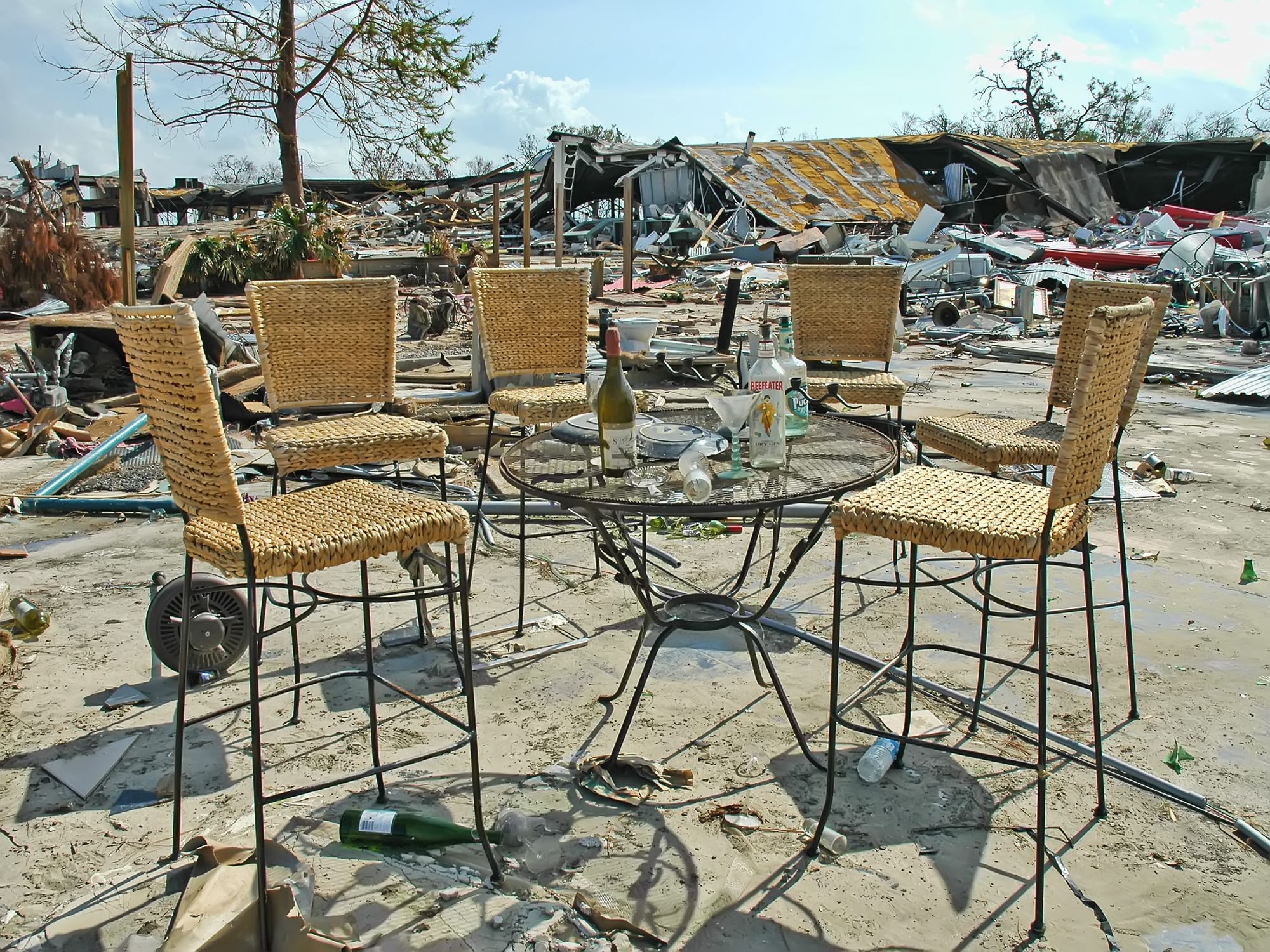
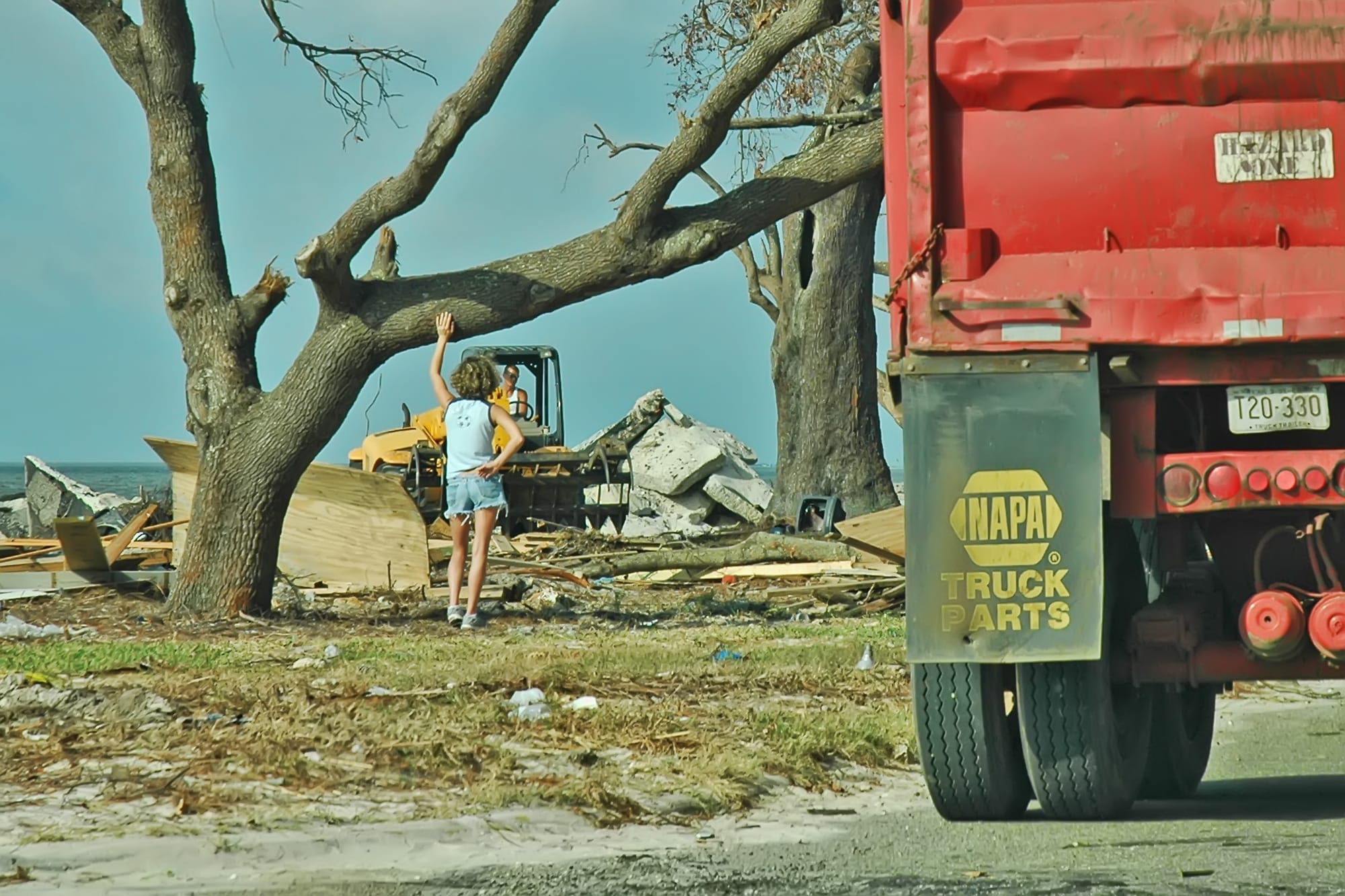
Some poignant scenes from the Pass: an open and ransacked briefcase in front of a destroyed home (looking for a deed or insurance policy?), a table set up with a bottle of wine at the location of a devasted restaurant on Second Street, and a woman watching a bulldozer demolish a concrete foundation along Scenic Drive.
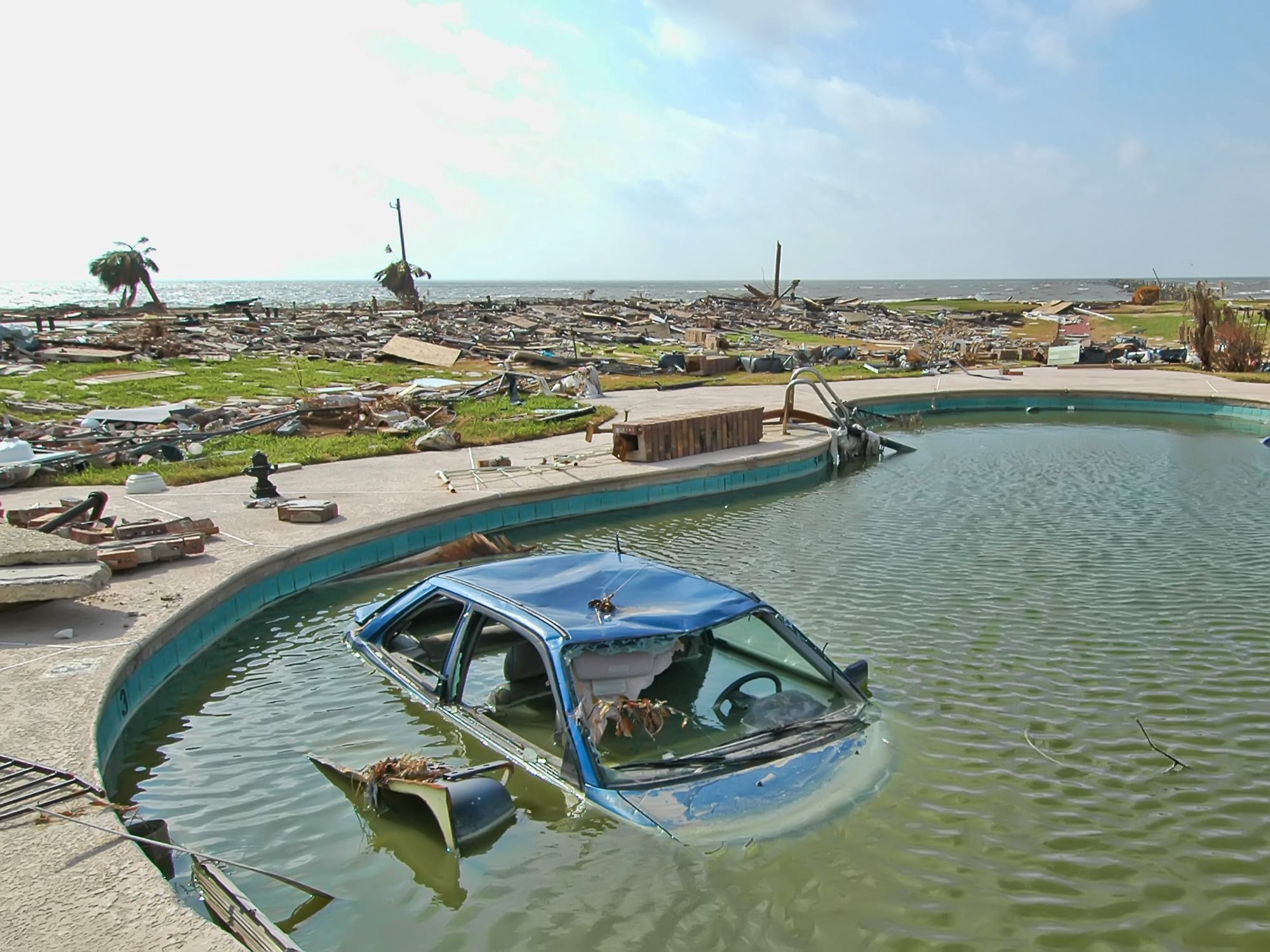
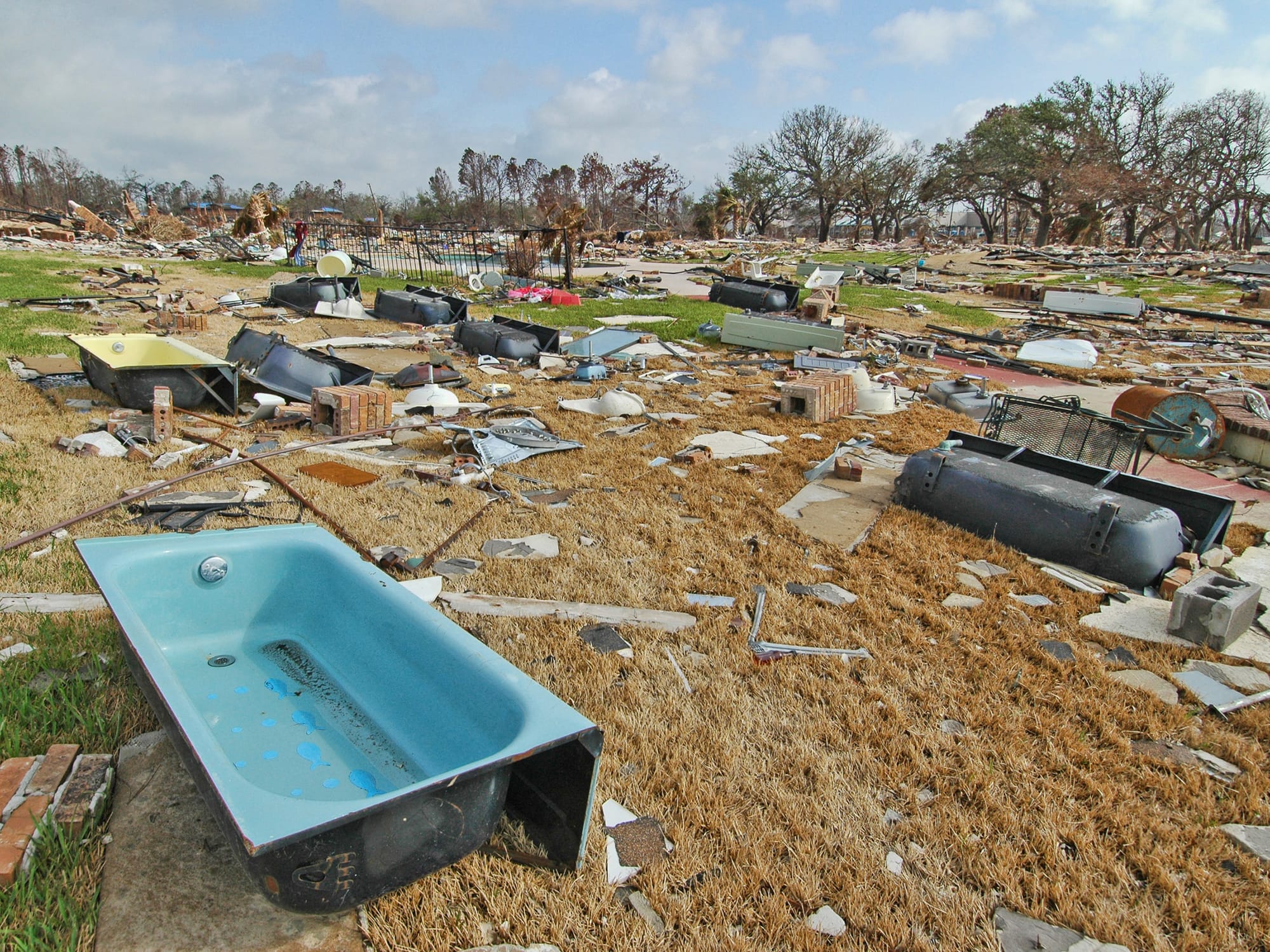
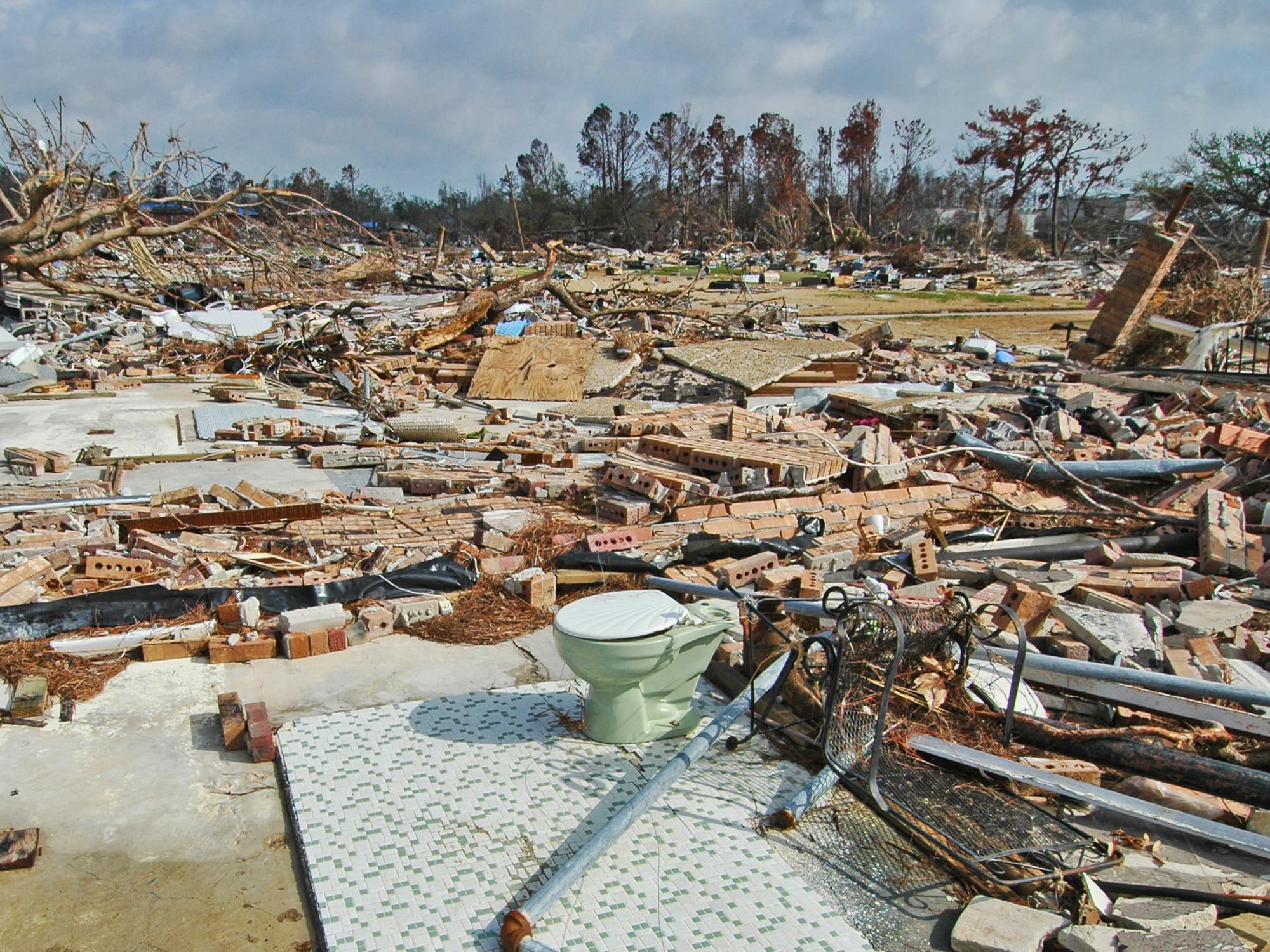
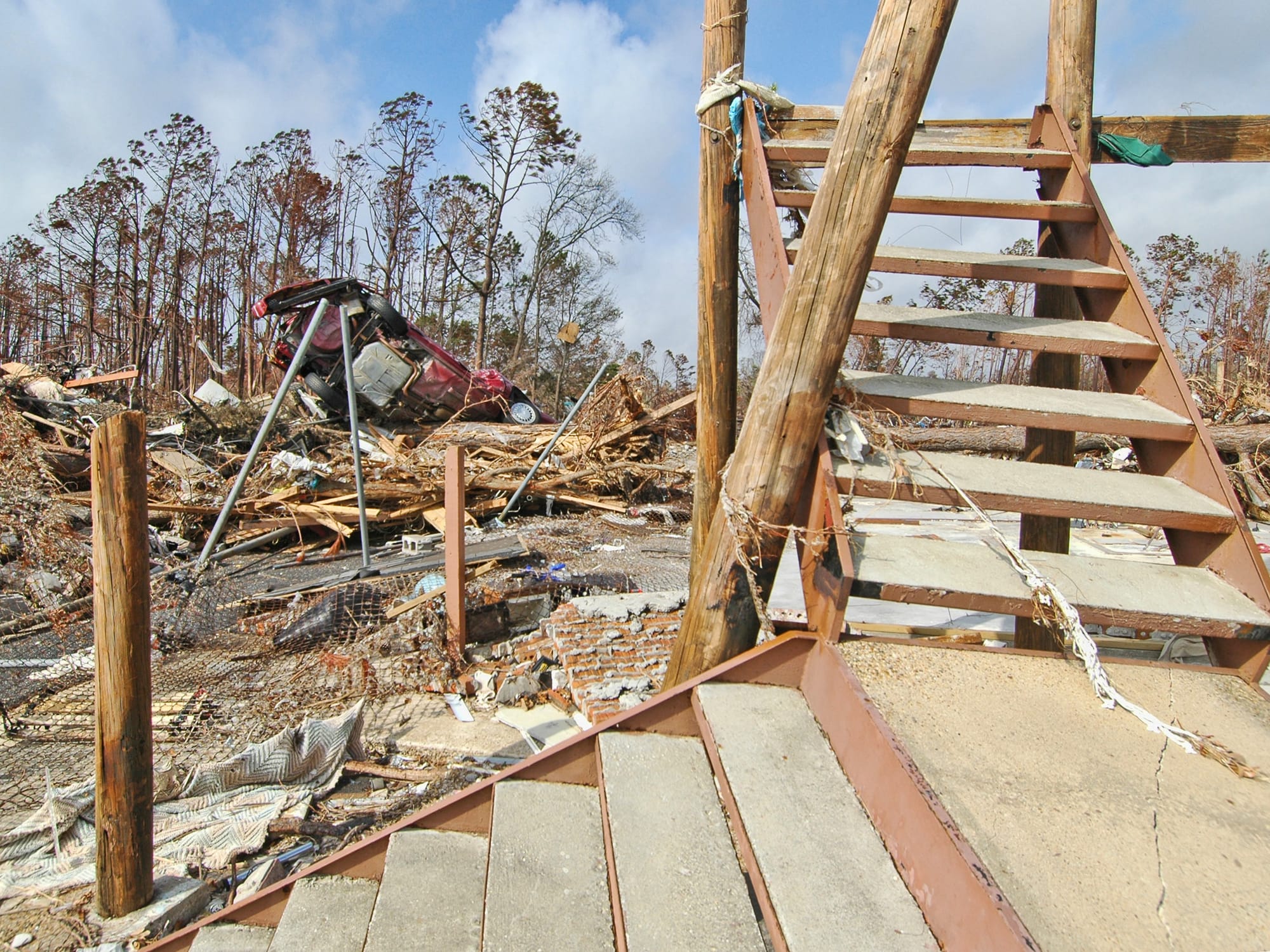
A few photos of the former site of the Penthouse Condos along the waterfront in Pass Christian.
I realized while standing in front of the wreckage of the Penthouse Condos that the debris had been sorted by weight. Cars from the parking lot were still up front, closest to the shore, then came the bathtubs, then AC units and appliances, then smaller stuff scattered far inland.
One man refused to evacuate and died here, but everyone else got out. And the plumber who mounted that toilet should take a bow!
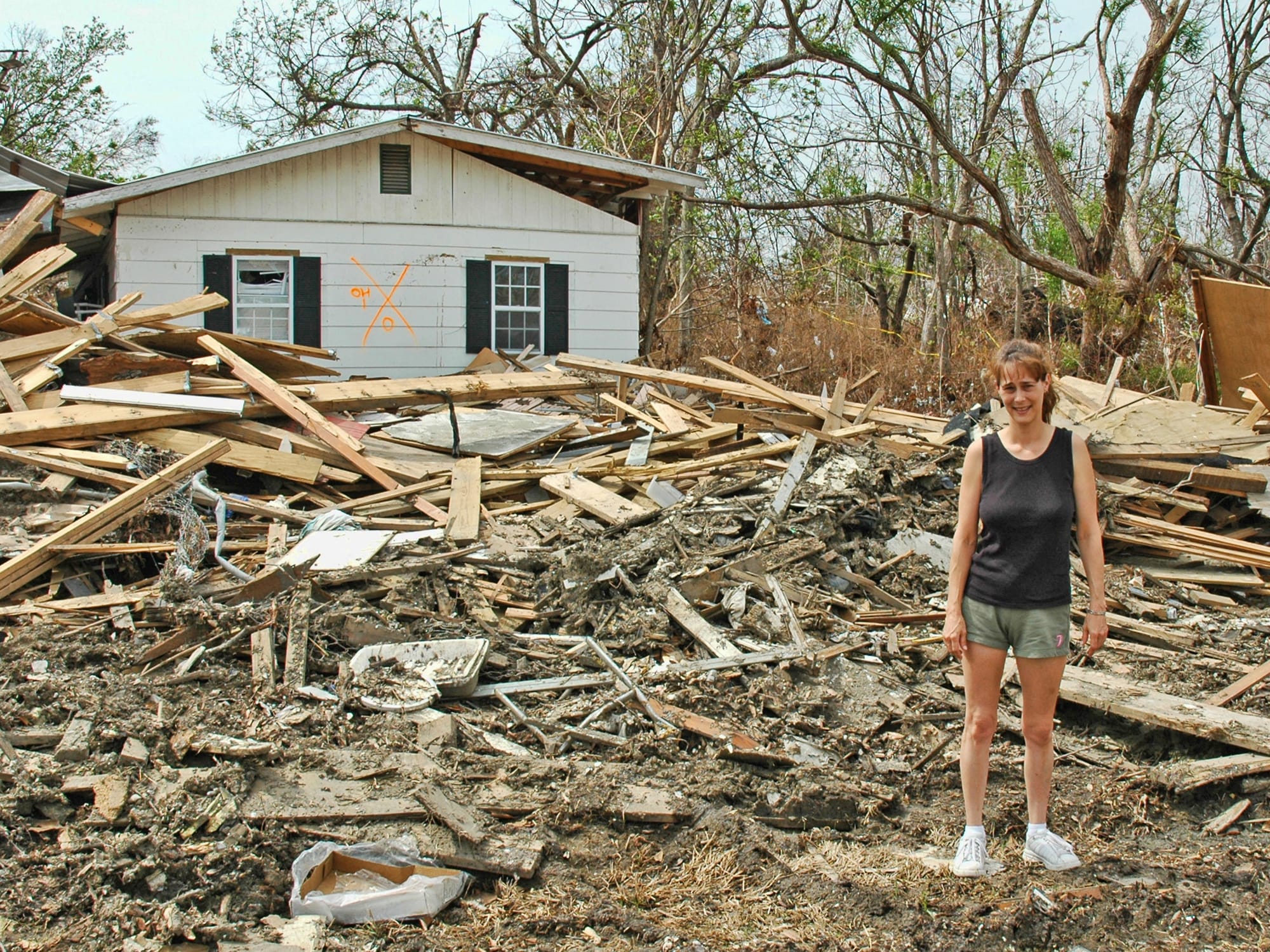
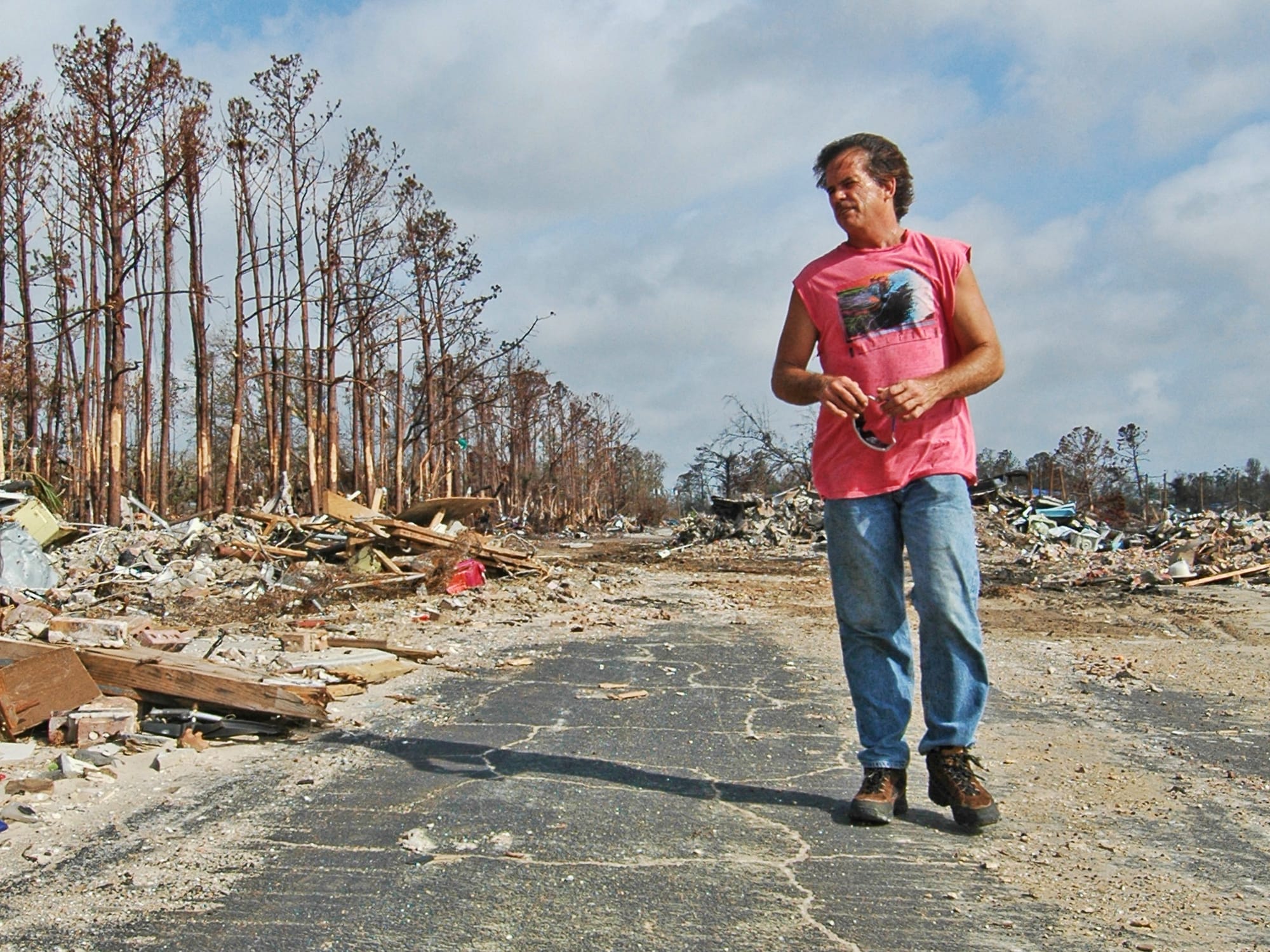
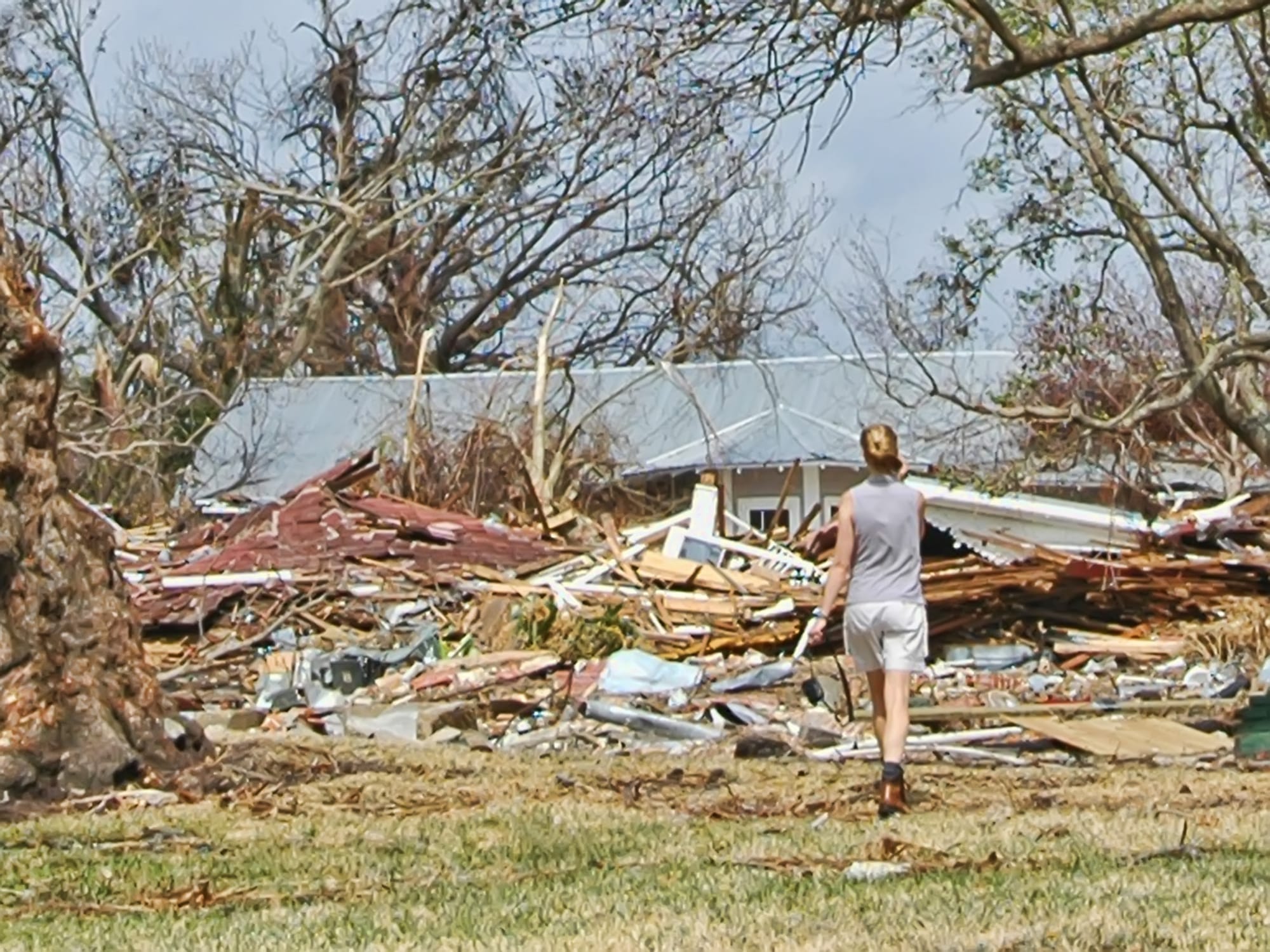
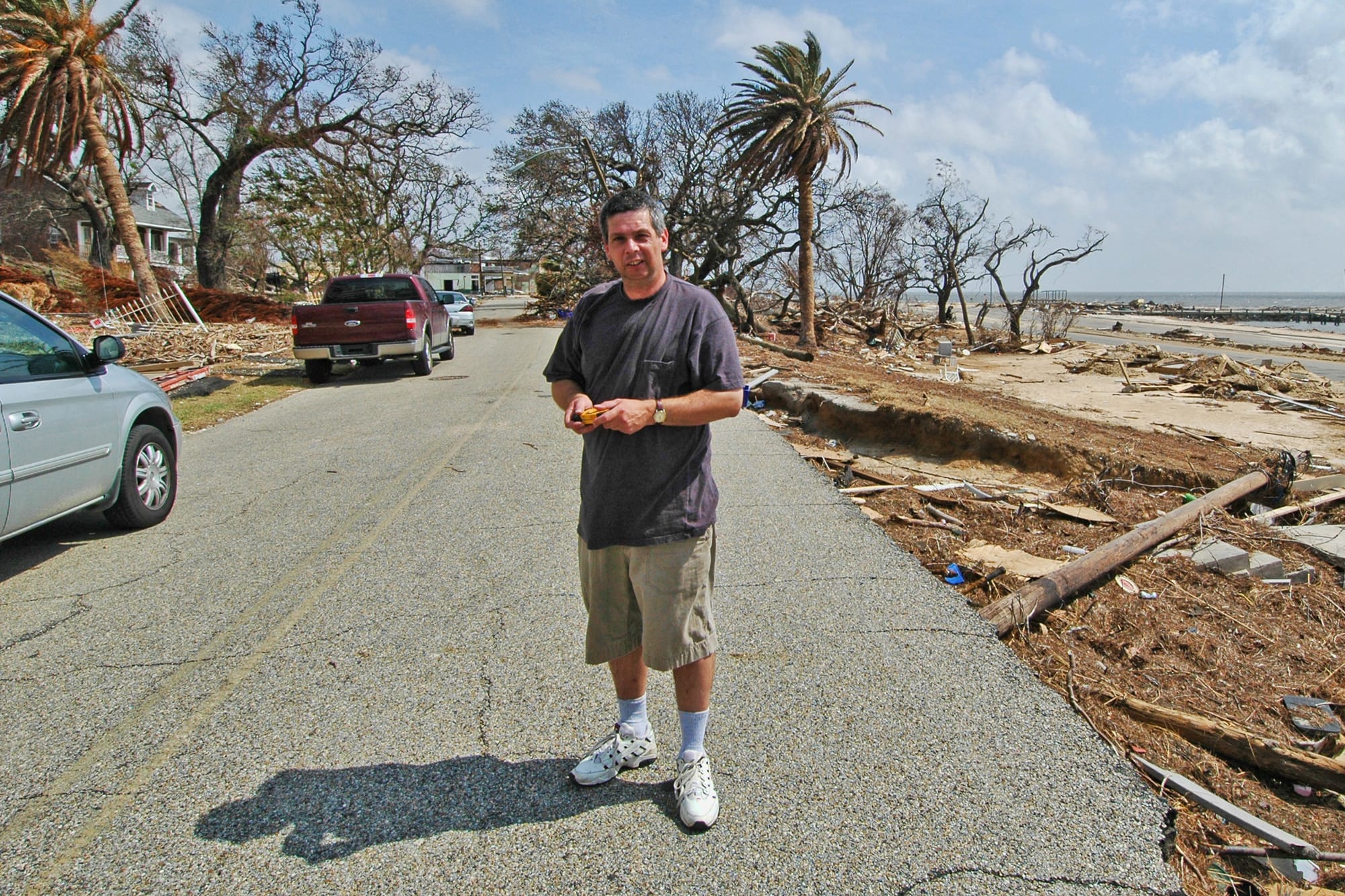
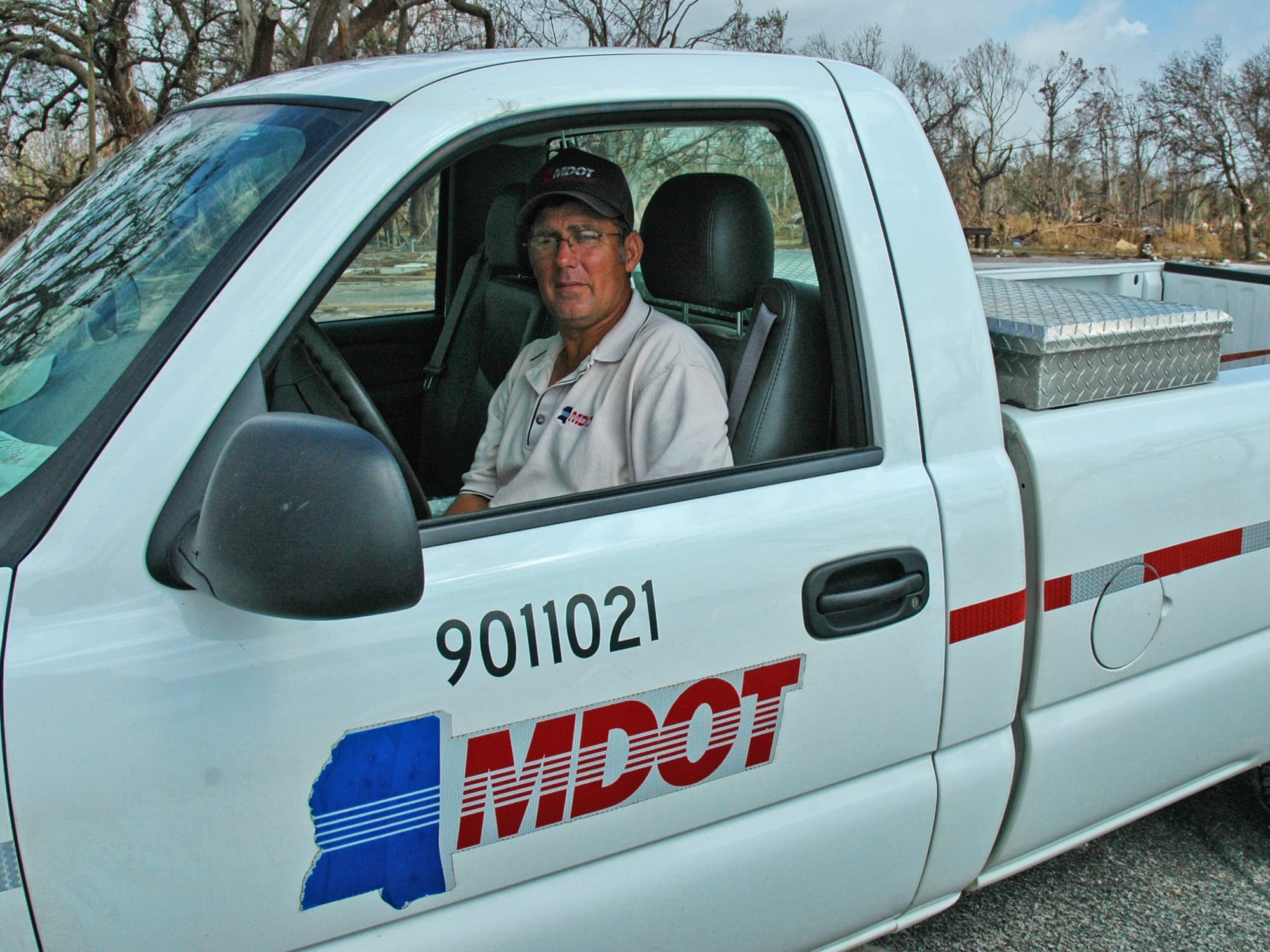
I met several people who were looking over the wreckage of their properties.
The guy in the white pickup above was a Mississippi Department of Transportation employee named Mike, and he was with a crew that was pumping out the storm sewers along Beach Boulevard. He told me they had found two 9-foot alligators and one 12-foot alligator in the storm sewers in Gulfport so far, in addition to many smaller ones.
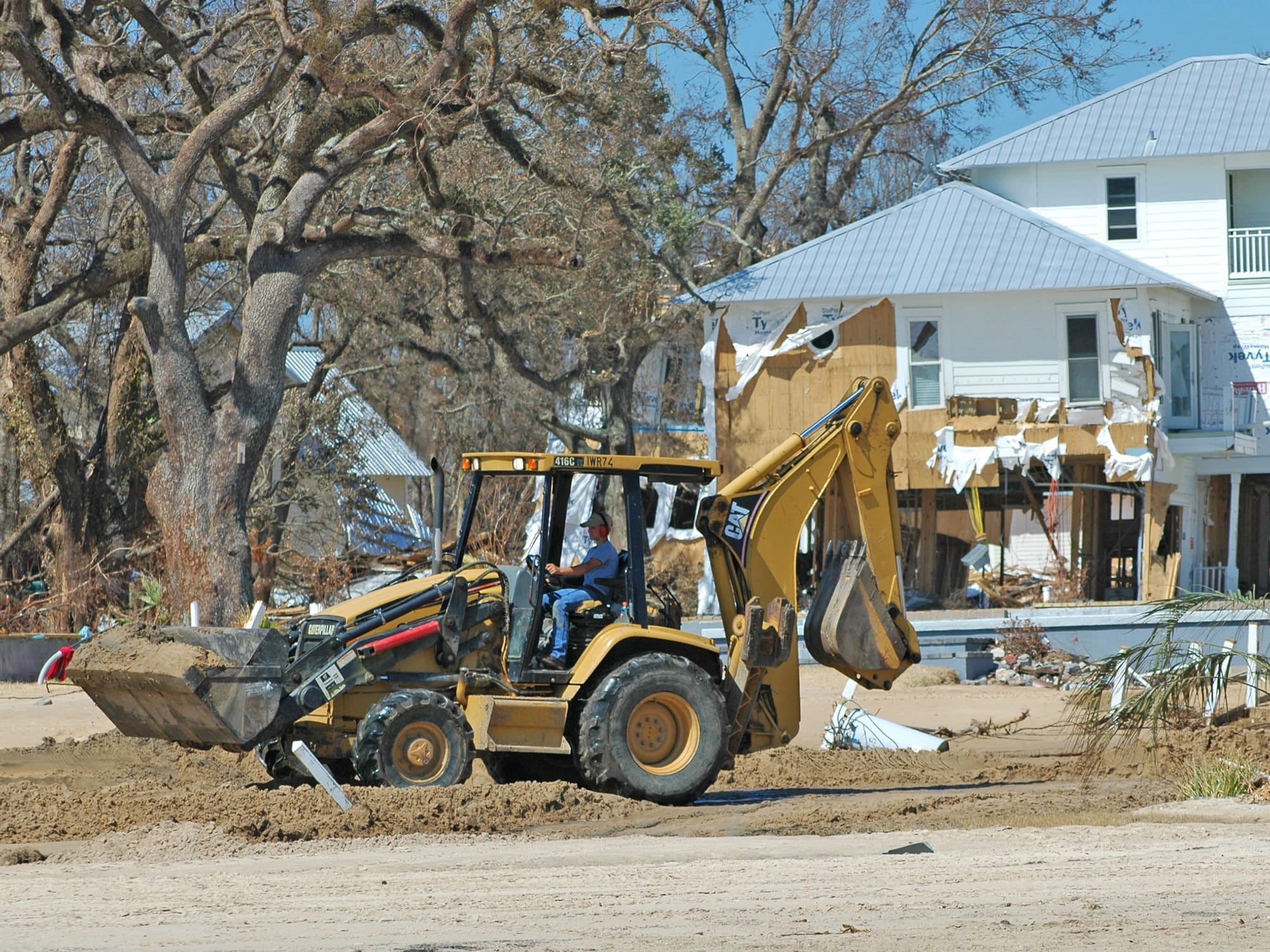
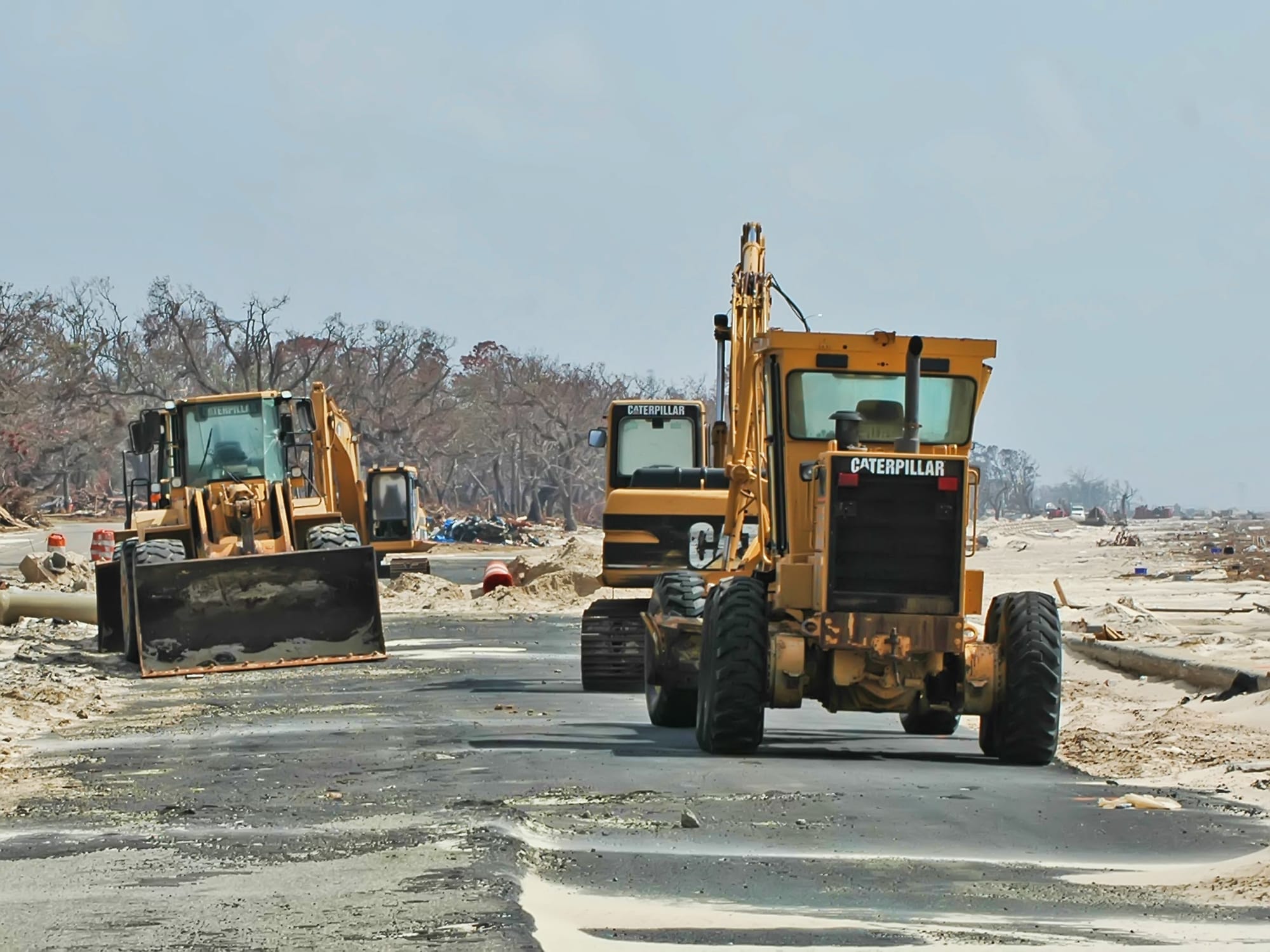
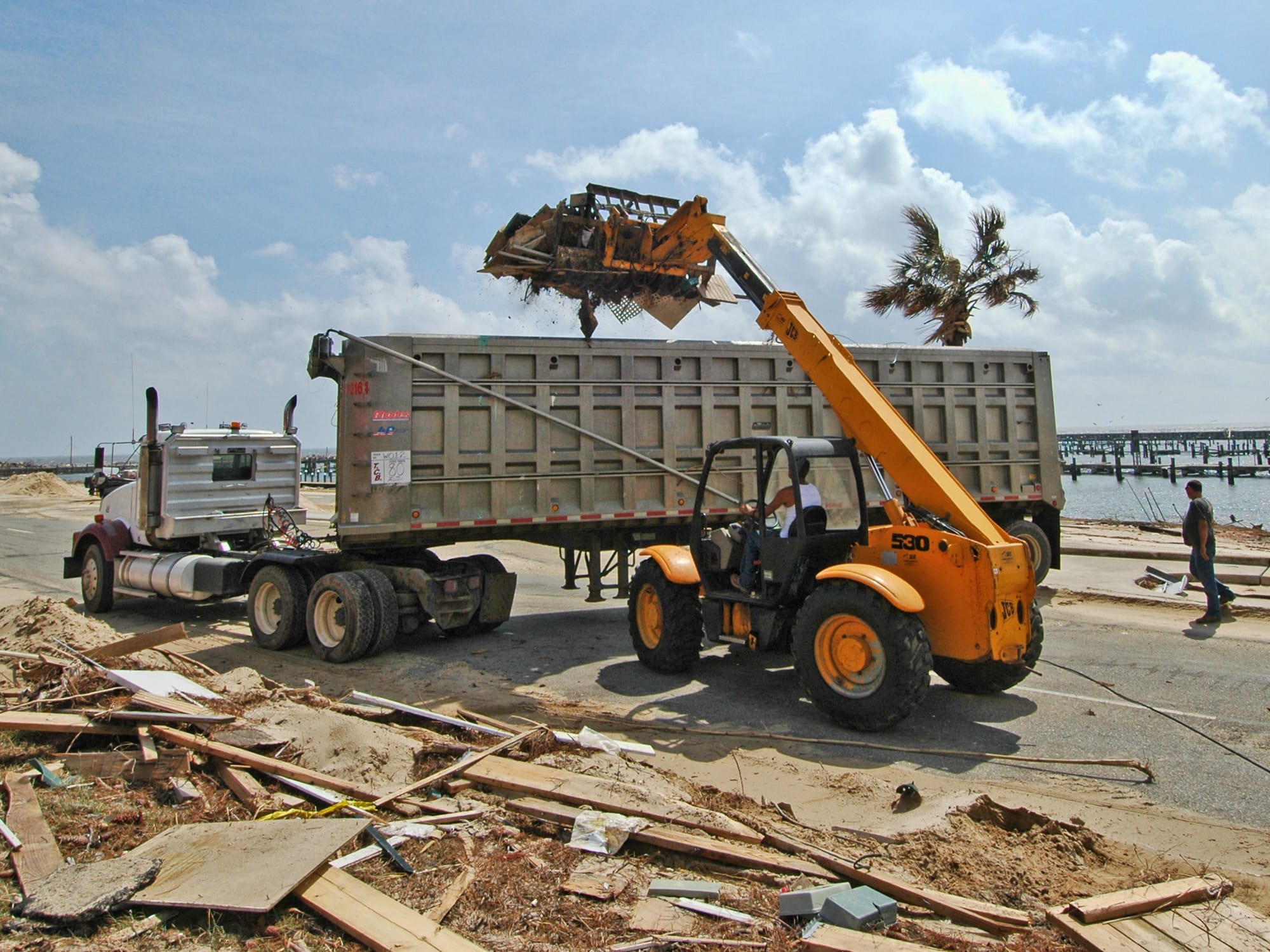
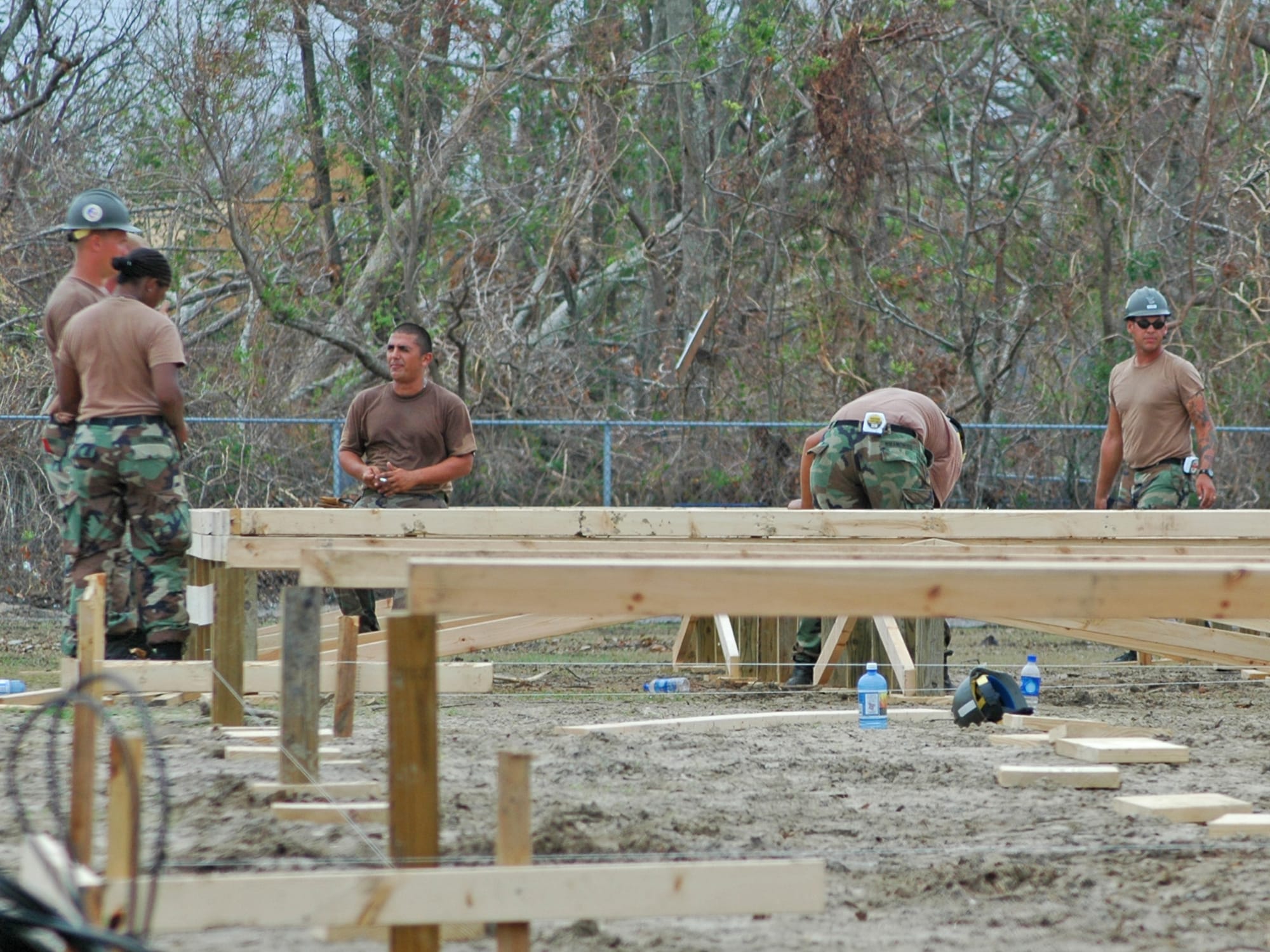
There was lots of cleanup going on, and some construction had started.
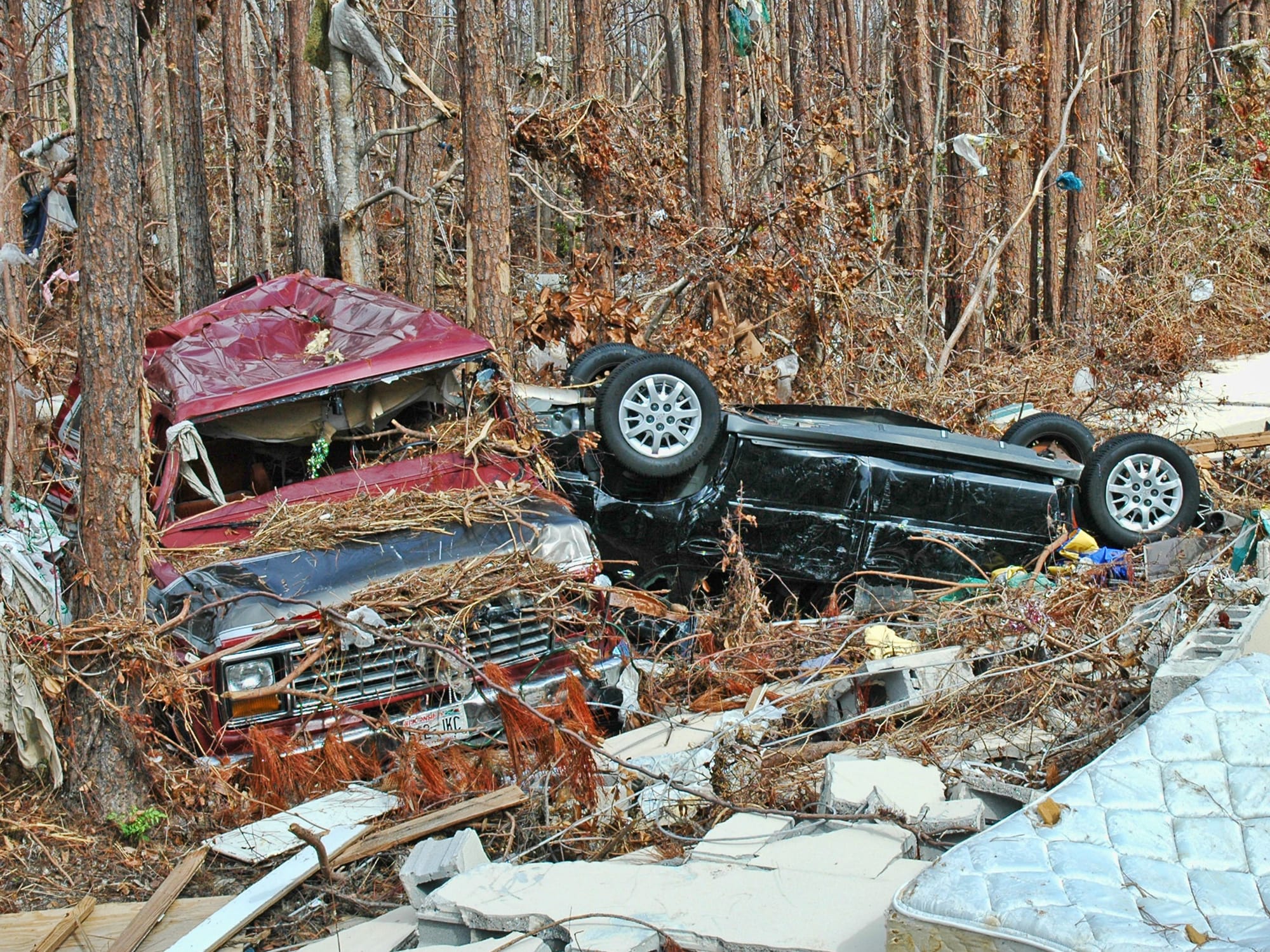
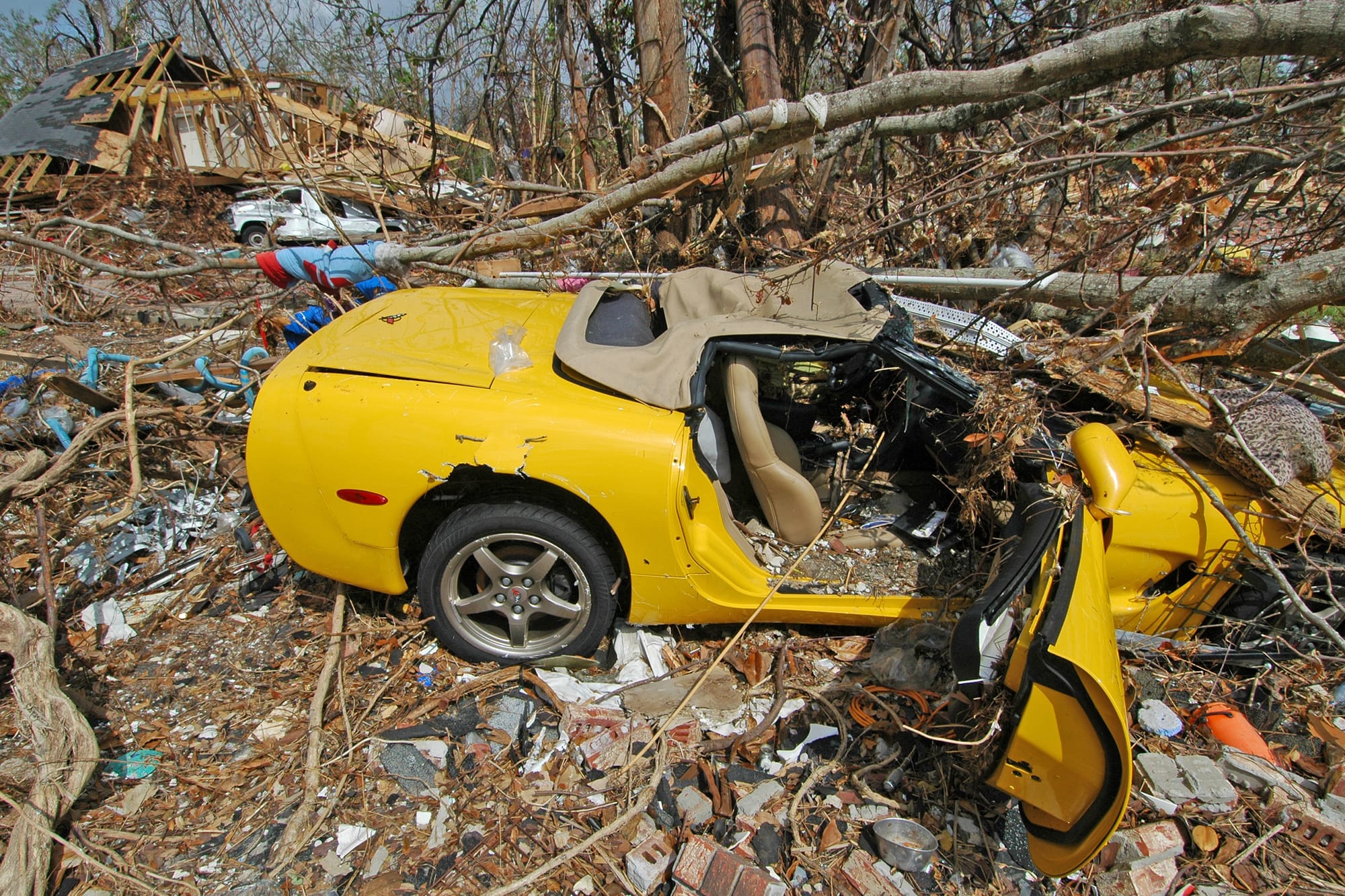
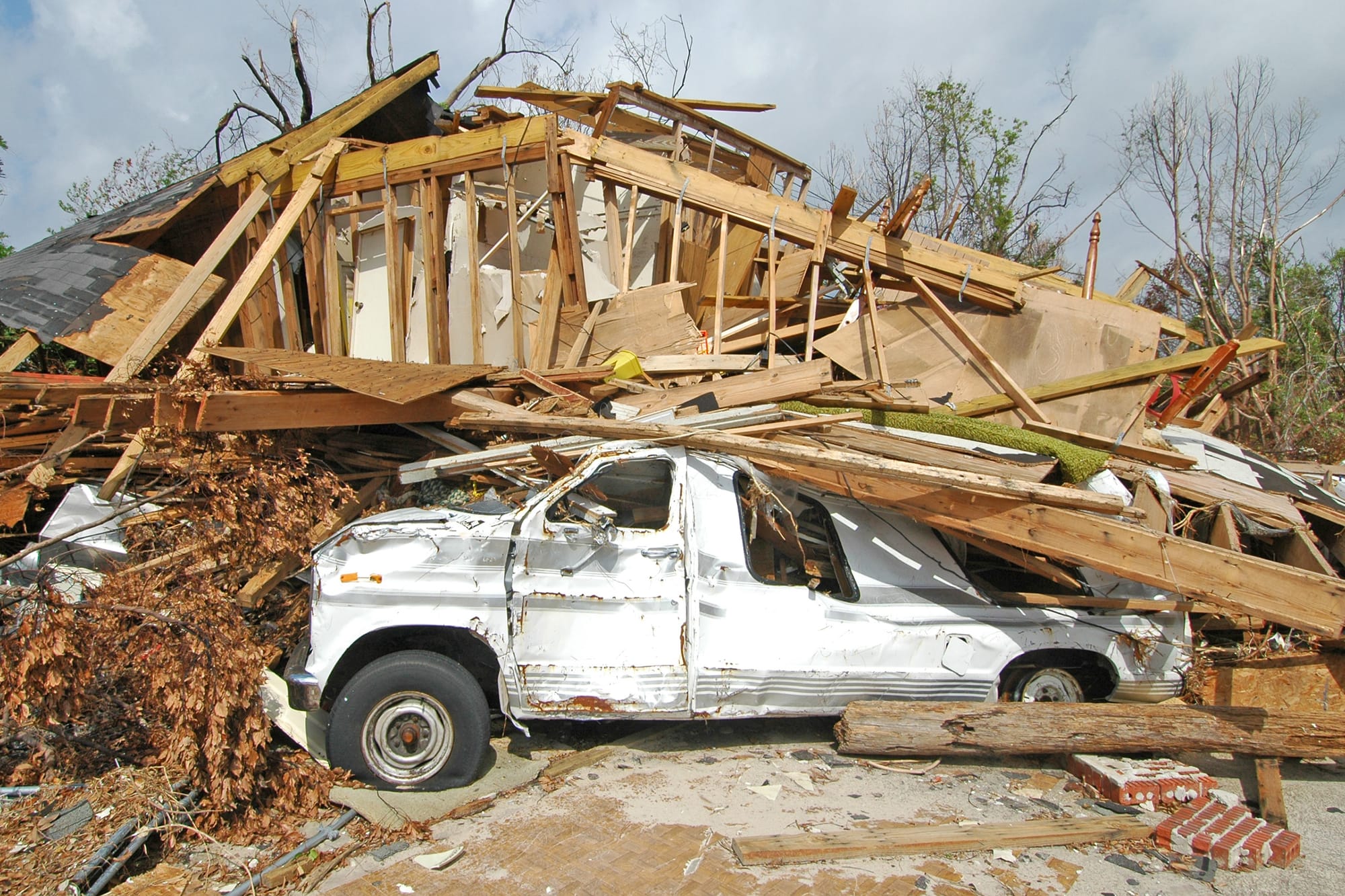
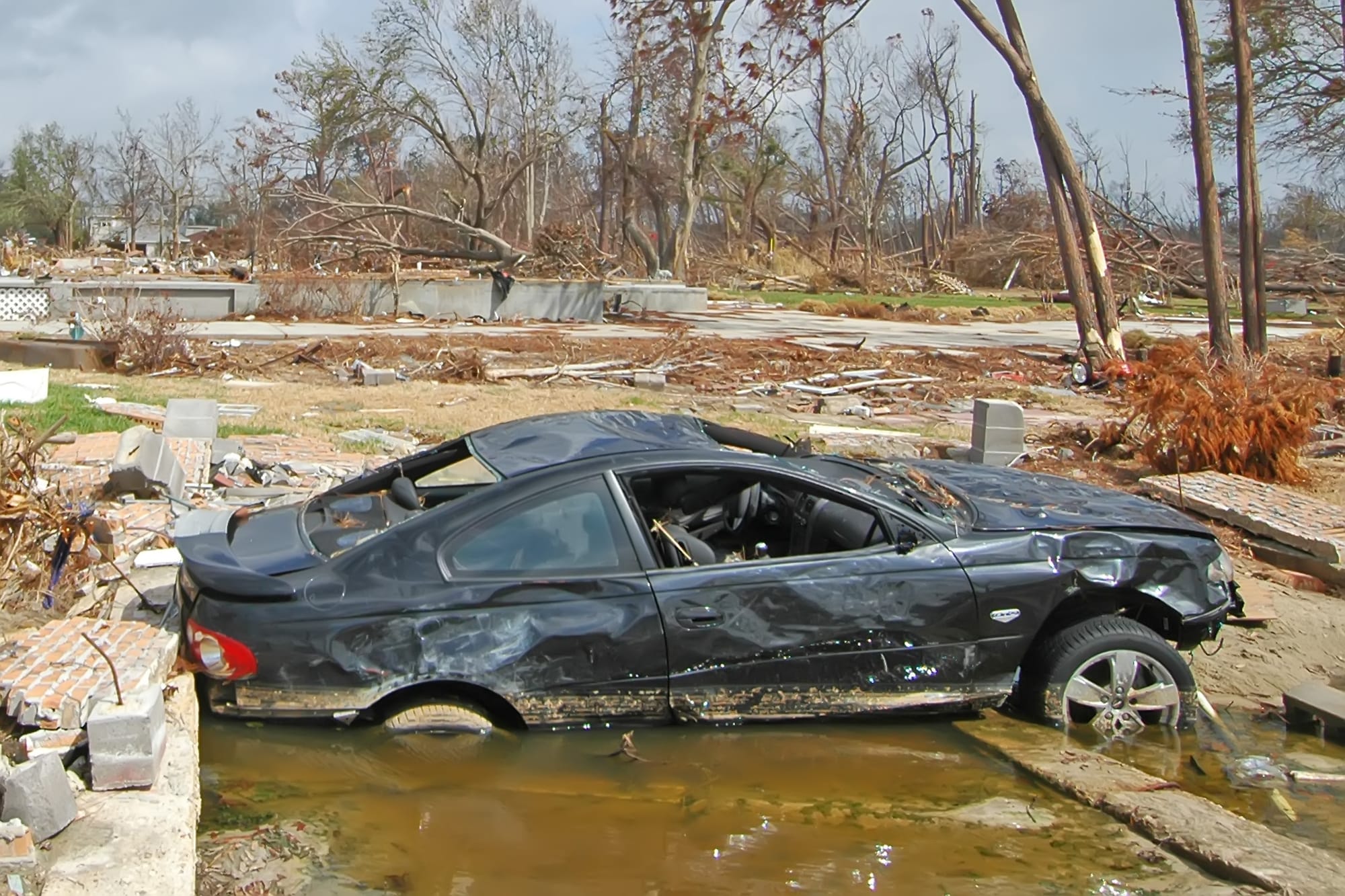
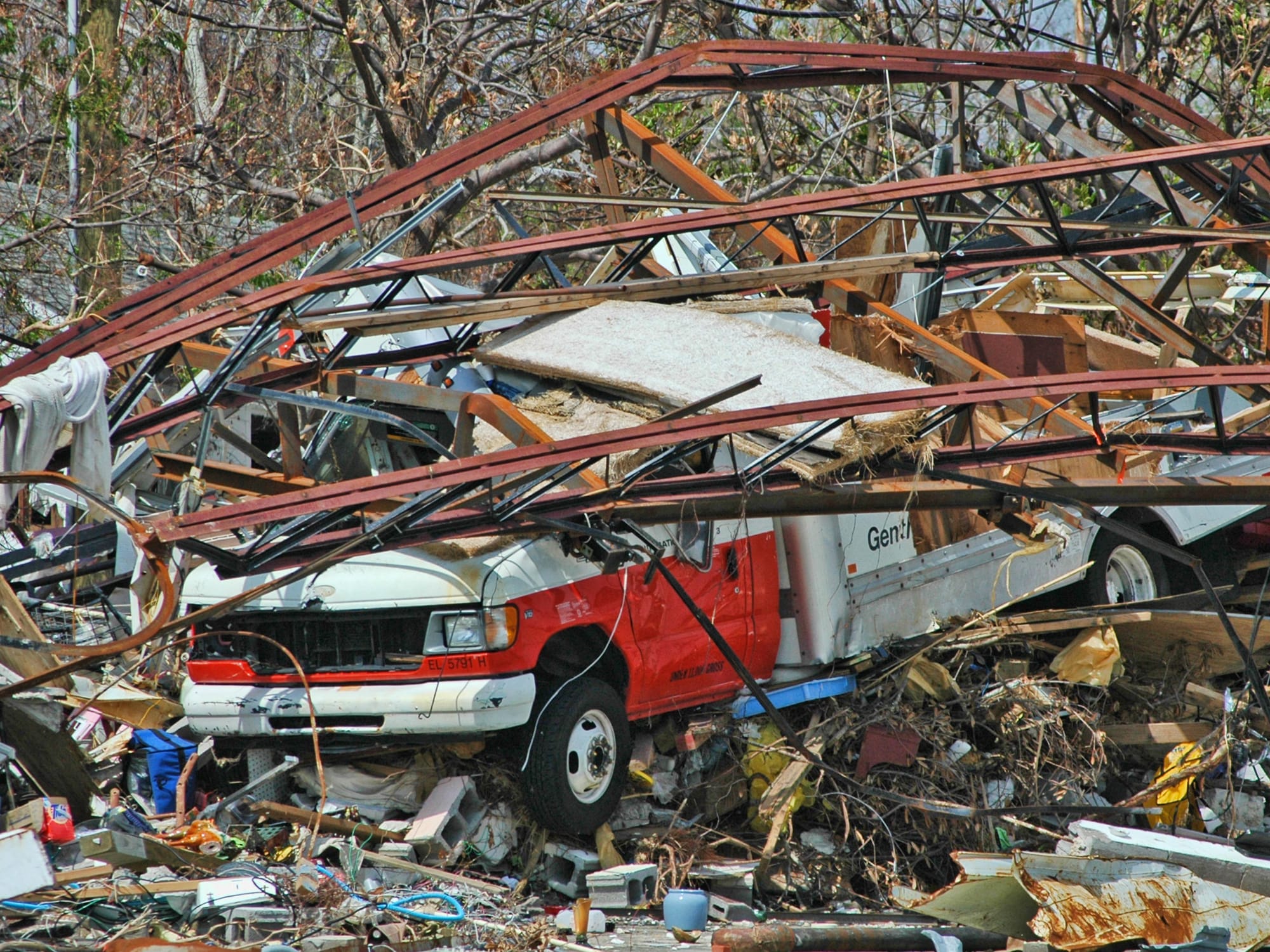
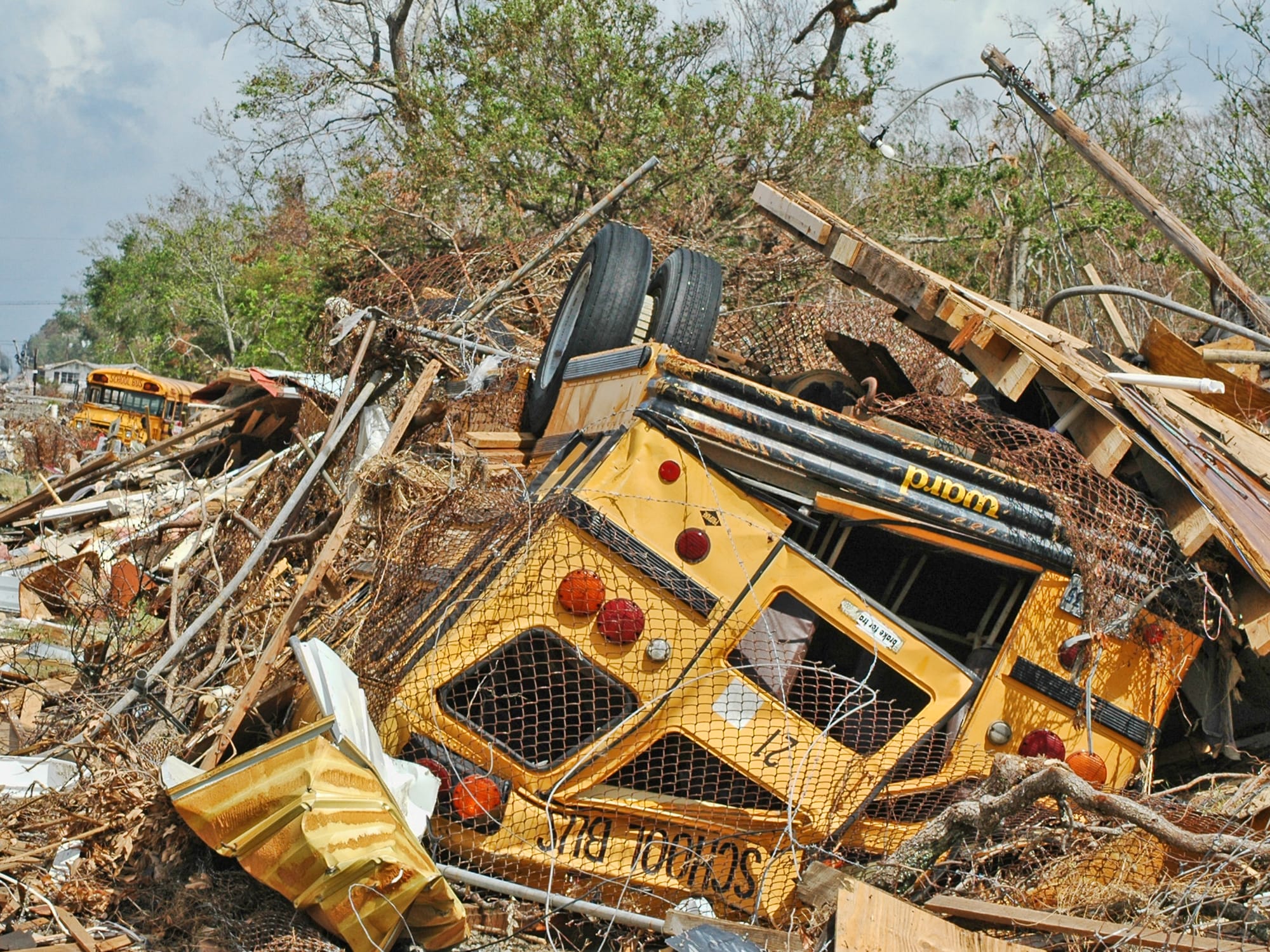
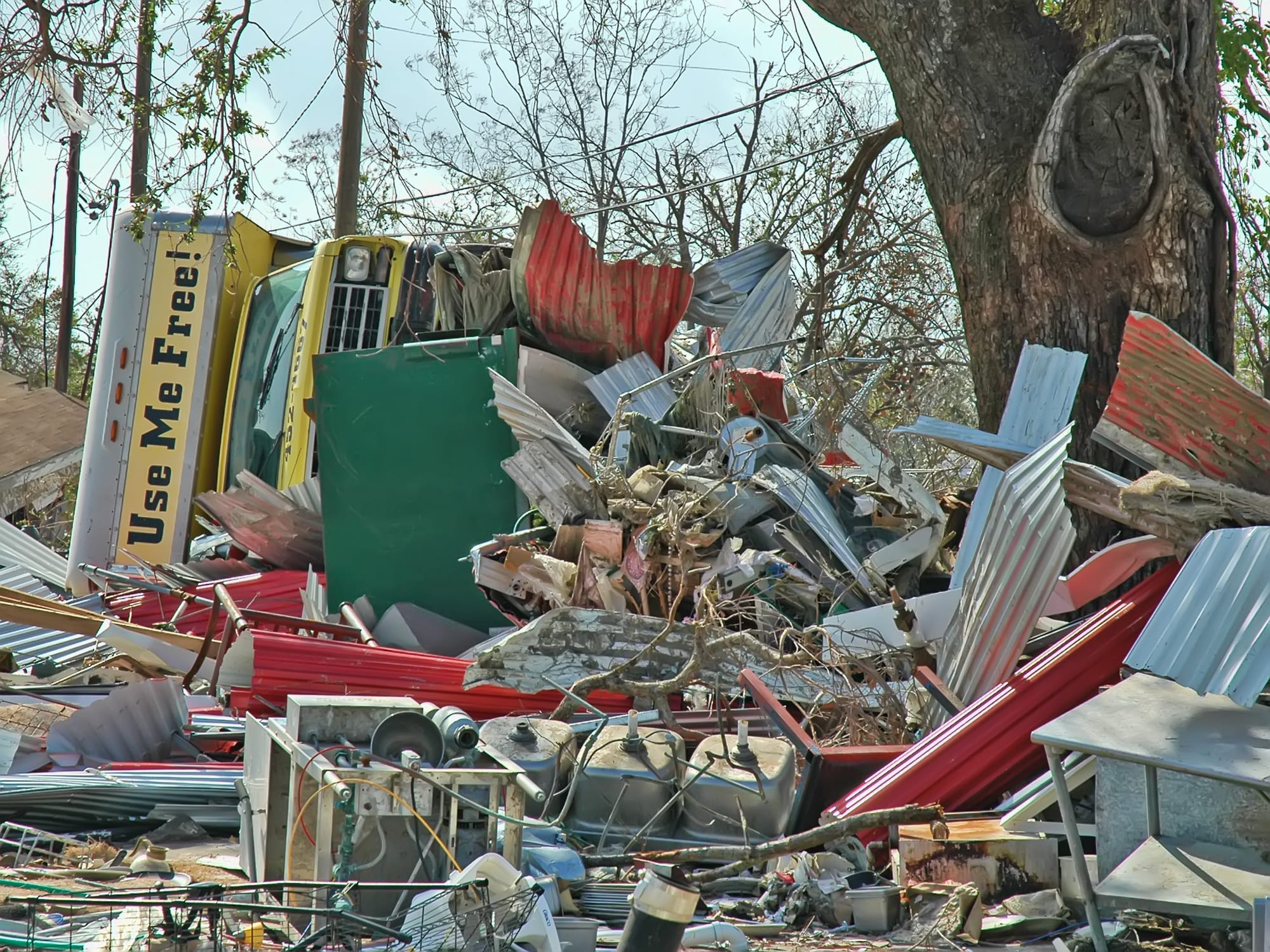
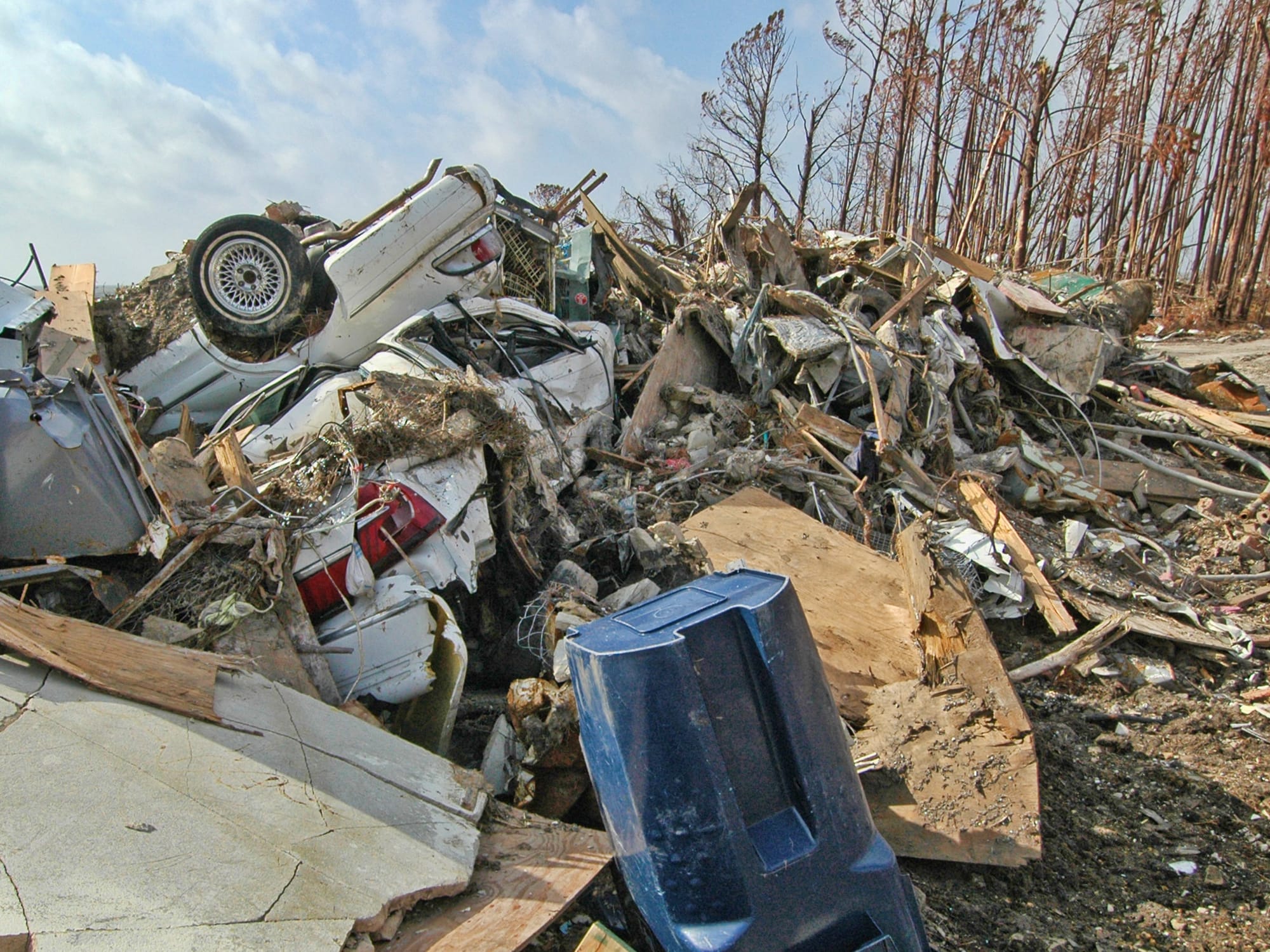
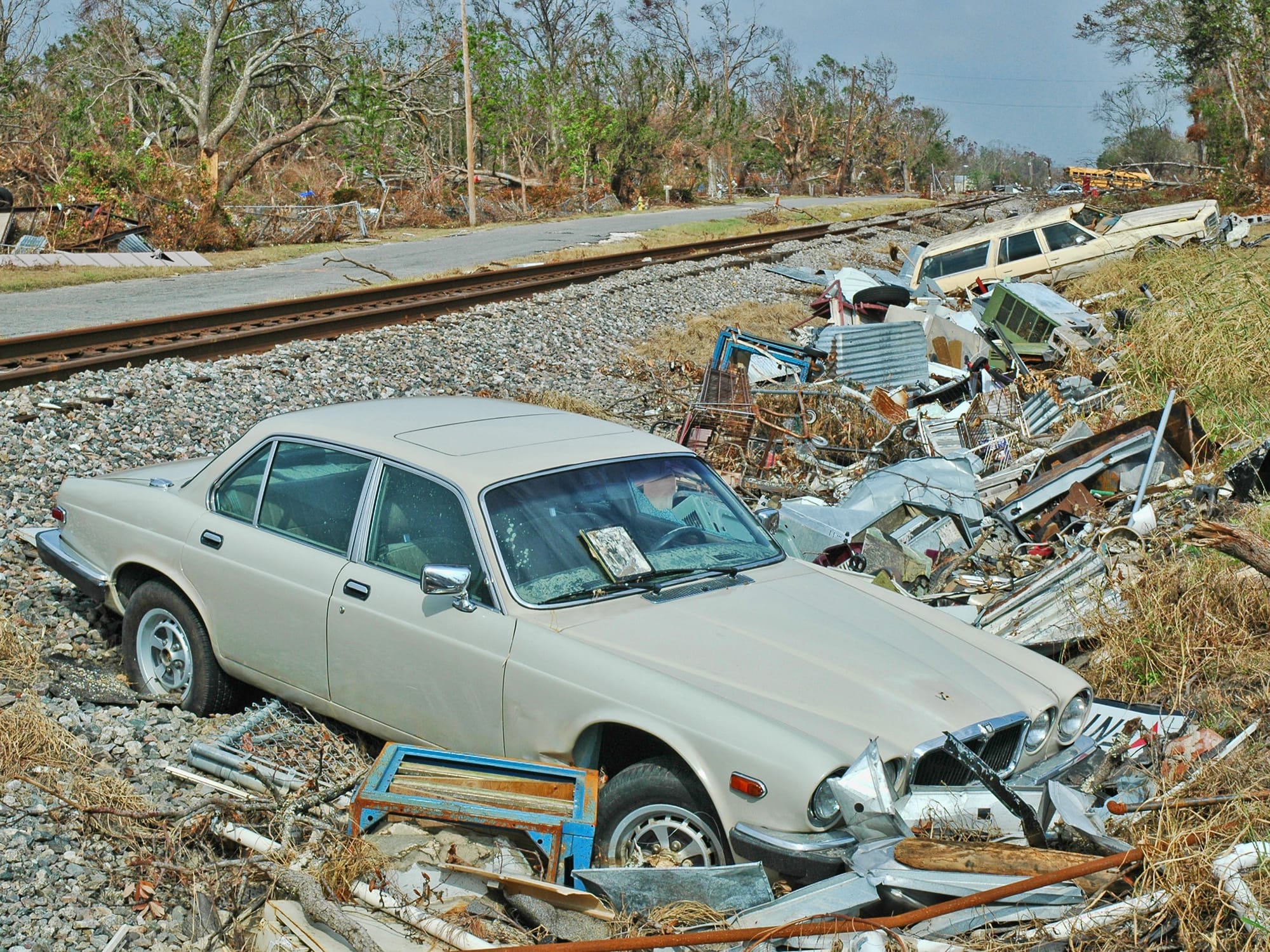
A few examples of what the hurricane had done to cars, trucks, and buses.
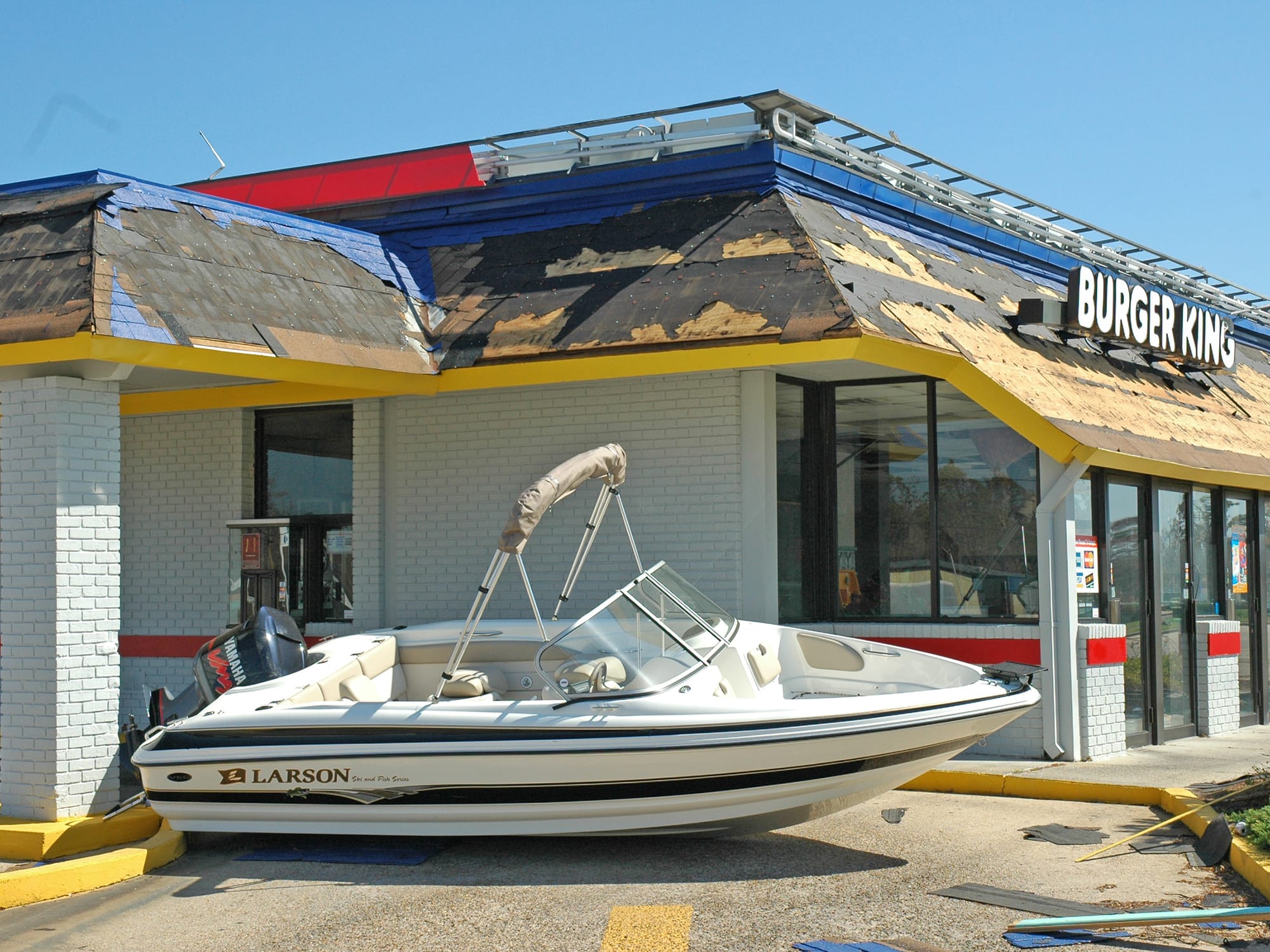
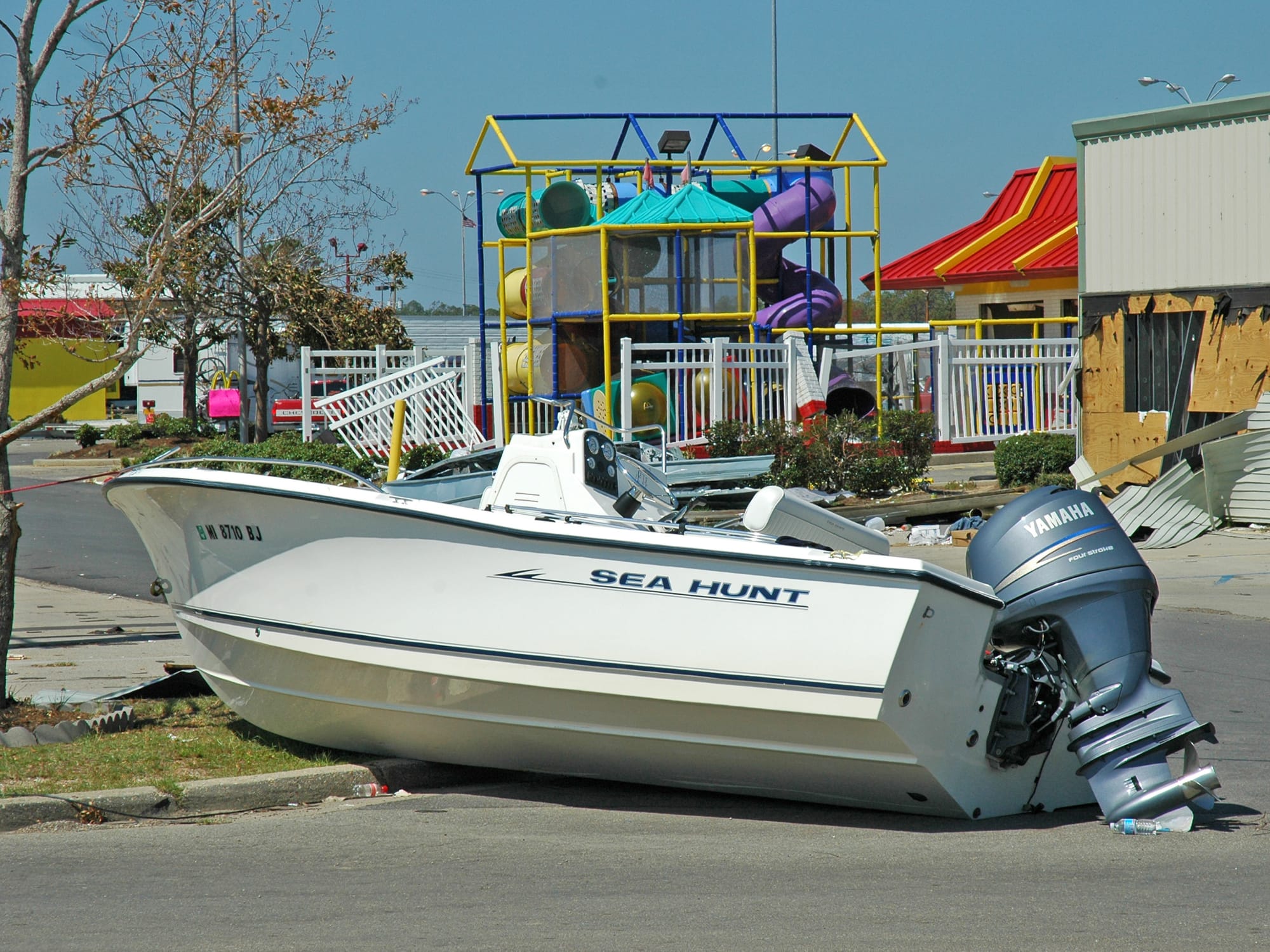
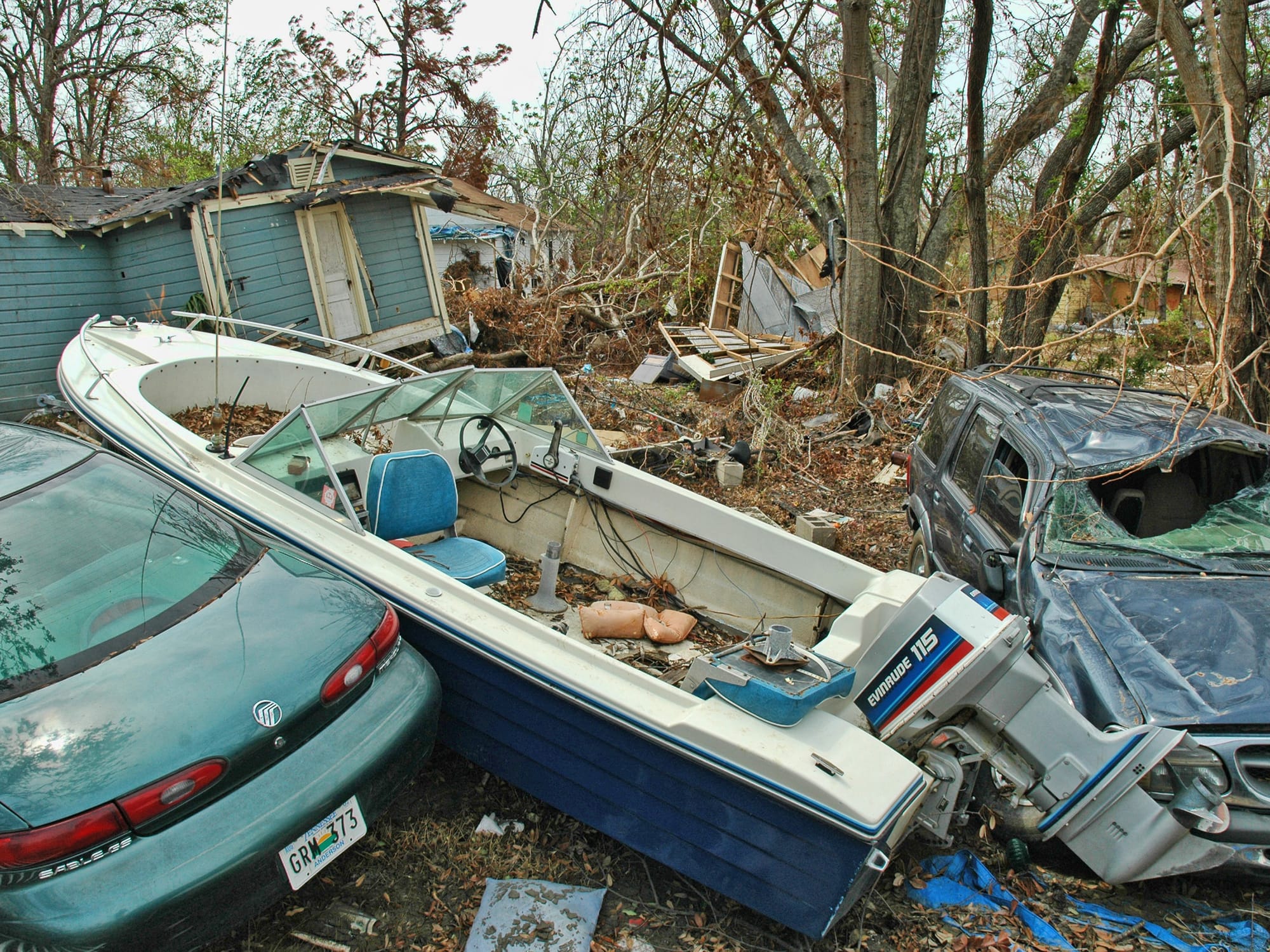
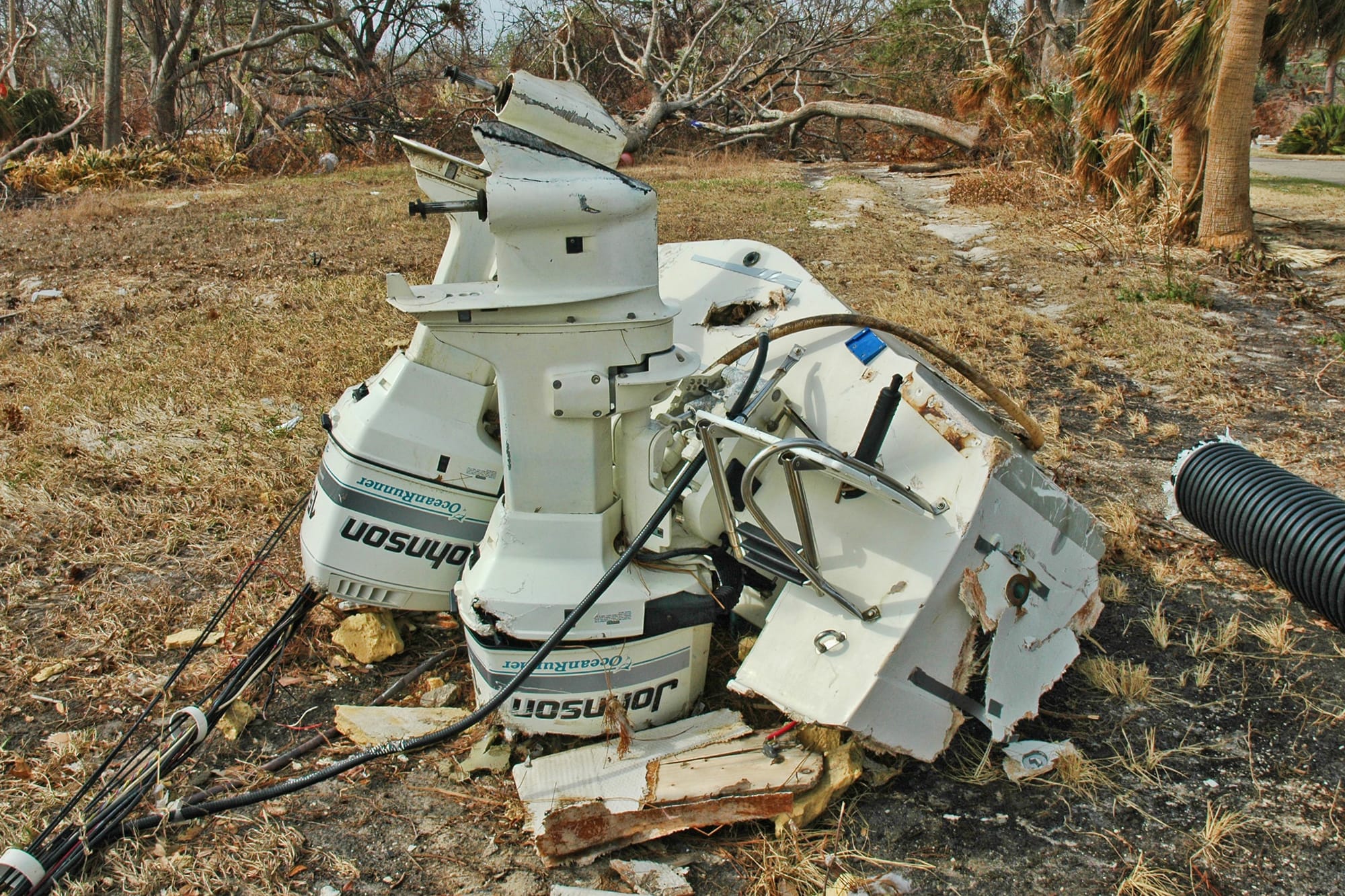
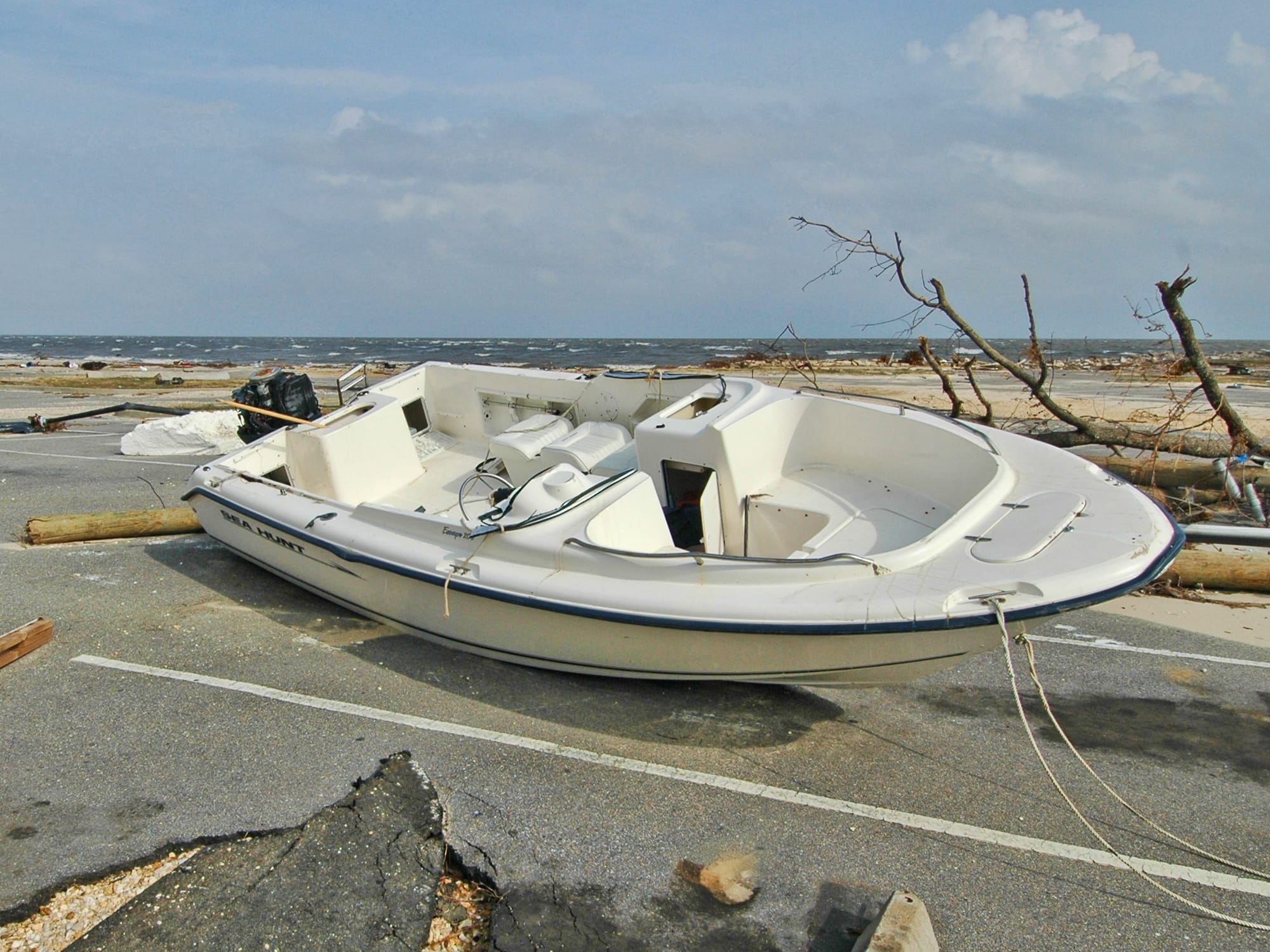
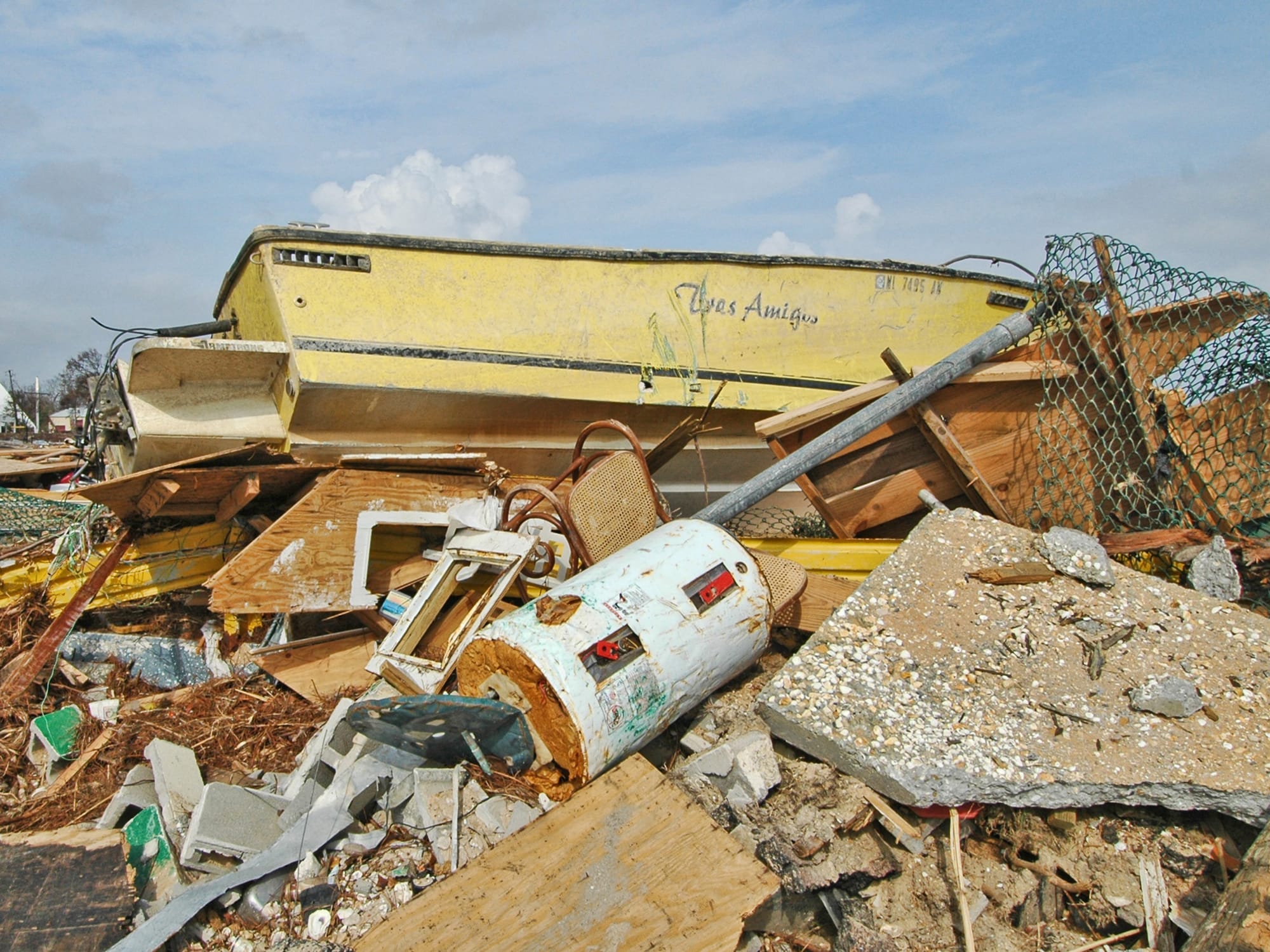
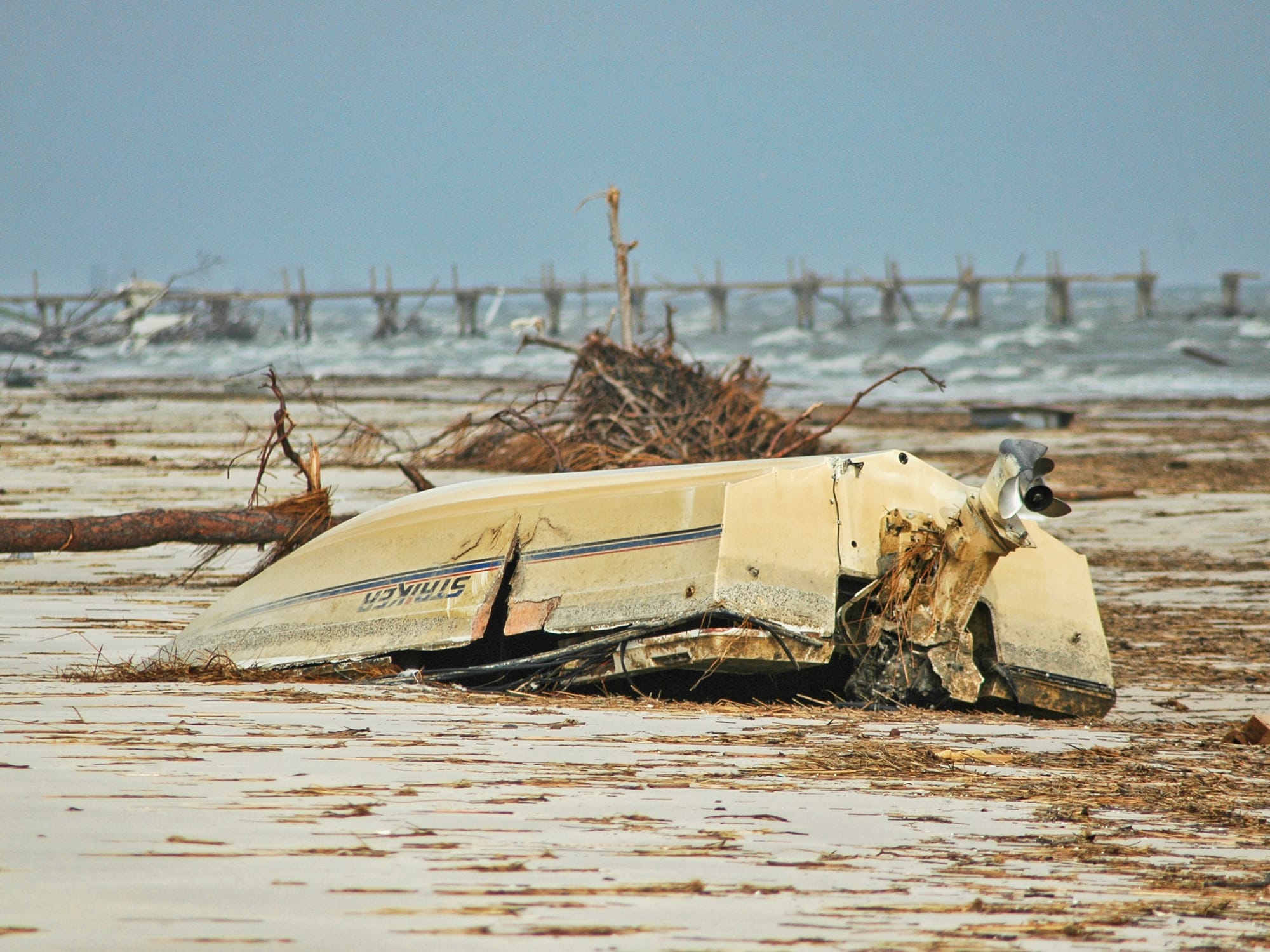
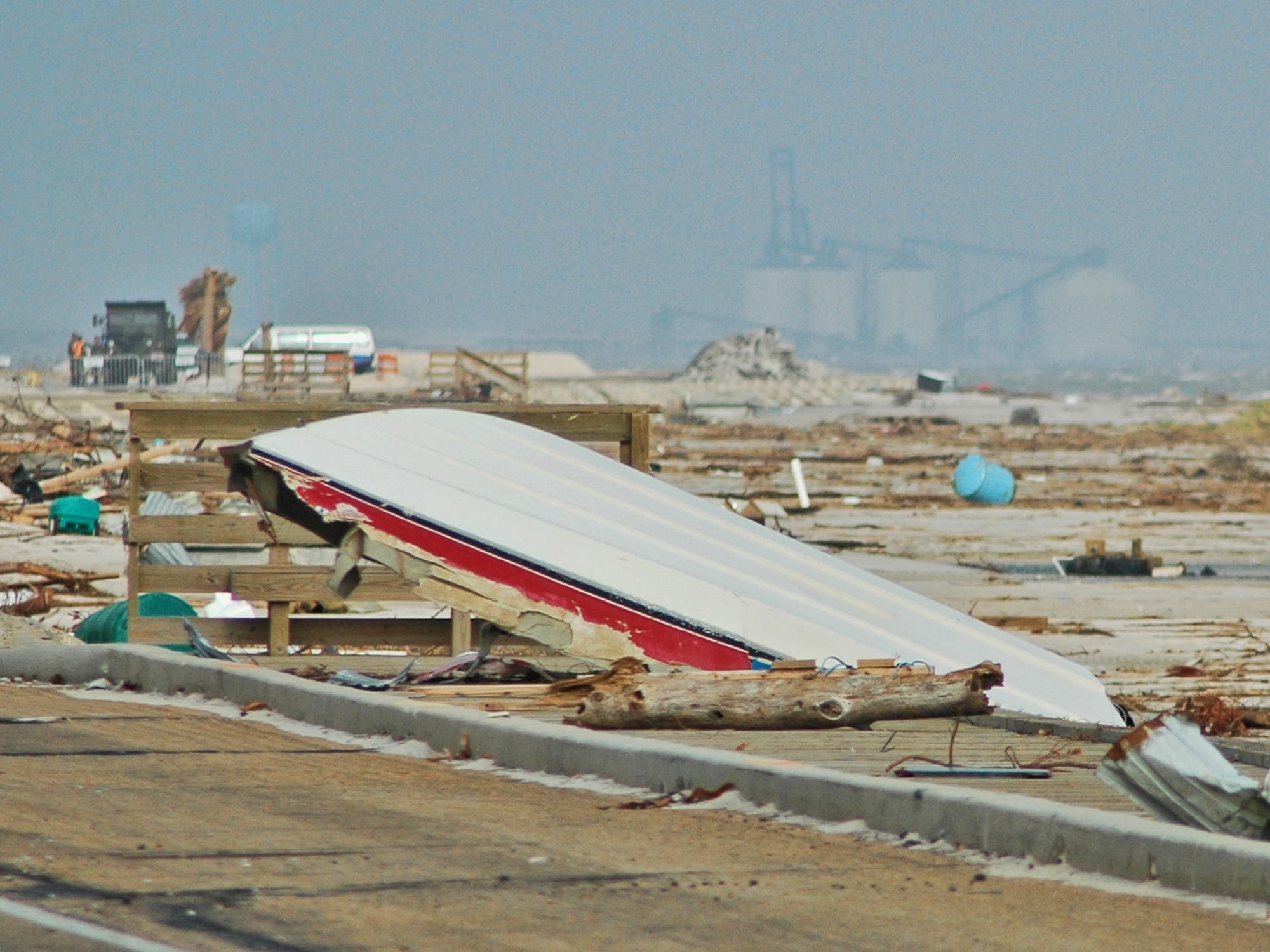
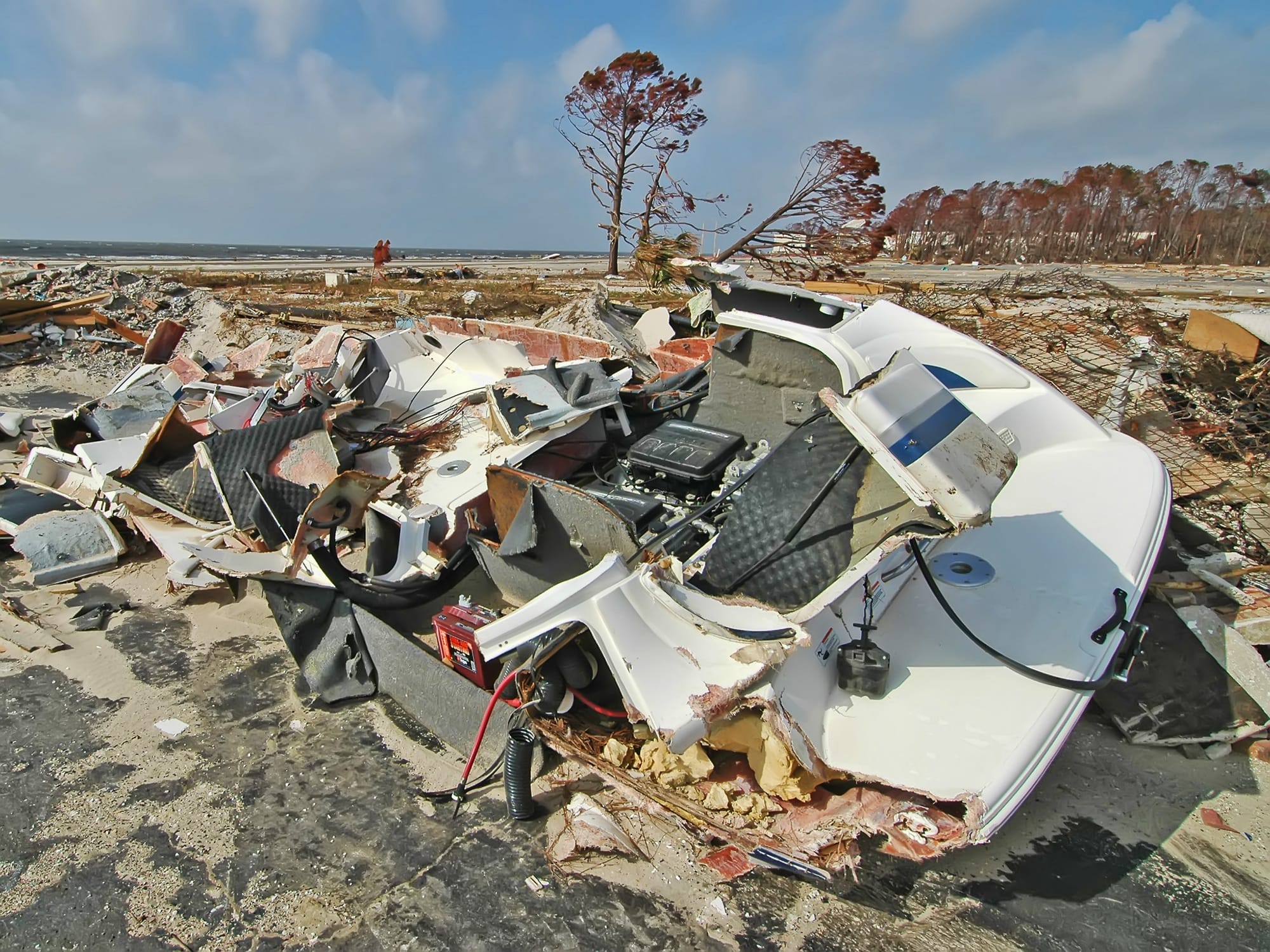
Boats (and pieces of boats) were scattered everywhere, especially near the marinas in Pass Christian and Bay St. Louis.
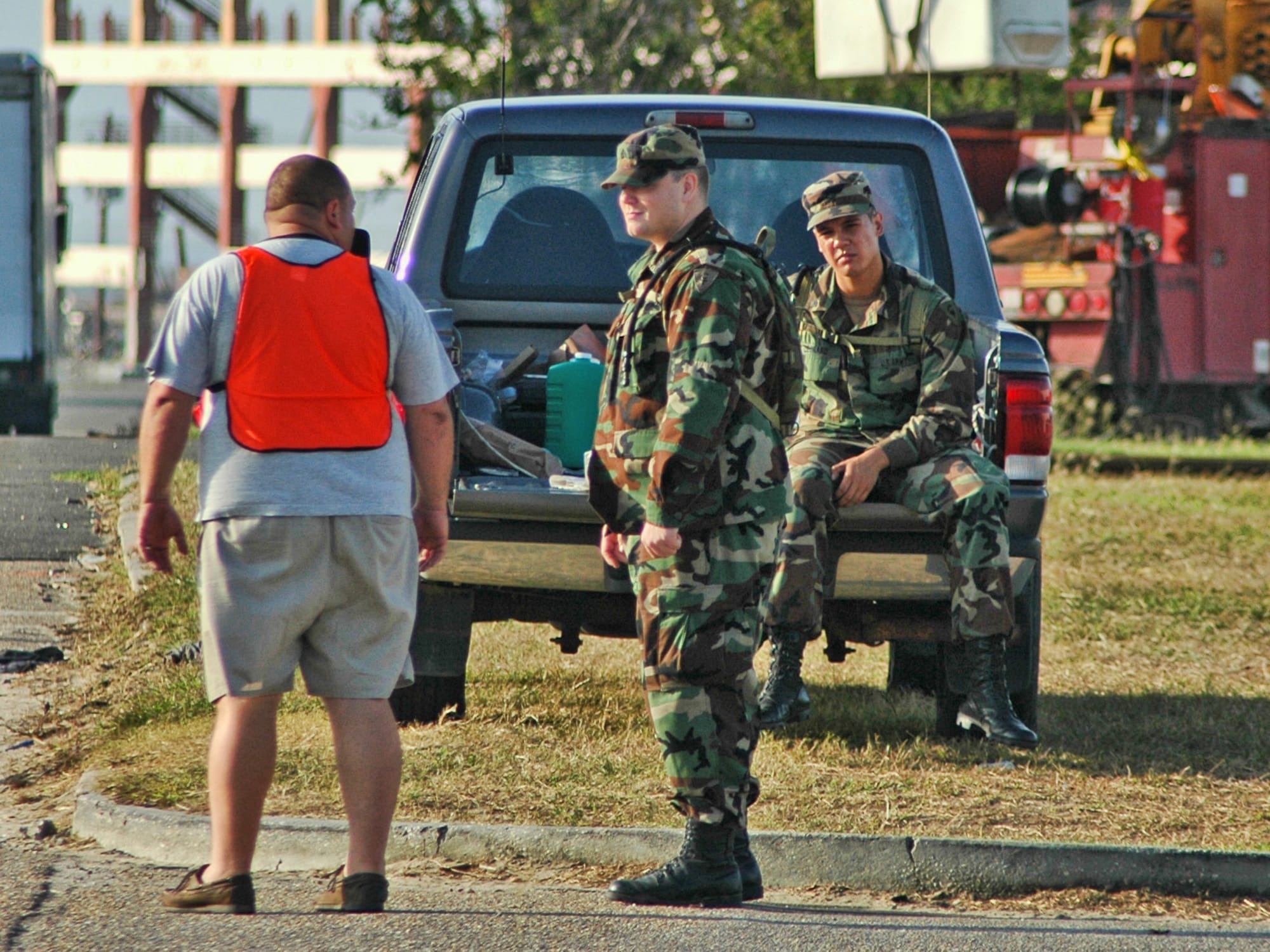
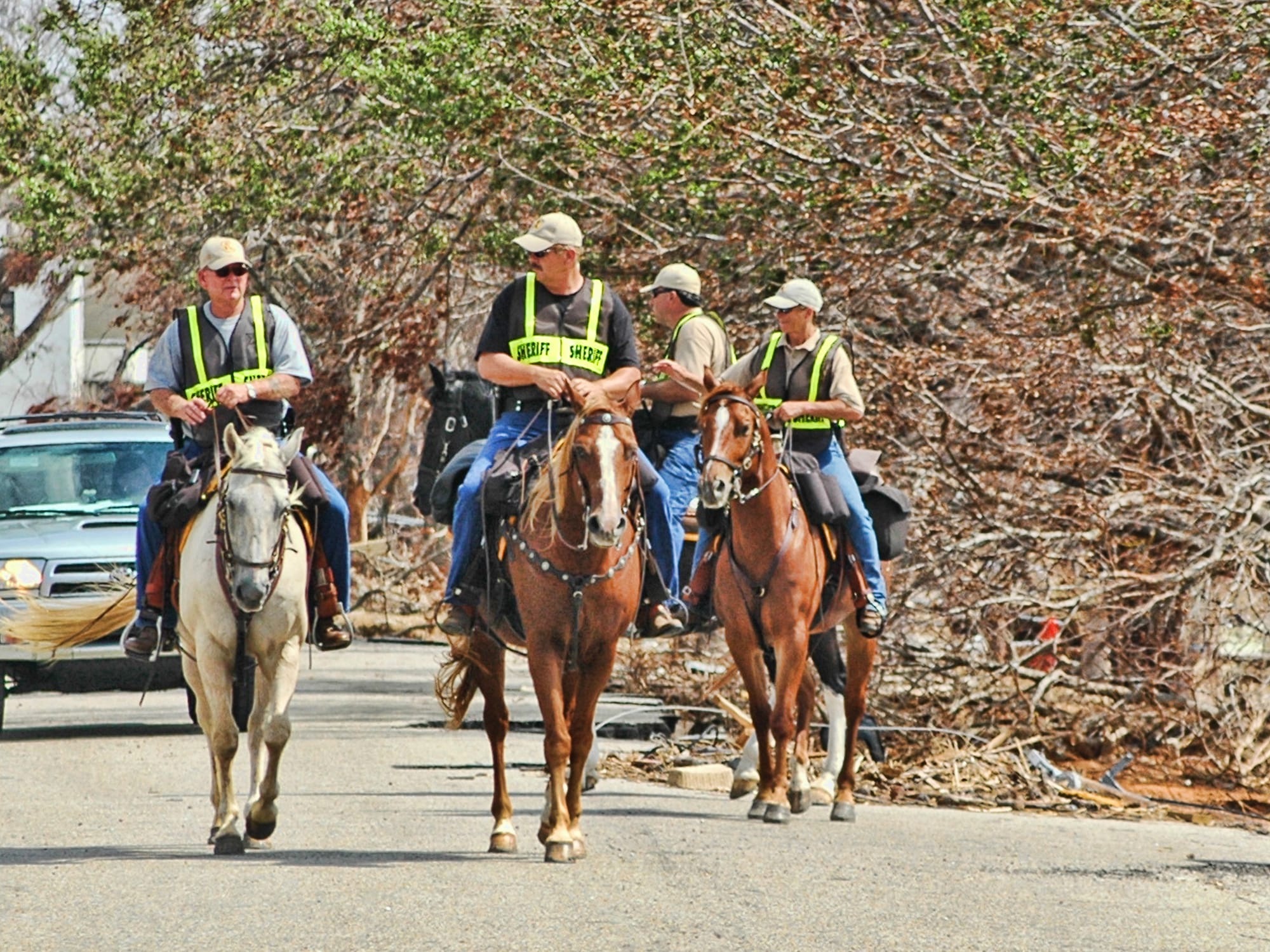
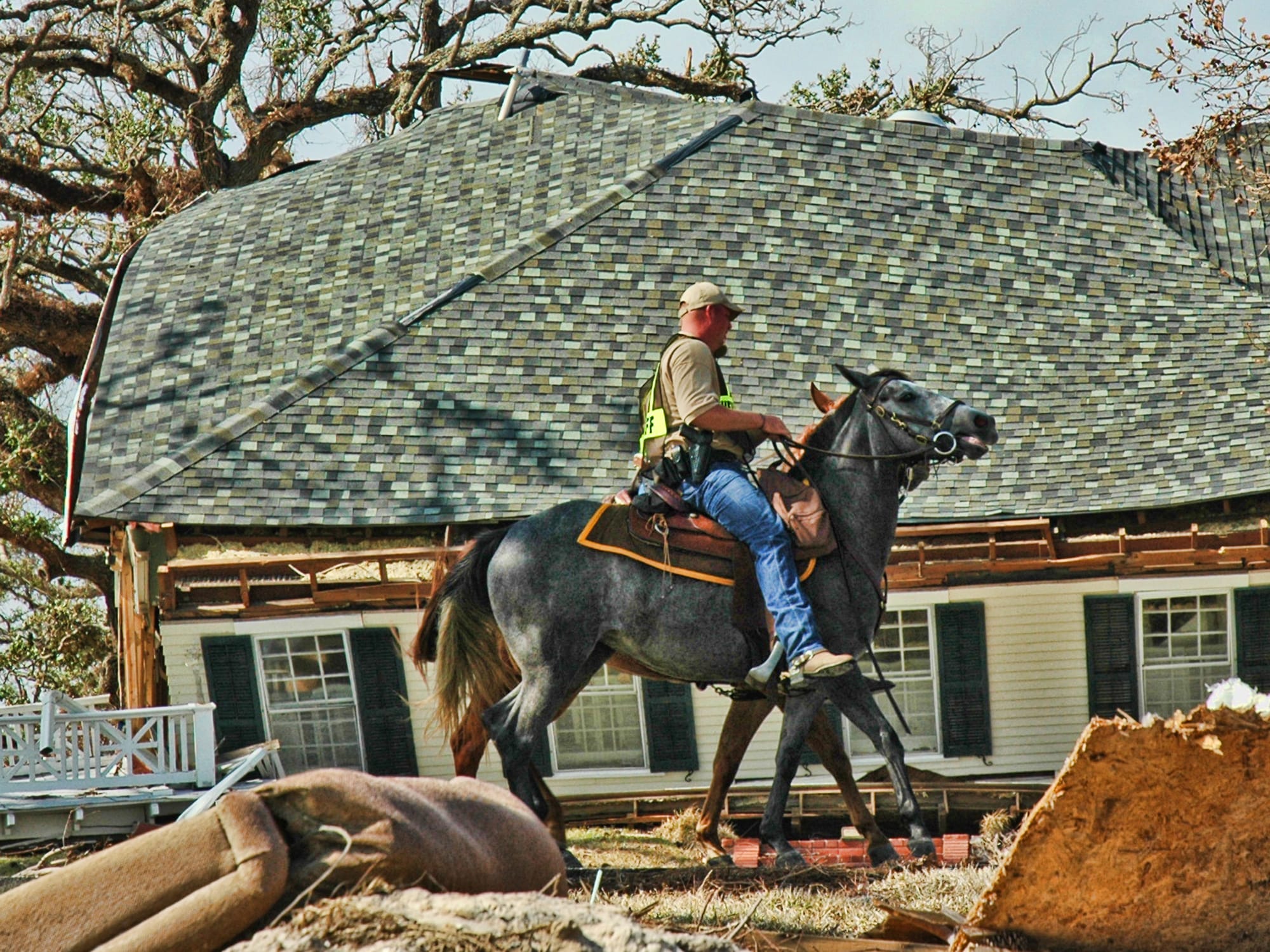
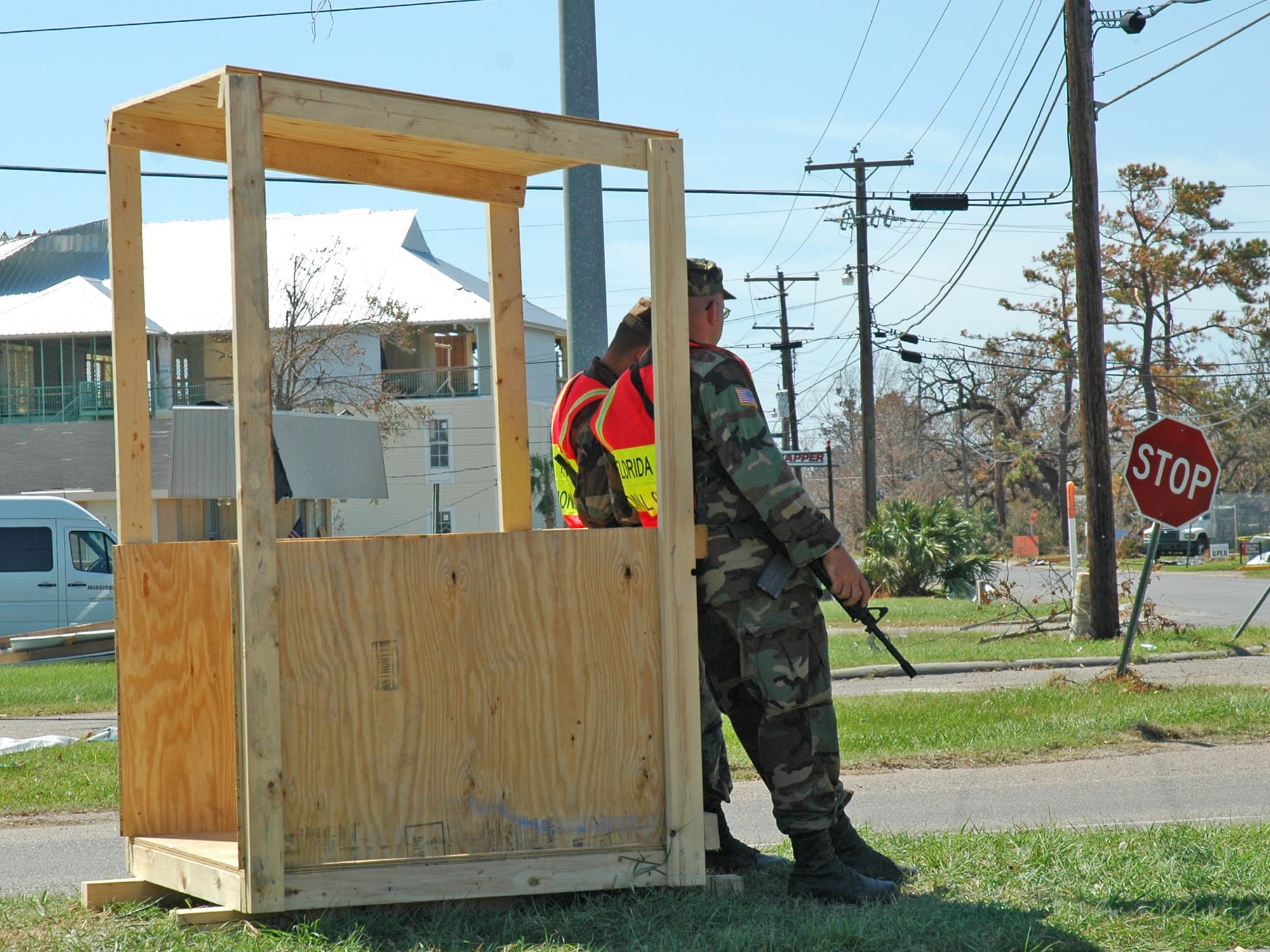
There were law-enforcement personnel all over the Coast, from all over the country.
I spoke to officers from Florida, Mississippi, Ohio, and Indiana, and saw many other states represented as well. They were in squad cars, on foot, riding horses, or on ATVs. In Gulfport it was mostly National Guard troops at checkpoints, and in Pass Christian mostly sheriffs on horseback. We heard that the worst looting in the area was around Bay St. Louis, probably because there were expensive neighborhoods there with homes that were totally destroyed and their contents scattered great distances. We noticed that the soldiers and cops at Bay St. Louis checkpoints kept their rifles in their hands, but over in Pass Christian and Gulfport we never saw them holding weapons.
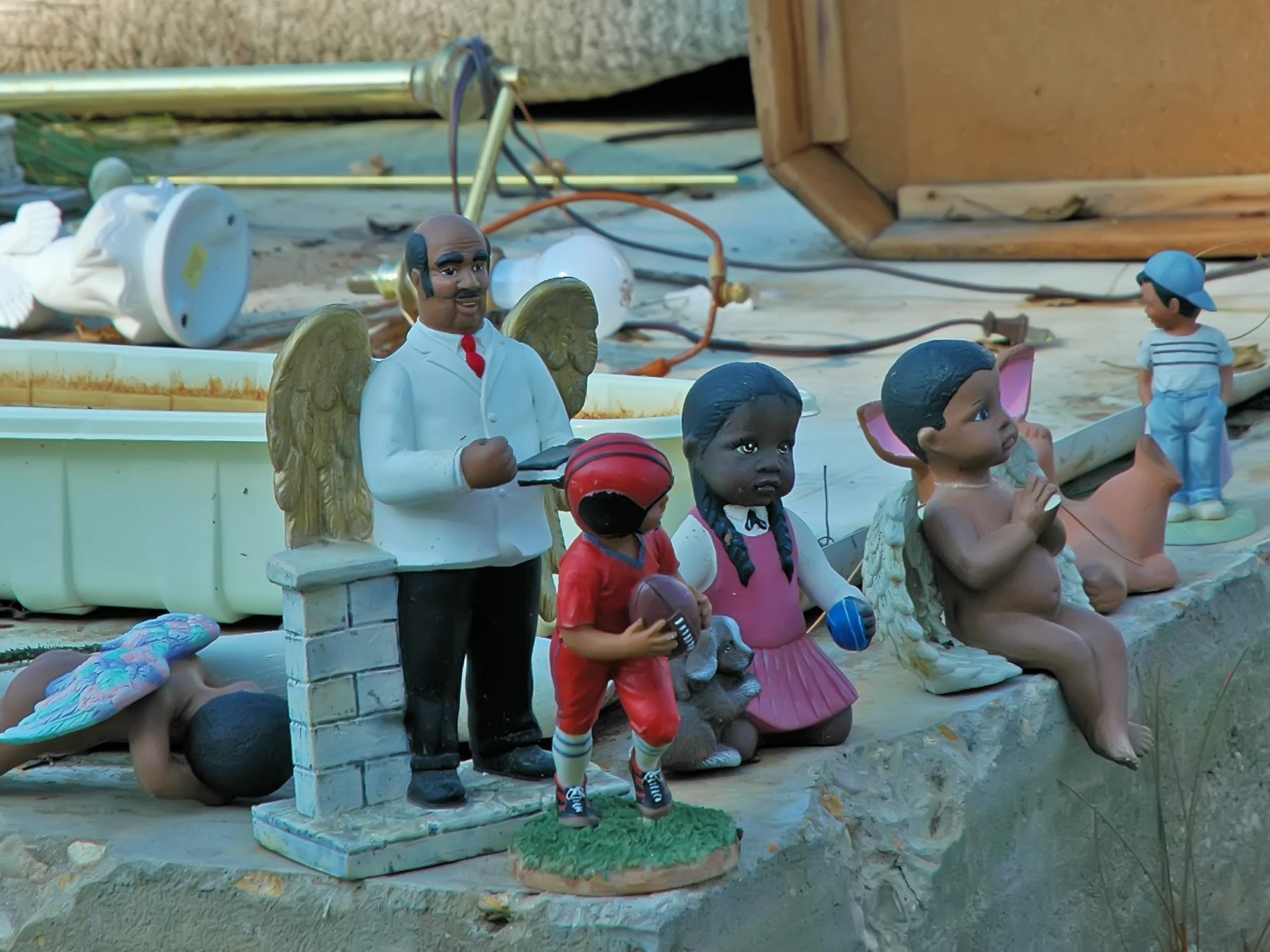
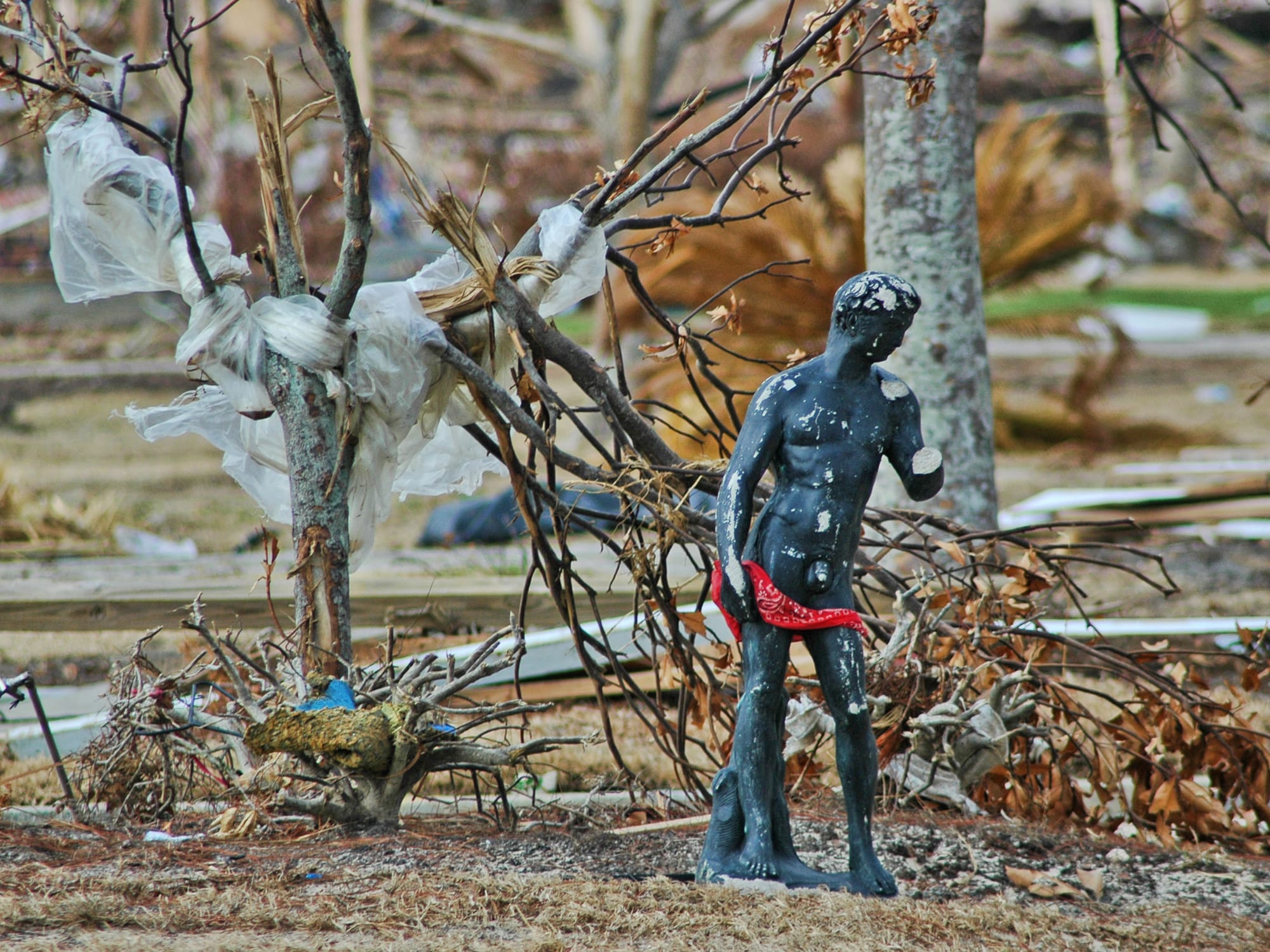
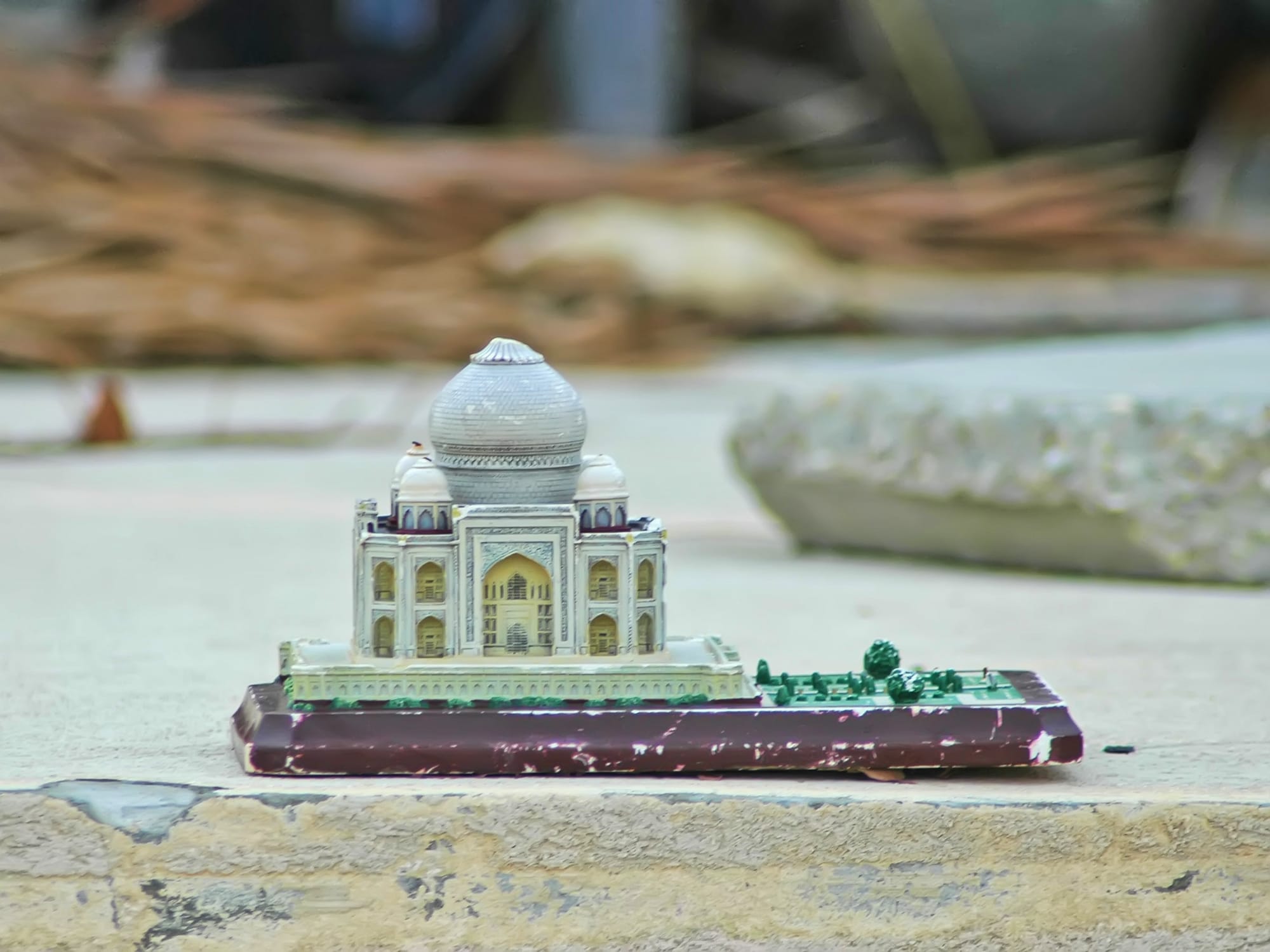
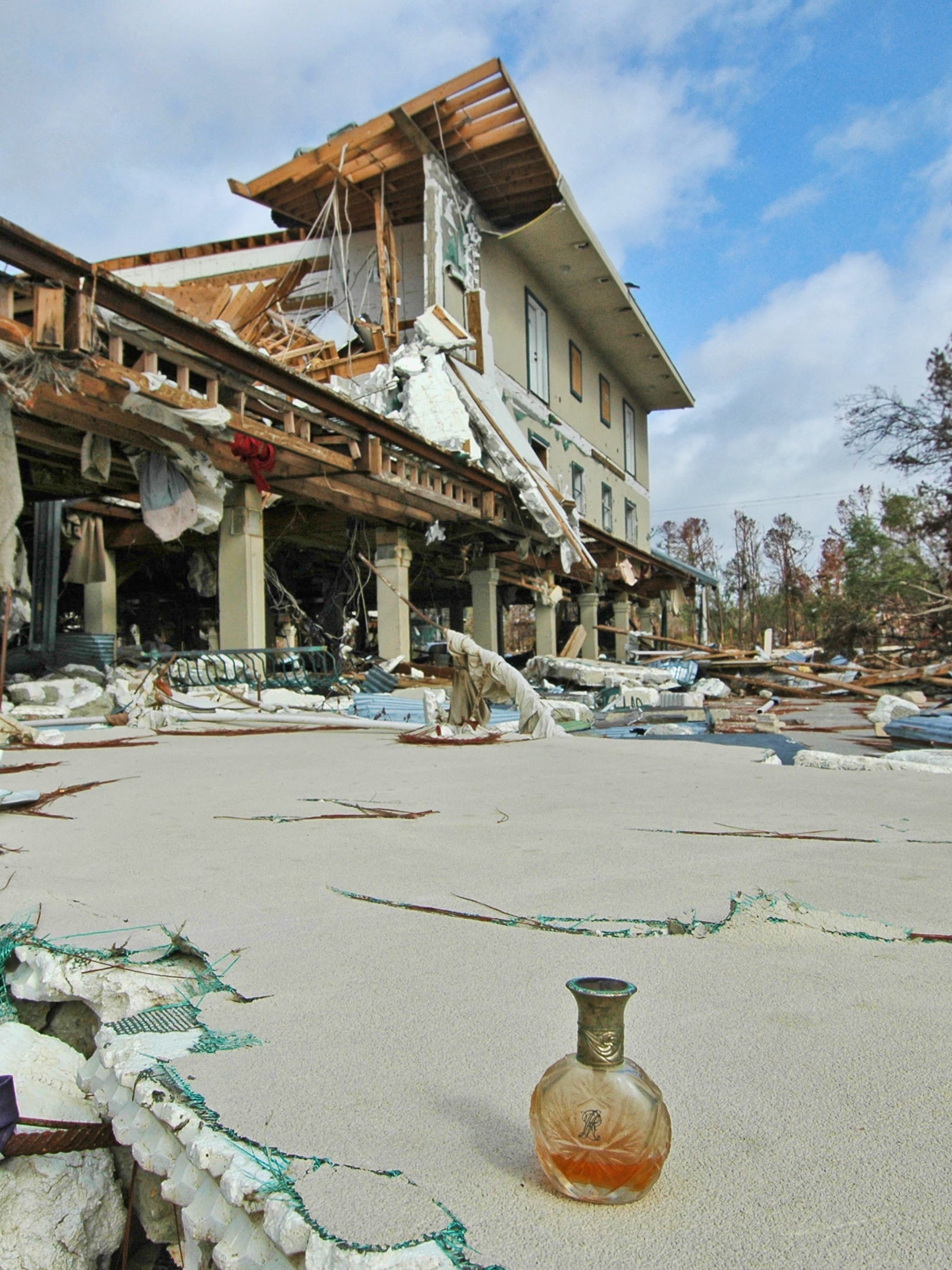
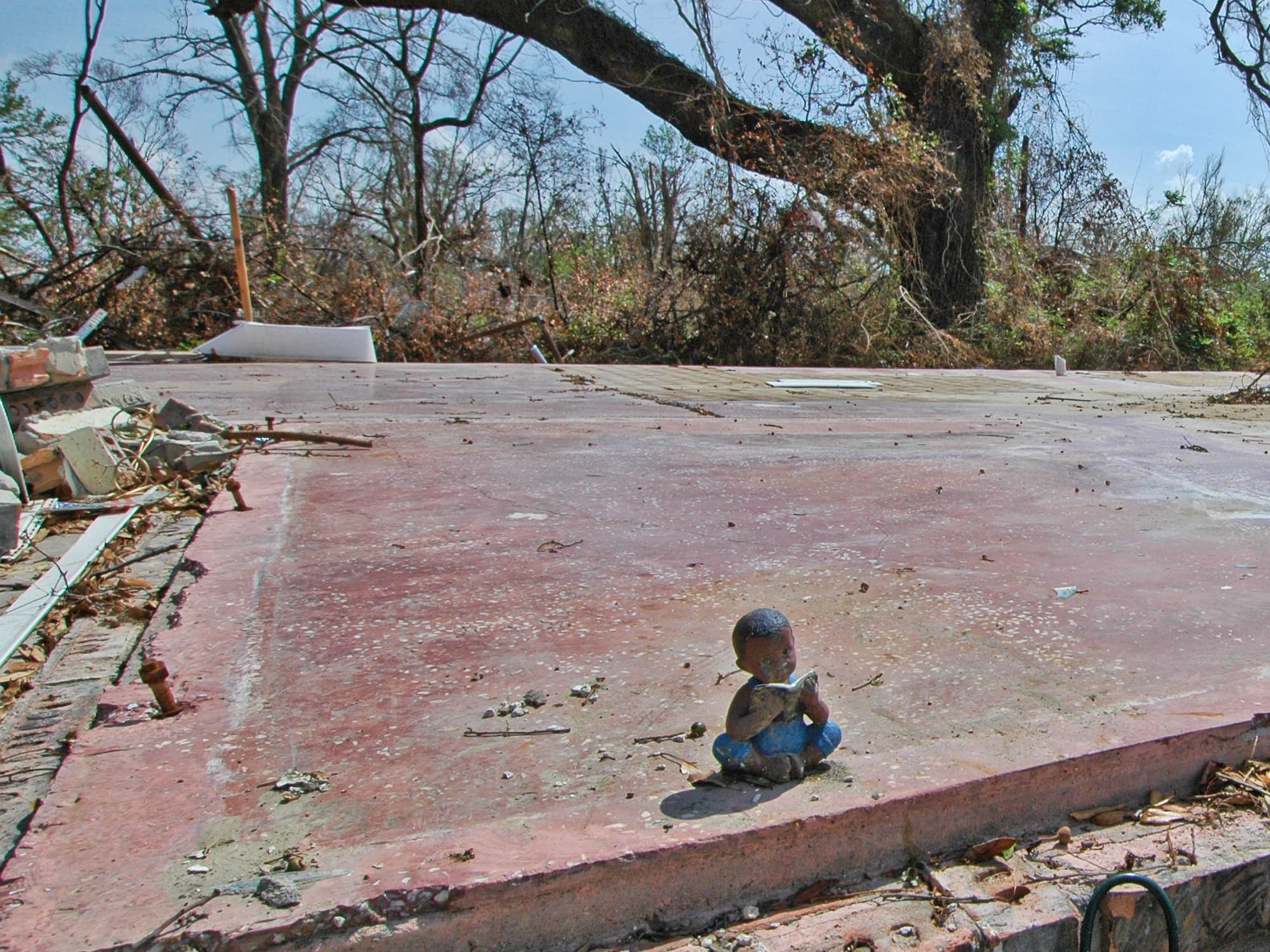
People who found toys, jewelry, or other possibly sentimental items would often put them out front of the destroyed structure they came from, to make it easier for the owner to find them when they returned.


I took Gloria back to her apartment one last time.
I had been planning to search Gloria's back bedroom on this visit, because we had only searched the front bedroom and living room on our previous visit. But it was such a rotting stinking mess by now, after baking in the heat for two weeks, that we decided to skip that.
Gloria recovered a couple of house plants, and spoke to a neighbor who was there to search for the bird cage of Chiquita, an elderly neighbor with Alzheimer's who was still missing. Chiquita's apartment had "dead female" spray-painted on the window the day after the hurricane, but later the window was broken out and it wasn't clear whether there had been a body recovered or not. The neighbor woman had been trying to get an answer from the coroner's office, and they thought they had the body but then it turned out to not have Chiquita's surgery scars so it was somebody else.
Chiquita's sister said that she wouldn't have evacuated without her bird, so the woman above returned to search for the bird cage in the wreckage. If the bird cage was gone, then maybe Chiquita and her bird had been evacuated by someone.
I tried to kick down the front door for her, but there was too much stuff behind it and it wouldn't budge, so she went in through a broken window instead. She was looking through Chiquita's apartment for the bird cage when we left. We don't know whether she ever found it.
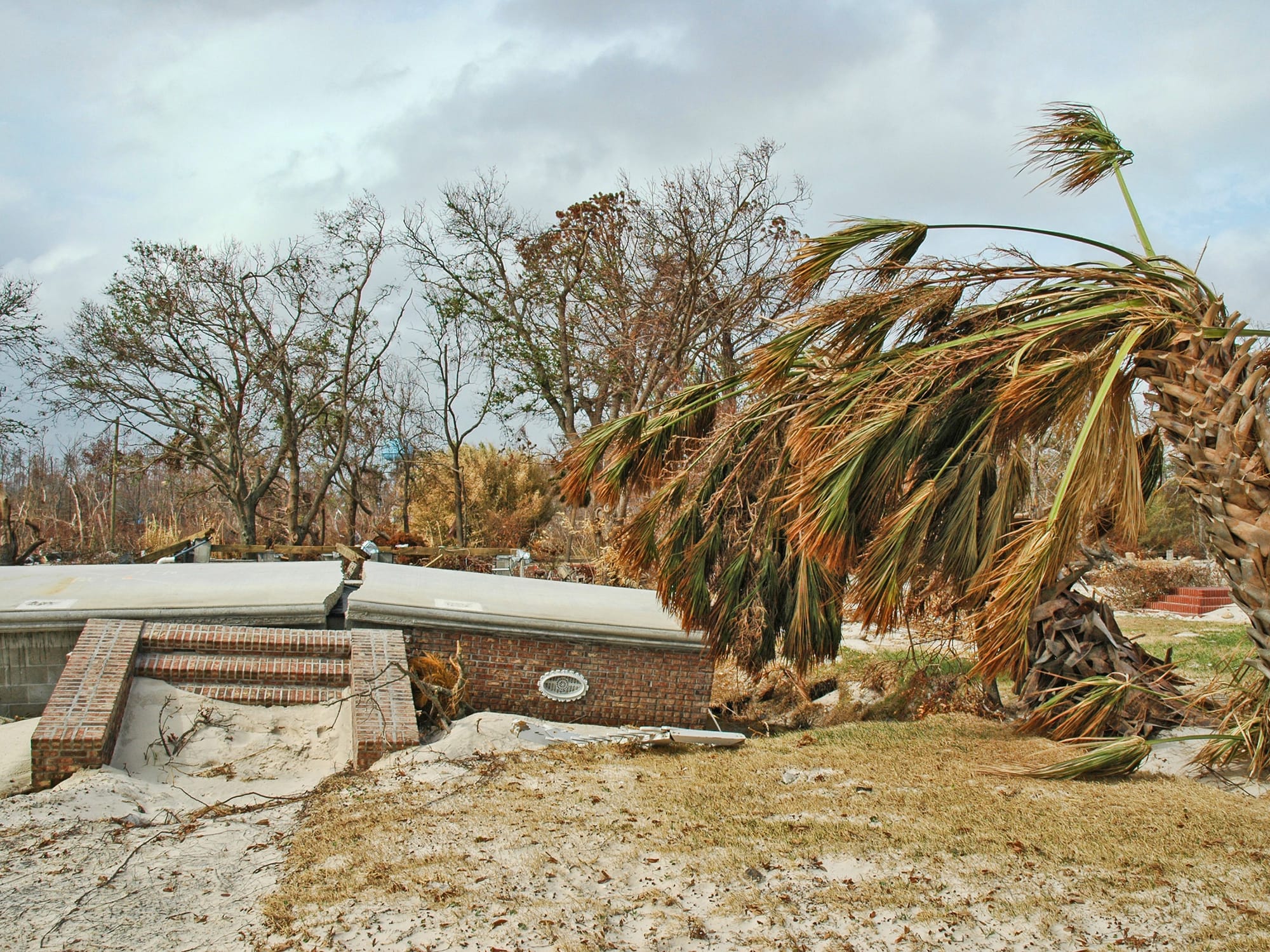
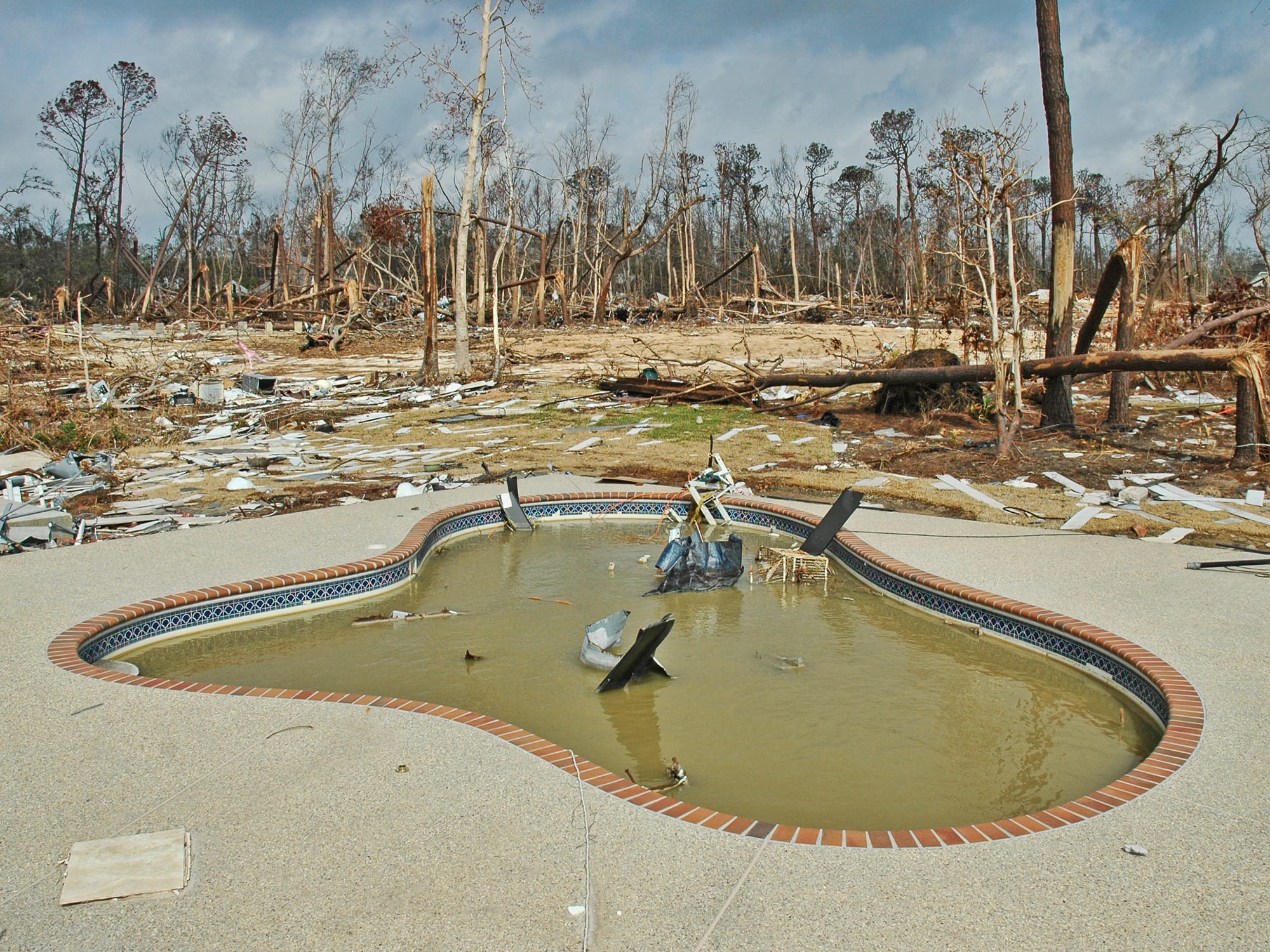
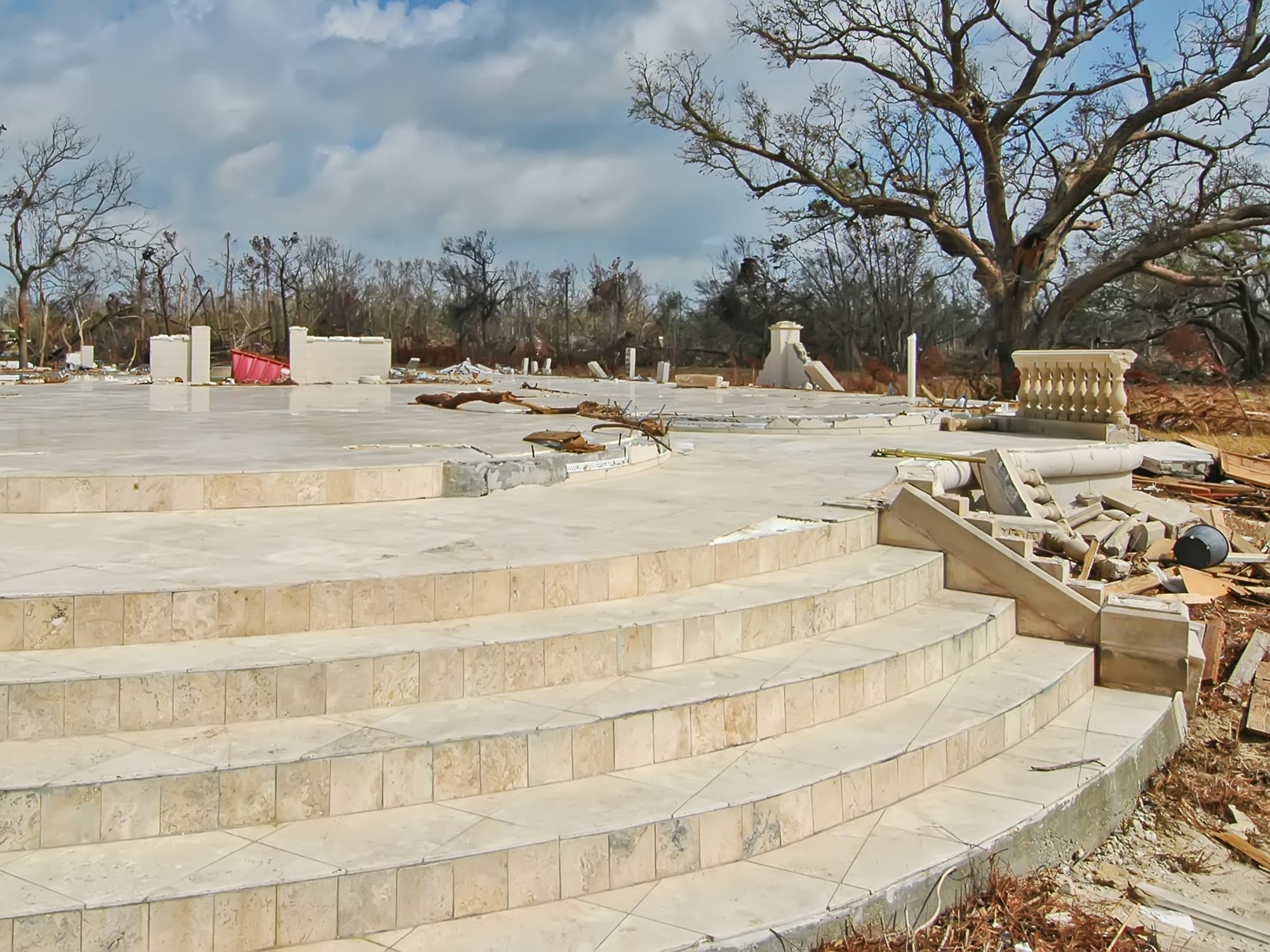
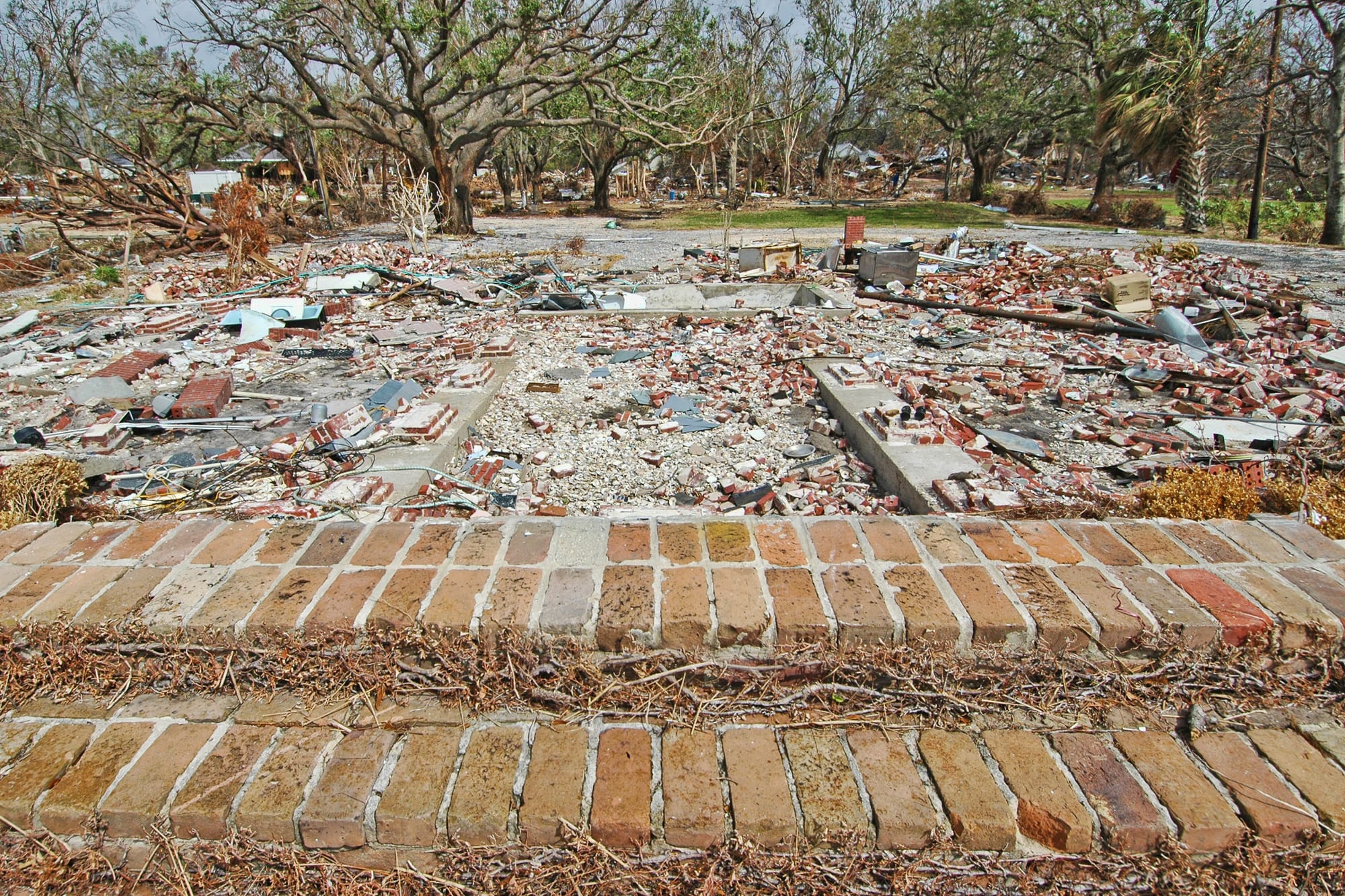
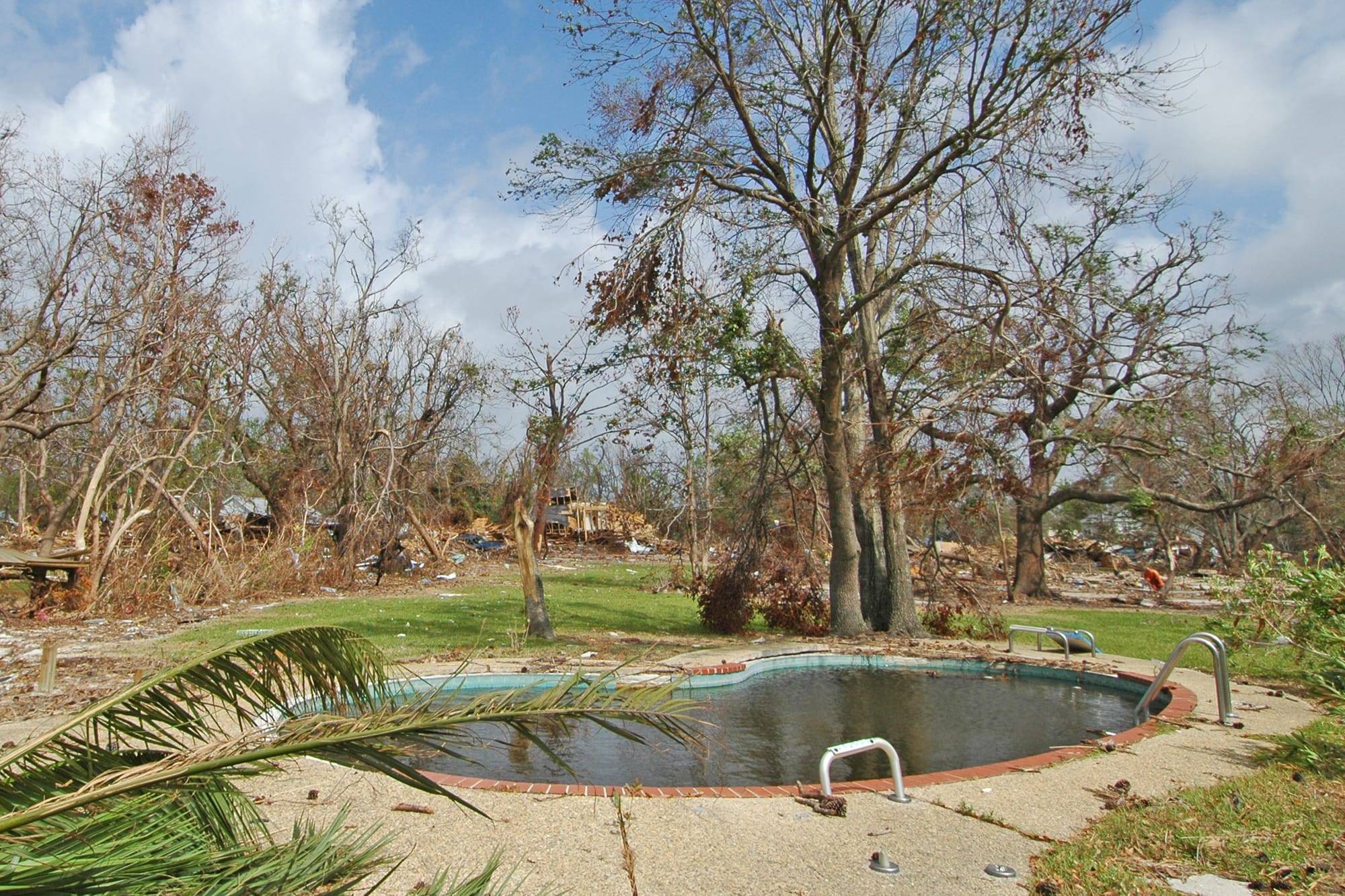
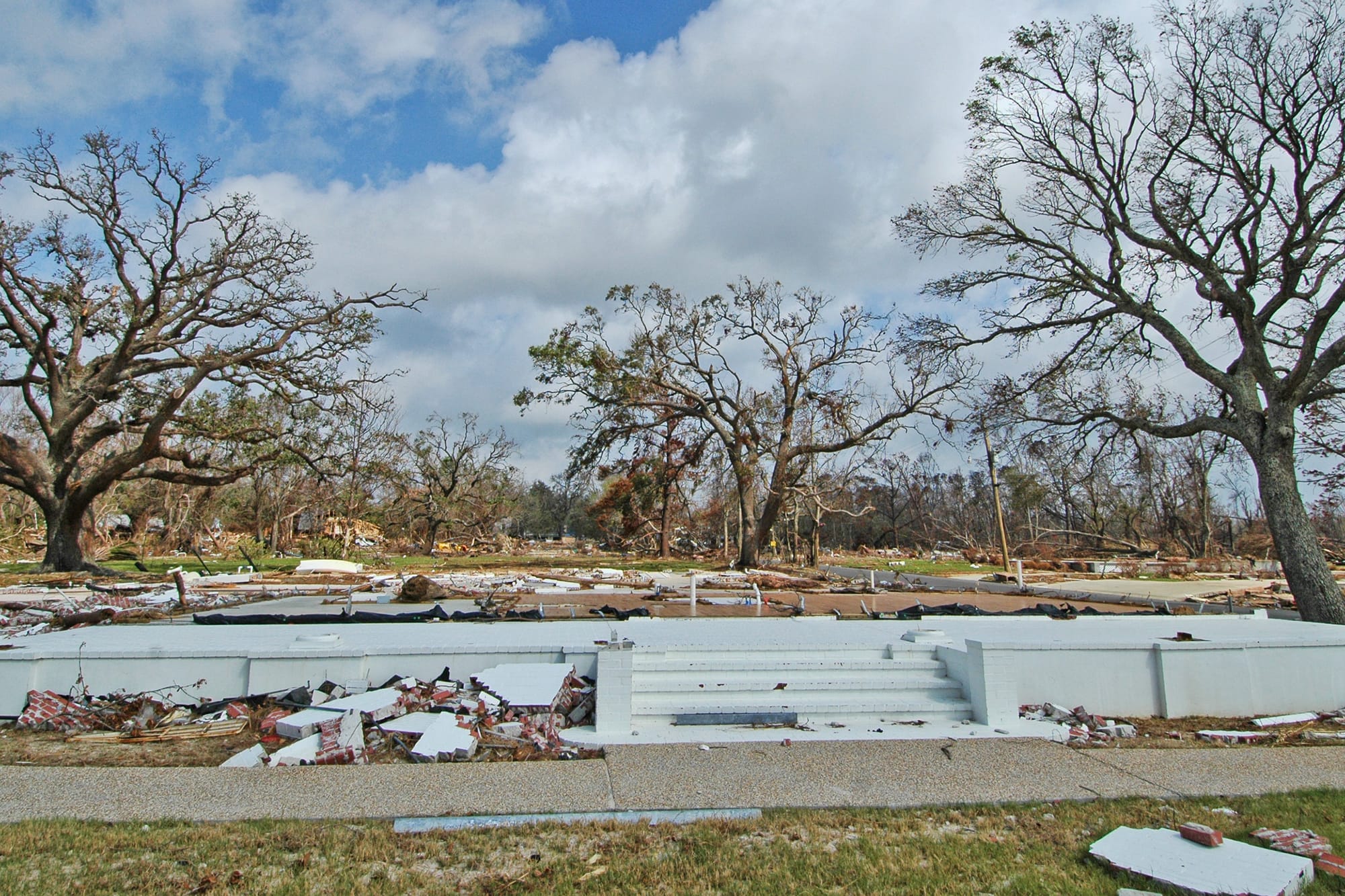
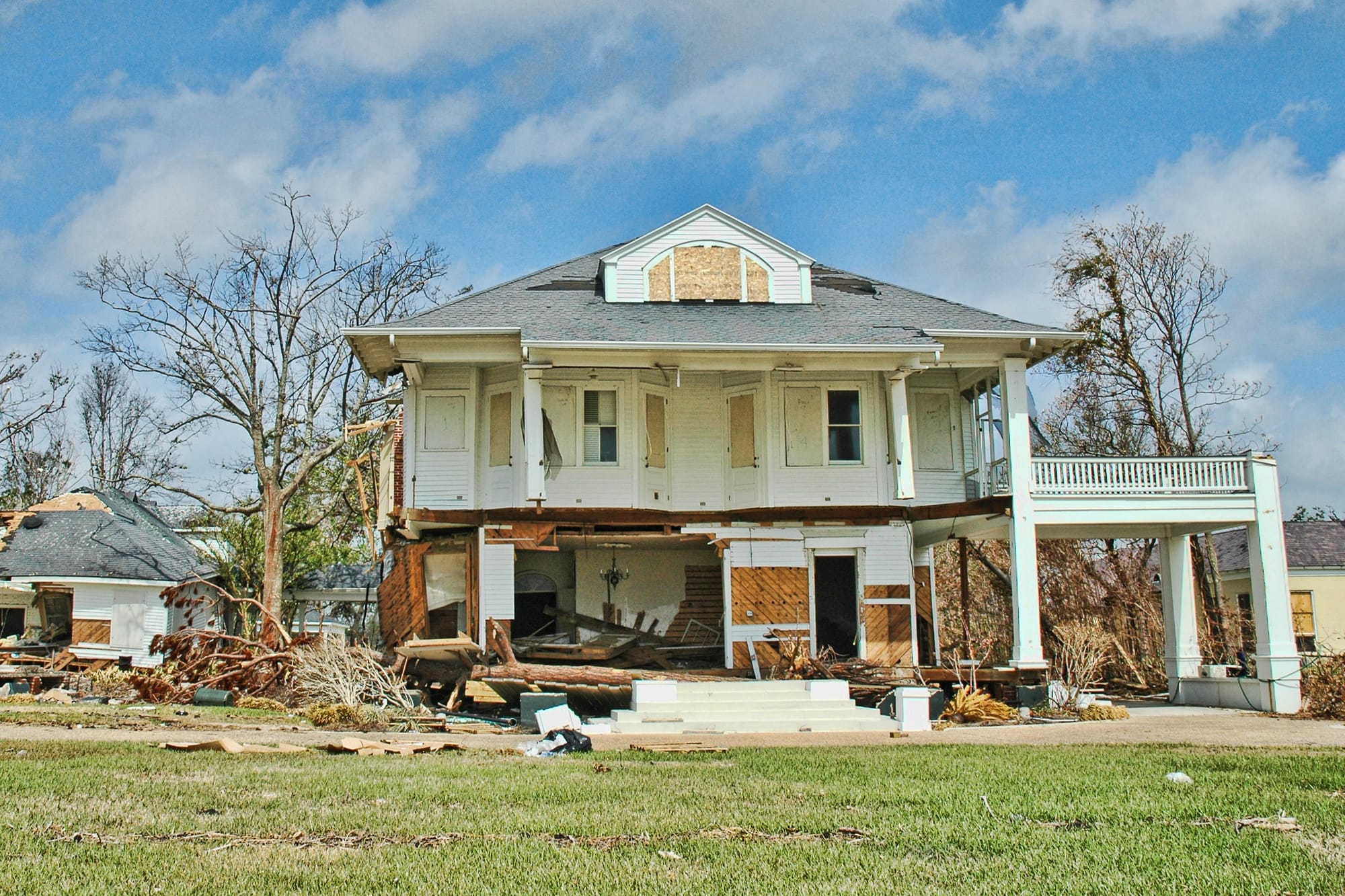
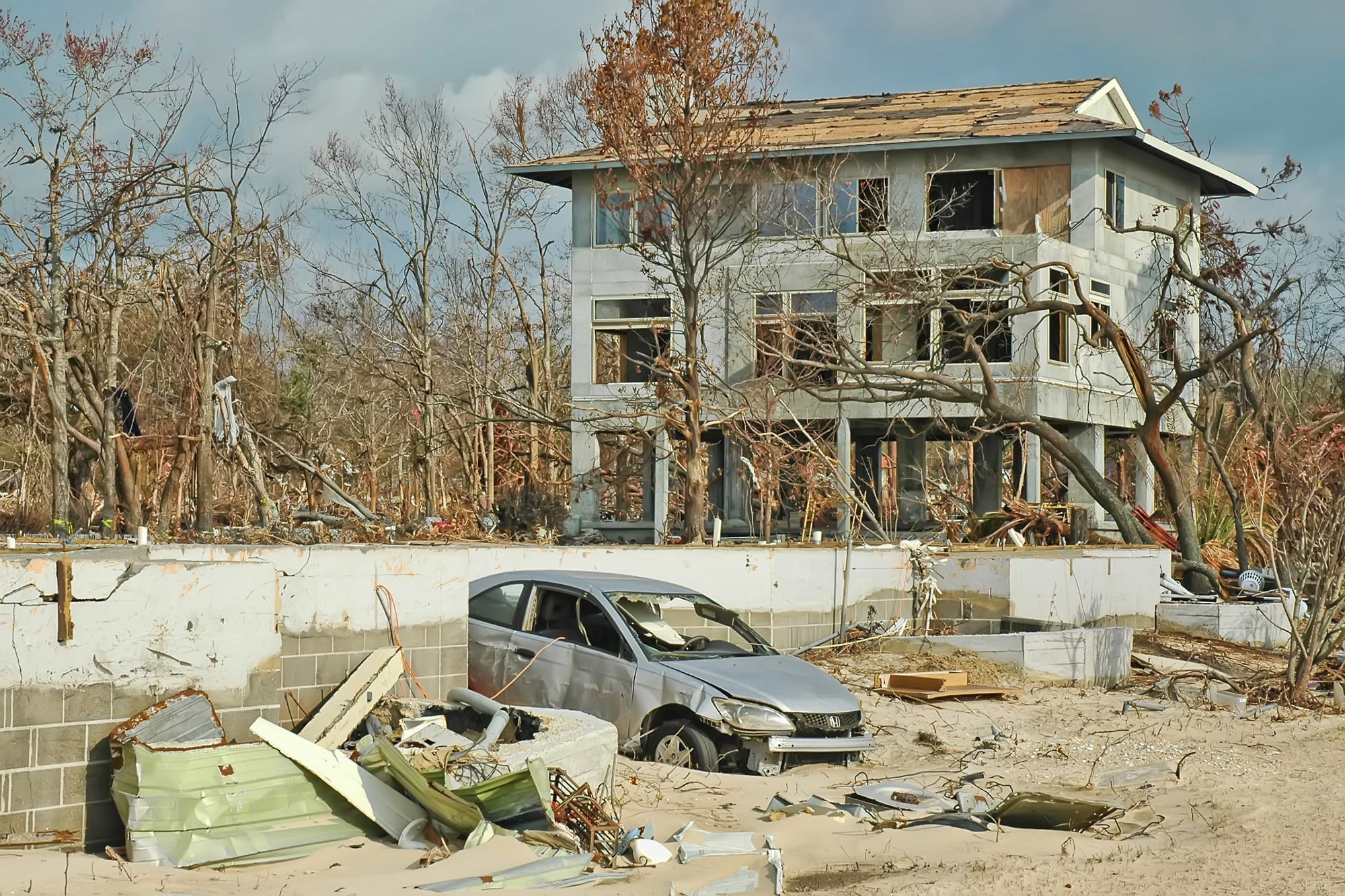
Down along Beach Boulevard, most of the houses were scrubbed clean, leaving nothing but the foundations.
The last two photos above are two of the only houses that close to the water that remained standing after the surge. A cop told me that the last house had been designed to withstand winds of up to 300 mph, and that the owners intended to rebuild. (300 mph is higher than has ever been recorded for a hurricane - Katrina's winds were about 140 mph when it made landfall.)
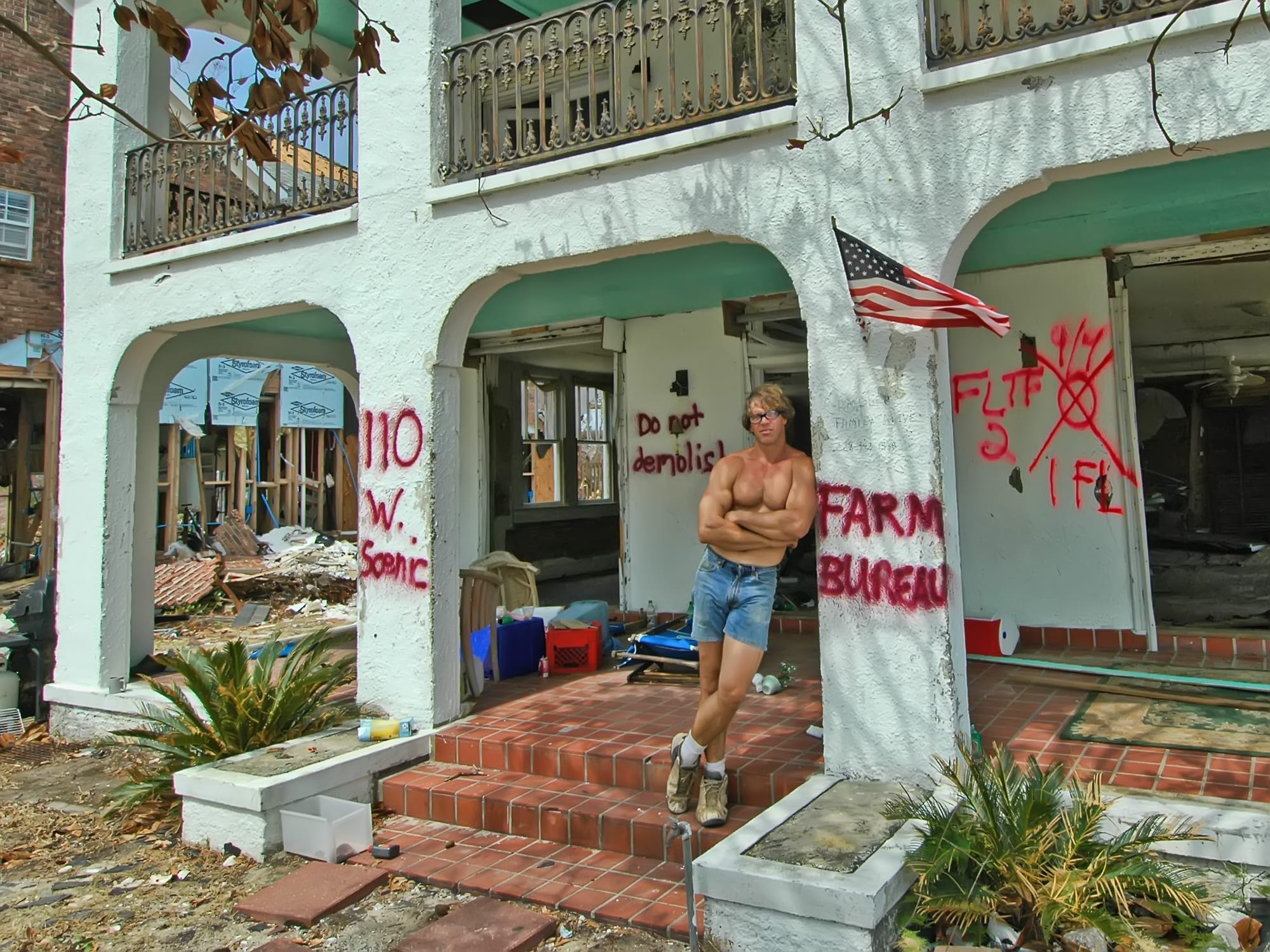
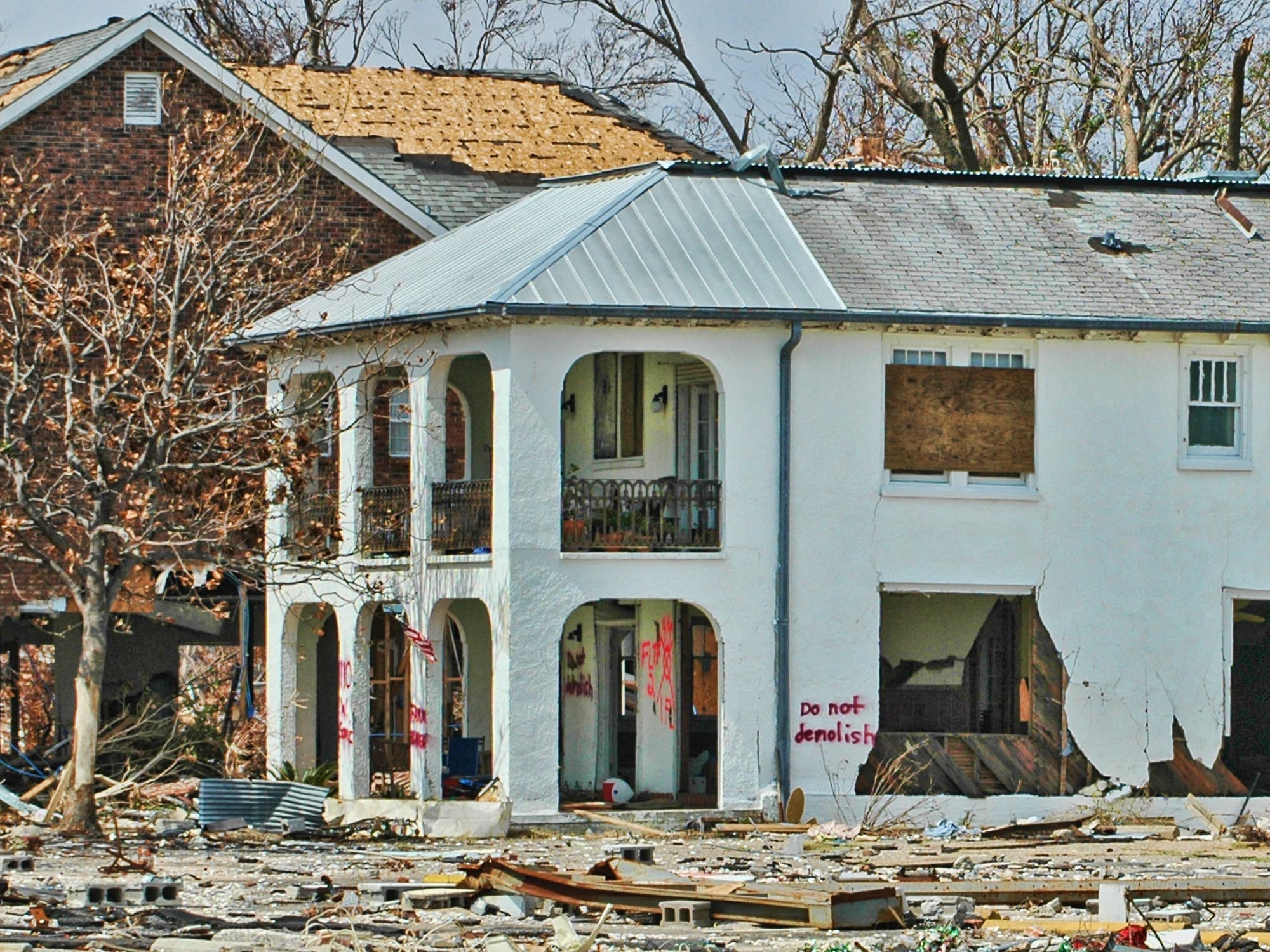
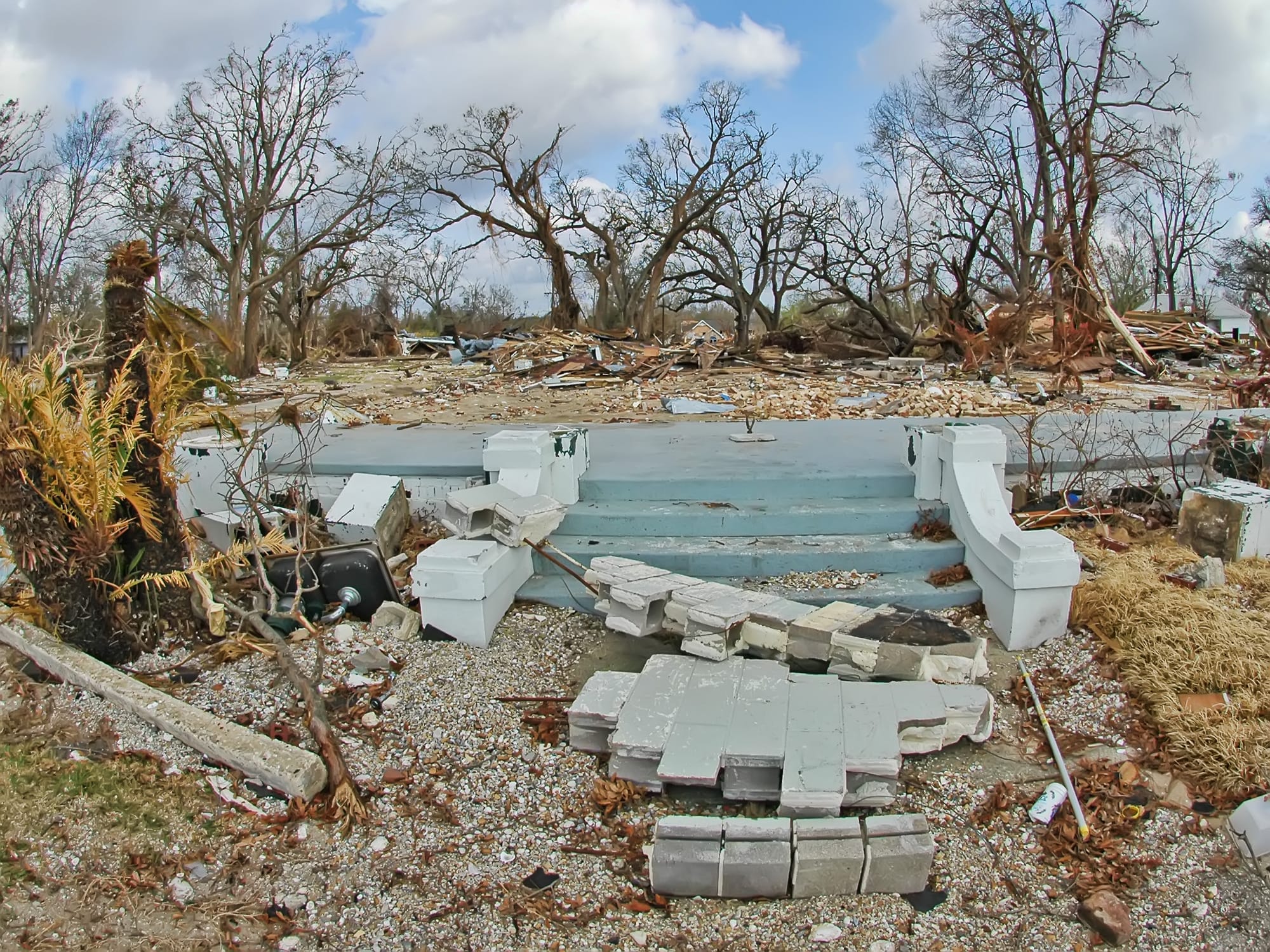
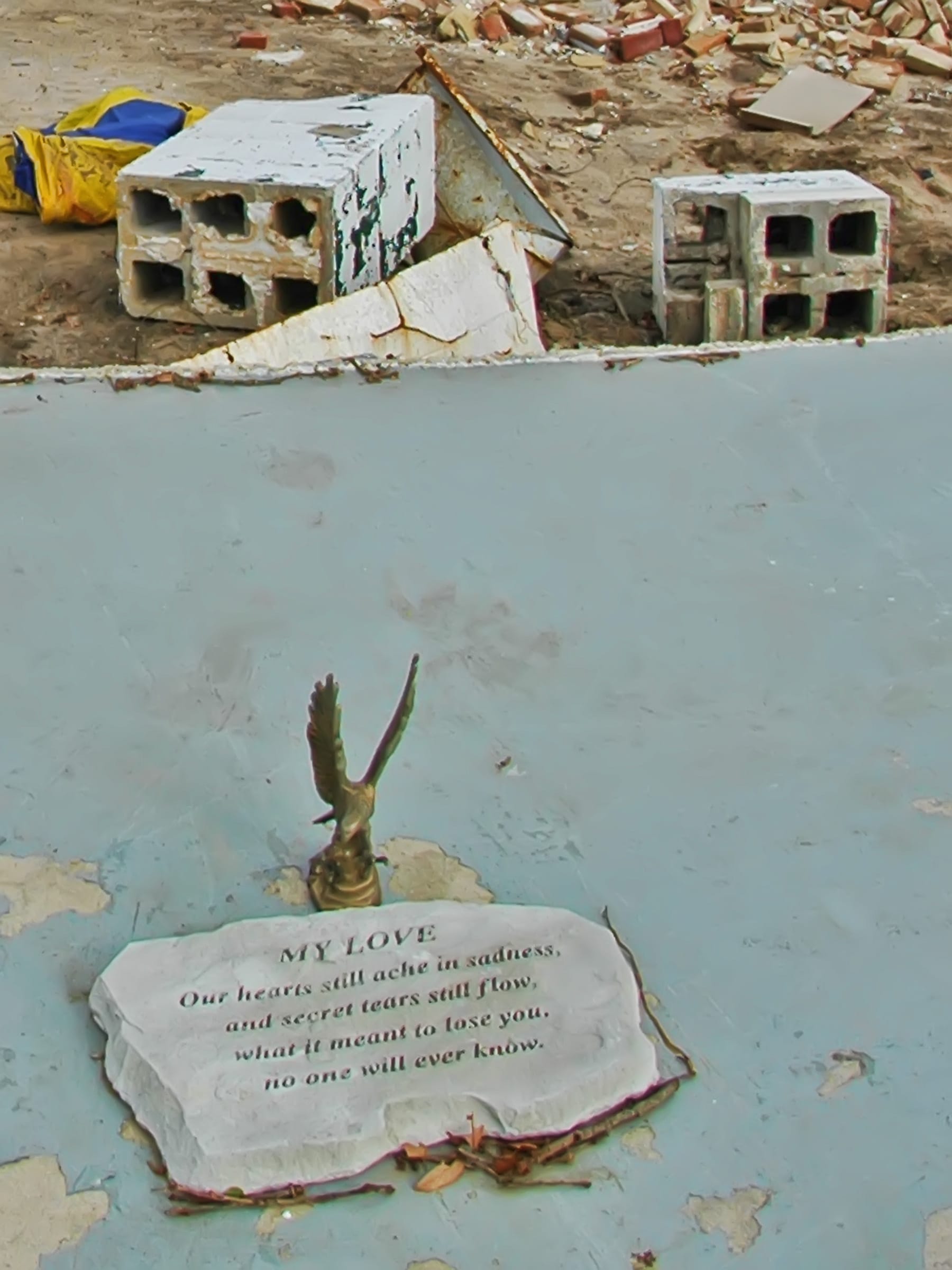
An amazing drama played out at this location, one block inland from Pass Christian Harbor.
Greg Campbell (pictured above) and his family of six rode out the storm while standing in water flowing through the second floor, and they all survived. During the storm, the nearby Harbour Oaks Inn disintegrated, and owners Diane and Tony Brugger were swept away. They clung to an oak tree (in the background of the third photo) as the storm raged, but Tony lost his grip and drowned. Greg then worked with others to rescue Diane from the tree and get her back into his house.
The only thing left from the Harbour Oaks Inn was the front steps, and the fourth photo shows the plaque Diane left there in memory of Tony. By the time I was there three weeks later, Diane had moved to St. Louis.
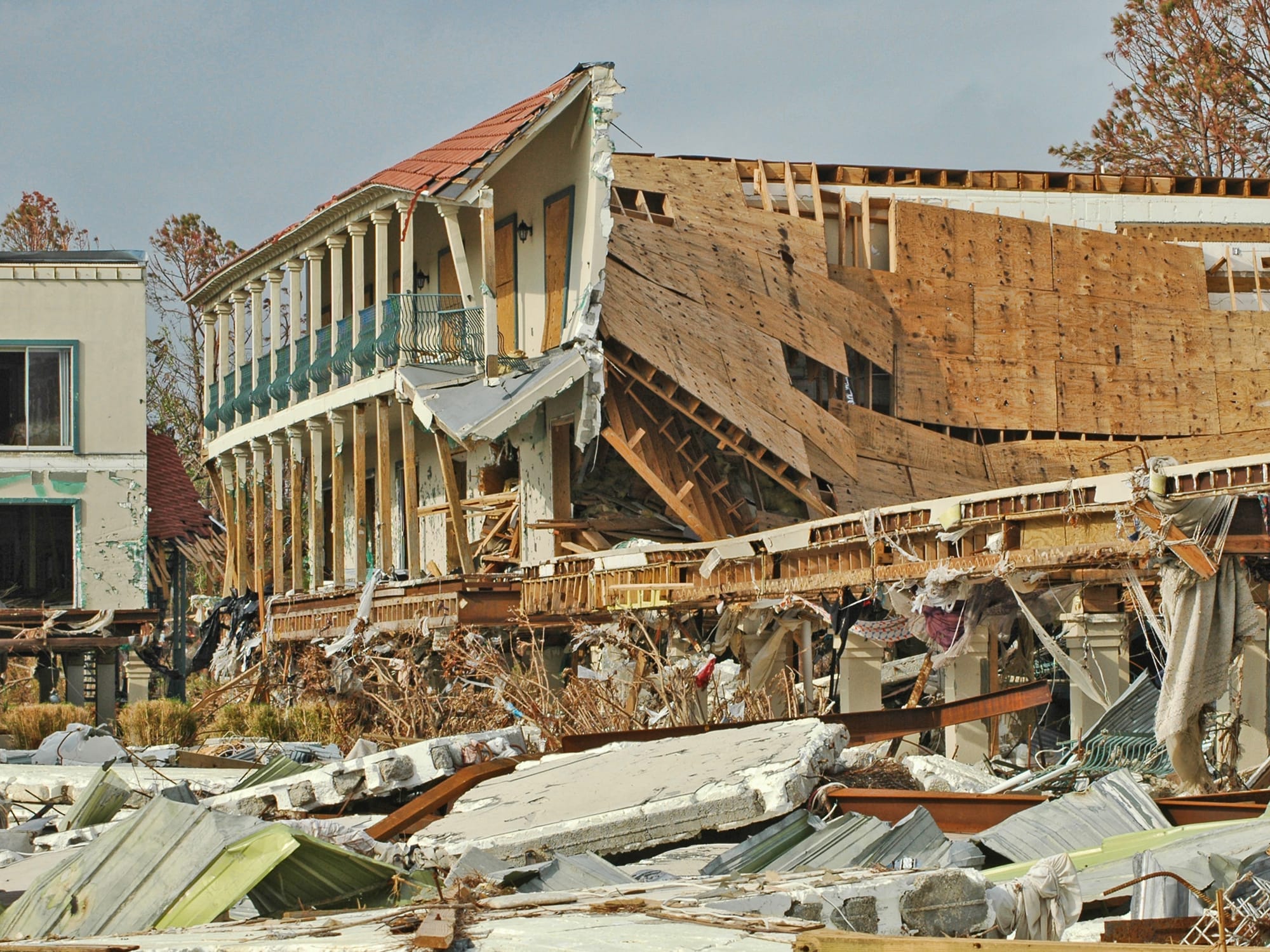
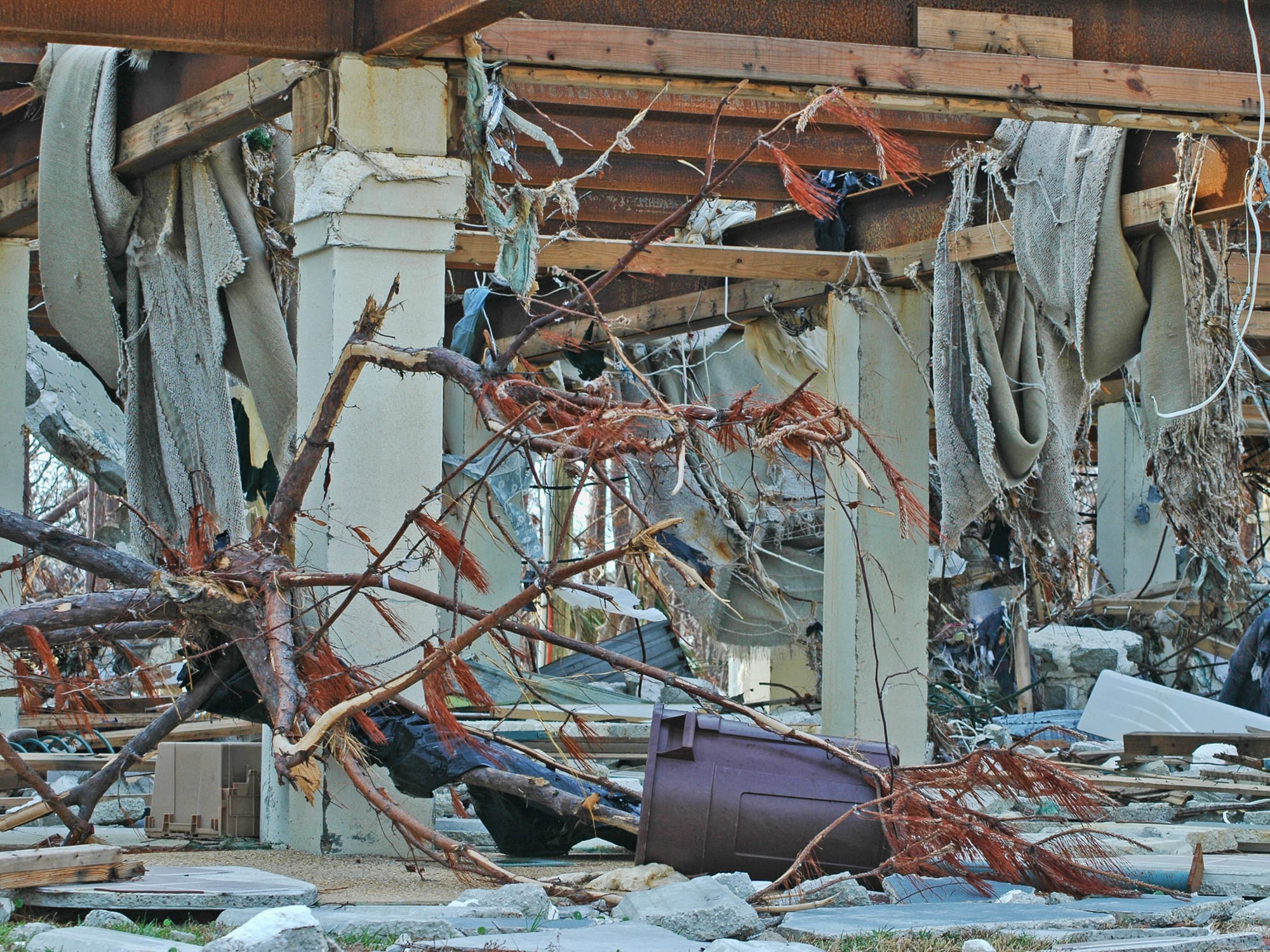
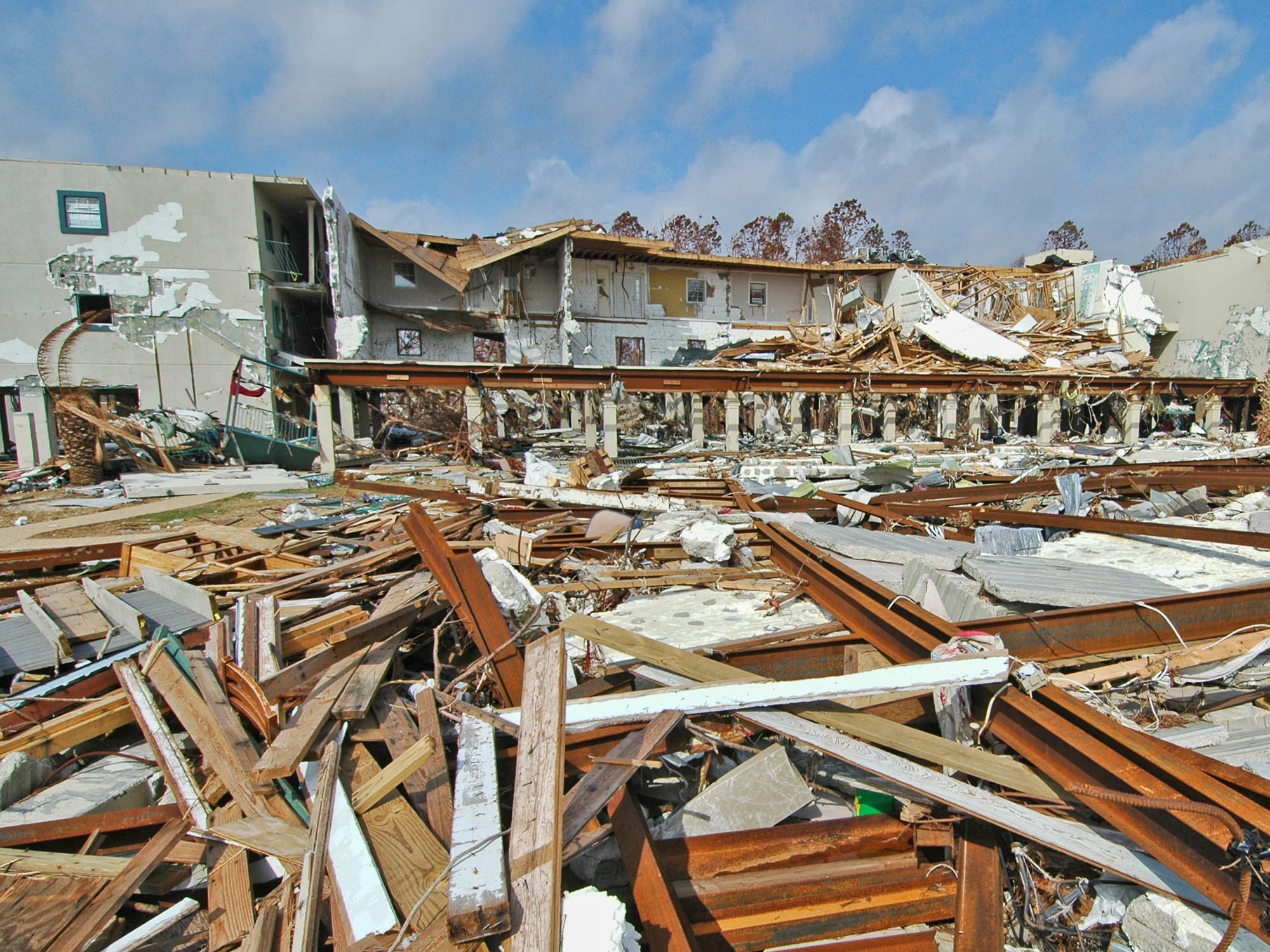
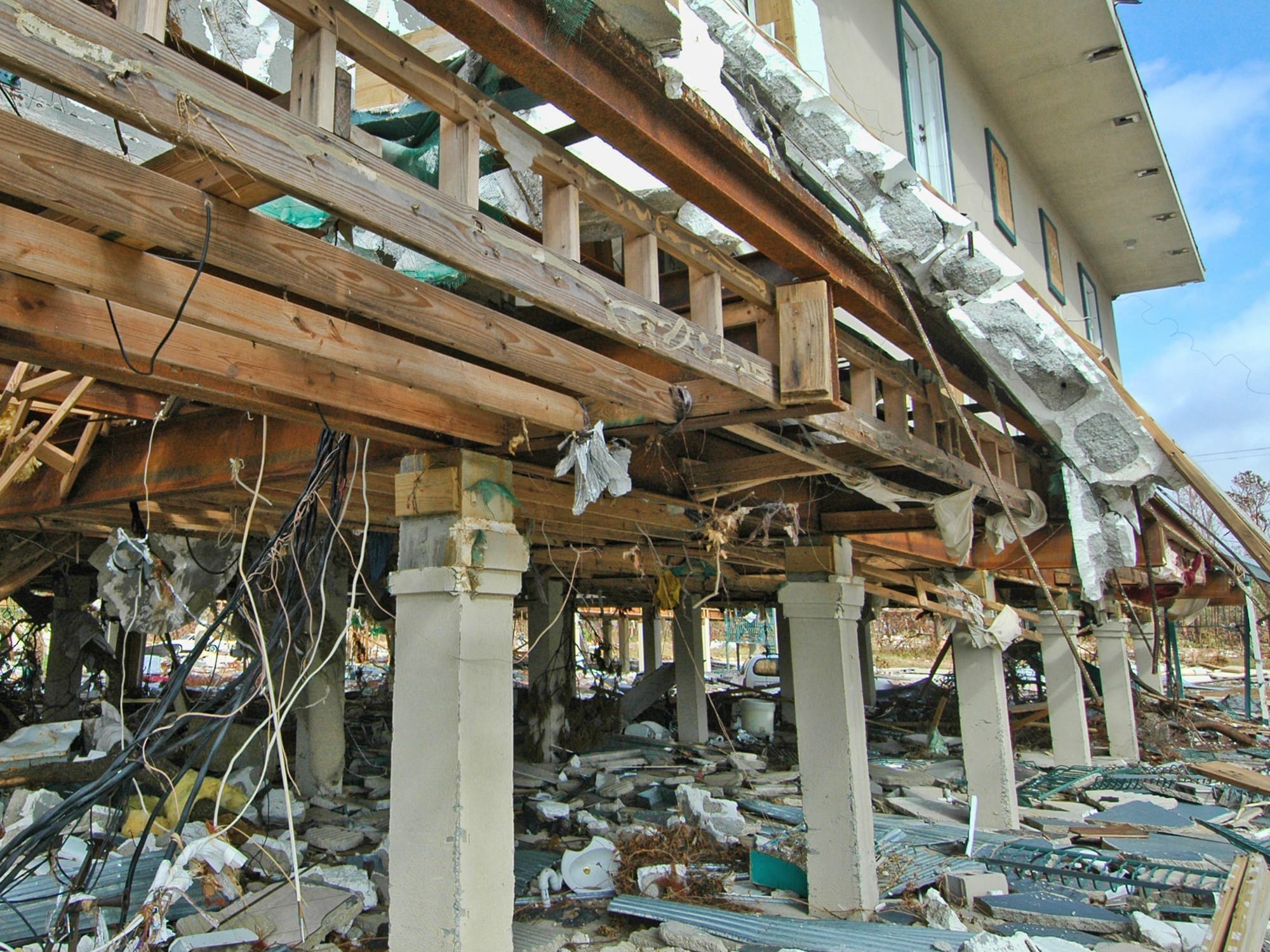
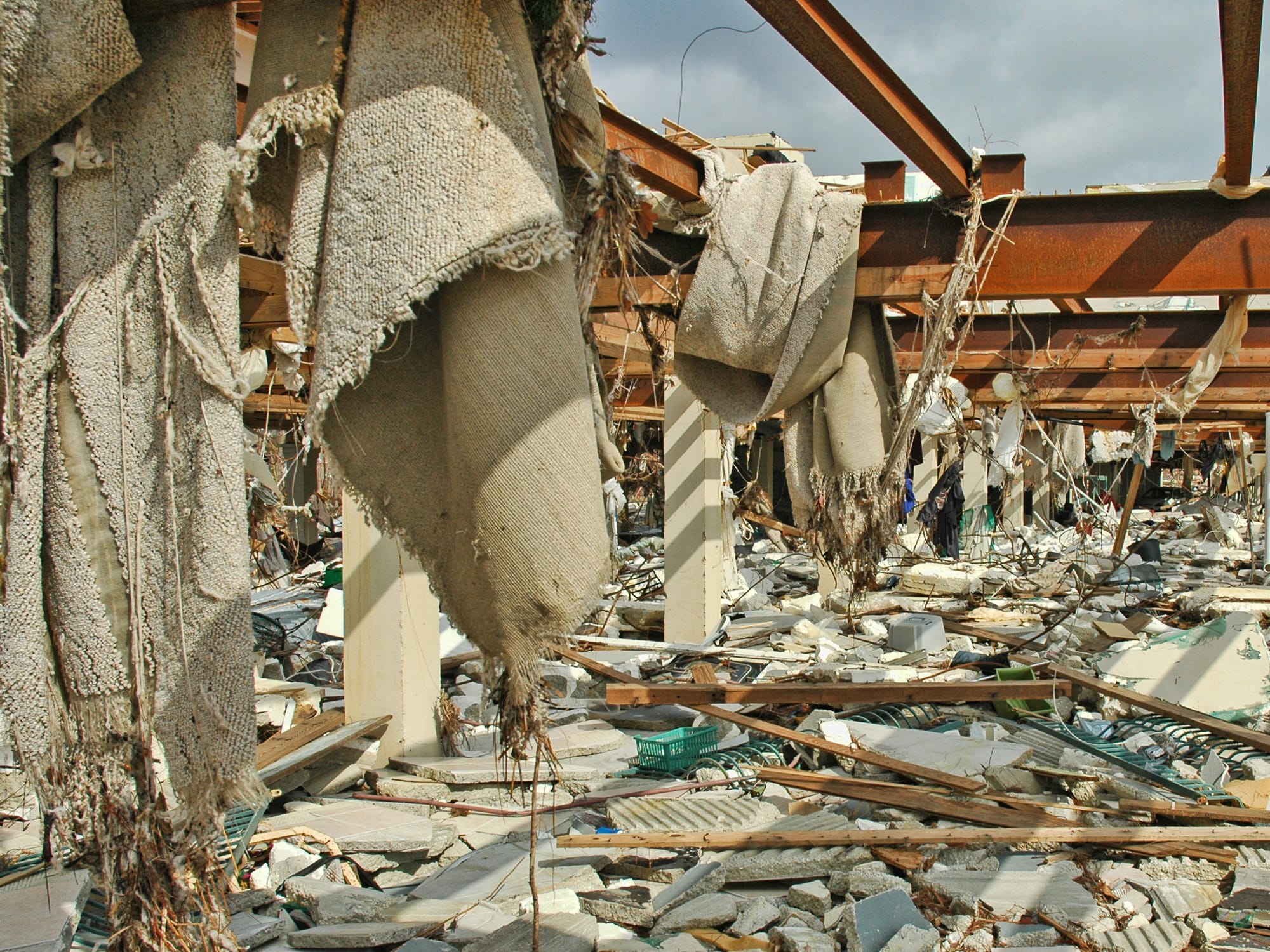
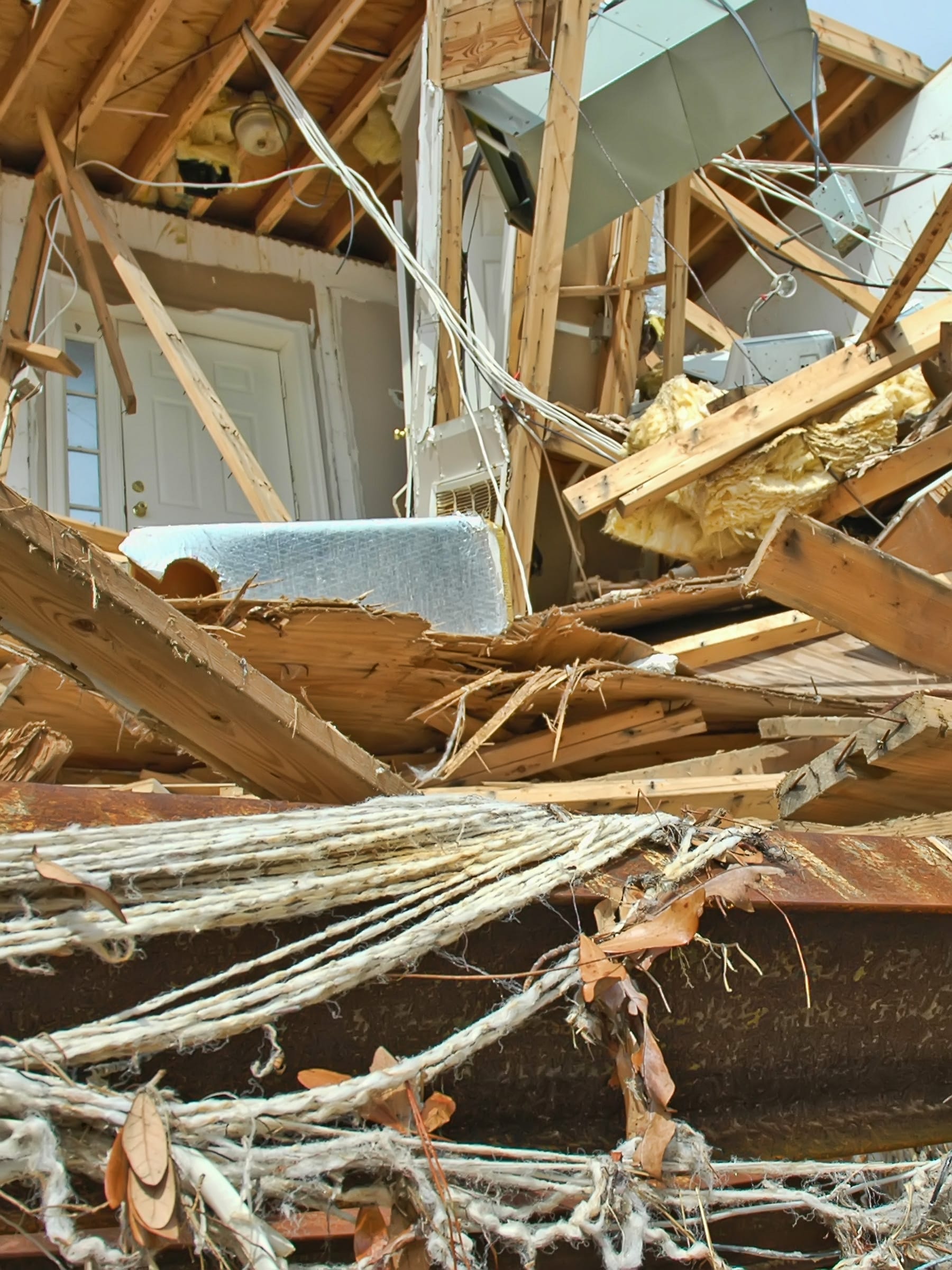
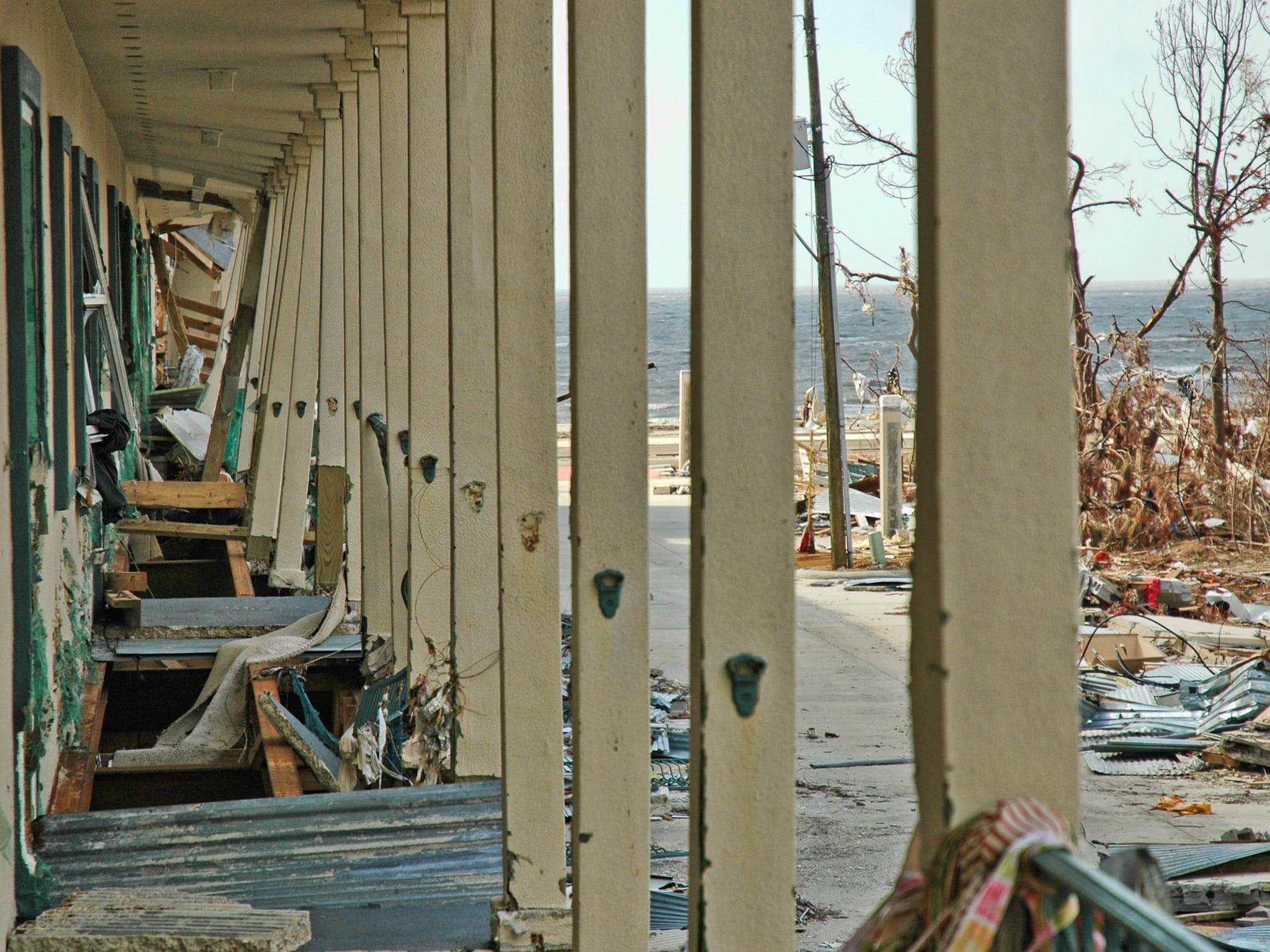
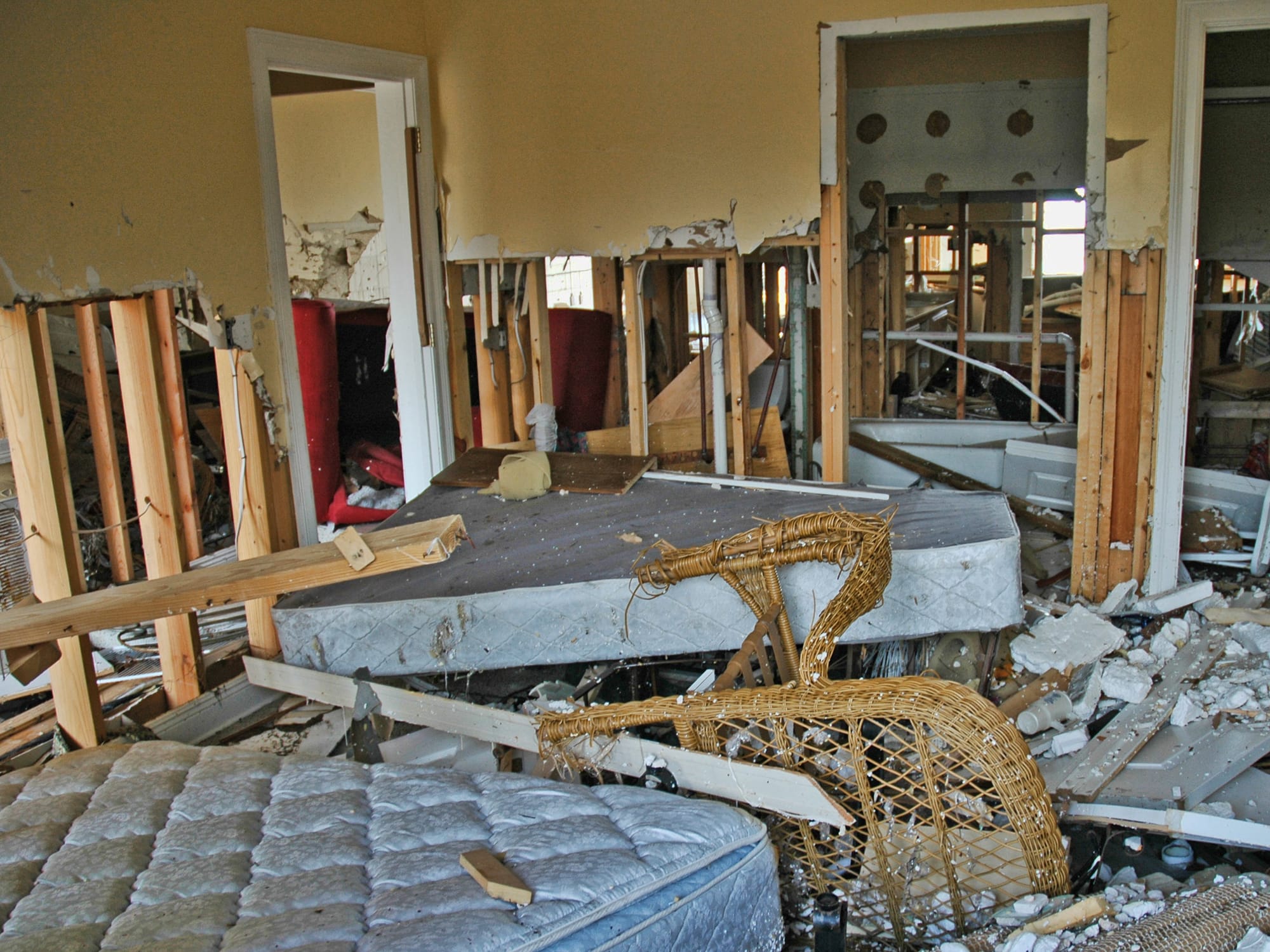
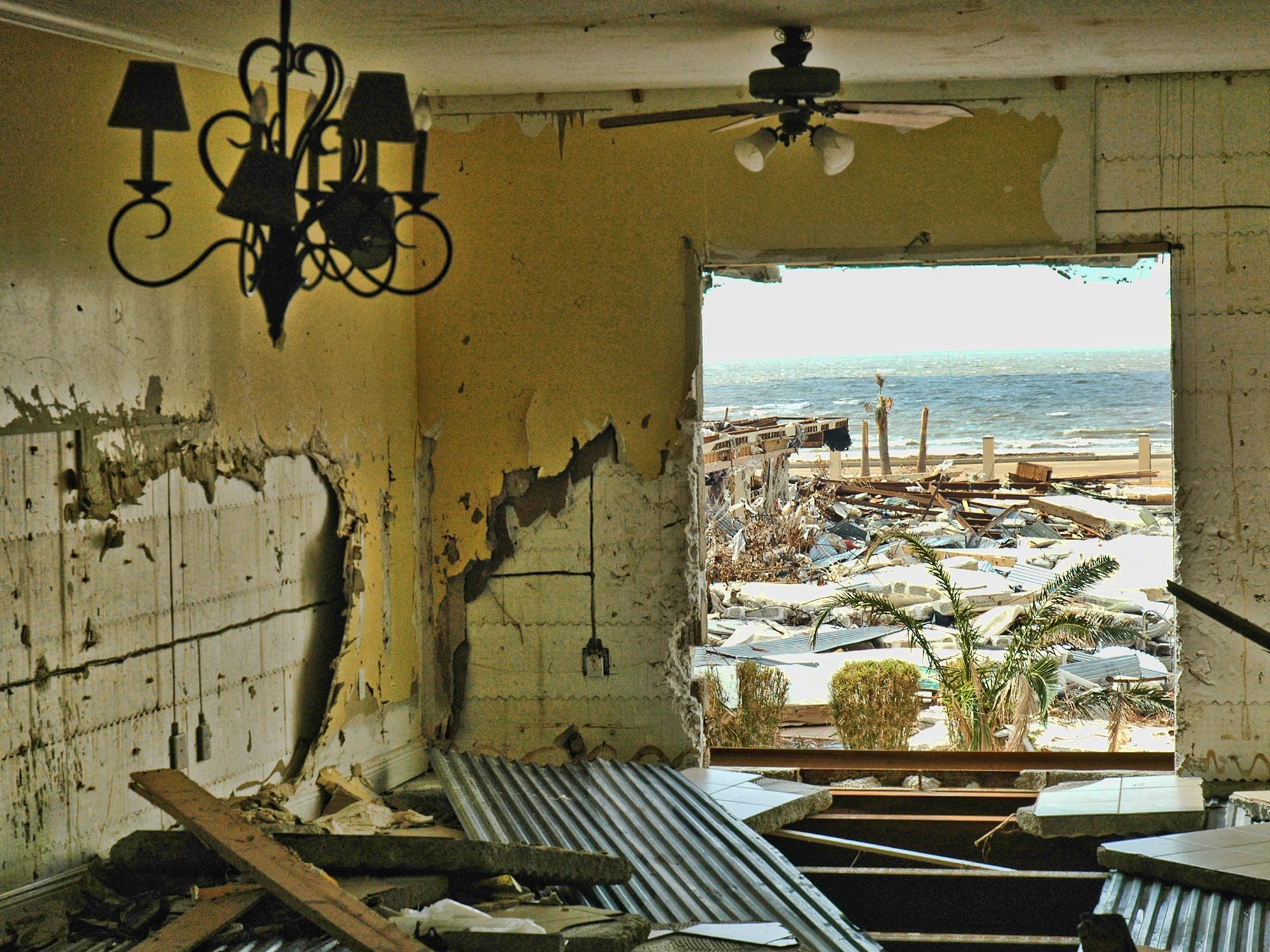
The Gulf Palm Villas condos, near the Pass Christian Walmart. These have been completely repaired and restored, but I sure wouldn't have guessed that when I was looking round them.
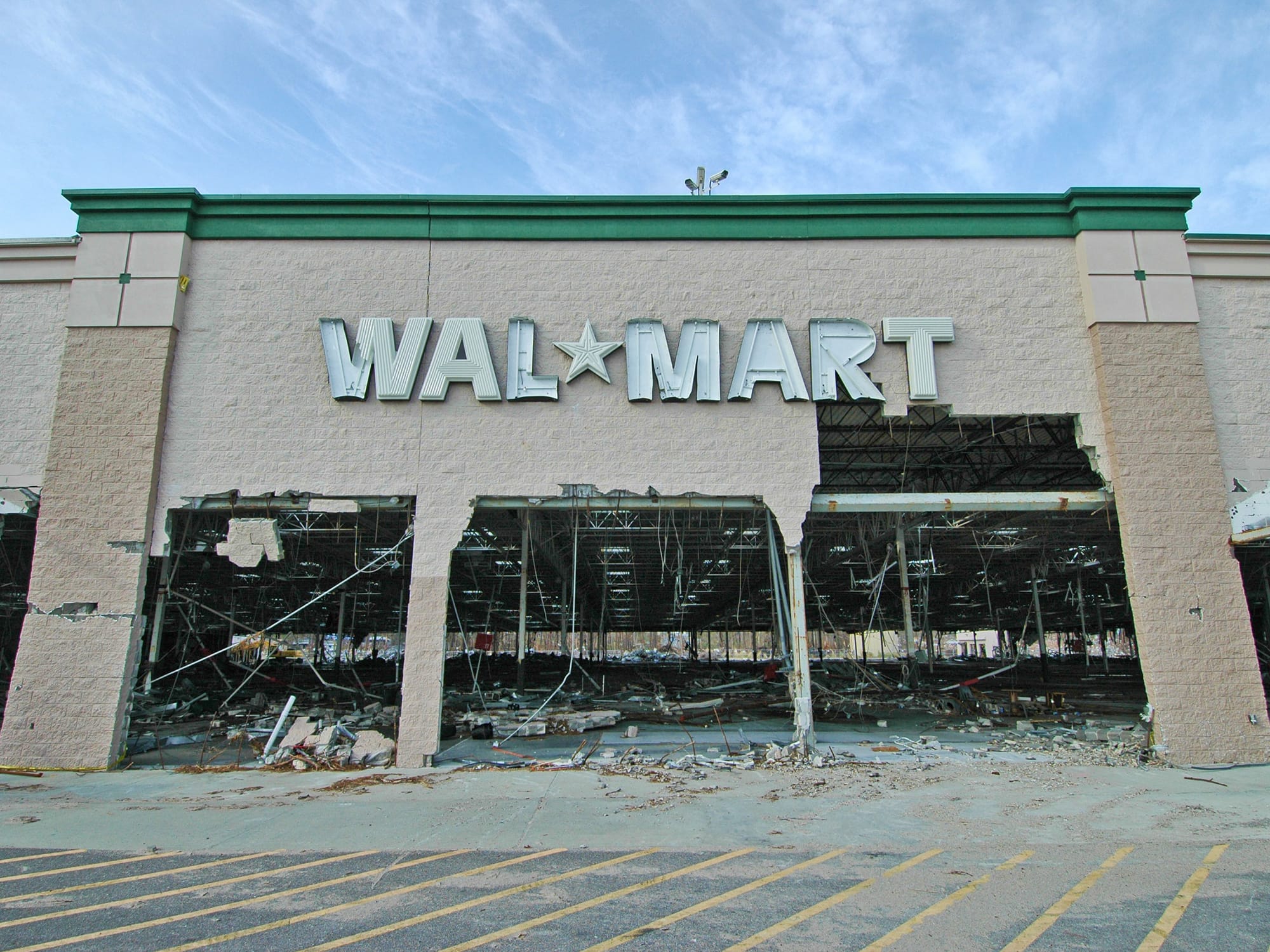
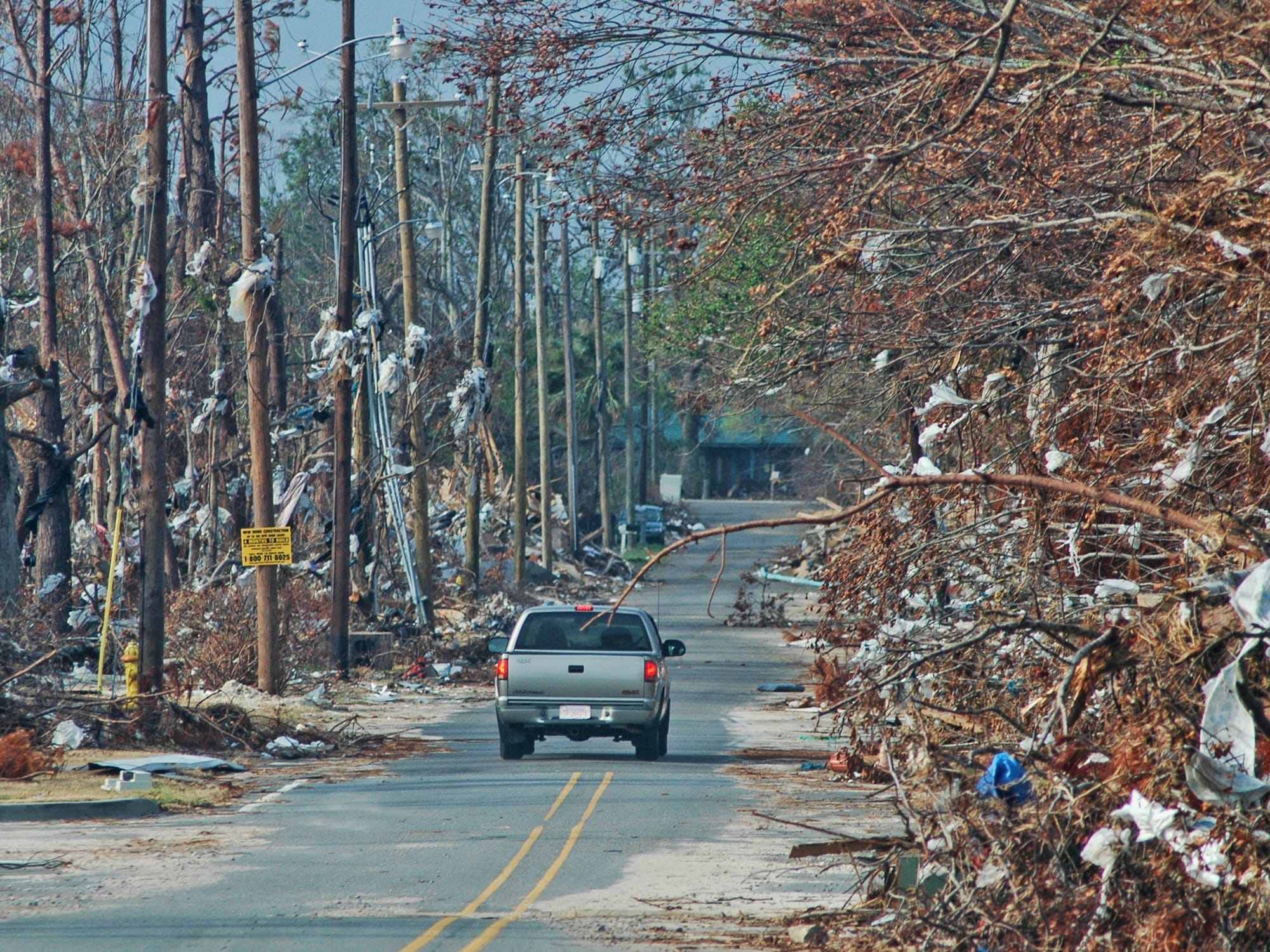
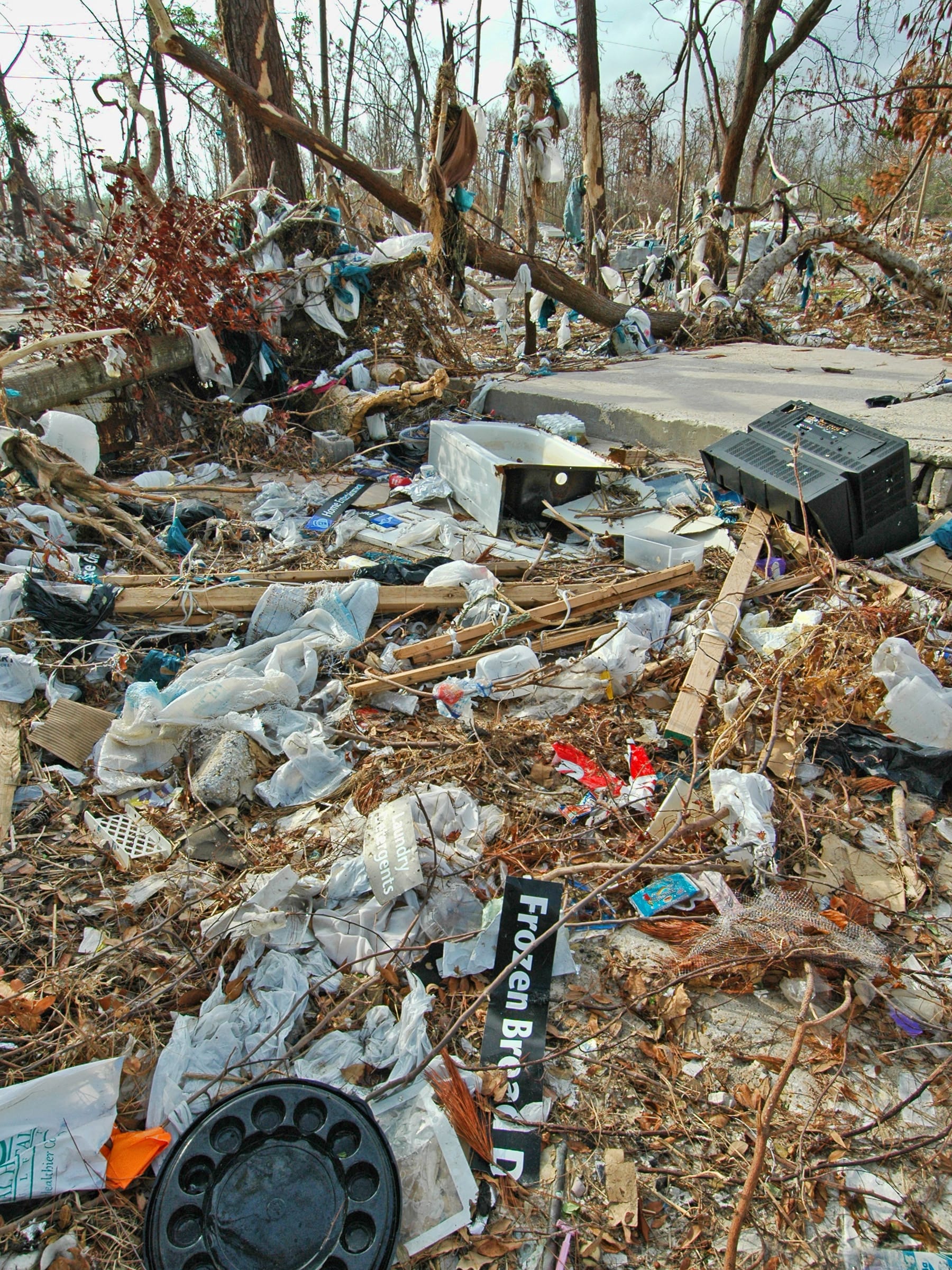
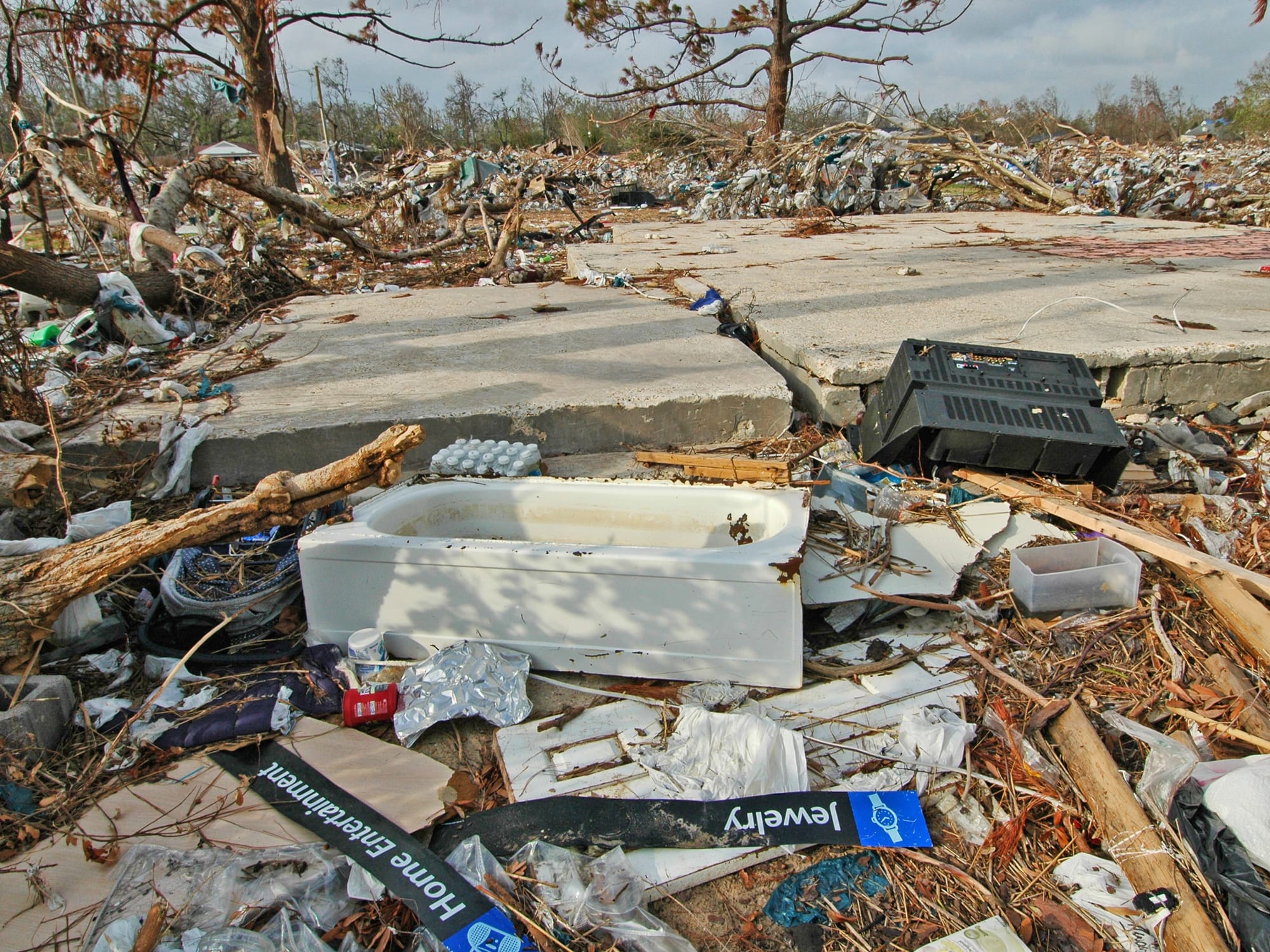
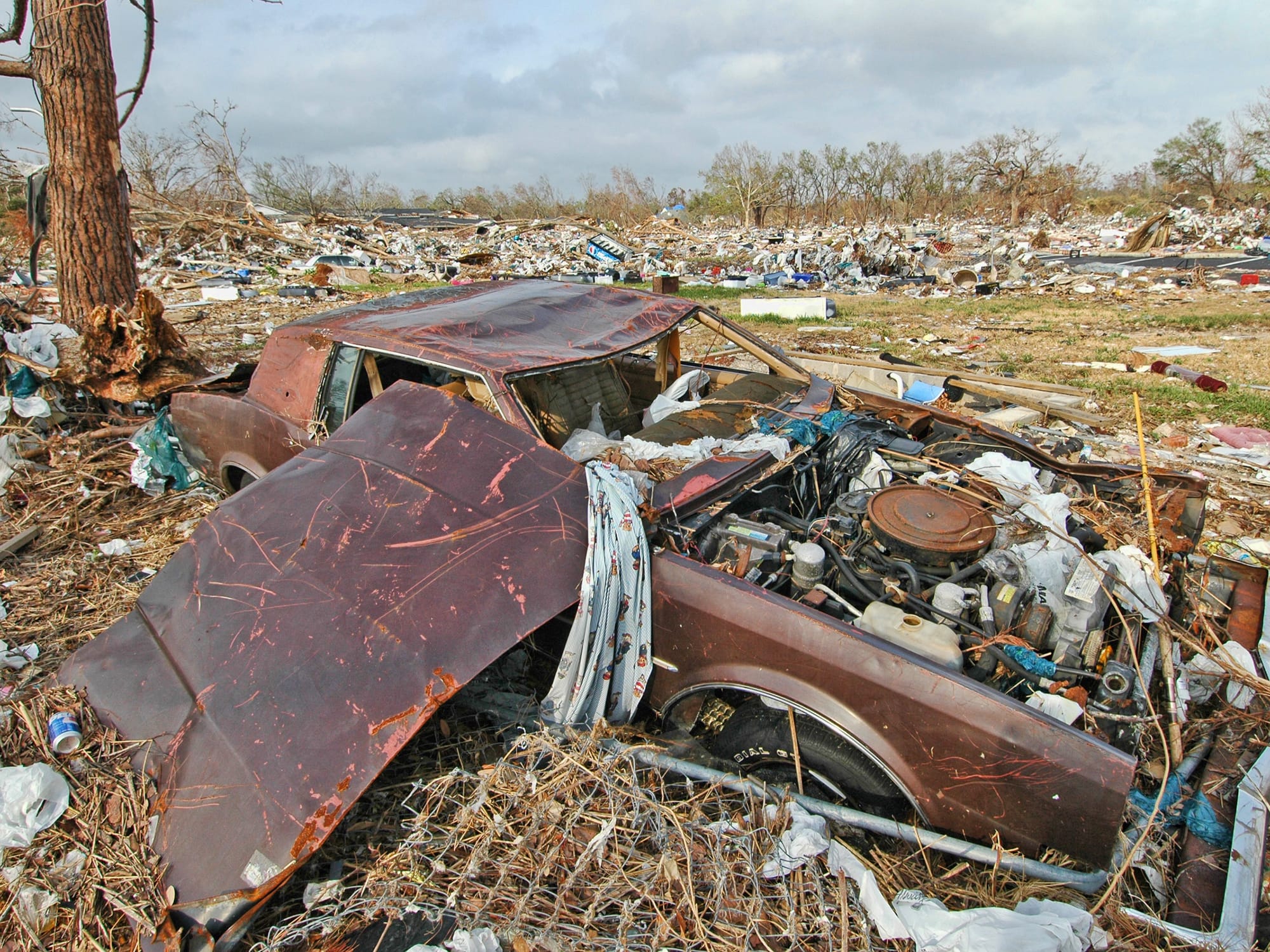
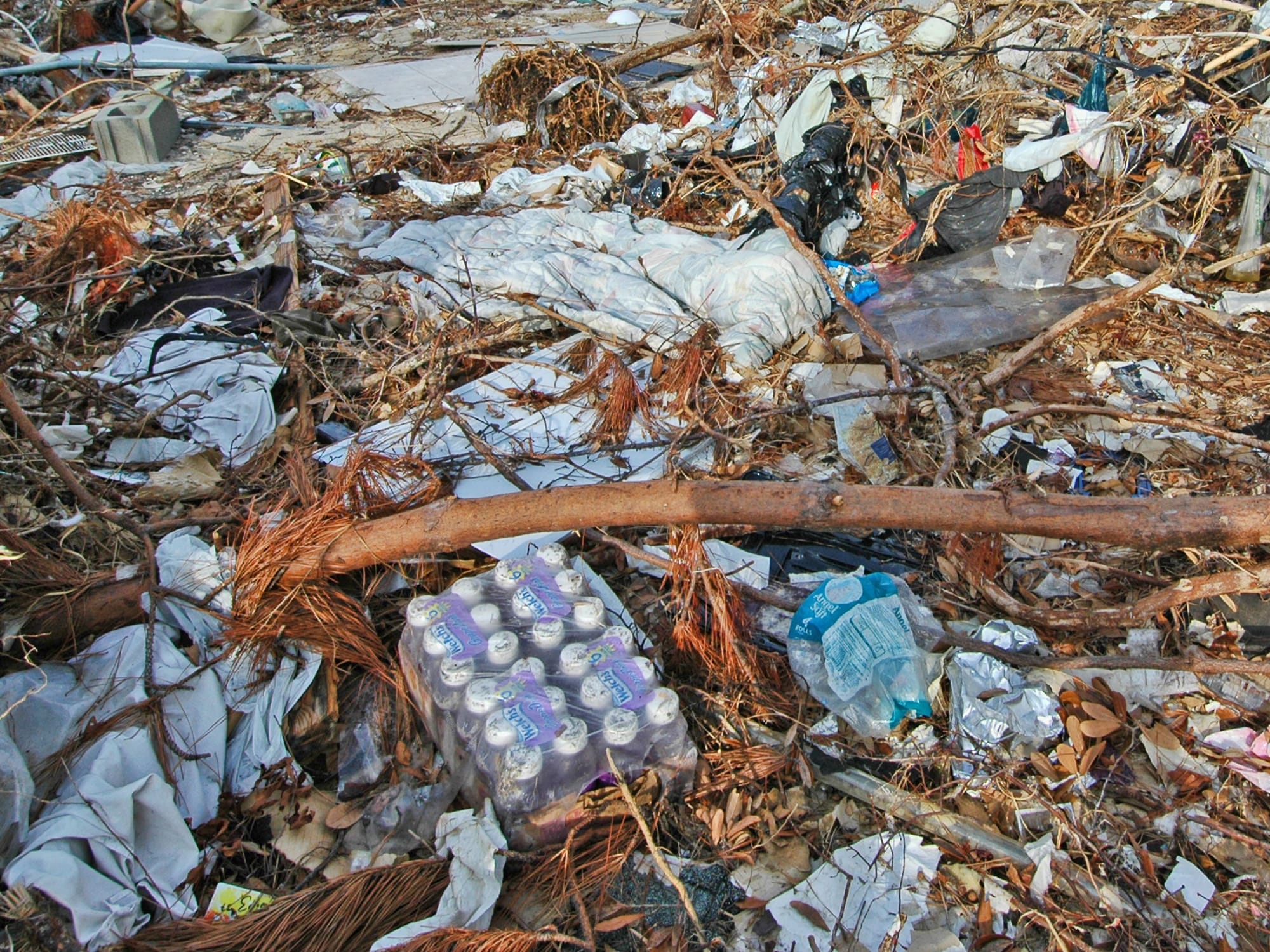
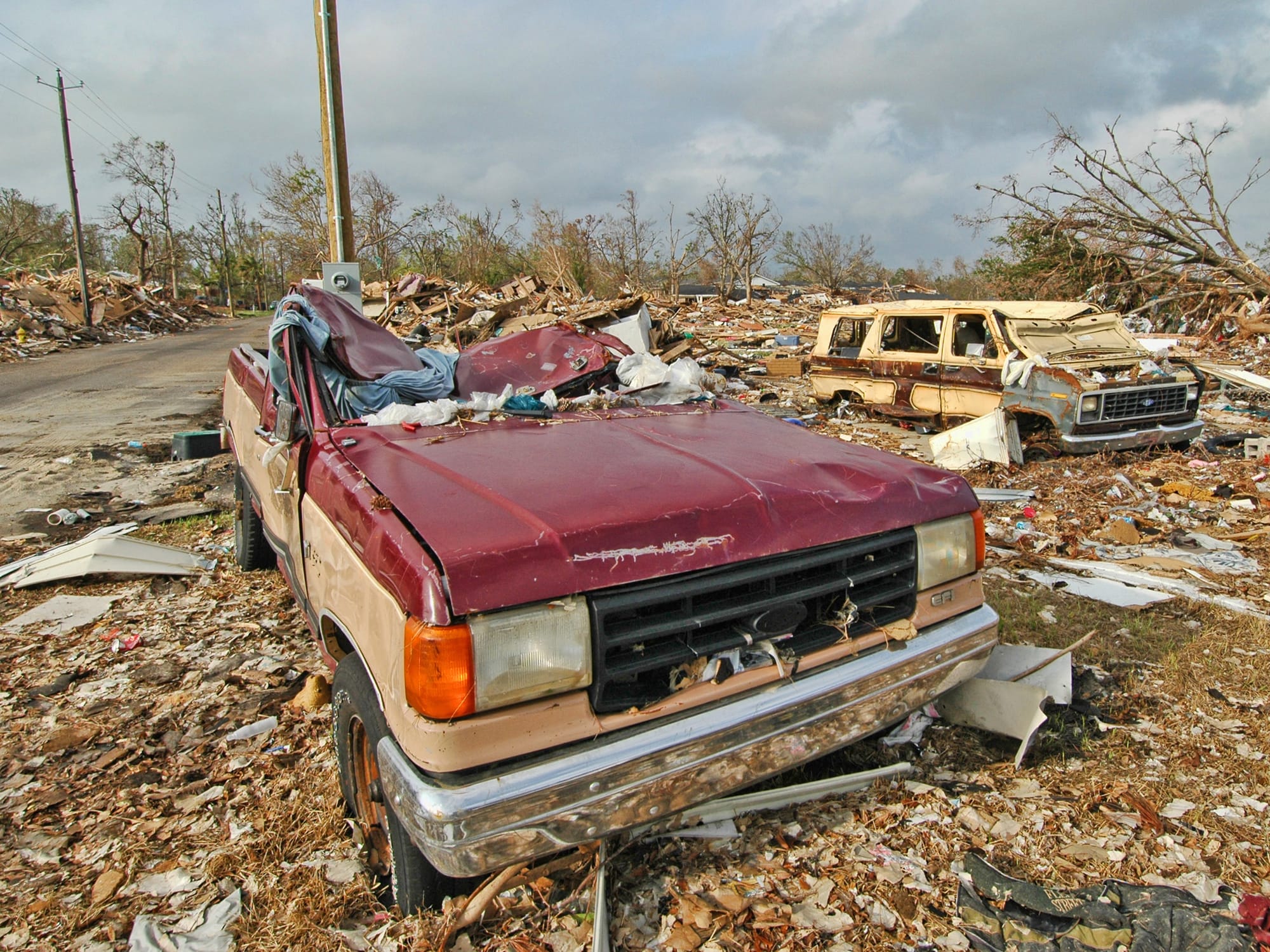
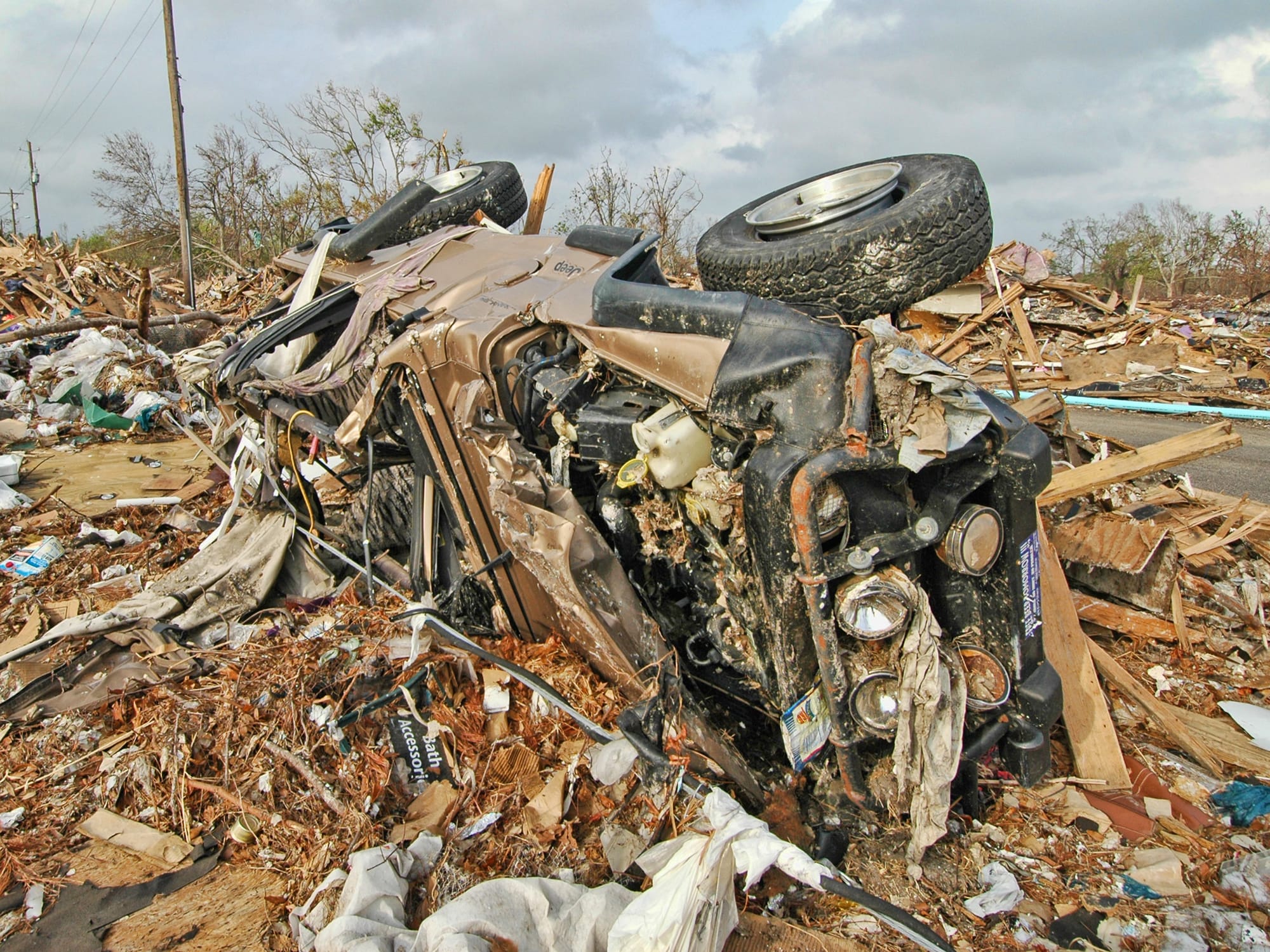
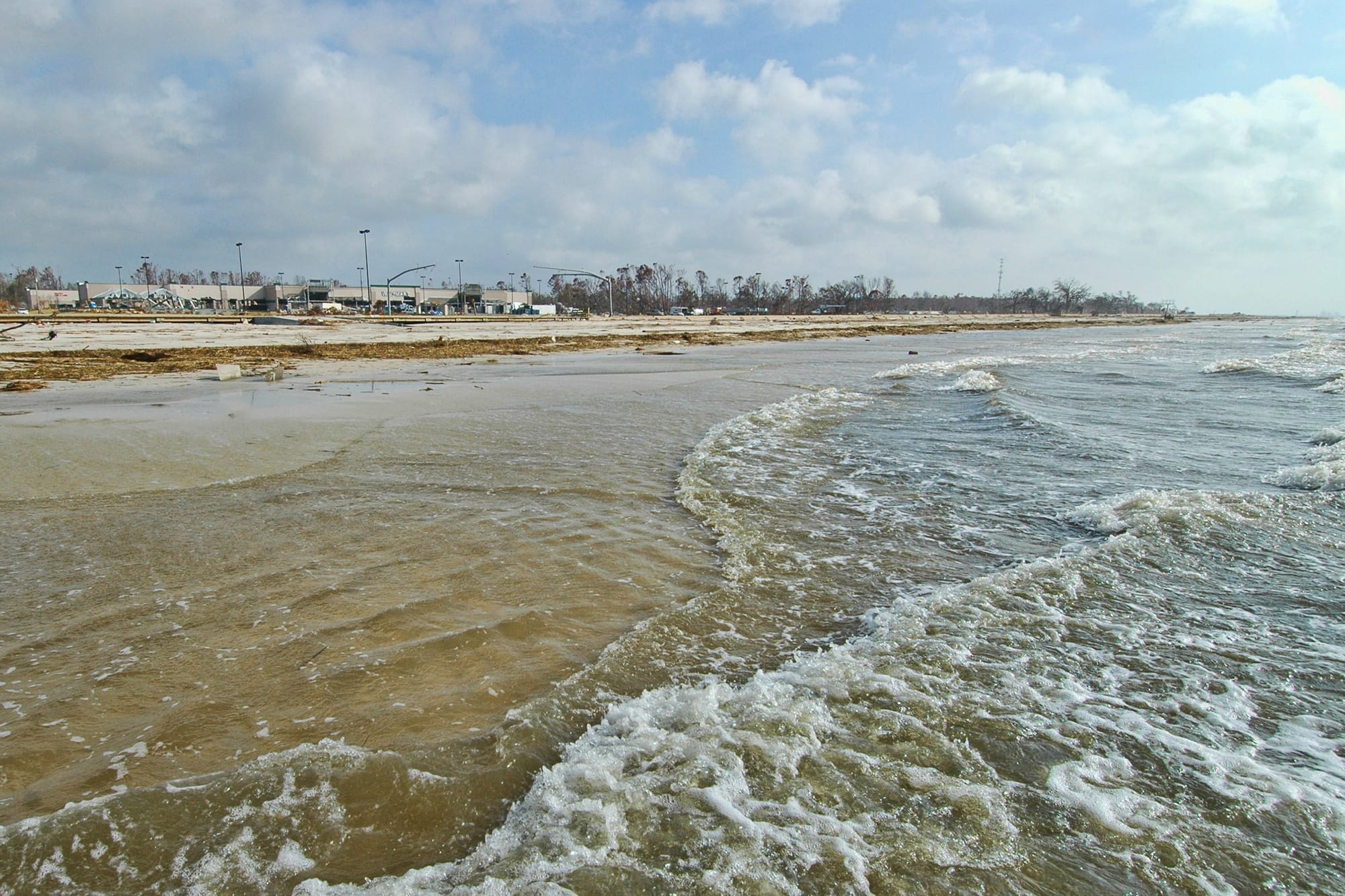
The Wal-Mart in Pass Christian was gutted by the storm surge, sitting as it does right on the waterfront across highway 90 from the Gulf of Mexico. The contents of the store were swept inland and scattered around several blocks to the north and east. The parking lot was used as a makeshift morgue during recovery of hurricane victims, and held 78 bodies at one point.
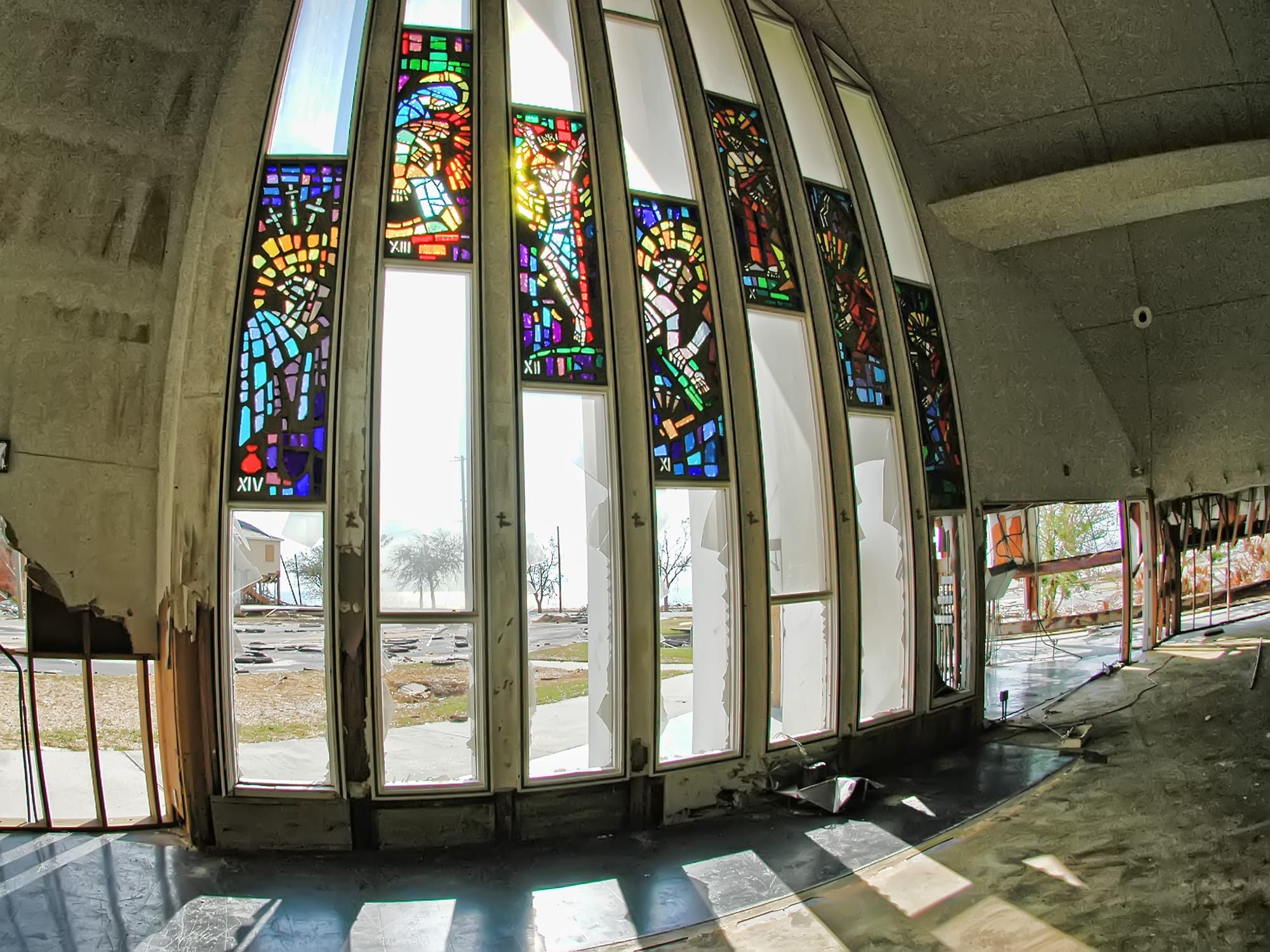
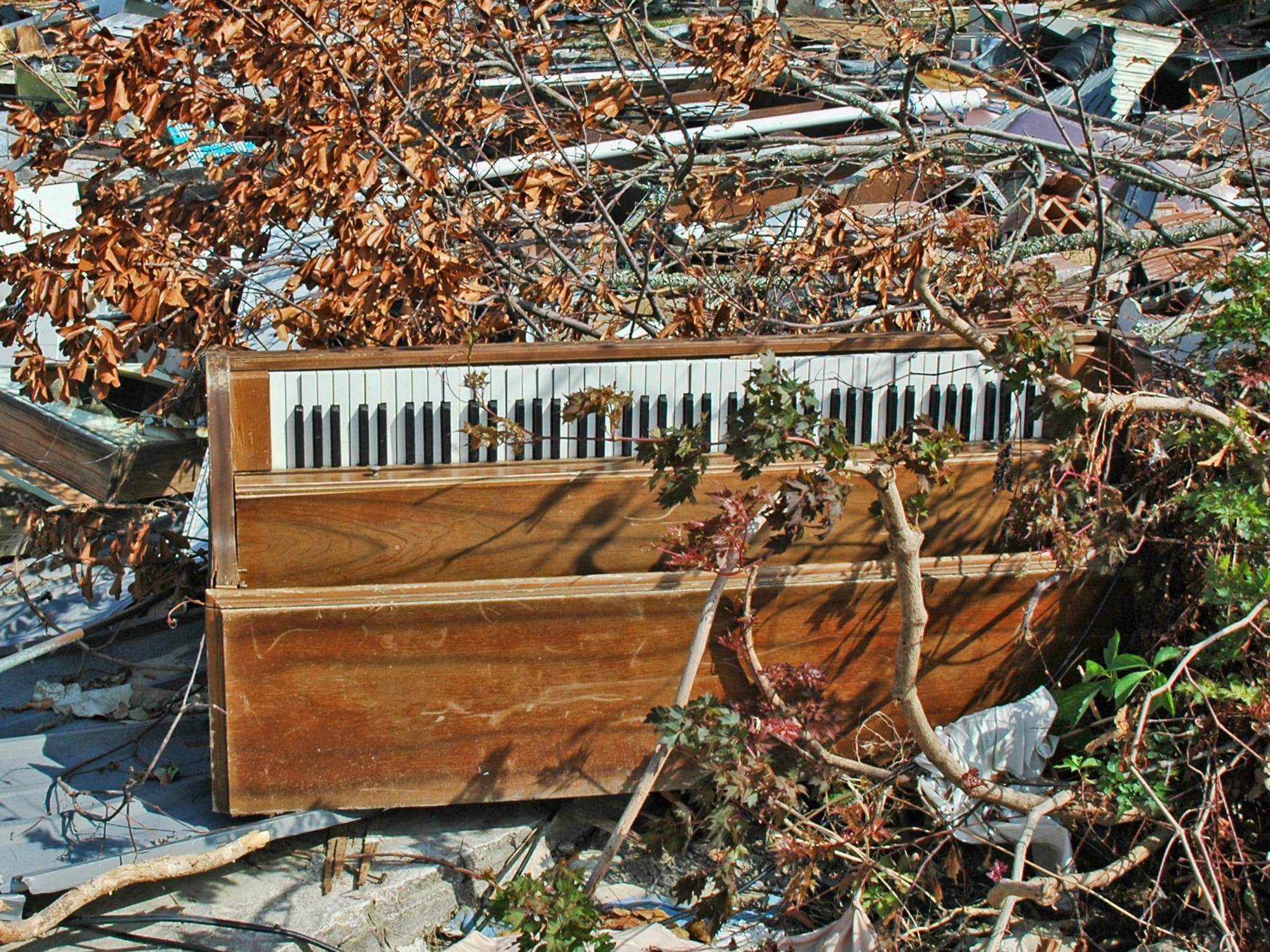
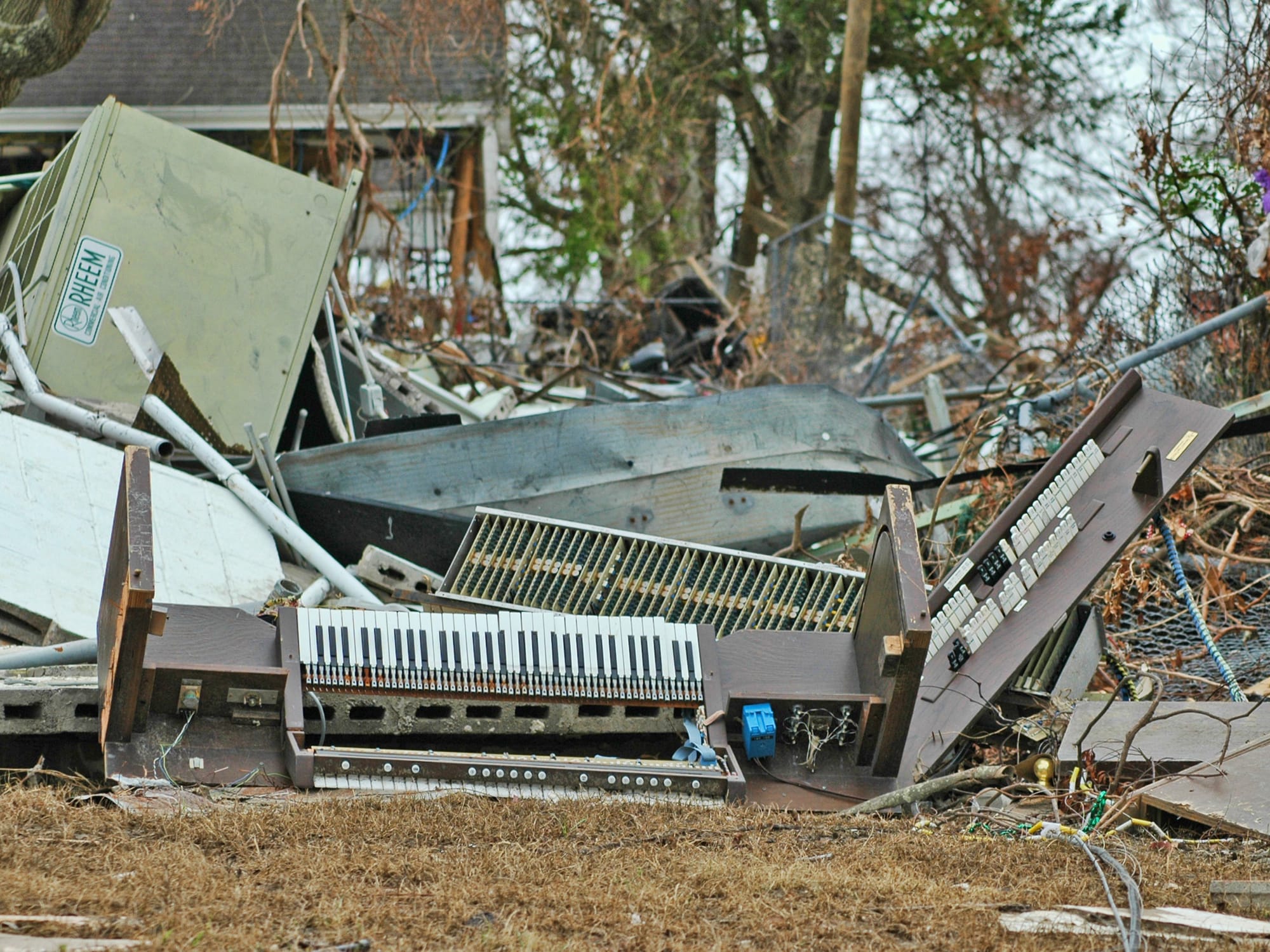
St. Paul's church in downtown Pass Christian was swept clean, but the stained glass was intact. This piano and organ were about a block inland from the church, so I assume they were from it.
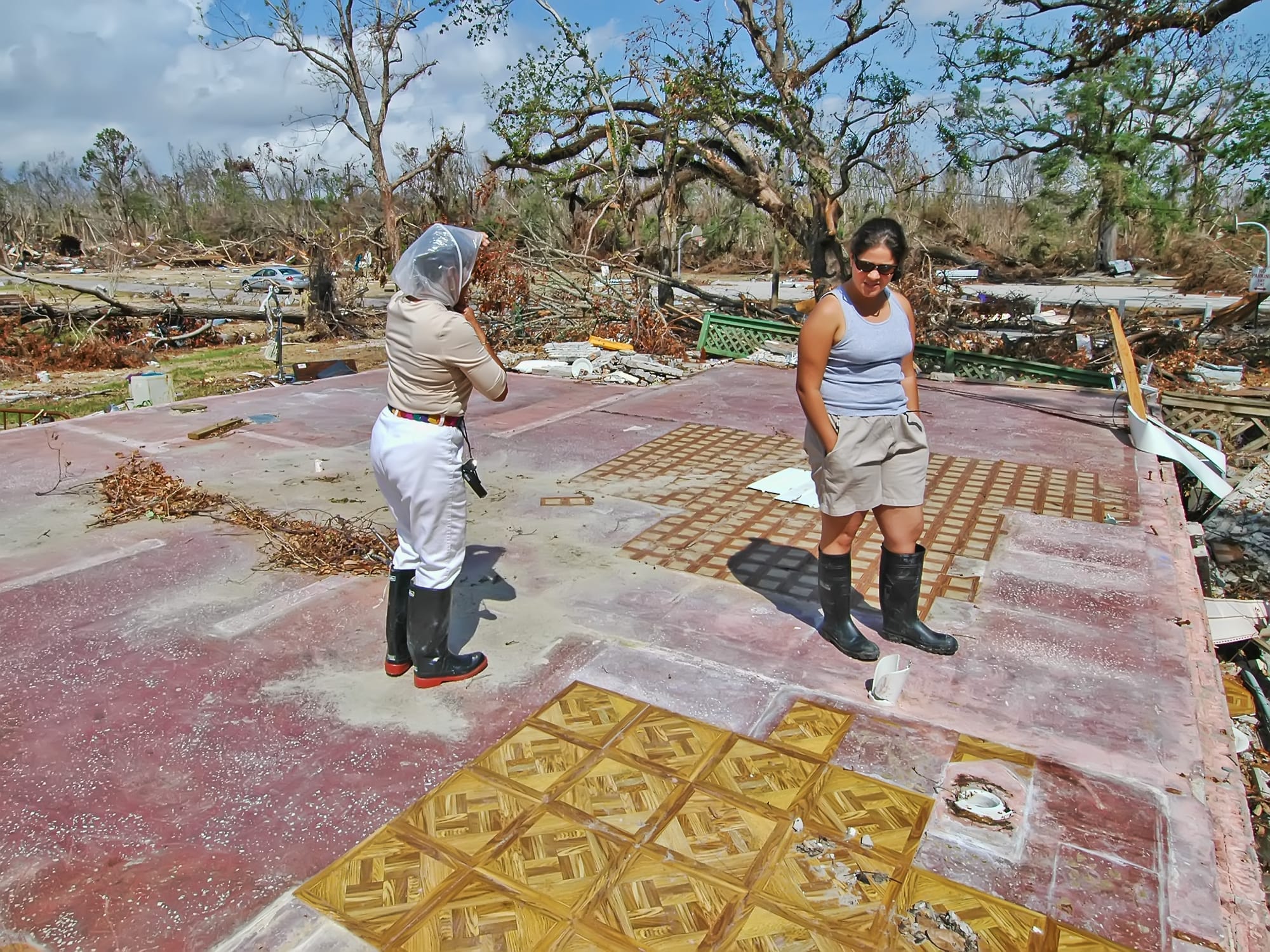
Lyndon's family had been evacuated to Montgomery, and when he came back two days after Katrina only the slab of the foundation remained, so he assumed that their dog (who they hadn't been able to take with them) had perished. But when Lyndon returned again on September 17 — 19 days after the hurricane — the dog had returned home, and was hungry and thirsty but still alive. They brought the dog to Montgomery, where it got a hot bath and a good meal, and as Lyndon told me, "made a four year old girl as happy as if it were Christmas."
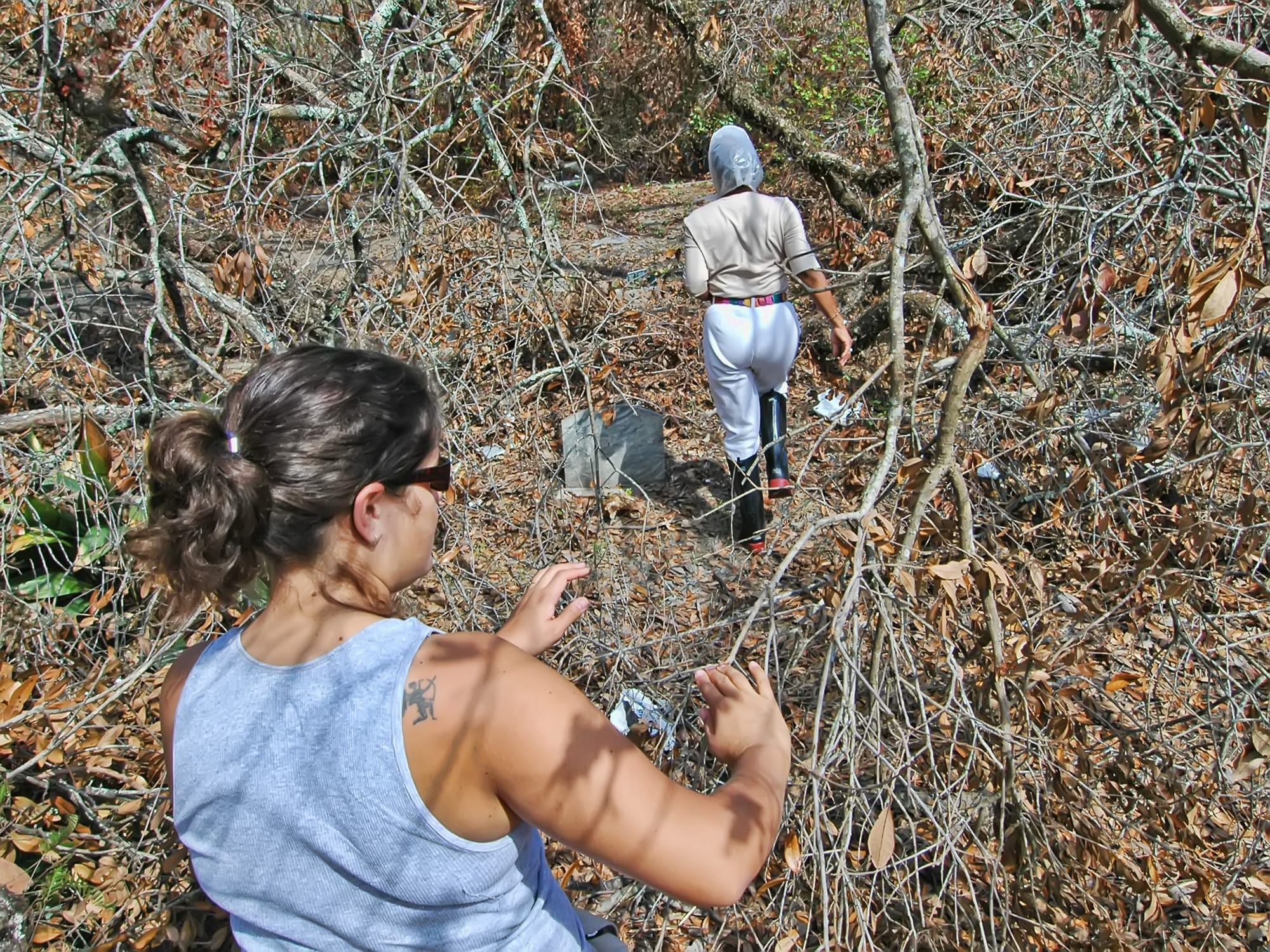
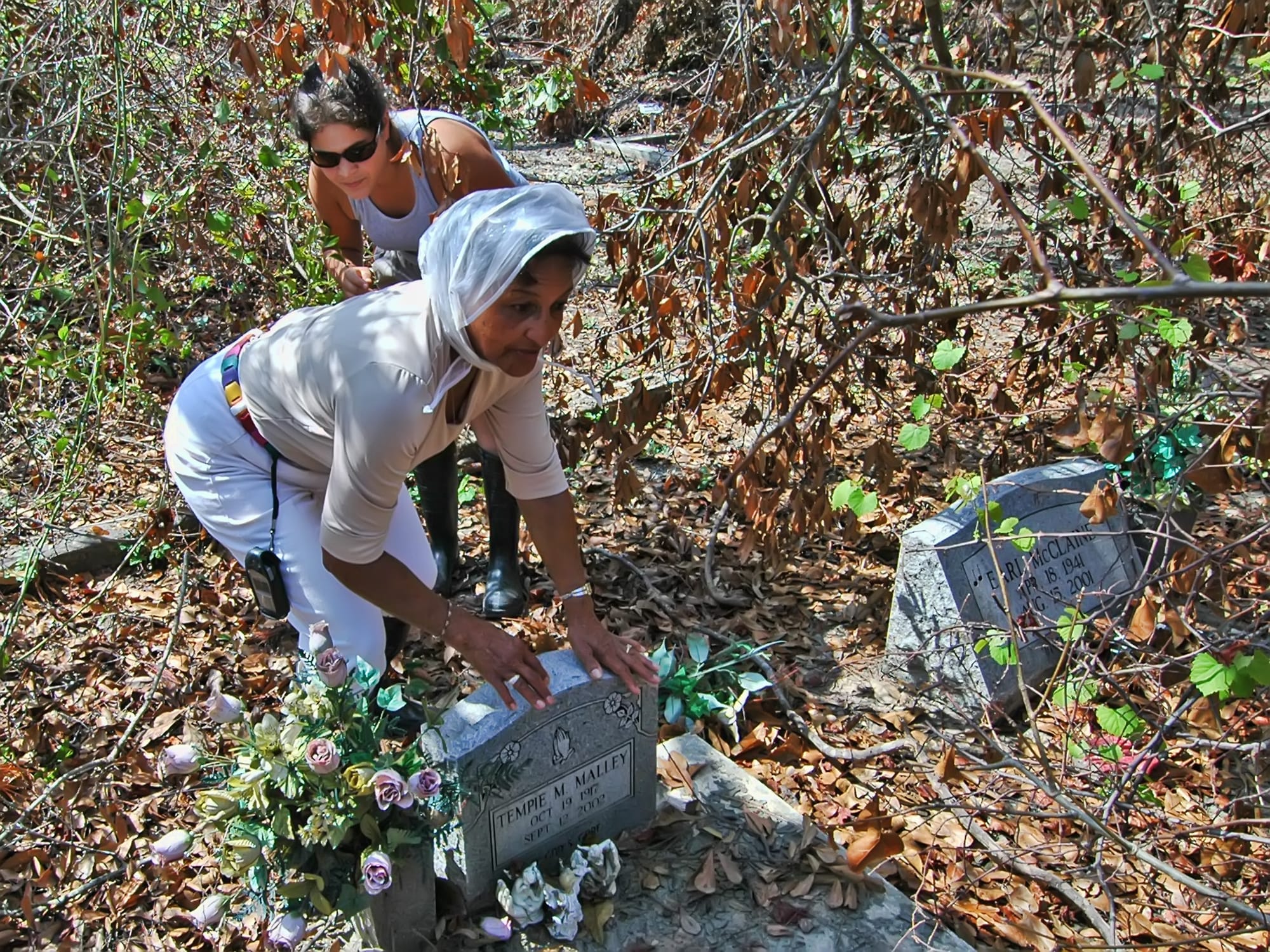
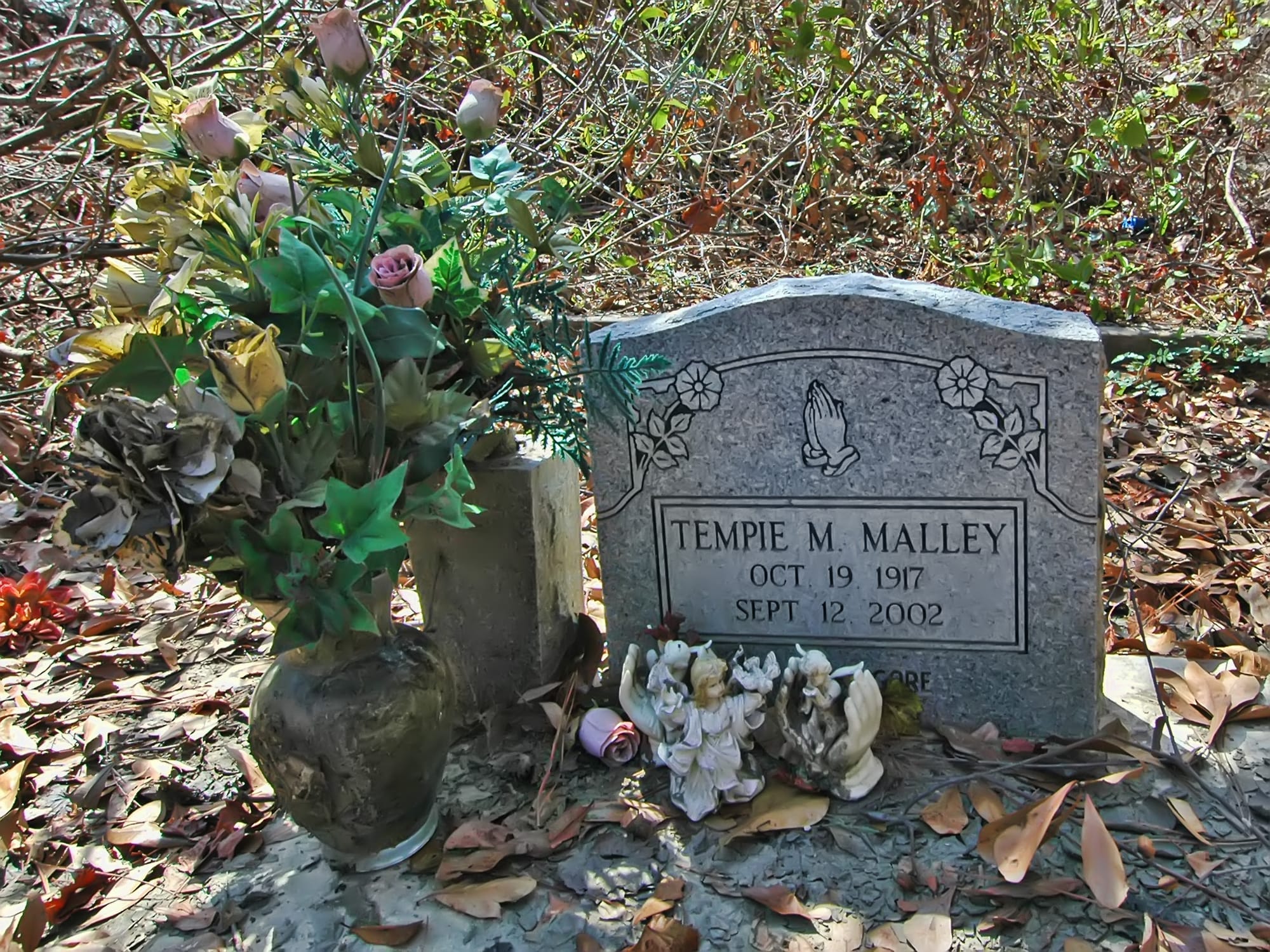
Melba visited her mother Tempie's grave in the cemetery on Church Street in Pass Christian, and was pleased to find it undamaged. There were many trees down in this cemetery, and some graves were damaged from the flooding, but all of the graves in the Arnold family seemed to be in good shape under the debris.
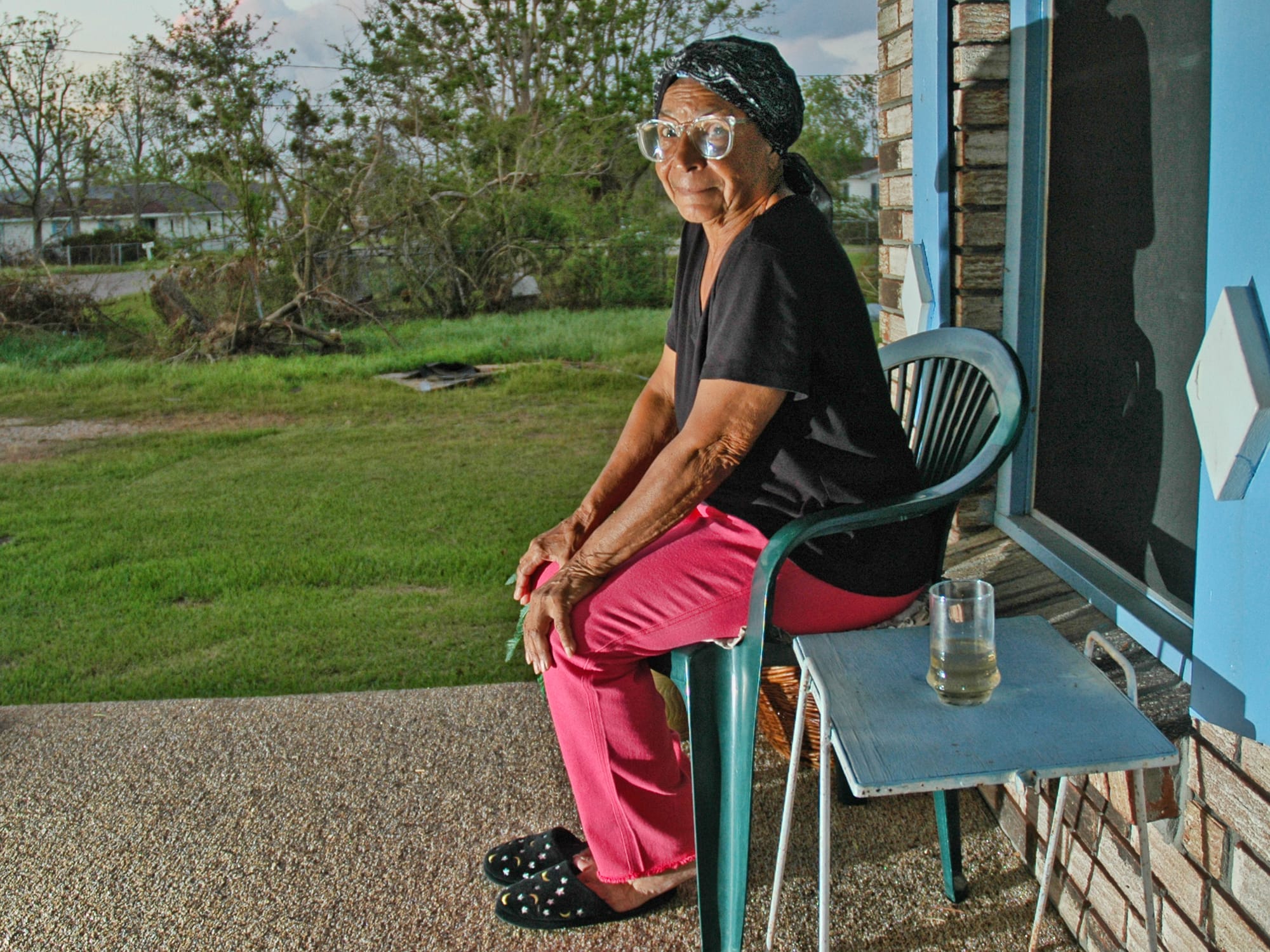
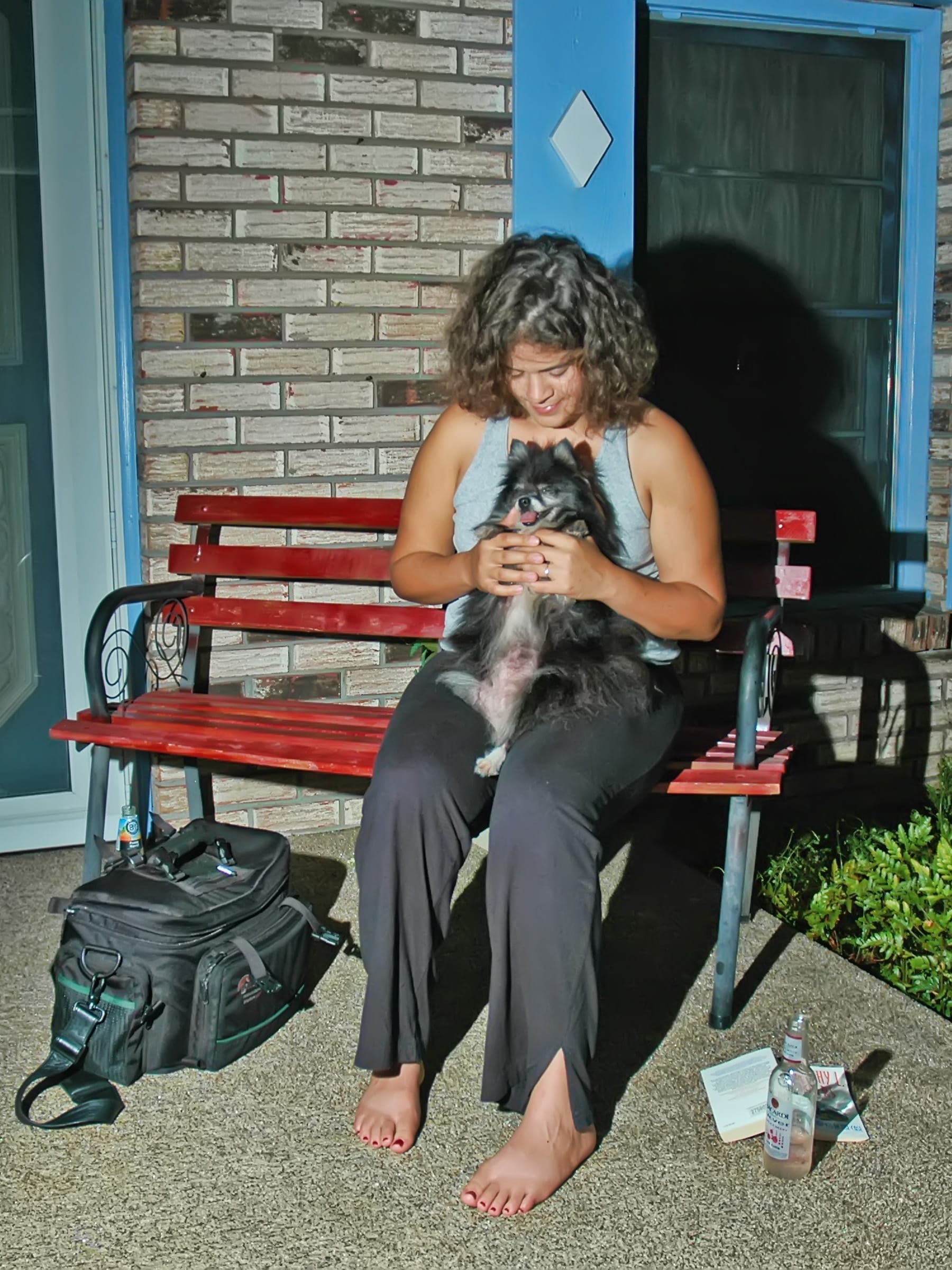
Hanging out with Gloria and her dog Oreo on Melba's front porch.
